social distancing
description: reduction of human social interaction in an effort to prevent the spread of infectious disease
223 results
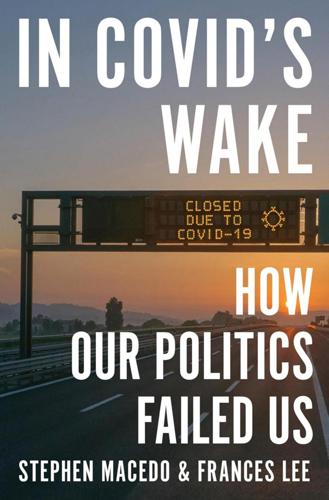
In Covid's Wake: How Our Politics Failed Us
by
Stephen Macedo
and
Frances Lee
Published 10 Mar 2025
They’re Scary,” https://www.vox.com /2020/4/10/21215494/coronavirus-plans-social-distancing-economy-recession-depression -unemployment. 108. Danielle Allen et al., Roadmap to Pandemic Resilience, 6. 109. Danielle Allen et al., Roadmap to Pandemic Resilience, 32, 20. 110. Danielle Allen et al., Roadmap to Pandemic Resilience, 3. Th ere is some strange language sprinkled through the report: “An emergency equity injection of trust from leading businesses into the public is not just desperately needed,” it could also be expected to pay “handsome returns.” 111. Sanjay Gupta, World War C: Lessons from the Covid-19 Pandemic and How to Prepare for the Next One (New York: Simon & Schuster, 2021).
…
Offending statements about masks included that “masks and/or social distancing did not decrease the risk for contracting COVID-19.” Sule et al., “Communication of COVID-19 Misinformation,” 1. “One of the most heartbreaking things about the pandemic has been what’s happening to social interaction, the non-verbal cues . . . masks are not a natural t hing for babies to have to interface with.” Sule et al., “Communication of COVID-19 Misinformation,” 8, 9. 70. “It’s time to recognize natural immunity as at least as good as vaccination and end the mandates.” Sule et al., “Communication of COVID-19 Misinformation,” 8. 71. Sule et al., “Communication of COVID-19 Misinformation,” 9. 72.
…
But t hose reports were on the shelf, ready to be rediscovered in the early months of 2020 by important figures in the Trump administration’s pandemic planning efforts and by major news outlets, such as the New York Times. Ready to play a key role in the Covid-19 response was Dr. Carter Mecher, then senior medical adviser for the Office of Public Health in the U.S. Department of Veterans Affairs.91 By mid-2020, proponents of NPIs had swept aside all but their most stubborn opponents. One striking t hing about the pre-Covid-19 pandemic plans is that they are often strikingly vague. Recall the advice that social distancing measures should be “limited to a period that is judged to be optimal.”

Aftershocks: Pandemic Politics and the End of the Old International Order
by
Colin Kahl
and
Thomas Wright
Published 23 Aug 2021
So it was in 2020.38 Many of the people most exposed to the pandemic’s impact suddenly found themselves on the front lines of environmental disaster. It created a vicious cycle: the plight of COVID-19 and the problems of flooding reinforced each other. The latter made it even more challenging to observe public health measures such as social distancing and frequent handwashing, while placing additional socioeconomic pressure on people already pushed to the brink by mounting joblessness and diminished remittances. The pandemic, in turn, made it more difficult for Bangladeshis to cope with the floods. Prior to COVID-19, many rural Bangladeshis adapted to seasonal flooding by working in cities until the water receded.
…
From that point forward, however, it began to rise again, crossing the threshold of 100,000 daily cases on November 4 and reaching an astonishing 300,669 on January 8, 2021, the highest yet, with a seven-day average for daily deaths over 3,300.34 In the dark winter of 2020–21, each and every day more Americans were dying from COVID-19 than had been killed on 9/11. Yet, unlike the terrorist attacks two decades earlier, the pain and suffering caused by the pandemic did not unify the country. Instead, it became a point of partisan strife. The Trump administration continued to delegate most COVID-related decisions to the states, contributing to an incoherent patchwork of interventions. The aggregate availability of testing increased markedly, but it remained uneven across the country.35 States and localities also varied wildly in terms of mask mandates, social distancing requirements, stay-at-home orders, and business and school closures.
…
Megan Bourdon and Qayyah Moynihan, “One of the Largest Cities in France Is Using Drones to Enforce the Country’s Lockdown After the Mayor Worried Residents Weren’t Taking Containment Measures Seriously,” Business Insider, March 20, 2020, https://www.businessinsider.com/coronavirus-drones-france-covid-19-epidemic-pandemic-outbreak-virus-containment-2020-3; Helene Fouquet and Gaspard Sebag, “French Covid-19 Drones Grounded After Privacy Complaint,” Bloomberg, May 18, 2020, https://www.bloomberg.com/news/articles/2020-05-18/paris-police-drones-banned-from-spying-on-virus-violators. 23. “COVID-19: The Surveillance Pandemic,” International Center for Not-for-Profit Law, accessed November 24, 2020, https://www.icnl.org/post/analysis/covid-19-the-surveillance-pandemic. 24. Samuel Woodhams, “COVID-19 Digital Rights Tracker,” last modified March 25, 2021, https://www.top10vpn.com/research/investigations/covid-19-digital-rights-tracker/. 25.
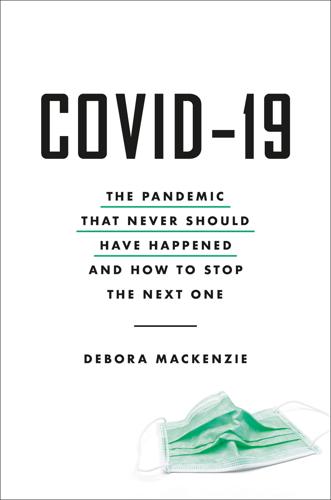
Covid-19: The Pandemic That Never Should Have Happened and How to Stop the Next One
by
Debora MacKenzie
Published 13 Jul 2020
Even where there were plans, and even if they were followed, they were mostly devised for flu, which as we have seen is different from Covid-19 in many ways. Containment doesn’t work for fast-spreading flu, but as China showed, it works for Covid-19. The WHO delayed calling Covid-19 a pandemic partly because they feared countries would abandon containment and testing and rush straight to flu-inspired social distancing—and for some countries, it may have been right about that. Many countries at least tried to plan for a flu pandemic. But when a milder-than-feared pandemic hit in 2009, some countries actually rolled back even that preparation. A Global Preparedness Monitoring Board (GPMB) co-chaired by Gro Harlem Brundtland, the WHO director-general during SARS, reported in 2019 that, “For too long, we have allowed a cycle of panic and neglect when it comes to pandemics: we ramp up efforts when there is a serious threat, then quickly forget about them when the threat subsides.
…
In fact, those experts still are. Yes, the Covid-19 pandemic is a coronavirus, not a flu. They are quite different. But we’re talking here about pandemics in general. It is to be hoped that, having seen the Covid-19 pandemic, we handle the next flu pandemic better. It would be only fair, because the last flu pandemic messed up the way we are handling Covid-19. Flu, influenza A to be formal, is the one pandemic we know is coming. We know other diseases can go pandemic—and if anyone had any doubts, Covid-19 ended them. You can debate, perhaps, the pandemic potential of some of the viruses on the WHO’s priority list.
…
Perhaps the WHO is still smarting from being attacked for declaring a flu pandemic in 2009—even though it was a textbook flu pandemic—and wants to be very careful with the word. If so, the world’s reaction to the swine flu pandemic did us all a disservice when Covid-19 arrived. The WHO was also worried that governments would somehow conflate pandemic and flu. That’s one reason flu matters so much to the story of Covid-19. When Covid-19 hit, most governments with pandemic plans had based them around flu: many are actually entitled “influenza pandemic plan.” Covid-19 is not flu, and that caused problems. Containment, where you isolate cases and trace and quarantine their contacts, was the WHO’s main recommendation for Covid-19 early in the pandemic.
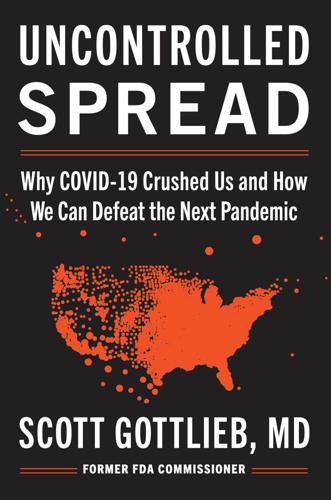
Uncontrolled Spread: Why COVID-19 Crushed Us and How We Can Defeat the Next Pandemic
by
Scott Gottlieb
Published 20 Sep 2021
Smith et al., “Observational Study on 255 Mechanically Ventilated Covid Patients at the Beginning of the USA Pandemic,” medRxiv, May 31, 2021; and Harriet Alexander, “Was Trump Right About Hydroxychloroquine All Along? New Study Shows Drug Touted by Former President can Increase COVID Survival Rates by 200%,” Daily Mail, June 10, 2021. 46.US Food and Drug Administration, “FDA COVID-19 Pandemic Recovery and Preparedness Plan (PREPP) Initiative,” January 27, 2021, https://www.fda.gov/about-fda/reports/fda-covid-19-pandemic-recovery-and-preparedness-plan-prepp-initiative. 47.Levin, “Biden’s Pandemic-Policy Challenge.” 48.Richard Harris, “FDA’s Hahn Apologizes for Overselling Plasma’s Benefits as a COVID-19 Treatment,” National Public Radio, August 25, 2020. 49.Steve Usdin, “FDA Documents Shed Light on Chaotic COVID Decision-making during Trump Administration,” Biocentury, May 14, 2021. 50.Marcus Banks, “NIH Halts Outpatient COVID-19 Convalescent Plasma Trial,” Scientist, March 4, 2021. 51.RECOVERY Collaborative Group, “Convalescent Plasma in Patients Admitted to Hospital with COVID-19 (RECOVERY): a Randomized Controlled, Open-Label Platform Trial,” Lancet (2021). 52.Katie Thomas and Noah Weiland, “The Covid-19 Plasma Boom Is Over.
…
However, broader acceptance didn’t come about until a year later, in 2007, with the publication of the CDC’s Community Mitigation Guidance, in which NPIs held a prominent role.54 The approach outlined, however, differed from the strategies that would ultimately be imported into the COVID response. In workplaces, for example, Hatchett and Mecher didn’t envision that businesses would be closed entirely. Instead, businesses would follow plans to limit spread through social distancing. The plan Hatchett and Mecher crafted had discussed recommendations to close certain hospitality venues like theaters or bars, but broad stay-at-home orders, or “lockdowns,” were never considered as an option. The 2006 plan was thorough, but also limited in some important ways. It focused entirely on the risk from a pandemic flu, and didn’t contemplate a coronavirus, or even contain the word anywhere in its 233 pages.
…
Hahn, “Bringing a Cancer Doctor’s Perspective to FDA’s Response to the COVID-19 Pandemic,” May 29, 2020, https://www.fda.gov/news-events/fda-voices/bringing-cancer-doctors-perspective-fdas-response-covid-19-pandemic; and Rowland, Cenziper, and Rein, “White House Sidestepped FDA to Distribute Hydroxychloroquine to Pharmacies, Documents Show. Trump Touted the Pills to Treat Covid-19.” 41.US Food and Drug Administration, “Coronavirus (COVID-19) Update: FDA Revokes Emergency Use Authorization for Chloroquine and Hydroxychloroquine,” June 15, 2020, https://www.fda.gov/news-events/press-announcements/coronavirus-covid-19-update-fda-revokes-emergency-use-authorization-chloroquine-and. 42.US Food and Drug Administration, Center for Drug Evaluation and Research Office of Surveillance and Epidemiology, “Pharmacovigilance Memorandum.” 43.Laurie McGinley, “Controversy Erupts over Plan to Let Pentagon Authorize Unapproved Drugs for Battlefield Use,” Washington Post, November 9, 2017. 44.Laurie McGinley and Mark Berman, “Justice Department Says FDA ‘Lacks Jurisdiction’ over Death-Penalty Drugs,” Washington Post, May 14, 2019. 45.Leon G.
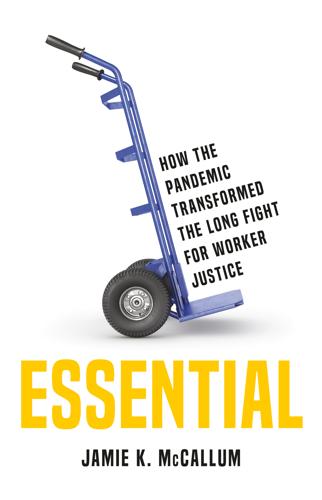
Essential: How the Pandemic Transformed the Long Fight for Worker Justice
by
Jamie K. McCallum
Published 15 Nov 2022
Peter Ganong, Pascal Noel, and Joseph S. Vavra, “US Unemployment Insurance Replacement Rates During the Pandemic,” working paper, Becker Friedman Institute, University of Chicago, August 24, 2020, https://bfi.uchicago.edu/working-paper/2020-62/. 35. Christopher Adolph et al., “The Pandemic Policy U-Turn: Partisanship, Public Health, and Race in Decisions to Ease COVID-19 Social Distancing Policies in the United States,” Perspectives on Politics, October 1, 2021, 1–23, https://doi.org/10.1017/S1537592721002036. Chapter 3: The Pandemic Proletariat 1. Julia Carrie Wong, “Amazon Execs Labeled Fired Worker ‘Not Smart or Articulate’ in Leaked PR Notes,” Guardian, April 2, 2020, Technology, www.theguardian.com/technology/2020/apr/02/amazon-chris-smalls-smart-articulate-leaked-memo. 2.
…
Conventional wisdom suggested that recovering from the pandemic recession meant controlling the spread of the virus. Yet, northeastern states, which did an overall better job of adhering to social distancing guidelines, still suffered worse economically. Southern and Sunbelt states that did a worse job of controlling the virus saw lower economic fallout. Blue states like California and Massachusetts were hit harder than red ones like Utah and Missouri. This trend persisted even as the COVID-19 infection profile and death rates shifted from blue states early in the pandemic to hot spots in red states during and after the summer of 2020.
…
Nayga, “The Association Between Food Insecurity and Mental Health During the COVID-19 Pandemic,” BMC Public Health 21, no. 1 (March 29, 2021): 607, https://doi.org/10.1186/s12889-021-10631-0; Leah R. Abrams, Jessica M. Finlay, and Lindsay C. Kobayashi, “Job Transitions and Mental Health Outcomes Among U.S. Adults Aged 55 and Older During the COVID-19 Pandemic,” Journals of Gerontology: Series B, no. gbab060 (April 10, 2021), https://doi.org/10.1093/geronb/gbab060. 47. Eric B. Elbogen et al., “Suicidal Ideation and Thoughts of Self-Harm During the COVID-19 Pandemic: The Role of COVID-19-Related Stress, Social Isolation, and Financial Strain,” Depression and Anxiety 38, no. 7 (2021): 739–748, https://doi.org/10.1002/da.23162. 48.
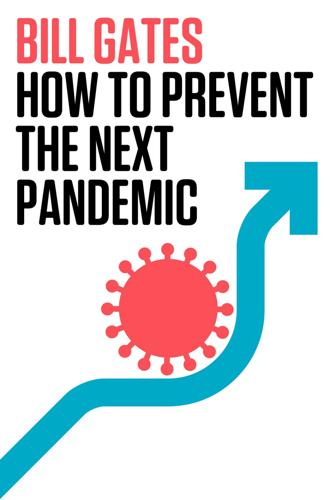
How to Prevent the Next Pandemic
by
Bill Gates
Published 2 May 2022
Food and Drug Administration), 127 emergency use authorization for COVID vaccines, 141 therapeutics regulatory approval, 128 vaccine regulation, 158–59 Ferguson, Neil, 80 fire departments/fire brigades, 42–43, 43n Foege, Bill, 6, 28, 196, 231 fomites, 102 Ford, Gerald, 37 “For Third World, Water Is Still a Deadly Drink” (Kristof), 5, 5 Franklin, Benjamin, 42 Frederick I, Holy Roman Emperor, 192 Fred Hutchinson Cancer Research Center, Seattle, 66, 71, 160 Frieden, Tom, 28 G Gates, Bill blog of, 141 conspiracy theories and, 18 economics of immunization and, 144 Fauci and, 15–16 funding and recruiting for IDM, 206–7 Gates Foundation work, 203, 213, 227 his father speaking on malaria, 200 How to Avoid a Climate Disaster, 5, 234 innovation and, 17 interest in infectious diseases, 5–6 mask wearing by, 110 meme claim about, 209 memo on gaps in the world’s pandemic readiness, 12–13, 13 Microsoft and, 231 observing a minimally invasive autopsy in Soweto, 60, 60–61 pledge of, 17 The Road Ahead, 239, 240 Seattle area as home, 66, 180–81 social distancing and twenty-eight tennis balls, 104, 104 in South Africa, 4 TED talk: “The Next Epidemic? We’re Not Ready,” 13, 14, 71 Vietnam visit, 170 virtual meetings and, 241, 243 wealth and COVID, 17 working dinners and, 4 World’s Fair (1964) and, 248–49 Gates, Melinda, 5, 8, 14, 15, 201 Gates Foundation board of trustees for, 15, 16 CEPI formed, 14 childhood diarrheal disease and, 7, 58 child mortality reduction and, 145, 203, 214, 214, 215 co-chairs, Bill and Melinda Gates, 15, 201 countries focused on, 8 COVID, early discussions, 3, 4 COVID work, funding, 14–15, 129n, 209–10 criticisms of, 16–17 decisions on urgent requests, 15 developing an affordable pentavalent vaccine, 168 Event 201 novel coronavirus exercise (2019) and, 186n funding vaccine manufacturing in developing countries, 169 Gavi, the Vaccine Alliance and, 144–45, 144n, 145, 165, 209, 210, 215, 215, 251, 252 global health work, 7, 213–14 IDM and, 66n, 78 investing in education and digital tools, 247 mAb funding and, 116, 117 maternal mortality and, 7 mission, 201 public health systems and, 227 public policy and, 16–17 role in COVID vaccines, treatments, and diagnostics, 15–16, 15n “silent epidemics” and, 7 tracking the spread of COVID and, 14 Gattaca (film), 68 Gavi, the Vaccine Alliance, 144–45, 144n, 145, 165, 209, 210, 215, 215, 251, 252 GBS (Guillain-Barré syndrome), 38 genome/genomic sequencing of pathogens, 68–70, 69, 76–77, 81, 101, 227, 252 antiviral drug development and, 123–24 for bioengineered pathogens, 195 of COVID, 72, 75, 76, 101, 205–7 global pandemic plan and, 225–27 spike proteins, mRNA vaccines, and, 152, 154 for vaccine development, 206 GERM (Global Epidemic Response and Mobilization), 42–52, 224–25, 252 annual cost, 51–52, 231 diplomacy and national or local leaders, 47–48 dual identity of, 48 emerging diseases as priority, 51 events in an outbreak response, 45–46 exercises (germ games) and, 48, 187, 191–92 function of, 43–44, 52 funding and staffing, 46–47, 224–25 funding source, 51n global fire department analogy, 43 historic antecedents, 42–43 identifying new tools, 231 pandemic prevention czar and, 229 precedents: EOCs, 48–51 primary mission, 233 public health systems and, 231, 232 roles of employees, 47 tasks and preparedness checklist, 48 WHO management of, 47, 51n Germany CEPI and, 14 child mortality and family size, 204 COVID management, 93, 108 vaccine manufacturers, 153, 231 Global Burden of Disease, 23, 23n Global Fund, 136, 207–8, 215, 252 global health, 197–215 child mortality, 145, 200, 201–4, 202, 205, 214, 214–15, 215 child mortality and family size, 204 COVID response and, 205 disparity in groups and countries most affected by COVID, 17, 197–200 Gates Foundation funding, 213–14 health gap, 199, 199–200, 199n, 205 HIV deaths, 199 malaria deaths, 199 maternal and infant mortality, 199, 200n progress made in, 201–5 tools used against COVID and, 205–13 vaccination programs, 208–10 vertical vs. horizontal approach, 212–13 See also health systems/public health systems global pandemic plan, 219–34 building the GERM team, 224–25, 229 comparison to military strategy, 219 creating a pandemic prevention czar, 229 improving disease surveillance, 225–27 making and delivering better tools, 220–24 sharing health data globally, 233–34 strengthening health systems, 227–34, 227n WHO’s role in, 233–34 global population, 204, 204n GOARN (Global Outbreak Alert and Response Network), 45 H health systems/public health systems, 17–18 a central authority and clear responsibilities needed, 229 COVID response and, 26 COVID’s impact on, 228 death records and, 57–58, 59, 225 detecting outbreaks and, 55–56, 81 establishing a supply chain and workforce, 230 funding for low-income countries, 228, 232–33 Gates Foundation work and, 227 GERM team and, 231, 232 global pandemic plan and, 226, 227–34, 227n government spending on, 231–32 improving, broad impact of, 212–13 improving primary care, 229 intubation, ventilators, and, 122 medical oxygen supply and, 120, 122 pandemic prevention and, 44, 225 primary health care, 227, 228, 229, 234, 238 software for, 225 testing and, 63–64, 77 vaccines and, 227 hepatitis B, 157 Hilleman, Maurice, 141–42 daughter Jeryl Lynn, 141–42 Hippocrates, 122 HIV/AIDS, 4, 6, 7, 222 antiviral drugs for, 124–25 billboard, Lusaka, Zambia, 8 contact tracing and, 97 fatalities and infections, 6–7, 7, 199, 199 generic drug manufacturing for, 132, 133, 163 Global Fund and delivering medicines, 207 medicines for low- and middle-income countries, 136 pre-exposure prophylaxis, 136 testing and genetic analysis, 70, 76 transmission, 194 vaccine and, 141, 155, 160, 170 HIV Vaccine Trials Network, 208 Hong Kong SARS outbreak (2003), 192 How to Avoid a Climate Disaster (Gates), 5, 234 HPV (human papillomavirus), 157 hydroxychloroquine, 111, 113 I IDM (Institute for Disease Modeling), 66, 66n, 78, 206–7 IHME (Institute for Health Metrics and Evaluation), 23, 26, 66, 78, 79n, 206, 252 immune system, 150–51 innate immune response boosters, 137 Imperial College London, 206 India access to pneumococcal vaccine, 169 childhood immunizations and, 210, 211 COVID in, 30, 30–31, 34 COVID vaccination in, 35, 198, 211 digital vaccination certificates in, 211 generic drug manufacturing and, 133, 134n mucormycosis in, 114–15 pandemic preparation and, 219 polio campaigns, 212 smallpox campaign, 210 vaccine distribution and “last mile” delivery in, 173 vaccine manufacturing and, 165, 168, 169, 221 Indonesia, 219 country-scale germ game, 182–83 infectious diseases child mortality and, 58–59 endemic diseases, 6 engineered bioweapons, 10 epidemics, 6, 7 Gates’s interest in, 5–6 genetic information on pathogens and, 68–70, 68n, 69 global database for, 19 outbreaks, 6, 7, 7 pandemics, 6, 7, 8 rapid detection, 19, 53–82 transmission, 100 transmission reduction, 33, 84–110 variants, 32, 33 waves, 34 influenza, 8, 9, 9–10 eradicating, 21, 219 fatalities and hospitalizations, 21, 95–96, 96n genetic information and, 68, 68n mutations (variants), 69 1918 pandemic, 9, 9, 9n, 37, 84, 108–9, 109n NPIs and 2020–21 flu season, 95–96 oral blocker for, 175 prevention methods, 39 recurrence of strains, 96 reporting new types, 54 seasonal, 218 Seattle Flu Study, 14, 66–76, 226, 233 simulation, Indonesia, 182–83 swine flu (1976), mass immunization drive, 37–38 swine flu (2009–10), 9, 10 universal vaccines for, 19, 149, 178 in the U.S., lack of diagnosis and testing, 70 U.S. pandemic simulations, 186 vaccines, 146, 157 variants and flu shots, 32, 53 innovation, 17 in administering vaccines, 174, 179, 222 in broadband infrastructure, 249–50 in clinical trials, 126–27 COVID and, 39–40 in diagnostic testing, 64–66, 223–24, 234 the digital future and, 237–50, 237n in drug development, 123–25, 130, 137–38, 220–21 in education, 246–48 funding for, 219, 220 in generic drug manufacturing, 131–34, 132n, 223 in genetic information on pathogens, 76–77 metaverse technology, 243 private sector and, 39–40 as problem solver, 239 U.S. government and, 231 in vaccine development, 220–21 in vaccine distribution, 173, 221–22 in working remotely, 238–45, 244n International Health Regulations, 233 Iran, 25 J Japan backward contact tracing in, 100 bioterror attack in, 193 as health systems model, 230 masking in, 109 mRNA vaccines in, 154 partnership with the Gates Foundation, 14 postal workers and disease surveillance, 57 Jenner, Edward, 158, 158n Johnson & Johnson COVID vaccine, 155, 159, 166 K Karikó, Katalin, 150, 150, 152–53, 250 Kenya, medical oxygen supply in, 121 Klugman, Keith, 4–5 Kristof, Nicholas, “For Third World, Water Is Still a Deadly Drink,” 5, 5 L Lassa fever, 50 Lawfare, 10n Lewis, Michael, The Premonition, 37n LGC, Biosearch, 65, 65 Lind, James, 126 lockdowns, 88, 89, 90, 94–95, 99 of nursing homes, 93–94 London School of Hygiene & Tropical Medicine, modeling team at, 78 LumiraDx, 64, 114 M MacLachlan, Ian, 153 malaria, 5, 6, 7, 7 deaths, 199, 199, 200 Gates’s father speaking on, 200 Global Fund delivering bed nets, 207 human challenge study and, 130 IDM and, 206 reducing child mortality and, 215 vaccine development, 170 masks/mask mandates, 24, 85, 85–86, 105–10, 108 COVID and, specific countries, 109–10 effectiveness, 106–7, 110 N95 or KN95, 107–8, 107n, 108 resistance to, 108–9, 109n respirators, 107–8, 107n, 108 social standards and, 110 measles, 50 airborne transmission of, 101 India’s campaign, 211 reducing child mortality and, 215 vaccine, 139, 141, 174 vaccine micro-needle patches, 222 Médecins Sans Frontières, 51 Merck, 117, 132, 141 MERS (Middle East Respiratory Syndrome), 97, 157, 190, 191 Microsoft, 18, 225, 231 Moderna, 153, 154 monoclonal antibodies (mAbs), 115–16, 136, 252 challenges with, 116–17, 120 Sotrovimab, 116 Mozambique, mortality surveillance, 59, 225 mRNA vaccines, 39, 149–55, 150, 154, 157, 208, 220, 252–53 clinical trials, 154 cold storage of, 172 companies that produce, 153, 156 DARPA and, 153 development of, 152–54, 155, 231, 250 emergency use authorization for, 154 instability of, 152 lipid nanoparticles and, 153, 162 production challenges, 162 safety of, 160, 161 second-source deals and, 166 theory of, 151–52 universal vaccines and, 178 virus genome mapping and, 154 mumps vaccine, 141–42 Mundel, Trevor, 14–15 Myhrvold, Nathan, 10–11 “Strategic Terrorism: A Call to Action,” 10n, 193, 194 N Navajo & Hopi Families COVID-19 Relief Fund, 31 New England Journal of Medicine, Gates paper in, 13, 14 New Yorker, “The Really Big One,” 180 New York Times, 141 “Coronavirus May Have Spread in U.S. for Weeks, Gene Sequencing Suggests,” 74 “The Mask Slackers of 1918,” 109, 109n “The Pandemic Has Split in Two,” 198 “For Third World, Water Is Still a Deadly Drink” (Kristof), 5, 5 New Zealand, COVID in, 25, 64, 101 Nexar, 65, 65 “Next Epidemic?
…
It’s also because international travel is skyrocketing (or at least it was before COVID slowed its growth): In 2019, before COVID, tourists around the world made 1.4 billion international arrivals every year—up from just 25 million in 1950. The fact that the world had gone a century since a catastrophic pandemic—the most recent one, the flu of 1918, killed something like 50 million people—is largely a matter of luck. Before COVID, the possibility of a flu pandemic was, relatively speaking, well known; many people had at least heard of the 1918 flu, and they might have remembered the swine flu pandemic of 2009–10. But a century is a long time, so almost no one alive had lived through the flu pandemic, and the swine flu pandemic didn’t turn out to be a huge problem because it wasn’t much more fatal than the normal flu.
…
Meanwhile, whether COVID subsides or comes roaring back, we also need to work on a separate, longer-term goal: preventing the next pandemic. For decades, people told the world to get ready for a pandemic, but hardly anyone made it a top priority. Then COVID struck, and stopping it became the most important thing on the global agenda. What I worry about now is that when COVID does subside, the world’s attention will turn to other problems, and pandemic prevention will once again get moved to the back burner—or taken off the stove entirely. We need to take action now, while all of us still remember how awful this pandemic was and feel the urgency of never allowing another one to arise.

The Survival of the City: Human Flourishing in an Age of Isolation
by
Edward Glaeser
and
David Cutler
Published 14 Sep 2021
Shades of Social Distancing Today, the Black Death is generally treatable. Antibiotics cure most cases. But Alexander Fleming only discovered penicillin in 1928. In the Middle Ages, social distancing was the only possible response. The same was true for COVID-19 during most of 2020. Isolating the sick from the healthy is a reasonable response to a contagious pandemic, but different types of social distancing come with different costs and efficacy. The oldest form of social distancing is simply to remove the sick from the community. Leviticus 13:46 may be humanity’s oldest public health warning: “all the days wherein the plague shall be in him he shall be defiled; he is unclean: he shall dwell alone; without the camp shall his habitation be.”
…
It is estimated that one third of the world’s population caught the flu, though no exact number is available. As in the COVID-19 pandemic, cloth masks became ubiquitous, countries shut their borders, and cities experimented with enforced social distancing. Given the death tolls and the mode of transmission, the influenza pandemic would seem likely to have been just as disruptive to local economies as COVID-19. Yet it was not. François Velde of the Federal Reserve Bank of Chicago has done a remarkable job investigating the economic consequences of the influenza pandemic. He finds that “industrial output fell sharply but rebounded within months,” and “retail seemed little affected.”
…
technical expertise and moral judgment: “Why Pandemic Disease and War Are So Similar,” Business Insider. By contrast, some: “New Zealand,” Worldometer. Containment is easier: Roy, “ ‘Can I Really Do This?’ New Zealand’s Ashley Bloomfield Reveals Self-Doubts at Height of Covid.” first national leader to do so: Meixler, “New Zealand’s Jacinda Ardern Made History by Bringing Baby Neve to the U.N.” Together they form: World Health Organization, “New Zealand Takes Early and Hard Action to Tackle COVID-19.” handwashing and social distancing: Jefferies et al., “COVID-19 in New Zealand and the Impact of the National Response: A Descriptive Epidemiological Study.”
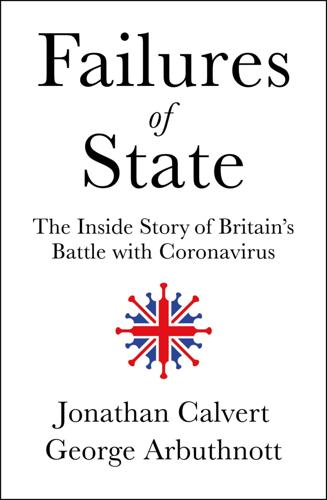
Failures of State: The Inside Story of Britain's Battle With Coronavirus
by
Jonathan Calvert
and
George Arbuthnott
Published 18 Mar 2021
In London’s Soho, there were extraordinary scenes as thousands of people were crushed cheek to jowl in narrow streets. They hugged, they snogged, they bellowed in each other’s ears without a thought for social distancing. They were having a great time – but was it too much, too soon? The scenes terrified those who understood the history of pandemics. Watching the events that day, Professor Devi Sridhar, Chair of Global Public Health at Edinburgh University and a member of the Scottish government’s Covid-19 Advisory Group, was reminded of the celebrations in 1918 when people thought the last great pandemic, the Spanish flu, was over after the first wave. ‘Back in 1918 there were pictures of parades of people celebrating.
…
Abrahamson, Elkan 402, 403 Academy of Medical Sciences 237, 336, 338, 353 action plan, UK government (‘contain, delay, research, mitigate’ strategy) 152–66 All-Party Parliamentary Group on Coronavirus 396, 398 ambulance service 95, 190, 224, 237, 243, 247, 264, 265–7, 268, 269, 270, 273, 274–5, 282, 294, 290, 291, 392, 416 Arcuri, Jennifer 127–31, 310–11 Ardern, Jacinda 153–4, 308, 337 Ashton, John 100, 190 Ashworth, Jon 74–5, 143, 286 asymptomatic spread, Covid-19 135, 142, 144, 237–8, 332–3 Attwood, Peter 51–2, 55 austerity policies, UK government 7, 87, 88, 101, 104, 105 Austin, Raymond 243–6, 247, 249, 252, 296 Australia 18, 155, 180, 230, 231, 302, 308, 325, 337–8, 365, 394 Blair, Tony 77, 78, 87, 128 Bradshaw, Ben 316–17 Brexit 4, 5, 10, 76, 78, 81, 87, 90, 91, 101, 115–16, 138, 148, 153, 172, 230, 261, 383, 391, 397; Boris Johnson/UK government fixation with and appreciation of danger posed by Covid-19 4, 5, 6, 8, 15–16, 56–7, 64–5, 71–5, 76, 78, 87, 110–12, 115–16, 122–4, 132, 153, 383, 397; Brexit day 71–2; Cummings and 72, 111–13; Hancock and 68–9; Leave Campaign 57, 112, 213; lockdown and 61, 74, 302, 390–1; ministers’ approach to views of scientists and 103–4; no-deal 8, 78, 87, 90, 110, 111, 113, 390; pandemic planning/preparation and 6, 7–8, 15–16, 56–7, 64–5, 68, 72–3, 87, 90, 91, 101, 103–4, 105, 122, 123–4, 132; withdrawal treaty 5, 57 Brown, Gordon 78–9, 88 Buckland, Jane 51, 52 Cain, Lee 184, 213 Cameron, David 66, 77–8, 88, 155, 199, 200–1, 213 care homes/sector 7, 10, 105, 203, 214, 269, 280–4, 366, 384; Boris Johnson lays blame for crisis in on workers 332–3; death toll within 238–9, 263–4, 267, 284, 290; government advice to in early days of pandemic 141, 161; House of Commons’ public accounts committee report into care home crisis 333; lockdown and 280–1; patients discharged from hospital into 90, 203–4, 280–2; residents rejected for hospital admission 269, 282–4; staff 96, 141, 281–2, 290, 291, 310, 332–3 Charles, Prince 230 Cheltenham Festival 167, 168–71, 172, 183, 417 Chequers 115, 149, 151, 199, 216, 277, 295, 329 China 7, 8, 385; Covid-19 death toll in 70, 308–9; Covid-19 imported into UK from 63–4, 70, 72–3, 142; Covid-19 origins in 9, 15–29, 15; Covid-19 outbreak in and cover-up of 9, 30–52, 30, 56–7, 58, 59, 61, 62–3, 70, 75; economy, swift lockdown policy and 308–9; personal protective equipment (PPE) and 71, 85, 86, 122–3, 145; Sars (Sars-CoV-1) pandemic (2002) and 16, 17–20, 21; success of dealing with Covid-19 401; see also Wuhan Chinese Centre for Disease Control and Prevention 22, 34 Churchill, Winston 2, 4, 397 Cobra (national crisis committee) 8, 55–6, 58, 59, 61, 62, 64, 65, 70, 71, 75–80, 89, 99, 102, 106, 107, 124, 126, 127, 147, 148–9, 152, 153, 154, 174, 190, 196, 199–200, 212–13, 214, 220, 285, 286, 384; Boris Johnson fails to attend first five meetings of during Covid crisis 8, 55–6, 58, 59, 61, 62, 64, 70, 71, 75–80, 102, 106, 107, 124, 126, 127, 147, 148–9, 285, 286, 384 Conservative Party 60, 65–6, 84, 88, 106, 110, 112, 113, 115, 117, 118, 119, 120, 143, 249, 288; austerity policies 7, 87, 88, 101, 104, 105; Black and White Ball 119, 134–5, 137, 138, 141, 142, 150; Brexit and 4, 110, 111–12; general election victory (2019) 4, 57, 71–2, 76, 111–12, 116, 138, 319; leadership contest (2019) 68–9, 111, 189, 203, 401; lockdown and 296, 302, 319, 322, 329, 339, 340, 359 Conte, Giuseppe 192–3 Corbyn, Jeremy 76, 127, 137, 138, 240 Coronavirus Act (2020) 226–7 Coronavirus Clinical Characterisation Consortium 396 Cosford, Paul 64, 109 Costello, Anthony 181, 369 Covid-19 (Sars-CoV-2): asymptomatic spread of 135, 142, 144, 237–8, 332–3; first British deaths 51–2, 55, 159–60; first recorded cases in Britain 50–2, 55, 64, 72, 81–3, 107, 108–9, 140–1, 148, 150–1, 165; infectivity rate 60–1, 62, 71, 74, 109, 146, 287, 393, 394; long Covid 365; name 16; origins 15–29, 15; outbreak and cover-up of in China 30–52, 30; reproduction (R) rate 60–1, 139, 296–7, 303, 304, 306, 320, 325, 335, 336–7, 338, 339, 340, 346, 350–1, 354, 359, 363, 365, 387, 400, 403; second wave 11, 176, 183, 184, 310, 328, 330–1, 336, 338, 340–1, 344, 347, 350, 352, 353, 355, 359, 360, 363, 364, 366, 373–4, 376, 402–3, 417; vaccines 11, 27, 106, 178, 349, 353, 357, 387, 391, 393, 394; variants 144, 335, 386, 389, 393 Covid-19 Bereaved Families for Justice UK group 402 Covid-19 Clinical Information Network (Co-Cin) 249–50 Covid Symptom Study app 50 Crabtree, David 281, 282, 283 Cummings, Dominic 72, 106, 111–14, 120, 126, 138, 139, 140, 153, 171, 195–6, 208, 209–10; Boris Johnson, breakdown of relationship with 363; Covid infection 234–5, 277–8; flouts lockdown rules 234–6, 277–8, 311–16; lockdown measures, becomes believer in swift and decisive (‘Domoscene conversion’) 195–6, 363, 399 Cygnus pandemic rehearsal (2016) 88–90, 95, 104 Daszak, Peter 27–8, 29, 41–2, 45–6 Davey, Ed 149, 299, 322 Davies, Nicholas 140, 184–5, 349, 370, 373 Davis, David 112, 115, 261 De Angelis, Daniela 160, 219, 366, 373 deaths, UK Covid-related 6, 7, 9–10, 11, 59, 61–2, 70, 73, 88, 89, 114, 133, 136, 140, 142, 148, 150, 154, 155, 161, 164–5, 169, 170, 175, 177, 178, 185, 187–8, 191–2, 193, 195, 196, 197, 201, 206, 211, 231–2, 256, 276, 277, 278–9, 280, 284, 287–8, 295, 297, 301–2, 305, 306, 324, 336, 337, 352, 356, 357, 359, 360, 361, 365, 366, 368, 369, 372–3, 376, 378, 385, 386, 391, 394–5, 401–2, 404, 405; deaths at home 263–73, 264, 290, 291; death rate/lethal potential of Covid-19 55, 75, 191–2, 378; European record high death rate 220, 287, 301–2, 305, 320, 307–8, 395, 396; first UK deaths 51–2, 55, 159–60; late lockdown in UK and 9–10, 220, 287–8, 307–10, 320–1, 358, 364–6, 379, 394–5, 397, 401, 404 Department of Health 71, 85, 92, 95, 100, 105, 149, 151, 155, 174, 180, 196, 260, 281 Diamond Princess 83–4, 124–5, 140, 148 Doctors’ Association UK 208, 217, 241, 261, 379 Dorries, Nadine 156, 180, 196–8, 226, 287, 347 Eat Out to Help Out scheme 333–4, 339, 344–5, 349, 375 Ebola 18, 26, 90, 92, 96, 189 Ebright, Richard 43–4, 47–9 economy, UK 4–5, 399; annual borrowing 306–7; Brexit and 4, 73–4, 148, 391; budget (2020) 105, 180–1; Eat Out to Help Out 333–4, 339, 344–5, 349, 375; false dichotomy between health of the nation and that of the economy, UK government offers 340, 379, 400–1; financial markets 146–7, 148, 172, 210; ‘furlough’ scheme 99, 105, 214, 306, 333; G7 group of developed nations, UK economy suffers more than any other 10, 333, 396; GDP, fall in 307–10, 395–6, 401; herd immunity and 177; lifting of lockdown measures and 279, 306–7, 319–20, 328–9, 333–8, 339, 340, 343–5, 371, 398, 399, 400–1; lockdown measures and 9, 61, 74, 156–7, 161, 177–8, 199, 204, 279, 296–7, 304–5, 306–10, 319, 333, 343, 350–1, 352–3, 354, 355–6, 337–8, 359, 360, 364–5, 368, 371, 372, 374, 376, 377, 379, 396, 398, 399, 400–1, 403; pandemic planning and 87, 88, 89, 96, 105, 114; return to offices, government encourages 335–6, 343–4; Sunak and, see Sunak, Rishi; total cost of combating effects of the pandemic 306–7; Treasury support packages 181, 204–5, 214, 306–7, 333–4, 339, 344–5, 350; unemployment 279, 319, 333, 350; World Bank: ‘The Sooner, the Better: The Early Economic Impact of Non-Pharmaceutical Interventions during the COVID-19 Pandemic’ report 307, 360, 368 Edmunds, John 132, 139, 140, 159, 160, 184–5, 327, 357–8, 362, 363–4 Edwardes, Charlotte 119–20 Elizabeth II, Queen 210, 230, 240, 241, 256, 295, 298 European Union (EU) 4, 5, 57, 65, 71, 72, 85, 90, 103, 124, 126, 309, 333, 391 facemasks 8, 10, 22, 84, 86, 94–5, 122, 123, 141, 145, 177, 179, 180, 182, 208, 276, 281, 334, 335–6, 374 Farrar, Sir Jeremy 63, 102, 108, 139, 220 Ferguson, Neil 59, 61, 71, 139, 159, 185, 205, 220, 300–1, 320, 321 Fetzer, Thiemo 344–5 financial crisis (2007–08) 88, 172 financial markets 146–7, 148, 172, 210 ‘following the science’, UK government claims to be 7, 153, 157–8, 163, 174, 181–2, 183, 194, 213 foot and mouth disease 79, 80, 167 France 1–2, 9, 33, 83, 86, 144, 149–50, 166, 191, 194, 195, 198, 209, 212, 217, 219, 297, 303, 310, 344, 376, 390 ‘gain-of-function’ experiments 26–7, 48 Gallagher, Mick 290–1 Germany 4, 9, 70, 90, 93, 98, 99, 162, 194, 198, 217, 219, 224, 297, 302, 307, 310, 364, 376 Ghebreyesus, Tedros Adhanom 70, 71, 83–4, 133 Good Morning Britain 104, 301, 315 Gove, Michael 78, 110, 212–13, 236, 256, 285–6, 339, 353, 358, 368, 376, 377, 399 Greater London Authority (GLA) 129, 130, 311 Grove, Betty 272–3 Gupta, Sunetra 254–5 Halpern, David 184, 192 Hammond, Philip 76, 110, 113 Hancock, Matt 55, 61–2, 65–6, 198–9, 249; background 65–7; big claims, propensity for making 141, 198, 238–9; Boris Johnson Covid infection and 256; Brexit and 68–9; care homes and 280; Christmas restrictions and 388; circuit breaker lockdown and 353, 368; Cobra committee and 106; contact tracing app and 325; Covid infection 233, 238; Covid variants and 389; Eat Out to Help Out and 339; Edwardes and 120; government decisions presented to public as if based on scientific advice, role in 157; herd immunity and 193, 198; hospital capacity and 203, 252–3; Italian travellers/airports and 142–4; late lockdown, on 220; masks and 336; Nightingale hospitals and 227; 100,000 tests per day target 239, 288, 298–9, 317; Operation Cygnus and 104–5; Operation Moonshot and 349–50; personal protective equipment (PPE) and 84–5, 93, 96; procurement practice and allegations of cronyism 288; restrictions to limit the spread of the virus, pushes for 363, 368, 398; testing and 97, 99, 239, 288, 298–9, 317 Hanks, Tom 180, 230 Harries, Jenny 181–3, 186, 214, 312, 317, 336 Heneghan, Carl 355–6, 359 herd immunity 106, 156, 164–5, 171, 174–9, 183–5, 187, 191–3, 194–5, 196–8, 200, 302, 354, 355, 356–7, 365, 394 Hibberd, Martin 43, 46, 47, 48, 63, 98–9, 101, 102–3, 287 High Consequence Infectious Disease (HCID) 207–8 Hillier, Meg 105, 333 Horton, Richard 62, 101, 102, 225–6, 286–7 Imperial College London 9, 42, 59, 61, 108, 109, 131, 132, 136, 139, 149, 154, 156, 159, 160, 170, 176, 184, 185, 186, 193, 199, 200, 205, 211, 216, 242, 297, 300, 322, 346, 361, 377, 386, 393 Independent Office for Police Conduct (IOPC) 128, 130–1, 310–11 Iran 58, 136, 137, 153 Ireland 165, 187, 188, 191, 305 Italy 9, 33, 64, 70, 119, 131, 132, 135–6, 142–5, 148, 151, 153, 161, 162, 165, 171, 172–3, 178, 187–8, 190, 191, 192–3, 194, 195, 200, 205–6, 210, 217, 219, 224, 225, 297, 301–2, 310, 344 Japan 59, 70, 125, 132, 178, 364 Javid, Sajid 72, 111, 112, 113, 119, 138 Jenrick, Robert 208, 289, 301 Johnson, Boris: action plan (‘contain, delay, research, mitigate’ strategy’) and 152–66; Arcuri and 127–31, 310–11; Brexit fixation and appreciation of danger posed by Covid-19 4, 5, 6, 8, 15–16, 56–7, 64–5, 71–5, 76, 78, 87, 110–12, 115–16, 122–4, 132, 153, 383, 397; cabinet reshuffle (2020) 110–11, 113–15; care workers, blames for crisis in care sector 332–3; Chevening and 114–15, 117, 121, 122, 123, 124, 125–7, 131, 137; child (Wilfred Lawrie Nicholas) 298; childhood 2; China and 56–7, 123–4; Christmas restrictions and 387–90, 404; circuit breaker lockdown and 352–80, 386; civil claims for negligence and violation of human rights against UK government, responsibility for 402–3; Cobra meetings, chairs 148–9, 152, 153, 154, 174, 196, 199–200, 212–13, 214, 220; Cobra meetings, fails to attend first five meetings of during Covid crisis 8, 55–6, 58, 59, 61, 62, 64, 70, 71, 75–80, 102, 106, 107, 124, 126, 127, 147, 148–9, 285, 286, 384; Conservative leadership contest and 68–9, 111, 189, 401; Covid infection and illness 10, 233–4, 235–6, 239–40, 241, 244, 247, 254–5, 262–3, 276–7, 295–7, 403; Cummings and 112, 113, 114, 235–6, 311–16, 363–4, 369, 370; EU, misses chance to pool resources with 126; ‘following the science’, UK government claims to be and 7, 153, 157–8, 163, 174, 181–2, 183, 194, 213; foreign newspapers criticise 302; general election victory (2019) 4, 57, 71–2, 116, 138; government decisions presented to public as if they were entirely based on scientific advice 157; Harries Twitter broadcast 181–3; herd immunity concept and 164–5, 174–6, 183–4, 187, 192–3, 194–5; holidays 57–8, 76, 109, 110, 114–17, 121, 122, 123, 124, 125–7, 131, 135, 137, 341, 342, 383; ‘irrational’ panic of Covid-19, dismissive of 4, 107–9, 204; lockdown measures and, see lockdowns, UK Covid-19; love affairs and children 116–121, 127–31; marriage 117, 118–19, 120–1; Mothers’ Day mixed message 214–15, 216; NHS surcharge for foreign health and social care workers and 310; Old Royal Naval College, Greenwich speech (2020) 5–6, 73–4, 84, 147, 204; popularity/public confidence in 6, 7, 284, 310, 315, 324–5; prorogues parliament (2019) 68, 69; public gatherings, attitude towards 165–6, 167–8, 181, 187; rewriting of timeline of Covid crisis 102; school closures and, see school closures; school meal vouchers and 323–4, 344–5; scientific advisers, split with 360–4; scientists, lays blame for crisis with 148, 321–2; shaking hands, proudly refuses to stop 162–4, 166, 175, 233; ‘Stay at home, protect the NHS, save lives’ plan launched 213–15, 216, 305; Storm Dennis and 126–7; Storm Jorge and 171–2; Symonds and, see Symonds, Carrie; This Morning, appearance on 163–5, 175; travel corridors and 334–5; vaccines and 349 Johnson, Stanley 123, 262, 263 Kerslake, Lord 77–8, 154–5 Khan, Sadiq 200, 208–10, 213, 214, 217 King, Sir David 77, 155, 170–1, 219, 400–1 Labour Party 57, 66, 74–5, 76, 87, 105, 111–12, 127, 137, 143, 216, 240, 289–90, 316, 325, 329, 338, 368, 371, 389 Lancet, The 34, 55, 62, 101, 225–6, 286, 364 Lee, Phillip 89–90, 200–1 Li Wenliang 34–5, 81 Liu Xiaoming 56–7, 123, 124 lockdowns, UK Covid-19: behavioural fatigue concept and 201–2; Christmas and New Year restrictions (2020–21) 356, 385–95, 404; curfews 362–3, 369; dither and delay over, UK government/Boris Johnson 4–5, 9–10, 152–7, 160–1, 167–220, 218, 223, 224, 260, 261, 263, 287, 296–310, 319–21, 323, 325–7, 333, 334–5, 342, 345, 346, 348, 349, 350–1, 352–80, 387, 388–9, 390, 391, 393, 394, 396, 397–8, 400, 404–5; economic costs of, see economy; first (20 March 2020) 2–4, 8, 9, 10, 217–18, 223–327; first, discussed within government 61, 139–40; first, lifting of (4 July 2020) 325–51; Johnson lockdown speech (23 March 2020) 2–4, 9, 10, 217–18; local lockdowns 327, 338–9, 367–8; London lockdown first discussed 208–10, 217; public gatherings and 3–4, 149, 156–7, 159, 164–6, 167–70, 171, 174–5, 181, 182–3, 187, 189, 199, 213, 218, 327, 335, 348; second/circuit breaker begins (16 December 2020) 377–80, 386; second/circuit breaker, UK government delays 352–80; ‘Stay alert, control the virus, save lives’ advice 305; ‘Stay at home, protect the NHS, save lives’ advice 213–15, 305; third (6 January 2021) 386, 393–4, 398, 404–5; tier system of restrictions 369–70, 371, 386, 388–9, 390, 393–4 London: Covid-19 in 108–9, 190, 200, 205–6, 236, 237, 246–8, 254, 256, 265, 266, 267–8, 272, 274–5, 283, 385–6, 388, 389, 390, 391–2, 393, 394; first lockdown and 205–6, 208–10, 212, 217 London Ambulance Service 190, 237, 265 London School of Hygiene & Tropical Medicine (LSHTM) 43, 63, 71, 97, 98, 101, 132, 139, 140, 158, 159, 160, 184–5, 287, 349, 364 long Covid 365 Macintyre, Helen 118, 130 Macron, Emmanuel 212 May, Theresa 68, 76, 79, 88, 115, 199 Medley, Graham 63, 139, 146, 160, 163, 174, 372 Michie, Susan 163, 171, 188–9, 234 Middle East Respiratory Syndrome 16 Military World Games, Wuhan (2019) 32 modelling, Covid-19 9, 59, 61, 63, 71, 92, 103, 108, 131–2, 136, 139, 140–1, 146, 151, 154, 155, 158–61, 163–5, 170, 175, 176, 177–8, 184–5, 186, 193, 194, 195, 199, 205, 211, 216, 219, 220, 240, 297, 300, 321, 327, 336, 342, 343, 348–9, 366, 370, 372, 373, 376 Montgomerie, Tim 113–14, 121 Montgomery, Hugh 392 Montgomery, Sir Jonathan 211, 228, 229 Moral and Ethical Advisory Group (Meag) 211–12, 227, 228, 242, 243, 258 Morrison, Vivien 243, 244, 245–6, 247 Mostyn-Owen, Allegra 117 Nagpaul, Chaand 265, 273, 274, 275–6 National Health Service (NHS) 7; candle-lit vigil held by staff outside Downing Street 331–2; clapping for 10, 231, 239, 247, 275; critical care capacity figures, publication of suspended 225; Hancock and, see Hancock, Matthew; hospital capacity 84, 89–90, 145–6, 150, 151, 155–6, 161–2, 173–4, 177, 186, 192, 195, 196–8, 201, 202, 203–4, 206–7, 208, 211, 225, 226, 227–8, 241–54, 251, 252, 256–7, 258, 261, 265, 267, 268, 273–4, 280–1, 297, 337, 373–5, 377, 378–9, 391–2, 394, 396–7, 398, 401–2, 403–5; intensive care capacity/selection of patients for 3, 140, 145–6, 173–4, 195, 199, 211–12, 224–5, 227–9, 241–61, 251, 252, 256–7, 262–91, 296, 396–7; national pandemic stockpile 93–5; NHS England 85, 269; Nightingale hospitals 227, 246–7, 280, 377; pandemic planning/preparedness and 7, 8, 62, 74–5, 84–97, 122–3, 145, 285; personal protective equipment (PPE), see personal protective equipment (PPE); procurement practice 288–9; secrecy culture imposed on during Covid crisis 224–5, 227–9, 247–9, 260–1, 284, 373–4; staff deaths 290–1, 331–2; staff sickness and shortages 236, 237, 374; staff testing for virus 206–7, 236–9, 288; surcharge for foreign health workers 310; triaging dilemmas 173–4, 211–12, 224–5, 227–9, 241–61, 262–91, 373–5, 392, 396–7; ventilators and 3, 89, 126, 136, 146, 169, 200–1, 246, 255, 263, 274, 286, 296, 392, 397 Nature 26, 39–40, 42, 49, 50, 89 New and Emerging Respiratory Virus Threats Advisory Group (Nervtag) 71, 95, 132, 161, 201 New Zealand 153–4, 155, 277, 308, 319, 337–8, 364, 365, 394, 395 News2 265, 266 Noon, Brian 270–2, 273 Northwick Park Hospital, Harrow 206, 289 No. 10 Downing Street, Covid-19 within 226, 232–3 Openshaw, Peter 132, 201 Osborne, George 65, 149 Oxford University 9, 65, 70, 108, 109, 131, 136, 144, 149, 154, 156, 158, 170, 186, 193, 199, 202, 203, 205, 211, 216, 237, 387, 391 Pagel, Christina 173–4, 254 pandemic planning 7–8, 84–101, 104, 122, 182, 208, 285, 290; Brexit and 6, 7–8, 15–16, 56–7, 64–5, 68, 72–3, 87, 90, 91, 101, 103–4, 105, 122, 123–4, 132; Cygnus pandemic rehearsal (2016) 88–90, 95, 104; stockpile, national pandemic 7–8, 87, 88, 93–6, 122, 182, 208, 285; Winter Willow pandemic rehearsal (2007) 87–8 parliament, UK 61, 66, 68, 69, 71, 72, 84, 85, 96, 105, 109, 110, 112, 115, 116, 180, 181, 203, 204, 205, 210, 220, 225–6, 234, 237, 262, 281, 282, 289, 290, 315, 317–18, 321, 332, 333, 340, 351, 368, 390, 396, 398 Parmar, Rinesh 217, 261, 379 Patel, Priti 110, 399–400 personal protective equipment (PPE) 7, 8, 63, 71, 85–91, 92, 93–7, 100–1, 104, 105, 122–3, 145, 169, 179, 181, 182, 207–8, 214, 217, 219, 226, 232, 247, 248, 249, 276, 281, 284, 285–6, 288, 290, 291, 297, 333, 336, 384; donation of to China from UK stockpile 101, 122–3, 285–6 Pillay, Deenan 27, 43 Powis, Stephen 139, 237, 238, 260–1, 397 public gatherings, UK government attitudes towards 3–4, 149, 156–7, 159, 164–6, 167–70, 171, 174–5, 181, 182–3, 187, 189, 199, 213, 218, 327, 335, 348 Public Health England (PHE) 64, 72, 83, 88, 94–5, 98, 99–100, 109, 122, 131, 132, 139, 141, 149, 150–1, 182, 187, 207, 238, 313 public inquiry, UK Covid-19 crisis 102, 189, 340, 379, 395, 402–3 quarantine 64, 70, 73, 97, 125, 142, 197, 226, 278, 316, 335, 399 Queen’s Medical Centre, Nottingham 248–9 Raab, Dominic 104, 110, 115, 254–6, 279, 286, 287, 289–90, 297, 303, 307, 322 Rashford, Marcus 324 reproduction (R) rate, Covid-19 60–1, 139, 296–7, 303, 304, 306, 320, 325, 335, 336–7, 338, 339, 340, 346, 350–1, 354, 359, 363, 365, 387, 400, 403 Ricciardi, Walter 136, 205–6 Riley, Steven 176–9, 343 Ross, David 116, 135 Scally, Gabriel 100, 180, 186, 192 school closures 83, 139, 140, 143–4, 145, 156, 159, 164, 181, 187, 188, 189, 191, 205, 304, 316, 318, 323–4, 339, 341–2, 343, 344–5, 346–7, 350, 353, 356, 372, 375, 384, 392–3, 394, 404 school meals, free 323–4, 344–5 Scientific Advisory Group for Emergencies (Sage) 42, 59–60, 61, 63, 71, 75, 92, 102, 108, 131, 138–40, 141, 146, 151, 158–9, 160, 162, 163, 164, 165, 171, 175, 176, 179–80, 184, 185, 189, 193, 201, 202, 205, 220, 232, 237, 249–50, 278, 300, 309, 321, 322, 323, 327, 331, 333, 334, 336, 338, 339–40, 345, 350, 352, 356, 357, 358, 359, 360, 360, 362, 369, 370, 372, 374, 392–3, 396–7, 398, 416 Scotland 89, 142, 166, 191, 213, 230, 258, 305, 315, 330, 335, 341, 365–6, 367, 388, 393 second wave, Covid-19 11, 176, 183, 184, 310, 328, 330–1, 336, 338, 340–1, 344, 347, 350, 352, 353, 355, 359, 360, 363, 364, 366, 373–4, 376, 402–3, 417 Second World War 2, 4, 68, 110, 225, 226, 240, 284, 307, 394 Sedwill, Sir Mark 58, 196, 233–4, 256 self-isolation 83, 140, 142, 143, 153, 154, 174, 180, 201, 205, 207, 230, 232, 233, 235, 236, 237, 291, 325, 374 Severe Acute Respiratory Syndrome (Sars) (Sars-CoV-1) pandemic (2002) 16–17, 18, 19, 20, 21, 22, 23, 24, 26, 27, 28, 33, 34, 35, 40, 43, 45, 49, 63, 75, 106, 156 Shapps, Grant 78, 312 Shi Zhengli (‘Bat Woman’) 17–18, 19, 20, 22, 23, 25, 26, 27–8, 29, 30–1, 34, 37, 39–40, 41, 42–3, 49, 50 Singapore 63, 82, 83, 102–3, 109, 132, 139, 156, 178, 190, 325, 364 social distancing 72, 139, 140, 142, 159, 188, 194, 201, 204, 205, 214, 216, 226, 230, 233, 234, 261, 296, 301, 303, 313, 318, 323, 326, 327, 329, 330, 335, 337, 341, 348, 369, 387 Soleimani, General Qasem 58, 137 South Korea 98, 154, 155, 156, 178, 189, 191, 202, 308, 319, 364 Spain 9, 83, 144, 170, 194, 195, 198, 217, 219, 225, 297, 310, 335, 344, 364, 366 Spanish flu pandemic (1918) 15, 55, 61, 287, 330, 344 Spectator, The 69, 117, 120, 260, 277, 278 Spi-B (behavioural group) 92, 162, 188 Spi-M (modelling committee) 63, 92, 140–1, 154, 160, 176, 219, 343, 348–9, 366, 370, 372, 373, 376 Sridhar, Devi 58–9, 136, 186, 192, 316, 330–1, 335, 347 Starmer, Keir 240, 289–90, 305, 306, 325, 338, 368, 370–1, 388–9 Stevens, Sir Simon 202–3, 260, 376–7 Stewart, Rory 110, 189–90, 401 Storm Dennis 122, 126–7 Storm Jorge 152, 171–2 Sturgeon, Nicola 213, 214, 305, 367, 388 Sunak, Rishi 113, 135, 180–1, 204–5, 213–14, 256, 279, 287, 306, 319, 323, 328, 329–30, 333, 334, 344, 353–4, 355, 357, 359, 368, 371, 372, 376, 398, 400 Sunday Times, The 6–7, 8, 40–1, 49, 67, 77, 81, 85, 101, 102, 122–3, 126, 127–31, 196, 225, 260, 285, 286, 322, 353, 378, 399–400 superspreaders 82–3, 107, 144, 186–7, 238, 333 Sweden 309, 356–7 Symonds, Carrie 72, 114, 116, 117, 119, 121, 150, 199, 216, 236, 256, 262, 277, 298, 329, 341, 342 testing, Covid-19 63, 93, 109, 122, 157, 185–6; airport 64, 143, 151, 190; antibody 19–20, 43; capacity 63, 92, 93, 97–100, 103, 109, 122, 156, 157, 179, 185–7, 191, 198, 203, 206–7, 211, 219, 226, 232, 236–9, 260, 273, 280, 281, 283, 284, 288–9, 296–9, 320, 321, 333, 346–7, 349–50, 384, 386; care sector and 203, 237, 280, 281, 283, 333; contact tracing 97, 98, 99–100, 103, 108, 109, 131–2, 152, 156, 159, 174, 175, 185–7, 199, 206, 211, 238, 316–17, 325, 346–7; contact tracing app 325; diagnostic kits 97; Gove blames shortage of chemical agents 236–7; medical staff and 206–7, 236–9, 288; 100,000 tests per day target 239, 288, 298–9; Operation Moonshot 349–50; pandemic planning and 92, 93; self-isolation and 83, 140, 142, 143, 153, 154, 174, 180, 201, 205, 207, 230, 232, 233, 235, 236, 237, 291, 325, 374; widespread testing dropped by UK government 185–7, 191, 232 travel: airports and 64, 141–5, 151, 226–7; French border with UK 1–2, 390–1; Italy, travellers to UK from 131–2, 142–5, 151, 153–4; travel bans 226–7, 390–1; travel corridors 334–5, 343; UK borders kept open 131–2, 142–5, 151, 153–4, 226–7 Treasury, UK 105, 111, 112, 113, 204–5, 213, 279, 306, 328–9 Trump, Donald 44, 58, 70–1, 233, 256, 262, 295, 302, 324–5 universities 339, 346, 350, 366–7, 375 vaccines, Covid-19 11, 27, 106, 178, 349, 353, 357, 387, 391, 393, 394 Vallance, Sir Patrick 59, 60, 139, 155, 157, 158, 161, 167–8, 176, 187, 191, 192, 196, 205, 220, 320, 321, 322, 326, 329, 336, 346, 348, 352, 353, 360–2, 370, 373, 399 variants, Covid-19 144, 335, 386, 389, 393 ventilators 3, 89, 126, 136, 146, 169, 200–1, 246, 255, 263, 274, 286, 296, 392, 397 Vernon, Martin 203, 269 Wakefield, Mary 120, 277 Walsh, Steve 82–3, 97, 107, 238, 333 Wang Yanyi 34, 42, 47 Wellcome Trust 63, 139 Wheeler, Marina 117, 118–19, 120–1 Whitty, Chris 59, 62, 71, 81–2, 91–2, 106, 139, 147, 155, 157, 158–9, 161, 174, 185–6, 187, 188, 189, 196, 202, 211, 227, 228, 233, 243, 282, 321, 322, 326, 329, 339, 342–3, 348, 352, 360, 361, 362, 370, 388, 399 Williamson, Gavin 318, 342 Winter Willow pandemic rehearsal (2007) 87–8 World Bank: ‘The Sooner, the Better: The Early Economic Impact of Non-Pharmaceutical Interventions during the COVID-19 Pandemic’ report 307, 360, 368, 398 World Health Organization (WHO) 17, 35, 38, 39, 57, 70–1, 77, 83–4, 133, 136–7, 178, 181, 185, 322, 364, 369 Wuhan, China 9, 15, 17–18, 19, 22, 23, 24–9, 30–49, 30, 50, 55, 58, 59, 61, 62, 64, 70, 72, 73, 82, 85, 91, 92, 98, 102, 139, 142, 154, 158, 160, 164, 225, 227, 285, 390, 395 Wuhan Centre for Disease Control and Prevention (WCDCP) 34, 47 Wuhan Institute of Virology 17, 18, 19, 22, 23, 24, 25–9, 38, 39, 40, 41–4, 45, 46–7, 48–9 Wyatt, Petronella 117–18, 341 Xi Jinping 56, 123 About the Publisher Australia HarperCollins Publishers (Australia) Pty.
…
Abrahamson, Elkan 402, 403 Academy of Medical Sciences 237, 336, 338, 353 action plan, UK government (‘contain, delay, research, mitigate’ strategy) 152–66 All-Party Parliamentary Group on Coronavirus 396, 398 ambulance service 95, 190, 224, 237, 243, 247, 264, 265–7, 268, 269, 270, 273, 274–5, 282, 294, 290, 291, 392, 416 Arcuri, Jennifer 127–31, 310–11 Ardern, Jacinda 153–4, 308, 337 Ashton, John 100, 190 Ashworth, Jon 74–5, 143, 286 asymptomatic spread, Covid-19 135, 142, 144, 237–8, 332–3 Attwood, Peter 51–2, 55 austerity policies, UK government 7, 87, 88, 101, 104, 105 Austin, Raymond 243–6, 247, 249, 252, 296 Australia 18, 155, 180, 230, 231, 302, 308, 325, 337–8, 365, 394 Blair, Tony 77, 78, 87, 128 Bradshaw, Ben 316–17 Brexit 4, 5, 10, 76, 78, 81, 87, 90, 91, 101, 115–16, 138, 148, 153, 172, 230, 261, 383, 391, 397; Boris Johnson/UK government fixation with and appreciation of danger posed by Covid-19 4, 5, 6, 8, 15–16, 56–7, 64–5, 71–5, 76, 78, 87, 110–12, 115–16, 122–4, 132, 153, 383, 397; Brexit day 71–2; Cummings and 72, 111–13; Hancock and 68–9; Leave Campaign 57, 112, 213; lockdown and 61, 74, 302, 390–1; ministers’ approach to views of scientists and 103–4; no-deal 8, 78, 87, 90, 110, 111, 113, 390; pandemic planning/preparation and 6, 7–8, 15–16, 56–7, 64–5, 68, 72–3, 87, 90, 91, 101, 103–4, 105, 122, 123–4, 132; withdrawal treaty 5, 57 Brown, Gordon 78–9, 88 Buckland, Jane 51, 52 Cain, Lee 184, 213 Cameron, David 66, 77–8, 88, 155, 199, 200–1, 213 care homes/sector 7, 10, 105, 203, 214, 269, 280–4, 366, 384; Boris Johnson lays blame for crisis in on workers 332–3; death toll within 238–9, 263–4, 267, 284, 290; government advice to in early days of pandemic 141, 161; House of Commons’ public accounts committee report into care home crisis 333; lockdown and 280–1; patients discharged from hospital into 90, 203–4, 280–2; residents rejected for hospital admission 269, 282–4; staff 96, 141, 281–2, 290, 291, 310, 332–3 Charles, Prince 230 Cheltenham Festival 167, 168–71, 172, 183, 417 Chequers 115, 149, 151, 199, 216, 277, 295, 329 China 7, 8, 385; Covid-19 death toll in 70, 308–9; Covid-19 imported into UK from 63–4, 70, 72–3, 142; Covid-19 origins in 9, 15–29, 15; Covid-19 outbreak in and cover-up of 9, 30–52, 30, 56–7, 58, 59, 61, 62–3, 70, 75; economy, swift lockdown policy and 308–9; personal protective equipment (PPE) and 71, 85, 86, 122–3, 145; Sars (Sars-CoV-1) pandemic (2002) and 16, 17–20, 21; success of dealing with Covid-19 401; see also Wuhan Chinese Centre for Disease Control and Prevention 22, 34 Churchill, Winston 2, 4, 397 Cobra (national crisis committee) 8, 55–6, 58, 59, 61, 62, 64, 65, 70, 71, 75–80, 89, 99, 102, 106, 107, 124, 126, 127, 147, 148–9, 152, 153, 154, 174, 190, 196, 199–200, 212–13, 214, 220, 285, 286, 384; Boris Johnson fails to attend first five meetings of during Covid crisis 8, 55–6, 58, 59, 61, 62, 64, 70, 71, 75–80, 102, 106, 107, 124, 126, 127, 147, 148–9, 285, 286, 384 Conservative Party 60, 65–6, 84, 88, 106, 110, 112, 113, 115, 117, 118, 119, 120, 143, 249, 288; austerity policies 7, 87, 88, 101, 104, 105; Black and White Ball 119, 134–5, 137, 138, 141, 142, 150; Brexit and 4, 110, 111–12; general election victory (2019) 4, 57, 71–2, 76, 111–12, 116, 138, 319; leadership contest (2019) 68–9, 111, 189, 203, 401; lockdown and 296, 302, 319, 322, 329, 339, 340, 359 Conte, Giuseppe 192–3 Corbyn, Jeremy 76, 127, 137, 138, 240 Coronavirus Act (2020) 226–7 Coronavirus Clinical Characterisation Consortium 396 Cosford, Paul 64, 109 Costello, Anthony 181, 369 Covid-19 (Sars-CoV-2): asymptomatic spread of 135, 142, 144, 237–8, 332–3; first British deaths 51–2, 55, 159–60; first recorded cases in Britain 50–2, 55, 64, 72, 81–3, 107, 108–9, 140–1, 148, 150–1, 165; infectivity rate 60–1, 62, 71, 74, 109, 146, 287, 393, 394; long Covid 365; name 16; origins 15–29, 15; outbreak and cover-up of in China 30–52, 30; reproduction (R) rate 60–1, 139, 296–7, 303, 304, 306, 320, 325, 335, 336–7, 338, 339, 340, 346, 350–1, 354, 359, 363, 365, 387, 400, 403; second wave 11, 176, 183, 184, 310, 328, 330–1, 336, 338, 340–1, 344, 347, 350, 352, 353, 355, 359, 360, 363, 364, 366, 373–4, 376, 402–3, 417; vaccines 11, 27, 106, 178, 349, 353, 357, 387, 391, 393, 394; variants 144, 335, 386, 389, 393 Covid-19 Bereaved Families for Justice UK group 402 Covid-19 Clinical Information Network (Co-Cin) 249–50 Covid Symptom Study app 50 Crabtree, David 281, 282, 283 Cummings, Dominic 72, 106, 111–14, 120, 126, 138, 139, 140, 153, 171, 195–6, 208, 209–10; Boris Johnson, breakdown of relationship with 363; Covid infection 234–5, 277–8; flouts lockdown rules 234–6, 277–8, 311–16; lockdown measures, becomes believer in swift and decisive (‘Domoscene conversion’) 195–6, 363, 399 Cygnus pandemic rehearsal (2016) 88–90, 95, 104 Daszak, Peter 27–8, 29, 41–2, 45–6 Davey, Ed 149, 299, 322 Davies, Nicholas 140, 184–5, 349, 370, 373 Davis, David 112, 115, 261 De Angelis, Daniela 160, 219, 366, 373 deaths, UK Covid-related 6, 7, 9–10, 11, 59, 61–2, 70, 73, 88, 89, 114, 133, 136, 140, 142, 148, 150, 154, 155, 161, 164–5, 169, 170, 175, 177, 178, 185, 187–8, 191–2, 193, 195, 196, 197, 201, 206, 211, 231–2, 256, 276, 277, 278–9, 280, 284, 287–8, 295, 297, 301–2, 305, 306, 324, 336, 337, 352, 356, 357, 359, 360, 361, 365, 366, 368, 369, 372–3, 376, 378, 385, 386, 391, 394–5, 401–2, 404, 405; deaths at home 263–73, 264, 290, 291; death rate/lethal potential of Covid-19 55, 75, 191–2, 378; European record high death rate 220, 287, 301–2, 305, 320, 307–8, 395, 396; first UK deaths 51–2, 55, 159–60; late lockdown in UK and 9–10, 220, 287–8, 307–10, 320–1, 358, 364–6, 379, 394–5, 397, 401, 404 Department of Health 71, 85, 92, 95, 100, 105, 149, 151, 155, 174, 180, 196, 260, 281 Diamond Princess 83–4, 124–5, 140, 148 Doctors’ Association UK 208, 217, 241, 261, 379 Dorries, Nadine 156, 180, 196–8, 226, 287, 347 Eat Out to Help Out scheme 333–4, 339, 344–5, 349, 375 Ebola 18, 26, 90, 92, 96, 189 Ebright, Richard 43–4, 47–9 economy, UK 4–5, 399; annual borrowing 306–7; Brexit and 4, 73–4, 148, 391; budget (2020) 105, 180–1; Eat Out to Help Out 333–4, 339, 344–5, 349, 375; false dichotomy between health of the nation and that of the economy, UK government offers 340, 379, 400–1; financial markets 146–7, 148, 172, 210; ‘furlough’ scheme 99, 105, 214, 306, 333; G7 group of developed nations, UK economy suffers more than any other 10, 333, 396; GDP, fall in 307–10, 395–6, 401; herd immunity and 177; lifting of lockdown measures and 279, 306–7, 319–20, 328–9, 333–8, 339, 340, 343–5, 371, 398, 399, 400–1; lockdown measures and 9, 61, 74, 156–7, 161, 177–8, 199, 204, 279, 296–7, 304–5, 306–10, 319, 333, 343, 350–1, 352–3, 354, 355–6, 337–8, 359, 360, 364–5, 368, 371, 372, 374, 376, 377, 379, 396, 398, 399, 400–1, 403; pandemic planning and 87, 88, 89, 96, 105, 114; return to offices, government encourages 335–6, 343–4; Sunak and, see Sunak, Rishi; total cost of combating effects of the pandemic 306–7; Treasury support packages 181, 204–5, 214, 306–7, 333–4, 339, 344–5, 350; unemployment 279, 319, 333, 350; World Bank: ‘The Sooner, the Better: The Early Economic Impact of Non-Pharmaceutical Interventions during the COVID-19 Pandemic’ report 307, 360, 368 Edmunds, John 132, 139, 140, 159, 160, 184–5, 327, 357–8, 362, 363–4 Edwardes, Charlotte 119–20 Elizabeth II, Queen 210, 230, 240, 241, 256, 295, 298 European Union (EU) 4, 5, 57, 65, 71, 72, 85, 90, 103, 124, 126, 309, 333, 391 facemasks 8, 10, 22, 84, 86, 94–5, 122, 123, 141, 145, 177, 179, 180, 182, 208, 276, 281, 334, 335–6, 374 Farrar, Sir Jeremy 63, 102, 108, 139, 220 Ferguson, Neil 59, 61, 71, 139, 159, 185, 205, 220, 300–1, 320, 321 Fetzer, Thiemo 344–5 financial crisis (2007–08) 88, 172 financial markets 146–7, 148, 172, 210 ‘following the science’, UK government claims to be 7, 153, 157–8, 163, 174, 181–2, 183, 194, 213 foot and mouth disease 79, 80, 167 France 1–2, 9, 33, 83, 86, 144, 149–50, 166, 191, 194, 195, 198, 209, 212, 217, 219, 297, 303, 310, 344, 376, 390 ‘gain-of-function’ experiments 26–7, 48 Gallagher, Mick 290–1 Germany 4, 9, 70, 90, 93, 98, 99, 162, 194, 198, 217, 219, 224, 297, 302, 307, 310, 364, 376 Ghebreyesus, Tedros Adhanom 70, 71, 83–4, 133 Good Morning Britain 104, 301, 315 Gove, Michael 78, 110, 212–13, 236, 256, 285–6, 339, 353, 358, 368, 376, 377, 399 Greater London Authority (GLA) 129, 130, 311 Grove, Betty 272–3 Gupta, Sunetra 254–5 Halpern, David 184, 192 Hammond, Philip 76, 110, 113 Hancock, Matt 55, 61–2, 65–6, 198–9, 249; background 65–7; big claims, propensity for making 141, 198, 238–9; Boris Johnson Covid infection and 256; Brexit and 68–9; care homes and 280; Christmas restrictions and 388; circuit breaker lockdown and 353, 368; Cobra committee and 106; contact tracing app and 325; Covid infection 233, 238; Covid variants and 389; Eat Out to Help Out and 339; Edwardes and 120; government decisions presented to public as if based on scientific advice, role in 157; herd immunity and 193, 198; hospital capacity and 203, 252–3; Italian travellers/airports and 142–4; late lockdown, on 220; masks and 336; Nightingale hospitals and 227; 100,000 tests per day target 239, 288, 298–9, 317; Operation Cygnus and 104–5; Operation Moonshot and 349–50; personal protective equipment (PPE) and 84–5, 93, 96; procurement practice and allegations of cronyism 288; restrictions to limit the spread of the virus, pushes for 363, 368, 398; testing and 97, 99, 239, 288, 298–9, 317 Hanks, Tom 180, 230 Harries, Jenny 181–3, 186, 214, 312, 317, 336 Heneghan, Carl 355–6, 359 herd immunity 106, 156, 164–5, 171, 174–9, 183–5, 187, 191–3, 194–5, 196–8, 200, 302, 354, 355, 356–7, 365, 394 Hibberd, Martin 43, 46, 47, 48, 63, 98–9, 101, 102–3, 287 High Consequence Infectious Disease (HCID) 207–8 Hillier, Meg 105, 333 Horton, Richard 62, 101, 102, 225–6, 286–7 Imperial College London 9, 42, 59, 61, 108, 109, 131, 132, 136, 139, 149, 154, 156, 159, 160, 170, 176, 184, 185, 186, 193, 199, 200, 205, 211, 216, 242, 297, 300, 322, 346, 361, 377, 386, 393 Independent Office for Police Conduct (IOPC) 128, 130–1, 310–11 Iran 58, 136, 137, 153 Ireland 165, 187, 188, 191, 305 Italy 9, 33, 64, 70, 119, 131, 132, 135–6, 142–5, 148, 151, 153, 161, 162, 165, 171, 172–3, 178, 187–8, 190, 191, 192–3, 194, 195, 200, 205–6, 210, 217, 219, 224, 225, 297, 301–2, 310, 344 Japan 59, 70, 125, 132, 178, 364 Javid, Sajid 72, 111, 112, 113, 119, 138 Jenrick, Robert 208, 289, 301 Johnson, Boris: action plan (‘contain, delay, research, mitigate’ strategy’) and 152–66; Arcuri and 127–31, 310–11; Brexit fixation and appreciation of danger posed by Covid-19 4, 5, 6, 8, 15–16, 56–7, 64–5, 71–5, 76, 78, 87, 110–12, 115–16, 122–4, 132, 153, 383, 397; cabinet reshuffle (2020) 110–11, 113–15; care workers, blames for crisis in care sector 332–3; Chevening and 114–15, 117, 121, 122, 123, 124, 125–7, 131, 137; child (Wilfred Lawrie Nicholas) 298; childhood 2; China and 56–7, 123–4; Christmas restrictions and 387–90, 404; circuit breaker lockdown and 352–80, 386; civil claims for negligence and violation of human rights against UK government, responsibility for 402–3; Cobra meetings, chairs 148–9, 152, 153, 154, 174, 196, 199–200, 212–13, 214, 220; Cobra meetings, fails to attend first five meetings of during Covid crisis 8, 55–6, 58, 59, 61, 62, 64, 70, 71, 75–80, 102, 106, 107, 124, 126, 127, 147, 148–9, 285, 286, 384; Conservative leadership contest and 68–9, 111, 189, 401; Covid infection and illness 10, 233–4, 235–6, 239–40, 241, 244, 247, 254–5, 262–3, 276–7, 295–7, 403; Cummings and 112, 113, 114, 235–6, 311–16, 363–4, 369, 370; EU, misses chance to pool resources with 126; ‘following the science’, UK government claims to be and 7, 153, 157–8, 163, 174, 181–2, 183, 194, 213; foreign newspapers criticise 302; general election victory (2019) 4, 57, 71–2, 116, 138; government decisions presented to public as if they were entirely based on scientific advice 157; Harries Twitter broadcast 181–3; herd immunity concept and 164–5, 174–6, 183–4, 187, 192–3, 194–5; holidays 57–8, 76, 109, 110, 114–17, 121, 122, 123, 124, 125–7, 131, 135, 137, 341, 342, 383; ‘irrational’ panic of Covid-19, dismissive of 4, 107–9, 204; lockdown measures and, see lockdowns, UK Covid-19; love affairs and children 116–121, 127–31; marriage 117, 118–19, 120–1; Mothers’ Day mixed message 214–15, 216; NHS surcharge for foreign health and social care workers and 310; Old Royal Naval College, Greenwich speech (2020) 5–6, 73–4, 84, 147, 204; popularity/public confidence in 6, 7, 284, 310, 315, 324–5; prorogues parliament (2019) 68, 69; public gatherings, attitude towards 165–6, 167–8, 181, 187; rewriting of timeline of Covid crisis 102; school closures and, see school closures; school meal vouchers and 323–4, 344–5; scientific advisers, split with 360–4; scientists, lays blame for crisis with 148, 321–2; shaking hands, proudly refuses to stop 162–4, 166, 175, 233; ‘Stay at home, protect the NHS, save lives’ plan launched 213–15, 216, 305; Storm Dennis and 126–7; Storm Jorge and 171–2; Symonds and, see Symonds, Carrie; This Morning, appearance on 163–5, 175; travel corridors and 334–5; vaccines and 349 Johnson, Stanley 123, 262, 263 Kerslake, Lord 77–8, 154–5 Khan, Sadiq 200, 208–10, 213, 214, 217 King, Sir David 77, 155, 170–1, 219, 400–1 Labour Party 57, 66, 74–5, 76, 87, 105, 111–12, 127, 137, 143, 216, 240, 289–90, 316, 325, 329, 338, 368, 371, 389 Lancet, The 34, 55, 62, 101, 225–6, 286, 364 Lee, Phillip 89–90, 200–1 Li Wenliang 34–5, 81 Liu Xiaoming 56–7, 123, 124 lockdowns, UK Covid-19: behavioural fatigue concept and 201–2; Christmas and New Year restrictions (2020–21) 356, 385–95, 404; curfews 362–3, 369; dither and delay over, UK government/Boris Johnson 4–5, 9–10, 152–7, 160–1, 167–220, 218, 223, 224, 260, 261, 263, 287, 296–310, 319–21, 323, 325–7, 333, 334–5, 342, 345, 346, 348, 349, 350–1, 352–80, 387, 388–9, 390, 391, 393, 394, 396, 397–8, 400, 404–5; economic costs of, see economy; first (20 March 2020) 2–4, 8, 9, 10, 217–18, 223–327; first, discussed within government 61, 139–40; first, lifting of (4 July 2020) 325–51; Johnson lockdown speech (23 March 2020) 2–4, 9, 10, 217–18; local lockdowns 327, 338–9, 367–8; London lockdown first discussed 208–10, 217; public gatherings and 3–4, 149, 156–7, 159, 164–6, 167–70, 171, 174–5, 181, 182–3, 187, 189, 199, 213, 218, 327, 335, 348; second/circuit breaker begins (16 December 2020) 377–80, 386; second/circuit breaker, UK government delays 352–80; ‘Stay alert, control the virus, save lives’ advice 305; ‘Stay at home, protect the NHS, save lives’ advice 213–15, 305; third (6 January 2021) 386, 393–4, 398, 404–5; tier system of restrictions 369–70, 371, 386, 388–9, 390, 393–4 London: Covid-19 in 108–9, 190, 200, 205–6, 236, 237, 246–8, 254, 256, 265, 266, 267–8, 272, 274–5, 283, 385–6, 388, 389, 390, 391–2, 393, 394; first lockdown and 205–6, 208–10, 212, 217 London Ambulance Service 190, 237, 265 London School of Hygiene & Tropical Medicine (LSHTM) 43, 63, 71, 97, 98, 101, 132, 139, 140, 158, 159, 160, 184–5, 287, 349, 364 long Covid 365 Macintyre, Helen 118, 130 Macron, Emmanuel 212 May, Theresa 68, 76, 79, 88, 115, 199 Medley, Graham 63, 139, 146, 160, 163, 174, 372 Michie, Susan 163, 171, 188–9, 234 Middle East Respiratory Syndrome 16 Military World Games, Wuhan (2019) 32 modelling, Covid-19 9, 59, 61, 63, 71, 92, 103, 108, 131–2, 136, 139, 140–1, 146, 151, 154, 155, 158–61, 163–5, 170, 175, 176, 177–8, 184–5, 186, 193, 194, 195, 199, 205, 211, 216, 219, 220, 240, 297, 300, 321, 327, 336, 342, 343, 348–9, 366, 370, 372, 373, 376 Montgomerie, Tim 113–14, 121 Montgomery, Hugh 392 Montgomery, Sir Jonathan 211, 228, 229 Moral and Ethical Advisory Group (Meag) 211–12, 227, 228, 242, 243, 258 Morrison, Vivien 243, 244, 245–6, 247 Mostyn-Owen, Allegra 117 Nagpaul, Chaand 265, 273, 274, 275–6 National Health Service (NHS) 7; candle-lit vigil held by staff outside Downing Street 331–2; clapping for 10, 231, 239, 247, 275; critical care capacity figures, publication of suspended 225; Hancock and, see Hancock, Matthew; hospital capacity 84, 89–90, 145–6, 150, 151, 155–6, 161–2, 173–4, 177, 186, 192, 195, 196–8, 201, 202, 203–4, 206–7, 208, 211, 225, 226, 227–8, 241–54, 251, 252, 256–7, 258, 261, 265, 267, 268, 273–4, 280–1, 297, 337, 373–5, 377, 378–9, 391–2, 394, 396–7, 398, 401–2, 403–5; intensive care capacity/selection of patients for 3, 140, 145–6, 173–4, 195, 199, 211–12, 224–5, 227–9, 241–61, 251, 252, 256–7, 262–91, 296, 396–7; national pandemic stockpile 93–5; NHS England 85, 269; Nightingale hospitals 227, 246–7, 280, 377; pandemic planning/preparedness and 7, 8, 62, 74–5, 84–97, 122–3, 145, 285; personal protective equipment (PPE), see personal protective equipment (PPE); procurement practice 288–9; secrecy culture imposed on during Covid crisis 224–5, 227–9, 247–9, 260–1, 284, 373–4; staff deaths 290–1, 331–2; staff sickness and shortages 236, 237, 374; staff testing for virus 206–7, 236–9, 288; surcharge for foreign health workers 310; triaging dilemmas 173–4, 211–12, 224–5, 227–9, 241–61, 262–91, 373–5, 392, 396–7; ventilators and 3, 89, 126, 136, 146, 169, 200–1, 246, 255, 263, 274, 286, 296, 392, 397 Nature 26, 39–40, 42, 49, 50, 89 New and Emerging Respiratory Virus Threats Advisory Group (Nervtag) 71, 95, 132, 161, 201 New Zealand 153–4, 155, 277, 308, 319, 337–8, 364, 365, 394, 395 News2 265, 266 Noon, Brian 270–2, 273 Northwick Park Hospital, Harrow 206, 289 No. 10 Downing Street, Covid-19 within 226, 232–3 Openshaw, Peter 132, 201 Osborne, George 65, 149 Oxford University 9, 65, 70, 108, 109, 131, 136, 144, 149, 154, 156, 158, 170, 186, 193, 199, 202, 203, 205, 211, 216, 237, 387, 391 Pagel, Christina 173–4, 254 pandemic planning 7–8, 84–101, 104, 122, 182, 208, 285, 290; Brexit and 6, 7–8, 15–16, 56–7, 64–5, 68, 72–3, 87, 90, 91, 101, 103–4, 105, 122, 123–4, 132; Cygnus pandemic rehearsal (2016) 88–90, 95, 104; stockpile, national pandemic 7–8, 87, 88, 93–6, 122, 182, 208, 285; Winter Willow pandemic rehearsal (2007) 87–8 parliament, UK 61, 66, 68, 69, 71, 72, 84, 85, 96, 105, 109, 110, 112, 115, 116, 180, 181, 203, 204, 205, 210, 220, 225–6, 234, 237, 262, 281, 282, 289, 290, 315, 317–18, 321, 332, 333, 340, 351, 368, 390, 396, 398 Parmar, Rinesh 217, 261, 379 Patel, Priti 110, 399–400 personal protective equipment (PPE) 7, 8, 63, 71, 85–91, 92, 93–7, 100–1, 104, 105, 122–3, 145, 169, 179, 181, 182, 207–8, 214, 217, 219, 226, 232, 247, 248, 249, 276, 281, 284, 285–6, 288, 290, 291, 297, 333, 336, 384; donation of to China from UK stockpile 101, 122–3, 285–6 Pillay, Deenan 27, 43 Powis, Stephen 139, 237, 238, 260–1, 397 public gatherings, UK government attitudes towards 3–4, 149, 156–7, 159, 164–6, 167–70, 171, 174–5, 181, 182–3, 187, 189, 199, 213, 218, 327, 335, 348 Public Health England (PHE) 64, 72, 83, 88, 94–5, 98, 99–100, 109, 122, 131, 132, 139, 141, 149, 150–1, 182, 187, 207, 238, 313 public inquiry, UK Covid-19 crisis 102, 189, 340, 379, 395, 402–3 quarantine 64, 70, 73, 97, 125, 142, 197, 226, 278, 316, 335, 399 Queen’s Medical Centre, Nottingham 248–9 Raab, Dominic 104, 110, 115, 254–6, 279, 286, 287, 289–90, 297, 303, 307, 322 Rashford, Marcus 324 reproduction (R) rate, Covid-19 60–1, 139, 296–7, 303, 304, 306, 320, 325, 335, 336–7, 338, 339, 340, 346, 350–1, 354, 359, 363, 365, 387, 400, 403 Ricciardi, Walter 136, 205–6 Riley, Steven 176–9, 343 Ross, David 116, 135 Scally, Gabriel 100, 180, 186, 192 school closures 83, 139, 140, 143–4, 145, 156, 159, 164, 181, 187, 188, 189, 191, 205, 304, 316, 318, 323–4, 339, 341–2, 343, 344–5, 346–7, 350, 353, 356, 372, 375, 384, 392–3, 394, 404 school meals, free 323–4, 344–5 Scientific Advisory Group for Emergencies (Sage) 42, 59–60, 61, 63, 71, 75, 92, 102, 108, 131, 138–40, 141, 146, 151, 158–9, 160, 162, 163, 164, 165, 171, 175, 176, 179–80, 184, 185, 189, 193, 201, 202, 205, 220, 232, 237, 249–50, 278, 300, 309, 321, 322, 323, 327, 331, 333, 334, 336, 338, 339–40, 345, 350, 352, 356, 357, 358, 359, 360, 360, 362, 369, 370, 372, 374, 392–3, 396–7, 398, 416 Scotland 89, 142, 166, 191, 213, 230, 258, 305, 315, 330, 335, 341, 365–6, 367, 388, 393 second wave, Covid-19 11, 176, 183, 184, 310, 328, 330–1, 336, 338, 340–1, 344, 347, 350, 352, 353, 355, 359, 360, 363, 364, 366, 373–4, 376, 402–3, 417 Second World War 2, 4, 68, 110, 225, 226, 240, 284, 307, 394 Sedwill, Sir Mark 58, 196, 233–4, 256 self-isolation 83, 140, 142, 143, 153, 154, 174, 180, 201, 205, 207, 230, 232, 233, 235, 236, 237, 291, 325, 374 Severe Acute Respiratory Syndrome (Sars) (Sars-CoV-1) pandemic (2002) 16–17, 18, 19, 20, 21, 22, 23, 24, 26, 27, 28, 33, 34, 35, 40, 43, 45, 49, 63, 75, 106, 156 Shapps, Grant 78, 312 Shi Zhengli (‘Bat Woman’) 17–18, 19, 20, 22, 23, 25, 26, 27–8, 29, 30–1, 34, 37, 39–40, 41, 42–3, 49, 50 Singapore 63, 82, 83, 102–3, 109, 132, 139, 156, 178, 190, 325, 364 social distancing 72, 139, 140, 142, 159, 188, 194, 201, 204, 205, 214, 216, 226, 230, 233, 234, 261, 296, 301, 303, 313, 318, 323, 326, 327, 329, 330, 335, 337, 341, 348, 369, 387 Soleimani, General Qasem 58, 137 South Korea 98, 154, 155, 156, 178, 189, 191, 202, 308, 319, 364 Spain 9, 83, 144, 170, 194, 195, 198, 217, 219, 225, 297, 310, 335, 344, 364, 366 Spanish flu pandemic (1918) 15, 55, 61, 287, 330, 344 Spectator, The 69, 117, 120, 260, 277, 278 Spi-B (behavioural group) 92, 162, 188 Spi-M (modelling committee) 63, 92, 140–1, 154, 160, 176, 219, 343, 348–9, 366, 370, 372, 373, 376 Sridhar, Devi 58–9, 136, 186, 192, 316, 330–1, 335, 347 Starmer, Keir 240, 289–90, 305, 306, 325, 338, 368, 370–1, 388–9 Stevens, Sir Simon 202–3, 260, 376–7 Stewart, Rory 110, 189–90, 401 Storm Dennis 122, 126–7 Storm Jorge 152, 171–2 Sturgeon, Nicola 213, 214, 305, 367, 388 Sunak, Rishi 113, 135, 180–1, 204–5, 213–14, 256, 279, 287, 306, 319, 323, 328, 329–30, 333, 334, 344, 353–4, 355, 357, 359, 368, 371, 372, 376, 398, 400 Sunday Times, The 6–7, 8, 40–1, 49, 67, 77, 81, 85, 101, 102, 122–3, 126, 127–31, 196, 225, 260, 285, 286, 322, 353, 378, 399–400 superspreaders 82–3, 107, 144, 186–7, 238, 333 Sweden 309, 356–7 Symonds, Carrie 72, 114, 116, 117, 119, 121, 150, 199, 216, 236, 256, 262, 277, 298, 329, 341, 342 testing, Covid-19 63, 93, 109, 122, 157, 185–6; airport 64, 143, 151, 190; antibody 19–20, 43; capacity 63, 92, 93, 97–100, 103, 109, 122, 156, 157, 179, 185–7, 191, 198, 203, 206–7, 211, 219, 226, 232, 236–9, 260, 273, 280, 281, 283, 284, 288–9, 296–9, 320, 321, 333, 346–7, 349–50, 384, 386; care sector and 203, 237, 280, 281, 283, 333; contact tracing 97, 98, 99–100, 103, 108, 109, 131–2, 152, 156, 159, 174, 175, 185–7, 199, 206, 211, 238, 316–17, 325, 346–7; contact tracing app 325; diagnostic kits 97; Gove blames shortage of chemical agents 236–7; medical staff and 206–7, 236–9, 288; 100,000 tests per day target 239, 288, 298–9; Operation Moonshot 349–50; pandemic planning and 92, 93; self-isolation and 83, 140, 142, 143, 153, 154, 174, 180, 201, 205, 207, 230, 232, 233, 235, 236, 237, 291, 325, 374; widespread testing dropped by UK government 185–7, 191, 232 travel: airports and 64, 141–5, 151, 226–7; French border with UK 1–2, 390–1; Italy, travellers to UK from 131–2, 142–5, 151, 153–4; travel bans 226–7, 390–1; travel corridors 334–5, 343; UK borders kept open 131–2, 142–5, 151, 153–4, 226–7 Treasury, UK 105, 111, 112, 113, 204–5, 213, 279, 306, 328–9 Trump, Donald 44, 58, 70–1, 233, 256, 262, 295, 302, 324–5 universities 339, 346, 350, 366–7, 375 vaccines, Covid-19 11, 27, 106, 178, 349, 353, 357, 387, 391, 393, 394 Vallance, Sir Patrick 59, 60, 139, 155, 157, 158, 161, 167–8, 176, 187, 191, 192, 196, 205, 220, 320, 321, 322, 326, 329, 336, 346, 348, 352, 353, 360–2, 370, 373, 399 variants, Covid-19 144, 335, 386, 389, 393 ventilators 3, 89, 126, 136, 146, 169, 200–1, 246, 255, 263, 274, 286, 296, 392, 397 Vernon, Martin 203, 269 Wakefield, Mary 120, 277 Walsh, Steve 82–3, 97, 107, 238, 333 Wang Yanyi 34, 42, 47 Wellcome Trust 63, 139 Wheeler, Marina 117, 118–19, 120–1 Whitty, Chris 59, 62, 71, 81–2, 91–2, 106, 139, 147, 155, 157, 158–9, 161, 174, 185–6, 187, 188, 189, 196, 202, 211, 227, 228, 233, 243, 282, 321, 322, 326, 329, 339, 342–3, 348, 352, 360, 361, 362, 370, 388, 399 Williamson, Gavin 318, 342 Winter Willow pandemic rehearsal (2007) 87–8 World Bank: ‘The Sooner, the Better: The Early Economic Impact of Non-Pharmaceutical Interventions during the COVID-19 Pandemic’ report 307, 360, 368, 398 World Health Organization (WHO) 17, 35, 38, 39, 57, 70–1, 77, 83–4, 133, 136–7, 178, 181, 185, 322, 364, 369 Wuhan, China 9, 15, 17–18, 19, 22, 23, 24–9, 30–49, 30, 50, 55, 58, 59, 61, 62, 64, 70, 72, 73, 82, 85, 91, 92, 98, 102, 139, 142, 154, 158, 160, 164, 225, 227, 285, 390, 395 Wuhan Centre for Disease Control and Prevention (WCDCP) 34, 47 Wuhan Institute of Virology 17, 18, 19, 22, 23, 24, 25–9, 38, 39, 40, 41–4, 45, 46–7, 48–9 Wyatt, Petronella 117–18, 341 Xi Jinping 56, 123 About the Publisher Australia HarperCollins Publishers (Australia) Pty.
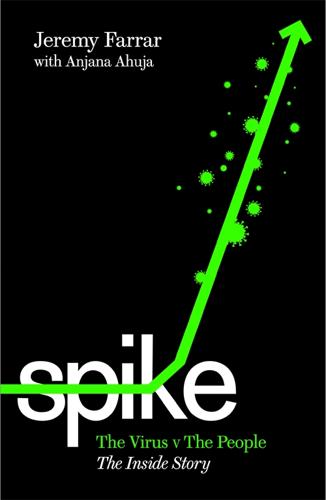
Spike: The Virus vs The People - The Inside Story
by
Jeremy Farrar
and
Anjana Ahuja
Published 15 Jan 2021
It examined the international health response and mused on the lessons to be learned to avoid such a crisis again. The resulting report, published in May 2021, contained immediate recommendations aimed at ending the Covid-19 pandemic: increasing vaccine supply, including the waiving of patent rights on vaccines if needed, plus the continued use of measures like isolation, quarantine and social distancing to curb transmission. As important are suggestions for how to make the WHO a stronger, more independent force for global health in the years to come. One idea is to introduce a single seven-year term for the WHO director general, rather than having shorter, renewable terms.
…
p. 214 ‘Everything starts with smarter surveillance.’ ‘Britain to Work with WHO on “Pandemic Radar” to Track Diseases’. Reuters, 20 May 2021. www.reuters.com/world/uk/britain-work-with-who-pandemic-radar-track-diseases-2021-05-20/ p. 216 UNAIDS, ‘COVID-19: Make it the Last Pandemic’, press statement, 12 May 2021. www.unaids.org/en/resources/presscentre/pressreleaseandstatementarchive/2021/may/20210512_independent-panel-pandemic-preparedness-response p. 221 ‘One of the most striking outcomes of the pandemic …’ Amy Maxmen and Jeff Tollefson, ‘Two Decades of Pandemic War Games Failed to Account for Donald Trump’. Nature, 4 August 2020. www.nature.com/articles/d41586-020-02277-6 Glossary ACT-Accelerator Access to Covid Tools-Accelerator asymptomatic A person is asymptomatic when they are infected with a disease, and can transmit it, but show no symptoms.
…
He has been an MP (2001–08, 2015–), Mayor of London (2008–16), and was prominent in the Vote Leave campaign that led to Brexit. He became prime minister in July 2019, so led the country throughout the Covid-19 pandemic. He was himself hospitalised with Covid-19 in April 2020. His handling of the pandemic, particularly the timing of key decisions, has been repeatedly challenged. Maria Van Kerkhove Leads the WHO’s Health Emergencies Programme and was in contact with Jeremy Farrar as news of human-to-human transmission of Covid-19 emerged. She has expressed surprise at the ‘idiosyncratic’ British approach to the pandemic and urges constant preparedness as part of the fabric of society. Marion Koopmans A virologist at Erasmus University in the Netherlands, Koopmans is a member of the Covid-19 Emergency Committee and has played a key role in researching the origins of the virus.
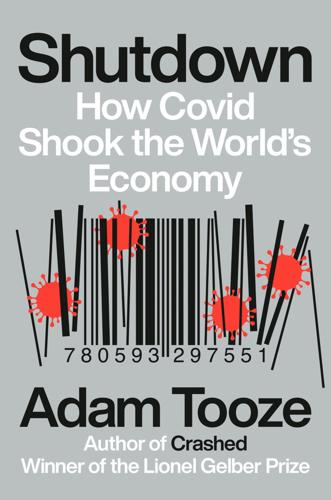
Shutdown: How COVID Shook the World's Economy
by
Adam Tooze
Published 15 Nov 2021
See also migration and mobility Regional Comprehensive Economic Partnership (RCEP), 207–8, 209, 296 remittances, 103, 161, 251 remote work, 98–99, 117 Renzi, Matteo, 284 repo market (repurchase market), 114–17, 121–22, 148, 165, 179 Republican Party, 20–21, 89, 219, 221–22, 225–27, 229, 269–70, 290, 299 Reserve Bank of Australia, 126 retail industry, 101 Rieder, Rick, 124 Rio de Janeiro, Brazil, 86–87 Romania, 104 Roosevelt, Franklin Delano, 20 Ross, Wilbur, 68 Rotary International, 32, 33 Russia: arms sales to Turkey, 267; and Chinese pandemic aid, 197; and development lending programs, 264; and early responses to pandemic, 11, 82–83; and emerging market debt crises, 159, 163, 165; financial crisis of 1998, 156; and lessons of 2020, 295; oil and gas resources, 18; and oil price war, 79–80; and vaccine development, 247–49; and WHO funding, 33 Ryan, Mike, 69 Sagasti, Francisco, 248 Salvini, Matteo, 285 Sanders, Bernie, 11, 21, 146, 201, 219, 224, 227, 270–71, 273, 284, 288, 291, 299 SARS-CoV-2 virus: characterization of, 4; “flattening the curve” efforts, 41–42, 75, 233, 250; historical perspective on, 27; infectivity of SARS-CoV-2, 51; mortality rates, 28, 36–37, 37–41, 169, 171; mutation/variants, 17, 44–46, 250, 266, 285; and second wave of pandemic, 223, 292; and social distancing measures, 10, 43–44, 45, 74–75, 80, 83–85, 89, 96, 107, 220, 233, 289 SARS epidemic (2003), 3–4, 34, 46, 52–53, 56, 62, 66–67, 238 Saudi Arabia, 33, 71, 79–80, 267, 295 Schäuble, Wolfgang, 134 Schnabel, Isabel, 180 Scholz, Olaf, 134, 185 Schumer, Chuck, 12, 272 Secondary Market Corporate Credit Facility (SMCCF), 127 semiconductor industry, 211–12 September 11, 2001, terrorist attacks, 46 Serum Institute, 237, 246, 251 service sector, 100–101 sex workers, 98 Shanghai, 57, 59–60, 274 Shanghai Accord, 291 Shanghai Stock Exchange, 55 Shingrix vaccine, 236 shipping industry, 106, 274 short-time working, 103–4, 137 Siberia, 189 Singapore, 206 Sino-American relations, 50 Sinopharm, 248 Sinovac, 248–49 smallpox, 30 Snyder, Timothy, 228 social contract, 11, 16, 131, 137, 141, 149–50 Social Democratic Party of Germany, 184–85 social distancing, 10, 43–45, 74–75, 80, 83–85, 89, 96, 107, 220, 233, 289 social safety net, 20, 135–36, 298 Solomon, David, 228 Songwe, Vera, 261, 262 Sonnefeld, Jeffrey, 228 South Africa: budget consolidation, 268; and debt relief programs, 251, 266; and early responses to pandemic, 88; and emerging market debt crises, 157–58, 166; and fiscal responses to pandemic, 132; and global vaccine rollout, 242, 243–44, 245; safari industry shutdown, 102; and scope of 2020 challenges, 12; and spread of pandemic, 233; and virus variants, 250 South African Reserve Bank, 266 South Asia, 103 South China Sea, 18, 206 South Korea: and China’s growing influence, 205; and climate agenda, 194; and early responses to pandemic, 66, 71, 73–74, 74–75, 78, 90; and emerging market debt crises, 165; and financial market turmoil, 125; and fiscal responses to pandemic, 133, 140; and global market stabilization efforts, 122; and global spread of Covid, 80; and history of epidemic diseases, 47; and testing technology, 74, 75; and Trump’s pandemic rhetoric, 77; and WHO funding, 33 Soviet Union, 30. See also Russia Spahn, Jens, 70, 72, 134 Spain: and development of European recovery fund, 186; and early responses to pandemic, 71, 85–86; and European sovereign debt crisis, 181, 182; and eurozone crisis legacy, 109; failures to suppress pandemic spread, 82; first Covid case, 69–70; and fiscal responses to pandemic, 133, 134, 137; and global response to pandemic spread, 96; and labor market challenges, 104 Spanish flu, 35, 37, 45 special drawing rights (SDRs), 162, 184, 253–54, 258, 260–62 Special European Council, 186 special lending facilities, 126, 127 Sputnik V vaccine, 247–49 Sri Lanka, 86, 102–3, 208–9, 256 Stalin, Joseph, 18 State Council (China), 50, 53, 57–58 State Planning Ministry, 59 Stern, Nicholas, 34 Strauss-Kahn, Dominique, 177–78 strikes, 85–86, 147 sub-Saharan Africa, 2, 28, 30–31, 155, 159, 161, 233, 236 subsidies, 140, 188 Summers, Larry, 143, 209, 272–73, 290 supply chain issues, 66, 86, 96–98, 244–45 sustainable development, 12.
…
Hanson, “The China Shock: Learning from Labor-Market Adjustment to Large Changes in Trade,” Annual Review of Economics 8, no. 1 (2016): 205–40. 19. ILO, “COVID-19 and the World of Work,” Fifth Edition, International Labour Organization, June 30, 2020. 20. V. Strauss, “1.5 Billion Children Around Globe Affected by School Closure. What Countries Are Doing to Keep Kids Learning During the Pandemic,” Washington Post, March 27, 2020. 21. “COVID-19 Could Lead to Permanent Loss in Learning and Trillions of Dollars in Lost Earnings,” World Bank, June 18, 2020. 22. H. Else, “How a Torrent of COVID Science Changed Research Publishing—in Seven Charts,” Nature, December 16, 2020; www.nature.com/articles/d41586-020-03564-y. 23.
…
Adam, “Special Report: The Simulations Driving the World’s Response to COVID-19,” Nature, April 2, 2020; www.nature.com/articles/d41586-020-01003-6. 33. D. Cutler and L. Summers, “The COVID-19 Pandemic and the $16 Trillion Virus,” JAMA 324, no. 15 (2020): 1495–96. 34. W. K. Viscusi and C. J. Masterman, “Income Elasticities and Global Values of a Statistical Life,” Journal of Benefit-Cost Analysis 8, no. 2 (2017): 226–50; law.vanderbilt.edu/phd/faculty/w-kip-viscusi/355_Income_Elasticities_and_Global_VSL.pdf. 35. L. A. Robinson, “COVID-19 and Uncertainties in the Value Per Statistical Life,” The Regulatory Review, August 5, 2020; www.theregreview.org/2020/08/05/robinson-covid-19-uncertainties-value-statistical-life/. 36.
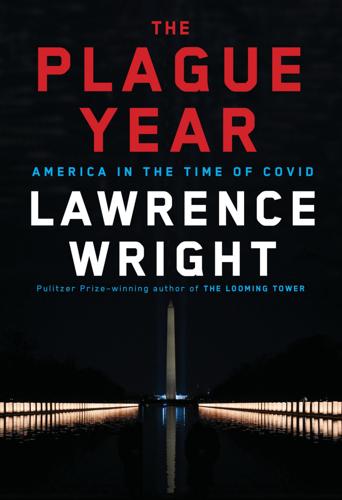
The Plague Year: America in the Time of Covid
by
Lawrence Wright
Published 7 Jun 2021
The college’s president, H. Neil Matkin, had made his views of the virus known in an email to trustees: “The effects of this pandemic have been blown utterly out of proportion across our nation.” Iris hoped to be in a large classroom where students could be widely spaced, but she was assigned to teach a lab for a nurse’s aide course. There would be no social distancing. On October 2, a student was coughing and sneezing, complaining of allergies. That was the day Trump announced that he had Covid. Iris was repulsed when the president insisted on taking a car ride to wave at his supporters outside the hospital, with Secret Service agents in the car with him.
…
THE SEARCH FOR PATIENT ZERO Patient Zero: Josephine Ma, “Coronavirus: China’s first confirmed Covid-19 case traced back to November 17,” South China Morning Post, March 13, 2020. “It now turns out”: Jonathan Latham and Allison Wilson: “A Proposed Origin for SARS-CoV-2 and the COVID-19 Pandemic,” jonathanlatham.net/, jamiemetzl.com/. “China created this pandemic”: Jake Tapper interview with Peter Navarro, CNN, June 21, 2020. “enormous evidence”: Jack Brewster, “Pompeo: ‘Enormous Evidence’ Linking Wuhan Lab To Covid Outbreak,” Forbes, May 4, 2020. “I lost the race”: Peter Navarro, San Diego Confidential: A Candidate’s Odyssey, San Diego: QT Press, 1998, pp. 231-7.
…
“Sometimes emotions”: Jeremy Page and Drew Hinshaw, “China Refuses to Give WHO Raw Data on Early Covid-19 Cases,” Wall Street Journal, Feb. 12, 2021. spreading in Wuhan in November: Betsy McKay, “Covid-19 Was Spreading in China Before First Confirmed Cases, Fresh Evidence Suggests,” Wall Street Journal, Feb. 19, 2021. can remain infectious: Dyani Lewis, “Can COVID spread from frozen wildlife? Scientists probe pandemic origins,” Nature, Feb. 26, 2021. packaging of frozen cod: Peipei Liu, et al., “Cold-chain transportation in the frozen food industry may have caused a recurrence of COVID-19 cases in destination: Successful isolation of SARS-CoV-2 virus from imported frozen cod package surface,” Biosafety and Health, Dec. 2020.
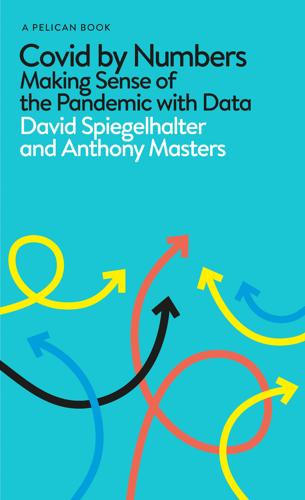
Covid by Numbers
by
David Spiegelhalter
and
Anthony Masters
Published 28 Oct 2021
These can seem obvious; just by examining the broad patterns of events in the UK, we can easily see that the lockdowns preceded a reduction in Covid-19 cases and deaths. But we cannot easily judge whether lighter responses would have sufficed and, since interventions tend to be introduced together, it is unclear how to disentangle the multiple effects of social distancing, home working, school closures and so on. Can we use statistics to estimate the effect of different interventions? Individual countries took different approaches to handling the pandemic, and so researchers treat those differences as a form of ‘natural experiment’ and try to work out the effects of various measures.
…
DAVID SPIEGELHALTER AND ANTHONY MASTERS Covid by Numbers Making Sense of the Pandemic with Data Contents ACKNOWLEDGEMENTS 1 Introduction THE VIRUS 2 How did the pandemic develop? 3 How infectious is SARS-CoV-2? 4 What is the risk from new variants? DIAGNOSIS AND CASES 5 How good are diagnostic tests? 6 How many cases have been found? 7 How many people have been infected with SARS-CoV-2? DISEASE AND ILLNESS 8 How ill do people get with Covid-19? 9 What happened in hospitals? 10 How good are the treatments for Covid-19? DEATH 11 How many people have died from Covid-19? 12 How lethal is SARS-CoV-2?
…
For Scotland (https://www.gov.scot/publications/coronavirus-covid-19-data-definitions-and-sources) and Northern Ireland (https://www.publichealth.hscni.net/publications/covid-19-surveillance-reports), the measure is identical: deaths within 28 days of a positive test for SARS-CoV-2. 6. https://publichealthmatters.blog.gov.uk/2021/02/08/counting-deaths-during-the-pandemic/ 7. https://www.gov.uk/government/publications/phe-data-series-on-deaths-in-people-with-covid-19-technical-summary 8. https://www.cebm.net/covid-19/why-no-one-can-ever-recover-from-covid-19-in-england-a-statistical-anomaly/ 9. https://www.theguardian.com/world/2020/jul/17/matt-hancock-calls-urgent-inquiry-phe-covid-19-death-figures 10. https://assets.publishing.service.gov.uk/government/uploads/system/uploads/attachment_data/file/916035/RA_Technical_Summary_-_PHE_Data_Series_COVID_19_Deaths_20200812.pdf 11. https://assets.publishing.service.gov.uk/government/uploads/system/uploads/attachment_data/file/877302/guidance-for-doctors-completing-medical-certificates-of-cause-of-death-covid-19.pdf 12. https://www.ons.gov.uk/peoplepopulationandcommunity/birthsdeathsandmarriages/deaths/bulletins/deathsinvolvingcovid19englandandwales/deathsoccurringinjune2020 13. https://www.ons.gov.uk/peoplepopulationandcommunity/birthsdeathsandmarriages/deaths/articles/analysisofdeathregistrationsnotinvolvingcoronaviruscovid19englandandwales28december2019to1may2020/technicalannex#possible-explanations-for-non-covid-19-excess-deaths 14. https://health.org.uk/news-and-comment/news/1.5-million-potential-years-of-life-lost-to-covid-19 15. https://www.nature.com/articles/s41598-021-83040-3 16. https://www.ons.gov.uk/peoplepopulationandcommunity/birthsdeathsandmarriages/deaths/datasets/weeklyprovisionalfiguresondeathsregisteredinenglandandwales 17. https://www.ons.gov.uk/peoplepopulationandcommunity/birthsdeathsandmarriages/deaths/bulletins/deathsregisteredweeklyinenglandandwalesprovisional/weekending14may2021 18. https://www.ons.gov.uk/peoplepopulationandcommunity/birthsdeathsandmarriages/deaths/bulletins/deathsinvolvingcovid19englandandwales/deathsoccurringinjune2020 19. https://www.ons.gov.uk/peoplepopulationandcommunity/birthsdeathsandmarriages/deaths/articles/deathsathomeincreasedbyathirdin2020whiledeathsinhospitalsfellexceptforcovid19/2021-05-07 CHAPTER 12: HOW LETHAL IS SARS-COV-2?
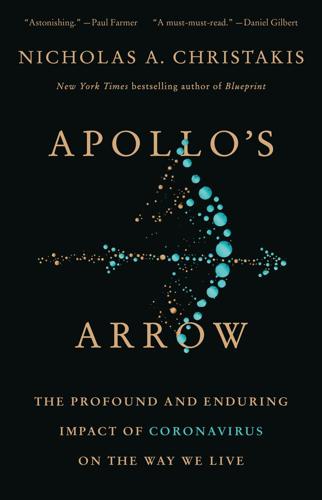
Apollo's Arrow: The Profound and Enduring Impact of Coronavirus on the Way We Live
by
Nicholas A. Christakis
Published 27 Oct 2020
Van Lancker and Z. Parolin, “COVID-19, School Closures, and Child Poverty: A Social Crisis in the Making,” Lancet Public Health 2020; 5: e243–e244; J. Bayham and E.P. Fenichel, “Impact of School Closures for COVID-19 on the US Health-Care Workforce and Net Mortality: A Modelling Study,” Lancet Public Health 2020; 5: e271–e278. 68 S.B. Nafisah et al., “School Closure during Novel Influenza: A Systematic Review,” Journal of Infection and Public Health 2018; 11: 657–661; H. Rashid et al., “Evidence Compendium and Advice on Social Distancing and Other Related Measures for Response to an Influenza Pandemic,” Paediatric Respiratory Reviews 2015; 16: 119–126; R.M.
…
The ability to understand a contagious and deadly disease builds directly on my years of teaching about public health, implementing global health interventions, serving as a hospice physician caring for the dying and bereaved, analyzing contagions using network science, and working as an academic sociologist studying social phenomena. The COVID-19 pandemic is still a moving target, however. As of this moment, there is much that is unknown—biologically, clinically, epidemiologically, socially, economically, and politically. In part, the reason is that our actions are changing the outcome of the story. It’s hard to know for sure what will happen. And there is much that only the passage of time will reveal, including the long-term health effects of the infection and the long-term consequences of our response to the contagion (such as how our physical and social distancing might affect the mental health and education of our children and the economic prospects of a generation of young people presently entering adulthood).
…
I used estimates of these parameters that had emerged from China in February, and it seemed to me that SARS-2 had intermediate lethality and intermediate transmissibility, making it at least as bad as the influenza pandemic of 1957. Ultimately, 115,700 excess deaths occurred in the United States over three years due to the 1957 pandemic (that year, the population size of the country was 172 million, and cancer killed 255,000 people).59 This would be equivalent to roughly 300,000 Americans dying from COVID-19 by the end of the pandemic, a figure we are sure to surpass despite our extensive shutdowns. To be clear, the influenza virus that caused the 1957 pandemic is totally different from the coronavirus that causes COVID-19. Both are riboviruses, meaning that they use RNA rather than DNA for their genetic code, but that is a very broad classification; it’s sort of like saying that dolphins and elephants are both mammals.
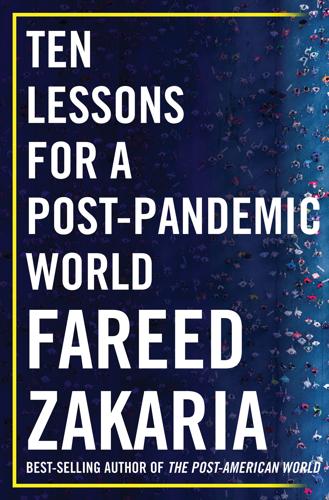
Ten Lessons for a Post-Pandemic World
by
Fareed Zakaria
Published 5 Oct 2020
Pepinsky, “Partisanship, Health Behavior, and Policy Attitudes in the Early Stages of the COVID-19 Pandemic,” SSRN, March 30, 2020, https://ssrn.com/abstract=3562796. (Note: This study, and those by Painter and Qiu and Allcott et al. below, has not been peer-reviewed.) 86 less likely to shelter in place: Marcus Painter and Tian Qiu, “Political Beliefs Affect Compliance with COVID-19 Social Distancing Orders,” SSRN, July 3, 2020, https://ssrn.com/abstract=3569098; Hunt Allcott, Levi Boxell, Jacob Conway, Matthew Gentzkow, Michael Thaler, and David Y. Yang, “Polarization and Public Health: Partisan Differences in Social Distancing During the Coronavirus Pandemic,” SSRN, June 2020, https://ssrn.com/abstract=3574415. 86 thirty incidents of arson or vandalism: Adam Satariano and Davey Alba, “Burning Cell Towers, out of Baseless Fear They Spread the Virus,” New York Times, April 10, 2020. 86 “motivated reasoning”: Jonathan Haidt, The Righteous Mind: Why Good People Are Divided by Politics and Religion (New York: Vintage Books, 2013), 98, 104. 87 “high-information voters”: Ezra Klein, “Why the Most Informed Voters Are Often the Most Badly Misled,” Vox, June 8, 2015. 87 “rationalizing voters”: Christopher H.
…
In Brazil, this attitude was encouraged by the country’s president, Jair Bolsonaro, who dismissed Covid-19 as a “measly cold” and railed against medical experts’ advice on how to slow the pandemic. He fired one health minister and caused his replacement to resign. Despite government regulations, he refused to wear a mask, leading a Brazilian judge to order him to wear one. Bolsonaro ended up a victim of his own careless attitude: he announced in July 2020 that he had tested positive for the coronavirus. Boris Johnson conspicuously did not socially distance in the early stages of the outbreak, and ended up in the ICU with Covid-19. In Mexico, President Andrés Manuel López Obrador encouraged people to go out, attend rallies, shake hands, and hug—all in direct contradiction of his own public health officials.
…
This book is about a “post-pandemic world” not because the coronavirus is behind us, but because we have crossed a crucial threshold. Almost everyone alive had been spared from experiencing a plague, so far. But now we know what a pandemic looks like. We have seen the challenges and costs of responding to it. The Covid-19 pandemic could persist, but even if it is eradicated, new outbreaks of other diseases are almost certain to occur in the future. With this knowledge and experience, we now live in a new era: post-pandemic. What exactly are the consequences of this pandemic? Some have suggested that it will prove to be the hinge event of modern history, a moment that forever alters its course.
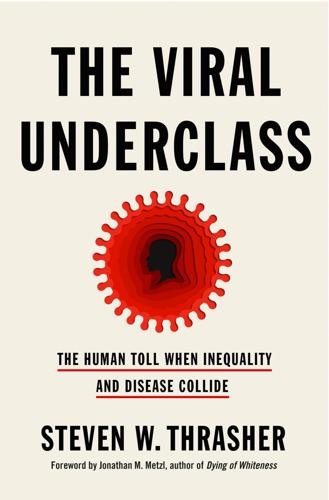
The Viral Underclass: The Human Toll When Inequality and Disease Collide
by
Steven W. Thrasher
Published 1 Aug 2022
only three years’ imprisonment: “South Korea,” HIV Justice Network, updated March, 2020, https://www.hivjustice.net/country/kr/. 4: Guilty Until Proven Innocent Long before viral videos: Tim Stelloh, “Video Shows NYPD Officer Punching Man After Alleged Social Distancing Violation,” NBC News, May 3, 2020, https://www.nbcnews.com/news/us-news/video-shows-nypd-officer-punching-man-after-alleged-social-distancing-n1199141. the COVID-19 pandemic: Ashley Southall, “Scrutiny of Social-Distance Policing as 35 of 40 Arrested Are Black,” New York Times, May 7, 2020, https://www.nytimes.com/2020/05/07/nyregion/nypd-social-distancing-race-coronavirus.html. “the plague and Spanish flu”: Trevor Hoppe, Punishing Disease: HIV and the Criminalization of Sickness (Minneapolis: University of Minnesota Press, 2017), 10.
…
Black people and immigrants already had an increased likelihood of living in denser households, which limited their ability to practice social distancing; when they were incarcerated, social distancing was impossible. And when they were evicted, they often wound up in even more densely packed, intergenerational households, which put them even more acutely at risk for COVID-19. At the same time, people who were elderly, disabled, or experiencing homelessness often lacked the prophylactic possibilities of literacy and computer literacy. And yet, even as the pandemic unduly slaughtered people like them, U.S. governmental agencies often required them to use internet sign-ups, QR codes, or even two-factor cell phone authentication to access the prophylactic possibility of vaccination.
…
Under Missouri law, people living with HIV are required to tell all their sexual partners that they are infected, even if they practice safe sex. Long before viral videos of NYPD arrests five years later, when almost exclusively Black and brown people were violently beaten by police for failing to practice social distancing or wear masks in the early days of the COVID-19 pandemic, State of Missouri v. Michael L. Johnson was the highest-profile pathogen-related prosecution in the United States. Johnson was accused not merely of keeping his HIV status to himself but of willfully lying to his partners, telling them he was HIV-negative before engaging in what the prosecutor would call the most “dangerous” form of sex possible.
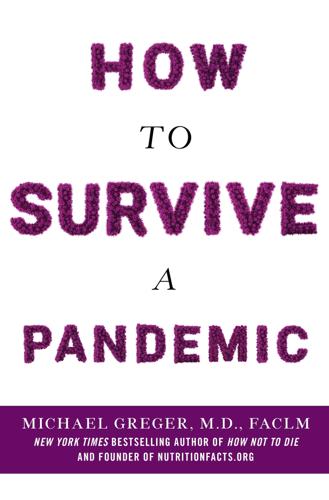
How to Survive a Pandemic
by
Michael Greger, M.D., FACLM
—Sebastian Junger, The Perfect Storm: A True Story of Men Against the Sea Millions around the world may die in the COVID-19 pandemic.137 In the United States, a “best guess” estimate presented to the American Hospital Association was about a half a million American deaths.138 With sufficient social distancing, however, that may be reduced to under a hundred thousand.139 Even at half a million, it still, unbelievably, could be much, much worse. With thousands already dead, millions projected to perish, billions in lockdown, and trillions lost as markets tumble, COVID-19 is still only shaping up to be a Category 2 or 3 pandemic. Figure 1. Pandemic Severity Index (Courtesy of the Centers for Disease Control and Prevention,140 reformatted for print by Dustin Kirkpatrick) Fashioned after the Hurricane Severity Index to define the destructive capacity of a storm, the Pandemic Severity Index (figure 1) is the CDC’s attempt at classifying the destructive capacity of pandemics.141 It is based on case fatality rate, the percentage of those who fall ill who eventually succumb to the infection.
…
Though the COVID-19 viral mutations to date don’t yet offer insight into the direction of its evolution,2952 we cannot rule out the possibility that the virus could transform in the near future to becoming even more transmissible or dangerous.2953 V SURVIVING THE NEXT PANDEMIC OUR HEALTH IN OUR HANDS Coming Soon to a Theater Near You Regarding future pandemics, one authority was quoted as saying, “Short of obtaining [antiviral] drugs, there’s not really much we can do to prepare.”2954 That’s hardly true. We know from the COVID-19 pandemic we can still practice defensive strategies, such as social distancing, respiratory etiquette, and other hygiene measures like hand sanitization. No one just comes down with the flu. You catch the virus from someone else or, more precisely, someone else’s virus catches you.
…
WHEN ANIMAL VIRUSES ATTACK The Third Age Man-Made Livestock Revolution Tracing the Flight Path One Flu Over the Chicken’s Nest Coming Home to Roost Guarding the Henhouse III. PANDEMIC PREPAREDNESS Cooping Up Bird Flu Race Against Time Lessons Unlearned IV. SURVIVING THE COVID-19 PANDEMIC Pumping the Brakes Treating and Avoiding COVID-19 How COVID-19 Ends V. SURVIVING THE NEXT PANDEMIC Our Health in Our Hands Be Prepared Pandemic Flu Planning Checklist VI. PREVENTING FUTURE PANDEMICS Tinderbox Reining in the Pale Horse AFTERWORD ACKNOWLEDGMENTS REFERENCES ALSO BY MICHAEL GREGER, M.D., FACLM ABOUT THE AUTHOR COPYRIGHT The author and publisher have provided this e-book to you for your personal use only.
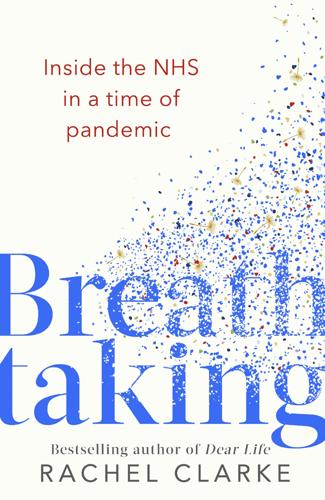
Breathtaking: Inside the NHS in a Time of Pandemic
by
Rachel Clarke
Published 26 Jan 2021
For weeks we haven’t seen a single new patient in the hospital with Covid. The daily death tolls are now in single figures. We know though, from the Office for National Statistics, that the total number of excess deaths in the UK during the pandemic, whether from Covid or other causes, stands at 65,000. England has the worst excess death toll of any country in Europe. More people have died of the virus than lost their lives during the whole of the Blitz. Rates of mental illness have soared, the economy has tanked, and over 600 health and care workers have died, some of whom openly begged for proper PPE before Covid cost them their lives. There is, it is fair to say, much to feel angry about.
…
Stafford, M., et al., ‘Inequalities and deaths involving COVID-19: What the links between inequalities tell us’, Health Foundation, 21 May 2020. ‘Disparities in the risk and outcomes of COVID-19’, Public Health England, Aug 2020. de Prudhoe, K., ‘My dad died alone because we played by the rules. Why is it different for Dominic Cummings?’, Huffington Post, 26 May 2020. Ellery, B., et al., ‘Loyalty to Dominic Cummings will cost lives, says scientist’, The Times, 25 May 2020. Fancourt, D., et al., ‘The Cummings effect: politics, trust, and behaviours during the COVID-19 pandemic’, Lancet, 6 August 2020. Canale, D.
…
Nor do we equally suffer the burdens and privations of the pandemic. Now that those workers once dismissed as ‘low-skilled’ have been rebranded as ‘key workers’, for example, they are rightly being lauded as essential lynchpins of British society. But will this new status result in commensurate pay rises, better terms and conditions of work, or even – most pressingly – in adequate PPE? For security guards, shelf stackers, cleaners and carers, viral loads of Covid are a daily reality. Some of us, statistically, are more likely to come out of this worse than others. Far from uniting the UK’s deep-seated economic and social divisions, the pandemic is serving to exacerbate them.
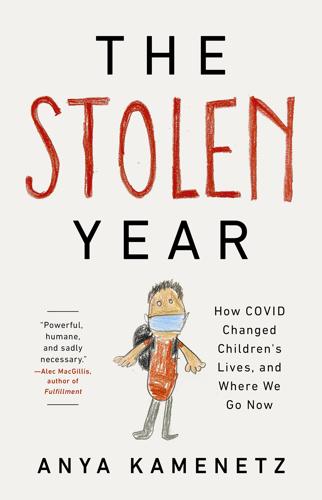
The Stolen Year
by
Anya Kamenetz
Published 23 Aug 2022
Young people with LGBTQ identities are by some estimates more than twice as likely to be on the streets, in shelters, or couch surfing. The pandemic was a crisis for these young people several times over. They lost the support of school and community groups. Social distancing requirements and staff limitations meant fewer beds. Many cities, including New York, took steps to house more homeless people during COVID in hotels and similar places. But for teenagers there was more red tape. They had to go through a lengthy referral process. “So think of a kid who’s homeless that is scared and sick in the middle of a pandemic, sitting in an office somewhere, sometimes for up to two days, isolated by themselves until they get picked up to be brought to a hotel,” Jamie Powlovich, director of the Empire State Coalition of Youth and Family Services, told me.
…
Even accounting for the trauma of these children’s life experiences, the dramatic overreliance on medication rather other forms of treatment has led to calls for reform. PROVIDERS WERE ALREADY AT CAPACITY During the pandemic, children had less access to mental health care than ever. They weren’t going to the doctor. They weren’t going to school. Psychiatric beds were sometimes repurposed for COVID patients, or capacity was restricted because of social distancing. Nick Chandler at Buena Vista Horace Mann says that a six-month wait list was par for the course, especially for clinicians who spoke Spanish. He says that families like Serena’s, who are stressed about basic needs like food and shelter, almost invariably have mental health needs as well.
…
And the new generation of freedom schools that rose up when the schoolhouse door was closed. THE RACIAL TOLL OF COVID For people of color in America, COVID-19 was a second pandemic on top of the preexisting pandemic of racism. Asian Americans experienced a wave of hate crimes. President Trump repeatedly and publicly used language like “Chinese virus” and “kung flu” to describe the pandemic. Latinx, Native American, and Black people were at greater risk than white or Asian Americans of being severely sickened and killed by COVID. They often died at far younger ages. This meant they more often left young children behind.
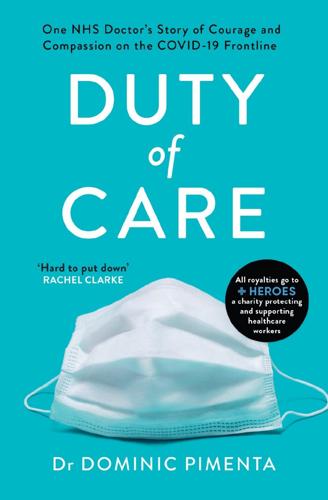
Duty of Care: One NHS Doctor's Story of the Covid-19 Crisis
by
Dr Dominic Pimenta
Published 2 Sep 2020
This dark red wall of anger and frustration is penetrated by small glimmers of light: already a group of medical students is offering to provide key workers with childcare; a PDF file providing COVID management tips is jumping from group to group; and daily briefings are being set up at some hospitals to help keep staff up to date and informed. Some places seem to be ahead of the curve, arranging video teleconferences, closing clinics and practising social distancing. Other hospitals appear to be way behind, cramming all their staff into a single lecture theatre (where social distancing just isn’t possible) to make announcements, keeping clinics open, and even castigating staff for sending too many swabs to be tested for COVID, as they try not to be identified as a hospital with a high number of infections. My phone feels hot, crackling with the energy of a thousand frustrated voices.
…
Out of the 138 patients admitted to Zhongnan Hospital in Wuhan, China, 4.3 per cent died. Shortly afterward, on 11 February, the World Health Organization (WHO) announced “COVID-19” as the name of the new disease. COVID-19 got its slightly robotic name to avoid the stigma surrounding some of its epidemic predecessors: Middle East Respiratory Virus, German Measles (not Measles), and Spanish Flu (not Spanish) – the latter being the last comparable pandemic, that of 1918, which I’d mentioned in my email to my dad. It occurred over 100 years ago and resulted in the deaths of an estimated 3 per cent of the world’s population.
…
My ears would prick up when I heard any mention of COVID-19. On my commutes and breaks I continued to hoover up studies and news. Twitter became a valuable resource of other doctors and experts sharing and debating the research. Among the obligatory memes and outrage, Twitter emerged as the world’s largest medical forum. The topic: SARS-CoV-2 (the virus), or COVID-19 (the disease). Through all these sources, the numbers I’d only just started to pay attention to painted a bleak picture. A picture I’d seen before. A few years ago, a web developer worked with a group of virologists and epidemiologists to create a pandemic simulator. The mobile game was called Plague Inc. and the premise is relatively simple: with limited resources you craft an infection of various qualities (air spread, water spread, etc.) and choose where in the world to start it off.
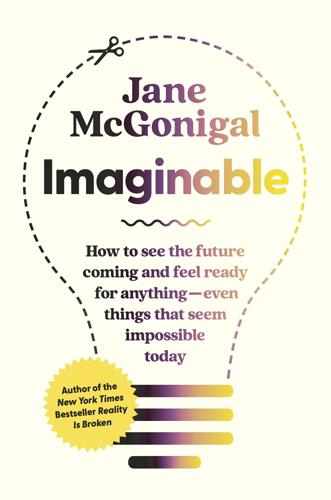
Imaginable: How to See the Future Coming and Feel Ready for Anything―Even Things That Seem Impossible Today
by
Jane McGonigal
Published 22 Mar 2022
Shamay-Tsoory, Judith Aharon-Peretz, and Daniella Perry, “Two Systems for Empathy: A Double Dissociation between Emotional and Cognitive Empathy in Inferior Frontal Gyrus versus Ventromedial Prefrontal Lesions,” Brain 132, no. 3 (March 2009): 617–27, https://doi.org/10.1093/brain/awn279. 6 Andrew Reiljan, “ ‘Fear and Loathing across Party Lines’ (Also) in Europe: Affective Polarisation in European Party Systems,” European Journal of Political Research 59, no. 2 (May 2020): 376–96, https://doi.org/10.1111/1475-6765.12351; Shanto Iyengar et al., “The Origins and Consequences of Affective Polarization in the United States,” Annual Review of Political Science 22 (2019): 129–46, https://doi.org/10.1146/annurev-polisci-051117-073034; Shanto Iyengar, Gaurav Sood, and Yphtach Lelkes, “Affect, Not Ideology: A Social Identity Perspective on Polarization,” Public Opinion Quarterly 76, no. 3 (September 2012): 405–31, https://doi.org/10.1093/poq/nfs038. 7 Levi Boxell et al., “Affective Polarization Did Not Increase during the Coronavirus Pandemic,” working paper no. 28036 (October 2020), National Bureau of Economic Research, https://doi.org/10.3386/w28036. 8 Sebastian Jungkunz, “Political Polarization During the COVID-19 Pandemic,” Frontiers in Political Science 3 (March 2021): 622512, https://doi.org/10.3389/fpos.2021.622512; Hunt Allcott et al., “Polarization and Public Health: Partisan Differences in Social Distancing During the Coronavirus Pandemic,” Journal of Public Economics 191 (November 2020): 104254, https://doi.org/10.1016/j.jpubeco.2020.104254; Christos Makridis and Jonathan T.
…
The simulation participants’ early 2020 messages remind me now of what we would later see play out during the COVID-19 pandemic in Hong Kong, Taiwan, and Singapore. Experts have noted that in places that suffered major outbreaks of the first severe acute respiratory syndrome (SARS) in 2003, governments and businesses spent less time debating whether to take strong measures to prevent the spread of the novel virus. They acted faster, because they knew firsthand how bad things could get. And citizens in countries that had lived through the deadly 2003 SARS outbreak adopted public health measures like masking and social distancing faster, and more willingly, than their Western counterparts.5 All of this led to significantly more containment of the virus.
…
And we are increasingly angry, fearful, or mistrustful of people outside our inner circle.6 At first, the COVID-19 pandemic appeared to decrease this social polarization. People from all walks of life banded together over shared worries and sacrifice.7 But as it wore on, studies show, partisan responses to mask wearing, stay-at-home orders, and vaccination actually increased social polarization. It created new categories of “us” versus “them”: maskers versus non-maskers, social distancers versus non-distancers, pro-vaccine versus anti-vaccine.8 Meanwhile, richer countries with successful vaccination campaigns found themselves living in a completely different reality from poorer countries without access to the vaccines or with struggling vaccination campaigns.
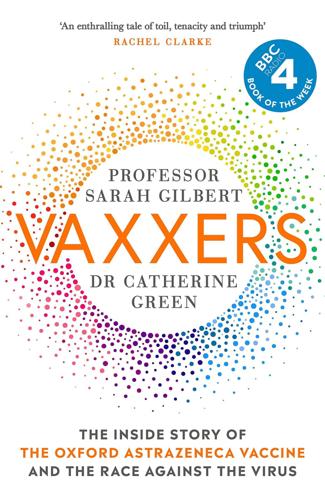
Vaxxers: The Inside Story of the Oxford AstraZeneca Vaccine and the Race Against the Virus
by
Sarah Gilbert
and
Catherine Green
Published 7 Jul 2021
It could be a completely unknown and unstudied virus: there are an estimated 1.67 million viruses circulating in the world, and it is thought that several hundred thousand of them are capable of infecting people. Scientists have studied 263 of these: about 0.04% of pandemic threats.2 Equally, there is a long list of nasty pathogens that we do already know about, and that we still have no vaccines or treatments for. One of those could cause the next pandemic. In 2020, with all eyes on the Covid pandemic, other known viruses were still circulating and spilling over into humans. In 2020 there were more than a hundred outbreaks of avian flu in birds and, in China and Laos, nine cases of human infection.
…
The Times: ‘This is a remarkable achievement for British science and offers hope to the world of an end to the pandemic’, https://www.thetimes.co.uk/article/the-times-view-on-the-success-of-the-oxford-vaccine-great-british-breakthrough-ljwltmtbc. Guardian: ‘Vaccine results brings us a step closer to ending Covid’, https://www.theguardian.com/world/2020/nov/23/vaccine-brings-us-a-step-closer-to-ending-covid-says-oxford-scientist. Financial Times: ‘Vaccine cements Oxford place as leader in battle against Covid’, https://www.ft.com/content/f147199b-11e6-444b-9514-94352bded128. Daily Express: ‘Jubilation at Oxford vaccine breakthrough’, https://www.pressreader.com/uk/daily-express/20201124/281496458834440.
…
Having been through that process with the flu vaccine, later trials of ChAdOx1 did not need to start from such a low dose, and for the MERS vaccine trial in 2018 three different doses had been tested, omitting the very low one used in the influenza vaccine trial. For our Covid vaccine, ChAdOx1 nCoV-19, having tested multiple ChAdOx1 vaccines previously, and knowing that we needed rapid onset of an immune response in a pandemic, only the highest dose was tested. We also knew that, in order to assess the vaccine’s ability to protect people from disease, we would have to wait for our volunteers to catch Covid-19 in the course of their normal lives. With some diseases, such as malaria or influenza, we can conduct what we call challenge trials, in which volunteers are intentionally exposed to the pathogen.

The Premonition: A Pandemic Story
by
Michael Lewis
Published 3 May 2021
The graph illustrated the effects on a disease of various crude strategies: isolating the ill; quarantining entire households when they had a sick person in them; socially distancing adults; giving people antiviral drugs; and so on. Each of the crude strategies had some slight effect, but none by itself made much of a dent, and certainly none had the ability to halt the pandemic by driving the disease’s reproductive rate below 1. One intervention was not like the others, however: when you closed schools and put social distance between kids, the flu-like disease fell off a cliff. (The model defined “social distance” not as zero contact but as a 60 percent reduction in kids’ social interaction.)
…
Carter sat at a desk and, consulting with Richard over the phone, wrote the CDC’s new policy, which called for social distancing in the event of any pandemic. The nature of the interventions would depend on the severity of the disease, of course. The CDC recommended that schools close, for instance, only when some new communicable disease was projected to kill more than 450,000 Americans. But school closure and social distancing of kids and bans on mass gatherings and other interventions would be central to the future pandemic strategy of the United States—and not just the United States. “The CDC was the world’s leading health agency,” said Lisa.
…
In February 2021, The Lancet published a long critique of the U.S. pandemic performance. By then 450,000 Americans had died. The Lancet pointed out that if the COVID death rate in the United States had simply tracked the average of the other six G7 nations, 180,000 of those people would still be alive. “Missing Americans,” they called them. But why stop there? Before the pandemic, a panel of public-health experts had judged the United States to be more prepared for a pandemic than other G7 nations. In a war with a virus, we were not expected merely to fare as well as other rich countries. We were expected to win. I like to think that my job is mainly to find the story in the material.
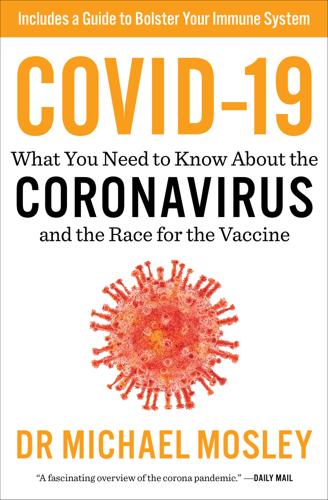
COVID-19: Everything You Need to Know About the Corona Virus and the Race for the Vaccine
by
Michael Mosley
Published 1 Jun 2020
Day 64 By March 3rd hundreds of Italians had died from Covid-19 and Italian hospitals were beginning to buckle under the pressure of so many sick and elderly patients. In the UK the British prime minister, Boris Johnson, had clearly not yet fully bought into the idea of social distancing. He said, at a press conference, “I was at a hospital the other night where I think there were a few coronavirus patients and I shook hands with everybody.” Day 72 On March 11th the WHO acknowledged that the virus was spreading uncontrollably and that the world was in the grip of a serious pandemic. Despite this, the organizers of the Cheltenham festival decided it was a good idea to allow 250,000 people from all over the UK and Ireland to cram together at the races for four days, many of them packed cheek by jowl in the crowded terraces and bars.
…
Since then scientists have identified four types of coronaviruses that can cause a mild cold, and three types that are deadly—those that cause SARS and MERS, and now Covid-19. How Is This New Virus Different from the Coronaviruses That Cause SARS or MERS? One of the key differences is that when you get infected with Covid-19 you can soon be shedding lots of viruses without knowing you are infected. Viral shedding seems to occur early on in an infection (typically two to three days after getting infected), and most people (roughly 80 percent) get such mild symptoms that they ignore it. At least 40 percent of people who get Covid-19 have no symptoms at all. That is what allowed Covid-19 to spread so far and so fast. Early on in the pandemic there were a lot of people getting on planes and going out to work blissfully unaware that they were infected.
…
Australia and New Zealand got on top of the virus by closing their borders, imposing social distancing, and doing widespread testing. China imposed strict travel limitations and required people to wear masks at all times outdoors. They also imposed a regime of temperature checking at the doors of office buildings, stores, restaurants, hotels, apartments, and public transit stations. Will the Virus Come Back Once the Number of New Cases Drops Off? It is likely that most countries will see new outbreaks once social distancing is lifted. The 1918 pandemic flu circled the world in three waves, with the second wave being an even bigger killer than the first.

Risk: A User's Guide
by
Stanley McChrystal
and
Anna Butrico
Published 4 Oct 2021
no travel history to an outbreak area: Schumaker, “How Coronavirus Got Started”; Erin Schumaker, Morgan Winsor, and Ivan Pereira, “Latest American Infected with Coronavirus Has No Relevant Travel History: CDC,” ABC News, February 26, 2020, https://abcnews.go.com/International/us-military-coronavirus-patient-cases-surge-italy-south/story?id=69225004. reports its first COVID-19 death: Taylor, “Timeline of the Coronavirus Pandemic.” died from it earlier: Stephanie Soucheray, “Coroner: First US COVID-19 Death Occurred in Early February,” Center for Infectious Disease Research and Policy, April 22, 2020, https://cidrap.umn.edu/news-perspective/2020/04/coroner-first-us-covid-19-death-occurred-early-february. declares COVID-19 a “pandemic”: Chappell, “Coronavirus: COVID-19 Is Now Officially a Pandemic, WHO Says.” Thirty-eight Americans have died: “March 11 Coronavirus News,” CNN, March 12, 2020, https://cnn.com/world/live-news/coronavirus-outbreak-03-11-20-intl-hnk/index.html.
…
We cannot get so distracted while expanding our use of technology that we fully remove humans from all parts of the process. We must not entirely cede control to technology. WFH As a response to the COVID-19 outbreak, many companies in early 2020 sent their employees to work from home. While these efforts were an act of solidarity with social distancing initiatives to slow the pandemic, they were also an acceleration of a trend underway for more than a decade. The changes to day-to-day work life were immediate and momentous. Workers often found themselves transported from a popular office open floor plan to makeshift offices in their kitchens and living rooms.
…
On March 11, the WHO: Bill Chappell, “Coronavirus: COVID-19 Is Now Officially a Pandemic, WHO Says,” National Public Radio, March 11, 2020, https://npr.org/sections/goatsandsoda/2020/03/11/814474930/coronavirus-covid-19-is-now-officially-a-pandemic-who-says. reported global infections passed two hundred thousand: Jeannette Jiang, Emily Peterson, and Robert Heimer, “COVID-19 Updated Data & Developments—March 18, 2020,” Yale School of Medicine, March 18, 2020, https://medicine.yale.edu/news-article/23224/, citing https://coronavirus.jhu.edu/map.html. borne witness to countless pandemics: Bollyky and Patrick, “Improving Pandemic Preparedness,” 22.
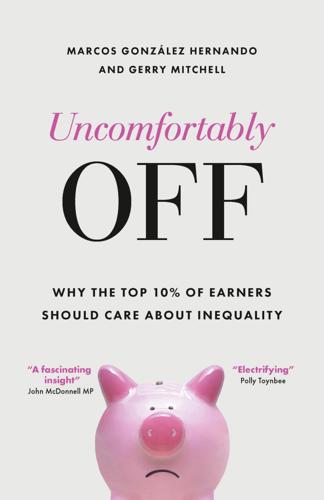
Uncomfortably Off: Why the Top 10% of Earners Should Care About Inequality
by
Marcos González Hernando
and
Gerry Mitchell
Published 23 May 2023
High earners also tend to live either in high-income areas or at a ‘social distance’ from less-affluent communities near them. Although confident about their occupational status, many didn’t feel they made a wider contribution to society and felt disempowered by corporate structures. We believe there is a need for this group to tear down some of these barriers and strengthen their connection with their communities. While relatively protected, the pandemic has shown all of us – including the top 10% – that we depend on each other, especially on many of those we pay the least. COVID-19 will have also altered their work-life balance and led to more time spent locally.
…
International onlookers, such as The New York Times, wrote about the corrosive impact of Brexit on British politics and ‘the readiness of the political right in particular to lie and peddle obvious untruths, to place their party politics and party unity over and above the national interest’.6 102 Business class tickets for a sinking ship COVID-19 The UK has one of the worst Covid records in the world. The country was ill-prepared for the pandemic after more than a decade of disinvestment and privatisation of public infrastructure. Adult social care was particularly vulnerable. Despite being warned, the government downplayed the importance of care provision at the beginning of the pandemic, neglecting to supply it with further funding. The first confirmed COVID-19 cases in the UK were on 31 January 2020.7 On 25 February, Public Health England issued guidance for social care settings, advising that ‘it is […] very unlikely that anyone receiving care in a care home or the community will become infected’ and ‘there is no need to do anything differently in any care setting at present’.8 From an initial £5 billion emergency response fund, £1.6 billion was allocated to local authorities, but they were not legally required to spend that money on social care, and it was therefore not always received by the sector.
…
On 27 April 2022, the High Court ruled that the government had been reckless in moving Covid-positive patients back into nursing homes from hospitals and that this led to thousands of unnecessary deaths.10 At the same time, government spending elsewhere, such as the £37 billion pound test-and-trace scheme – which according to the Public Accounts Committee, achieved none of its aims and failed to make ‘a measurable difference to the progress of the pandemic’11 – amounted to double the central government cuts to local authorities over the last 10 years.12 Meanwhile, the pandemic highlighted the poor pay and working conditions of many essential workers in society. A third of care workers, for example, are paid less than the real Living Wage.13 103 Uncomfortably Off Covid may also have been the first time many high earners experienced being direct recipients of state cash transfers through the furlough scheme and business loans. In 2020, COVID-19 benefit claimants were much more likely to be highly educated and younger than before.14 At the same time, high earners were also insulated from the worst effects of the crisis, as a higher income was strongly correlated with the capacity of a job to be carried out from home and with savings on non-essential goods and services such as eating out and leisure travel.15 Apart from a reminder of the importance of key workers and public healthcare provision, this relative insulation from the most severe economic effects of COVID-19 may well contribute to a forgiving attitude towards the government’s management of the pandemic, as well as relative ignorance of its broader social consequences.
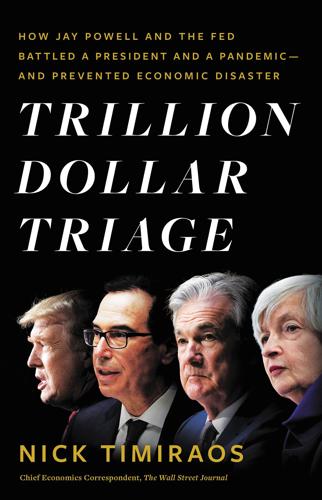
Trillion Dollar Triage: How Jay Powell and the Fed Battled a President and a Pandemic---And Prevented Economic Disaster
by
Nick Timiraos
Published 1 Mar 2022
Thousands of National Guard troops poured into Washington for Biden’s swearing-in on January 20, the largest military presence in the city since the Civil War.8 The National Mall, a two-mile expanse from the Lincoln Memorial to the US Capitol, was closed to the public for the socially distanced ceremony. Yellen sat under a blue blanket wearing a white disposable mask, and Powell accompanied his wife, both in cloth masks, to the inauguration behind fences ringed with razor wire on the West Front of the Capitol grounds. It was a stark visual symbol of both the pandemic and the riot. After taking the oath of office, the new president asked the country to join him in a silent prayer to remember those who died. “We will press forward with speed and urgency,” Biden promised, “for we have much to do in this winter of peril and possibility.” Date 2021 Covid-19 Cases Covid-19 Deaths Dow Jones Average VIX Fear Index Wednesday, January 20 24,251,909 396,387 31,188 (↑ 258) 21.58 (↓1.66) Chapter Seventeen THE INFLATION SURPRISE In 2018, a few weeks after Powell succeeded Yellen as Fed chair, he had hosted a farewell dinner for her at his home.
…
By December, the Fed’s easy-money policies were strongly supporting sectors unhampered by the pandemic. Interest-rate-sensitive goods such as homes and cars were booming. After the pandemic had struck in early April 2020, national real-estate brokerage Redfin had furloughed one-third of its staff and laid off another 7 percent. But by July, the company was hiring. Automated real-estate appraisals and online-video home tours had enabled more transactions to occur, even with social-distancing measures in place. Home-buying demand quickly returned to pre-pandemic levels, fueled by work-from-home policies, the desire for more space, and falling mortgage rates.
…
Just as markets were rallying, Trump held a Rose Garden press conference in which he officially declared the pandemic a national emergency: “Two very big words.” He announced plans to surge the production of testing kits, and he tried to project calm. “We’ll remove or eliminate every obstacle necessary to deliver our people the care that they need and that they’re entitled to. No resource will be spared,” he said. Mnuchin announced he had reached a deal with Democrats that evening, the product of eighteen phone calls that day with Pelosi. The House bill sailed through on a 363-40 vote shortly after midnight. Date 2020 Covid-19 Cases Covid-19 Deaths Dow Jones Average VIX Fear Index Friday, March 13 3,450 57 23,185 (↑ 1,985) 57.83 (↓ 17.64) The right to remove Even though stock markets reversed most of Thursday’s fall, bond markets were still badly messed up.
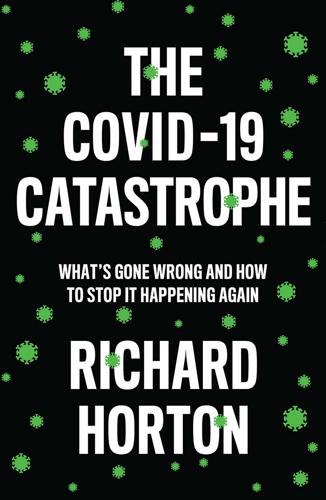
The COVID-19 Catastrophe: What's Gone Wrong and How to Stop It Happening Again
by
Richard Horton
Published 31 May 2020
As a group of Chinese doctors involved in the organisation and delivery of care to patients with COVID-19 noted, ‘By embracing Fangcang shelter hospitals, many countries and communities worldwide could boost their response to the current COVID-19 pandemic as well as future epidemics and disasters.’ Sadly, many countries afflicted by COVID-19 were unable to respond in such agile and creative ways. * While the epicentre of the pandemic was Wuhan, the virus quickly spread to other Asian nations. Singapore confirmed its first imported case of COVID-19 on 23 January. Inbound flights to the city-state were banned. Several clusters of disease were identified and close contacts were quarantined.
…
One lesson of COVID-19 is that every country must now begin a national conversation about how far it is willing to go – and how much the public is willing to pay – for a health system that can save lives when a pandemic arrives again. As it surely will. Notes 1. Simiao Chen et al., Fangcang shelter hospitals: a novel concept for responding to public health emergencies, The Lancet, 2 April 2020. 2. Amitava Banerjee et al., Estimating excess 1-year mortality associated with the COVID-19 pandemic according to underlying conditions and age, The Lancet, 12 May 2020. 5 The Politics of COVID-19 … health professionals of the 21st century will find that they have entered what must become politicised professions.
…
On 10 May, Prime Minister Boris Johnson spoke to the nation. He said of COVID-19, ‘We didn’t fully understand its effects.’ His plaintive excuse will likely become the core defence of his government in the subsequent public inquiry into why the UK failed so spectacularly to protect its citizens. It is a defence that can be and must be refuted. * COVID-19 is not a crisis about health. It is something much worse. Every evening during the peak of the pandemic in the UK, citizens could scour graphs presented by medical and scientific advisors at a daily government press briefing. Was the pandemic advancing or in retreat? New cases of COVID-19. People in hospital with COVID-19.
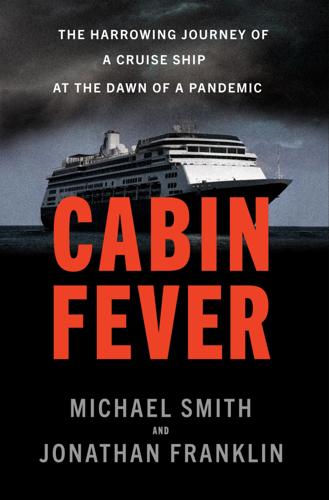
Cabin Fever: The Harrowing Journey of a Cruise Ship at the Dawn of a Pandemic
by
Michael Smith
and
Jonathan Franklin
Published 14 Jul 2022
Almost none of the passengers came from Argentina or South America. Their hopes of cruising with people from places where COVID-19 hadn’t yet taken hold were shattered. Aboard the Zaandam were 305 Americans, 247 Canadians, 229 UK citizens, 105 French, and 131 Australians. The passengers crowded around one another, leaning in, talking, hugging, laughing. No social-distancing protocols were visible. Claudia heard a cough, then another, and wanted to hide. “All those people were from where the pandemic was,” she recalled. “It was kind of scary.” Donna Mann and Jorge Hill, her seventy-nine-year-old partner, were discussing just that as they settled into their cabin.
…
They’d identified 124 cruise ships languishing in U.S. waters, with nearly 95,000 workers aboard, and getting them off would be a complex task, given all the COVID-19 restrictions. Dr. Friedman had had a lot to do with creating these rules, and she was convinced there was no other choice. Her cruise ship group had dealt with outbreaks on thirty ships in the first two months of the pandemic. One pattern was clear. A ship’s crew was especially likely to spread the virus. It wasn’t their fault, she knew. Friedman’s boss, Dr. Martin Cetron, head of the CDC’s quarantine unit, had explained the challenges early on. Crew on a cruise ship simply could not be isolated or socially distanced. They bunked together, shared bathrooms, ate in cramped mess rooms, worked in confined spaces, frequently with limited ventilation.
…
Windsor Library of Congress Cataloging-in-Publication Data Names: Smith, Michael (Journalist), author. | Franklin, Jonathan, 1964– author. Title: Cabin fever : the harrowing journey of a cruise ship at the dawn of a pandemic / by Michael Smith and Jonathan Franklin. Description: First edition. | New York : Doubleday, a division of Penguin Random House LLC, [2022] Identifiers: LCCN 2021049293 | ISBN 9780385547406 (hardcover) | ISBN 9780385547437 (ebook) Subjects: LCSH: Zaandam (Cruise ship) | COVID-19 (Disease) | COVID-19 Pandemic, 2020– | Cruise ships. | Travel—Health aspects. | Ships—Disinfection. Classification: LCC RA644.C67 S622 2022 | DDC 614.5/92414—dc23/eng/20211220 LC record available at https://lccn.loc.gov/2021049293 Ebook ISBN 9780385547437 ep_prh_6.0_140224945_c0_r0 For Adriana, my best friend and eternal love, and my four shining lights, Gabi, Pascual, Lucas, and Nico.

Doppelganger: A Trip Into the Mirror World
by
Naomi Klein
Published 11 Sep 2023
Once this is understood, the new alliances start to make more sense. Small businesses and freelancers who work with or on bodies were among the hardest hit by pandemic lockdowns. Some of the reasons for that made epidemiological sense: therapeutic work didn’t allow for social distancing, and exercise studios necessarily involve heavy breathing in enclosed spaces. But there were also ways that this sector got a particularly raw deal. Early Covid relief programs were heavily biased toward larger workplaces with many staff employees; small owner-operated fitness studios where most workers are on contract often fell through the cracks of government aid, even as they were still on the hook for massive urban rents.
…
Klein MSCHF MSNBC Muirhead, Russell Mulllins, Garth multiplayer gaming multiple personality disorder Murdoch, Iris Musk, Elon Muslims Mussolini, Benito MyPillow Nakba naming systems Naomi: author’s feelings about name; in Old Testament NASA Nation, The National Health Service (NHS) National Institute of Allergy and Infectious Diseases nationalism, inclusive National Security Agency Native Americans; see also Indigenous people Natural Causes (Ehrenreich) Nazi Germany; Austria annexed by; autistic people in; children as viewed in; class solidarity replaced with racial solidarity in; colonialism and; disabled people in; Gemüt concept in; health culture in; Hitler in; IBM and; lands and people conquered by; Paris’s liberation from; vaccine programs in; Volk collective in Nazi Germany, Jews in; anti-Semitic conspiracy theories and; Covid mandate analogies to; “eternal Jew” caricature and; Kristallnacht and; Nuremberg Laws and; yellow stars worn by; see also Holocaust Nazis, neo- neoliberalism Nestlé Netflix neurodiversity Neurotribes (Silberman) New Deal New Democratic Party (NDP); Avi Lewis as candidate of Newman, Kevin New Republic, The Newsmax New Statesman, The New York City New Yorker, The New York Post New York Times, The Next Revolution, The Nicholas II Nike 9/11 attacks 1984 (Orwell) NoiseCat, Julian Brave No Logo (Klein) Northern Ireland Northrup, Christiane NPR Nunes, Rodrigo Obama, Barack Obama, Michelle O’Brien, Kate Occupy Wall Street (OWS) oil Old Testament; Naomi in oligarchy One Day at a Time On Property (Walcott) Operation Shylock (Roth) opioid crisis Orbán, Viktor Organisation for Economic Co-operation and Development Origins of Totalitarianism, The (Arendt) Orwell, George O’Shea, Brian othering Ottawa Otto, Mike Ottoman Empire Our Bodies, Ourselves (Boston Women’s Health Book Collective) Outrages (Wolf) Oxford Union Paglia, Camille Pakistan Palestinians “Pandemic Is a Portal, The” (Roy) pandemics; Covid, see Covid pandemic Paradise Lost (Milton) Parasite Parks, Rosa Parler Patel, Raj patents Patreon Patriot Act patriotism pattern recognition PayPal PBS Peck, Raoul pedophilia Peele, Jordan Pegasus Pelosi, Nancy and Paul Pennycook, Gordon People’s Party Peters, Tom Pew Research Pfizer pharmaceutical companies; Pfizer; see also Covid vaccines; vaccines Philippines Picture of Dorian Gray, The (Wilde) Pim, Bedford Pinochet, Augusto pipikism Plandemic plutocracy Poe, Edgar Allan pogroms police murders of Black people Poor People’s Campaign populism Portnoy’s Complaint (Roth) Potter, David poverty powell, john a.
…
It wasn’t my neighborhood that was in line for demolition, nor was it my kid’s teachers who were getting fired so that public schools could be converted to private ones. But Covid … Covid was different. It scrambled my personal world, as it did all of our worlds. For the first four months, while I was still living in New Jersey, I was confined to our home with our neuroatypical son, trying in vain to help him learn online, and, more important, to soothe his porous soul, which could not help but absorb the terror that surrounded us. Ambulances picked up our neighbors, the virus tore through our friend group. I was still lucky—I wasn’t on the front lines in the Covid wards, but neither was I protected from the pandemic with my usual reportorial distance.
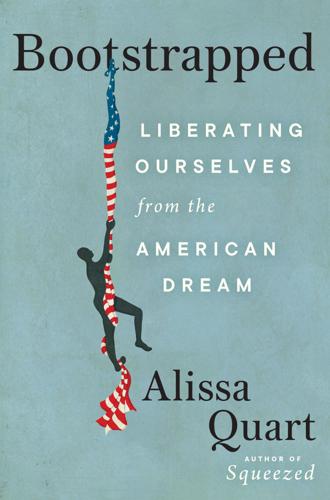
Bootstrapped: Liberating Ourselves From the American Dream
by
Alissa Quart
Published 14 Mar 2023
There were studies and theories, for example, that connected pioneer narratives to counties with poor public health practices during COVID. One study published in March 2022 in the Review of Economics and Statistics found that the more individualistic counties in the United States, many of them formerly frontier areas, engaged less in social distancing and were also less willing to receive COVID-19 vaccines. In another paper entitled “Rugged Individualism and Collective (In)action During the COVID-19 Pandemic,” from 2020, by a different set of researchers, economist Samuel Bazzi among them, also found that counties “with greater total frontier experience (TFE) during the era of westward expansion” had a “weak collective response to public health risks.”
…
On Facebook and Reddit, the company’s workers posted about being denied pay for small failings—not being able to get a COVID test at one point, for example. A post on Reddit, “Has anyone received their covid pay from Instacart?” in the summer of 2020 led to a cascade of depressing responses. One worker said they had had “covid for weeks” and had filed for “covid pay.” They had been told they would be paid “within 14 days” but were “currently on day 14 with no pay/contact for weeks.” The furious worker continued: “Pretty crappy for a 14-billion-dollar company to not even pay their workers a fair sick pay in a pandemic they’re profiting off of.” (There were many such episodes during the pandemic at companies like Instacart and those far bigger: the New York attorney general’s office eventually filed suit in 2021 against Amazon: the complaint noted that there were eighty instances of confirmed COVID infections, but the company failed to close any part of the facility in response.)
…
And when these workers are able to access funds, other taxpayers and the state foot the bill, and the drivers themselves are the ones paying taxes. For Okawa, the fear around COVID-19 had only intensified her frustration with the labor conditions of her driving. “A person should be treated with respect,” Okawa told me. “During the pandemic I realized how much we needed the sick leave.” The companies didn’t provide any of the protections from COVID they promised. At best, ten single-use masks arrived by mail from Uber, after a month. (Remember, Uber bought Postmates for $2.65 billion during the pandemic.) Her coworker got COVID. As Okawa put it, “Why can’t we have an organization that protects us, why can’t there be a union, why do we just have to say yes?”

Age of the City: Why Our Future Will Be Won or Lost Together
by
Ian Goldin
and
Tom Lee-Devlin
Published 21 Jun 2023
Many cities still need to find a workable solution to this challenge. For this to work, city governments need to expand their breadth and depth of capabilities. During the Covid-19 pandemic, cities varied widely in their ability to detect outbreaks, implement and enforce social distancing measures, and roll out vaccines. Those that struggled should be investing now to ensure they are in a better position to handle future pandemics, and they need help from national and international authorities to do so. In areas from health to education to transport and beyond, competent municipal governments that are appropriately resourced and attract capable and motivated leaders are essential.
…
If rich countries wish to reduce the risk of future pandemics, they will need to be willing to help poor countries pay for these changes. Preventing outbreaks from spiralling out of control also requires transforming cities from pandemic catalysts to pandemic choke points. Lockdowns are a vital tool for reining in uncontrolled transmission, but experience with Covid-19 shows that they cause immense hardship and economic damage. Contact-tracing technology, which proved woefully inadequate during Covid-19 in all but a few countries, needs to be stepped up in advance of the next pandemic. Fears of invasive surveillance can be mitigated by making it transparent what data will be collected, under what circumstances, and how that data will be stored and used.
…
Chapter 8 – The Spectre of Disease 1 Jedwab, R., et al., 2019, ‘Pandemics, places, and populations: evidence from the Black Death’, CESifo Working Paper. 2 Roos, D., 2020, ‘Social distancing and quarantine were used in medieval times to fight the Black Death’, History.com. 3 Jedwab, et al., ‘Pandemics, places, and populations’. 4 Eyewitness to History, ‘The Black Death, 1348’ (eyewitnesstohistory.com). 5 Bray, R., 2020, Armies of Pestilence: The Impact of Pandemics on History (Lutterworth Press). 6 Ibid. 7 Ibid. 8 Ibid. 9 Kenny, C., 2021, The Plague Cycle (Simon & Schuster). 10 Greger, M., 2007, ‘The human/animal interface: emergence and resurgence of zoonotic infectious diseases’, Critical Review in Biology, Vol. 33, No. 4. 11 The Economist, 2021, ‘The pandemic’s true death toll’. 12 For a full discussion of the impact of the Covid-19 pandemic, see Goldin, I., 2022, Rescue: From Global Crisis to a Better World (Sceptre). 13 Kharas, H. and Dooley, M., 2021, ‘Long-run impacts of Covid-19 on extreme poverty’, Brookings Institution (brookings.edu). 14 Sánchez-Páramo, C., et al., 2021, ‘Covid-19 leaves a legacy of rising poverty and widening inequality’, World Bank (worldbank.org). 15 Kharas and Dooley, ‘Long-run impacts of Covid-19 on extreme poverty’. 16 UN Women, 2022, Ukraine and the food and fuel crisis: 4 things to know, unwomen.org. 17 Hayward, E., 2021, ‘Covid-19’s toll on mental health’, Boston College (bc.edu). 18 The Economist, 2022, ‘Covid learning loss has been a global disaster’. 19 World Bank, UNESCO and UNICEF, 2021, ‘The state of the global education crisis: a path to recovery’ (worldbank.org). 20 The Economist, ‘Covid learning loss has been a global disaster’. 21 Ibid. 22 Harper, K. and Armelagos, G., 2010, ‘The changing disease-scape in the third epidemiological transition’, International Journal of Environmental Research and Public Health, Vol. 7, No. 2. 23 Kenny, The Plague Cycle, p. 177. 24 World Bank Data, 2022, ‘Air transport, passengers carried’ (data.worldbank.org). 25 Davenport, R., 2020, ‘Urbanization and mortality in Britain, c. 1800–50’, The Economic History Review, Vol. 73, No. 2. 26 O’Neill, A., 2022, ‘Child mortality rate (under five years old) in the United Kingdom from 1800 to 2020’, Statista (statista.com). 27 Kenny, The Plague Cycle. 28 Ibid. 29 Ibid. 30 Jones, K., et al., 2008, ‘Global trends in emerging infectious diseases’, Nature, Vol. 451. 31 Morand, S. and Walther, B., 2020, ‘The accelerated infectious disease risk in the Anthropocene: more outbreaks and wider global spread’, Working paper. 32 Centers for Disease Control and Prevention, 2021, ‘Zoonoses’ (cdc.gov). 33 Greger, ‘The human/animal interface’. 34 Ibid. 35 UNFAO, 2022, ‘State of the world’s forests’ (fao.org). 36 Young, R., 2014, ‘Take bushmeat off the menu before humans are served another Ebola’, The Conversation (theconversation.com). 37 Cawthorn, D-M. and Hoffman, L., 2015, The bushmeat and food security nexus: A global account of the contributions, conundrums and ethical collisions, Food Research International, Vol. 76. 38 Maxmen, A., 2022, ‘Wuhan market was epicentre of pandemic’s start, studies suggest’, Nature.com. 39 Kenny, The Plague Cycle. 40 Smitham, E. and Glassman, A., 2021, ‘The next pandemic could come sooner and be deadlier’, Center for Global Development (cgdev.org). 41 Barnes, O., 2022, ‘Just where and when will the next pandemic strike?’
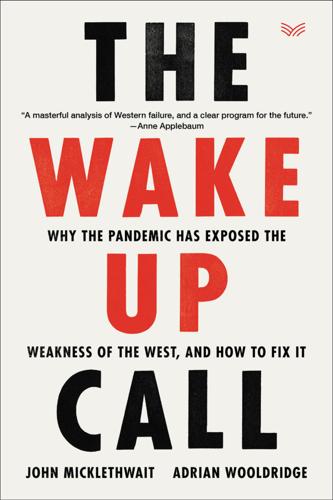
The Wake-Up Call: Why the Pandemic Has Exposed the Weakness of the West, and How to Fix It
by
John Micklethwait
and
Adrian Wooldridge
Published 1 Sep 2020
“New World Curriculum,” The Economist, March 7, 2020, 19. 7.Jamie Grierson, “UK Government Under Fire After ‘Big Influx’ of Covid-19 Cases from Europe Revealed,” Guardian, May 5, 2020. 8.Laura Donnelly, “Earlier Lockdown Could Have Prevented Three-Quarters of UK Coronavirus Deaths, Modelling Suggests,” Daily Telegraph, May 20, 2020. 9.Rafaela Lindeberg, “Man Behind Sweden’s Controversial Virus Strategy Admits Mistakes,” Bloomberg, June 3, 2020. 10.Sen Pei, Sasikiran Kandula, and Jeffrey Shaman, “Differential Effects of Intervention Timing on COVID-19 Spread in the United States,” posted on medRxiv preprint server, May 29, 2020. 11.Drew Armstrong et al., “Why New York Suffered When Other Cities Were Spared by Covid-19,” Bloomberg, May 28, 2020. 12.Armstrong et al., “Why New York Suffered When Other Cities Were Spared by Covid-19.” 13.Fareed Zakaria, “If New York Founders It Will Be Because of Bad Government, Not the Pandemic,” Washington Post, June 11, 2020. 14.Raphael Rashid, “Being Called a Cult Is One Thing, Being Blamed for an Epidemic Is Quite Another,” New York Times, March 9, 2020. 15.Laura Spinney, “The Coronavirus Slayer! How Kerala’s Rock Star Health Minister Helped Save It from Covid-19,” Guardian, May 14, 2020. 16.“New World Curriculum,” The Economist. 17.Shalini Ramachandran, Laura Kusisto, and Katie Hoanan, “How New York’s Coronavirus Response Made the Pandemic Worse,” Wall Street Journal, June 11, 2020. 18.Full disclosure: Paul Deighton is chairman of The Economist. 19.Gordon Lubold and Paul Vieira, “US Drops Proposal to Put Troops at Canadian Border,” Wall Street Journal, March 26, 2020. 20.Teresa Coratella, “Whatever It Takes: Italy and the Covid-19 Crisis,” European Council on Foreign Relations, March 18, 2020. 21.Andy Hoffman, “Sex Workers Can Get Back to Business in Switzerland, but Sports Remain Prohibited,” Bloomberg, May 20, 2020. 22.YouGov, “Americans Trust Local Governments over the Federal Government on COVID-19,” April 27, 2020. 23.John Lichfield, “Coronavirus: France’s strange defeat,” Politico, May 8, 2020. 24.Anne Applebaum, “The Coronavirus Called America’s Bluff,” The Atlantic, March 15, 2020.
…
The populists promised us that they could dynamite the establishment but still leave prosperity and security intact. In fact, they have made the crumbling Western castle’s problems worse. Without Covid, it might have taken time to reveal just how dilapidated it had become, especially in comparison with the gleaming new fort being built in Asia. Now, Covid has appeared like a hurricane, ripping the entire roof off. We can blame the populists and the pandemic as much as we want, but even if Donald Trump had stayed in light entertainment and the virus had never left Wuhan, a reckoning was coming. Western government has been crumbling for decades, overloaded with obligations, undersupplied with talent, and picked apart by special interests.
…
Only about a third of Americans trusted Donald Trump’s medical advice.22 One poll in late April showed that 62 percent of the French had no confidence in their government’s handling of the crisis, with commentators, on both the right and the left, comparing France’s response to Covid to the country’s “strange defeat” by Germany in 1940.23 At its worst, this distrust created conspiracy theories: that the virus had been deliberately manufactured, either by China or Big Pharma or indeed the United States; that it spread through 5G towers and masks; that it was a plot to kill off the old. Bill Gates was blamed, because long before Covid he had (correctly) warned about the danger of a global pandemic in a TED talk, and invested cash in trying to find a cure. This nonsense has consequences: people have burned down scores of 5G towers, including sometimes towers that served medical facilities.

Merchants of the Right: Gun Sellers and the Crisis of American Democracy
by
Jennifer Carlson
Published 2 May 2023
Brian Lee Hitchens, a taxi driver in Florida, and his wife Erin, a pastor, oscillated between believing the virus was an all-out hoax and thinking it real but overblown. They refused to take heed of public health recommendations, like masks and social distancing.9 Labeling the pandemic a “scamdemic”10 and frustrated with coronavirus restrictions, Tony Green of Texas11 decided to hold a family retreat at his lake home. Also from Texas, William Bloom declined to wear a mask; he “didn’t believe in it” and “didn’t think it would affect me.”12 Herman Cain died of COVID-19 complications,13 as did Erin Lee Hitchens and William Bloom. Ted Nugent, Donald Trump, and Tony Green all suffered severe ramifications from contracting the virus; Nugent reported that “I thought I was dying,”14 while Trump and Green each had to be hospitalized.
…
Trump Goes After Black Lives Matter, “Toxic Propaganda” in Schools. Politico. Accessed August 12, 2021. https://www.politico.com/news/2020/09/17/trump-black-lives-matter-1619-project-417162. Novak, M. (2020). Man Who Famously Died From Covid Says Covid Isn’t Very Deadly. Gizmodo. Accessed August 10, 2021. https://gizmodo.com/man-who-famously-died-from-covid-says-covid-isnt-very-d-1844901909. NRA. (2020). Disabled Woman Weak to Coronavirus Issues Message to Politicians Using Pandemic to Push Gun Control. YouTube. Accessed August 2, 2021. https://www.youtube.com/watch?v=z8fvDk4E5Pk. NRA-ILA. (2006). Congress Passes NRA-backed “Disaster Recovery Personal Protection Act of 2006.”
…
NRA-ILA. (2020i). Pandemic Engenders Appreciation for Second Amendment Rights. Accessed August 2, 2021. https://www.nraila.org/articles/20200320/pandemic-engenders-appreciation-for-second-amendment-rights. NRA-ILA. (2020j). South Carolina: Gov. McMaster Protects Second Amendment Rights. Accessed August 2, 2021. https://www.nraila.org/articles/20200407/south-carolina-gov-mcmaster-protects-second-amendment-rights. NRA-ILA. (2020k). U.S. Senators Use COVID-19 to Push Longtime Gun Control Agenda. Accessed August 4, 2021. https://www.nraila.org/articles/20200420/us-senators-use-covid-19-to-push-longtime-gun-control-agenda.

The Lonely Century: How Isolation Imperils Our Future
by
Noreena Hertz
Published 13 May 2020
Note that this forecast was before Covid-19 during which homeworking was the norm for most office workers. It is likely the take-up of remote working will now accelerate. 33 Erica Dhawan and Tomas Chamorro-Premuzic, ‘How to Collaborate Effectively If Your Team Is Remote’, Harvard Business Review, 27 February 2018, https://hbr.org/2018/02/how-to-collaborate-effectively-if-your-team-is-remote. 34 Bryan Robinson, ‘What Studies Reveal About Social Distancing And Remote Working During Coronavirus’, Forbes, 4 April 2020, https://www.forbes.com/sites/bryanrobinson/2020/04/04/what-7-studies-show-about-social-distancing-and-remote-working-during-covid-19/. 35 Hailley Griffis, ‘State of Remote Work 2018 Report: What It’s Like to be a Remote Worker In 2018’, Buffer, 27 February 2018, https://open.buffer.com/state-remote-work-2018/. 36 See original tweet at https://twitter.com/hacks4pancakes/status/1106743840751476736?
…
In The Lonely Century, Noreena Hertz recognises this and provides an enlightening, engaging and compelling analysis of the dangers posed by the loneliness pandemic not just to our individual health and happiness, but to our collective ability to reinvigorate society and tackle the many challenges we face today.’ Rabbi Lord Jonathan Sacks ‘In this hugely stimulating and ambitious book, Noreena Hertz provides a powerful account of the causes and consequences of the loneliness pandemic that has swept across the globe. Filled with terrifying facts, eye-catching stories and bold ideas, it is a must-read for anybody concerned about the post-Covid-19 world that we are building.’ Carl Frey, Institute for New Economic Thinking, University of Oxford ‘In The Lonely Century, Noreena Hertz delivers a compelling vision for how we can bridge our many divides at this time of great change and disruption.
…
The extent to which our appetite for voice and video-based exchanges persists beyond the immediate crisis is impossible to predict with any certainty at this point, although it’s likely that business-oriented video meetings will continue for some time given social distancing requirements and restrictions on travel. But as we make choices about how we interact moving beyond the pandemic crisis, it’s important to reflect upon what we lose when we make brevity our goal, text exchanges our default and more broadly choose to communicate virtually rather than in person. For as many of us discovered during lockdown, even video – the least thinned-out form of virtual interaction – though better than nothing, is still strikingly unsatisfying.
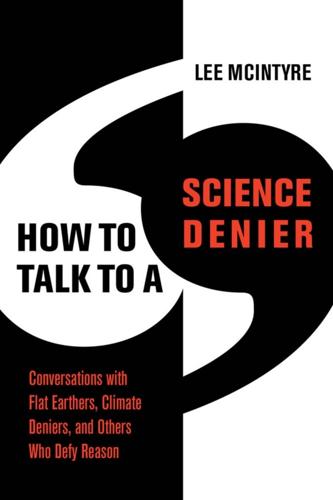
How to Talk to a Science Denier: Conversations With Flat Earthers, Climate Deniers, and Others Who Defy Reason
by
Lee McIntyre
Published 14 Sep 2021
But still—through all of the media, webinars, podcasts, Zoom meetings, socially distanced visits, and family discussions—people have demonstrated a hunger for true and accurate information. Despite the unique challenges of a pandemic, it is instructive to look at some of the things that have been working in the fight against COVID-19 denial, with an eye toward how we might more effectively fight science denial on this and other topics in the future. Here are a few tools that are consonant with our findings so far in this book. 1. Graphs, charts, and tables work One of the most compelling means to get compliance in mask wearing, social distancing, hand washing, and other public health measures has been the wide availability of statistics from Johns Hopkins University and the Centers for Disease Control (CDC), which are prominently featured in the upper-right corner of virtually every news broadcast in America (even Fox News).
…
Prior to the pandemic, CEO Mark Zuckerberg had struggled with the idea of whether it was Facebook’s job to police the sort of misinformation that was shared on his site.33 Famously, in 2019, he said that although he feared the erosion of truth, “I don’t think people want to live in a world where you can only say things that tech companies decide are 100 percent true.”34 At that time, the subject of conversation was misleading political ads (which he decided to allow).35 By the time of the pandemic—at least for misinformation about the coronavirus—Zuckerberg changed his tune. Amid charges that most COVID-19 misinformation had originated on Facebook, the company responded by pointing out that it had removed “hundreds of thousands of pieces of COVID-19-related misinformation,” including content that could “lead to imminent harm including posts about false cures, claims that social distancing measures do not work and 5G causes coronavirus.”36 On August 5, 2020, Facebook even removed a post from the Trump campaign that included a clip of Trump falsely claiming that children were “almost immune” to COVID-19.37 This, of course, raises the question of why Facebook doesn’t have a similar policy on climate denial or anti-vaxx misinformation, but at least it’s a step in the right direction.38 Other companies, like Twitter and YouTube, have also stepped up.
…
YouTube has started to steer people toward credible news sources.40 Again, for those who care about the role that social media has played in exacerbating science denial in general—not to mention the larger issue of truth itself—it is frustrating that these companies have not been more proactive in trying to combat misinformation and disinformation that will inevitably cause harm. Perhaps the pandemic will open the door to more of these efforts, on other denialist topics, in the future. Lessons from Coronavirus: Unify and Conquer One of the most fascinating aspects of the COVID-19 pandemic has been the chance to see what a denialist campaign looks like in real time, and learn what it may teach us about how to fight science denial in general. Many have noted, for instance, the startling parallels between COVID-19 denial and climate denial.41 In the coronavirus pandemic, we have a microcosm of the threat from global warming: it is an existential threat to the entire planet that portends fairly drastic economic impact and requires worldwide cooperation to address it.
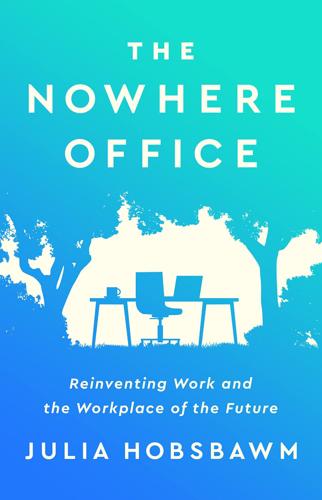
The Nowhere Office: Reinventing Work and the Workplace of the Future
by
Julia Hobsbawm
Published 11 Apr 2022
‘The Future of Jobs Report 2020’, World Economic Forum, 20 October 2020, https://www.weforum.org/reports/the-future-of-jobs-report-2020; see also McKinsey Global Institute, ‘The Future of Work After Covid-19’, 18 February 2021, https://www.mckinsey.com/featured-insights/future-of-work/the-future-of-work-after-covid-19; ‘More Than Half of Employees Globally Would Quit Their jobs if Not Provided Post-Pandemic Flexibility’, 21 May 2021, https://www.ey.com/en_ro/news/2021/05/ey-study--more-than-half-of-employees-globally-would-quit-their-; Department for Professional Employees, AFL-CIO, ‘The Professional and Technical Workforce: By the Numbers’, 2021 Fact Sheet, 27 September 2021, https://www.dpeaflcio.org/factsheets/the-professional-and-technical-workforce-by-the-numbers 5. See data from Office for National Statistics Coronavirus (Covid-19) Latest Insights: Work, https://www.ons.gov.uk/peoplepopulationandcommunity/healthandsocialcare/conditionsanddiseases/articles/coronaviruscovid19latestinsights/work; and the World Bank: Michael Weber and David Newhouse, ‘These Types of Workers Were Most Impacted by the Covid-19 Pandemic’, World Bank Blogs, 23 September 2021, https://blogs.worldbank.org/jobs/these-types-workers-were-most-impacted-covid-19-pandemic 6. See Leesman, ‘Workplace 2021: Appraising Future-Readiness’, https://www.leesmanindex.com/media/Leesman-Workplace-2021-Report-1.pdf; and McKinsey, ‘Future of Work’, https://www.mckinsey.com/featured-insights/future-of-work 7.
…
Joanna Swash, CEO of outsourcing reception, PA and communications provider Moneypenny (and a member of the Forbes Business Council), was frank that her perceptions had been challenged by the pandemic when everyone had to go fully remote overnight: Before Covid-19 I thought we’ve got amazing offices, and that they are this space that everybody loves. What I learned was that our culture was so strong that it wasn’t just based on the office or on the physical environment, but it was based on that whole community feel, and how people trust each other. It should have been obvious to me, but that was a really big lesson at the start of the pandemic. A similar point was made by Chris Thurling, chair of Armadillo, a digital design firm which went fully remote during the pandemic, and who expanded his business during this period: I want to remain completely open-minded about whether we ever need to have a traditional office again.
…
Jerry Useem, ‘The Psychological Benefits of Commuting to Work’, Atlantic, 29 July 2021, https://www.theatlantic.com/magazine/archive/2021/07/admit-it-you-miss-your-commute/619007/ 40. ‘How Covid-19 Triggered the Digital and e-Commerce Turning Point’, United Nations Conference on Trade and Development, 15 March 2021, https://unctad.org/news/how-covid-19-triggered-digital-and-e-commerce-turning-point 41. ‘Southern California Renters are Moving to the Suburbs Post-Pandemic, Says New Study’, Propertyfundsworld, 20 May 2021, https://www.propertyfundsworld.com/2021/05/20/300587/southern-california-renters-are-moving-suburbs-post-pandemic-says-new-study 42. David Sharman, ‘Publisher Reveals it Now Employs More Journalists than in 2019’, HoldtheFrontPage, 26 July 2021, https://www.holdthefrontpage.co.uk/2021/news/publisher-creates-more-new-roles-in-bid-to-return-staffing-to-pre-pandemic-levels/ 43.
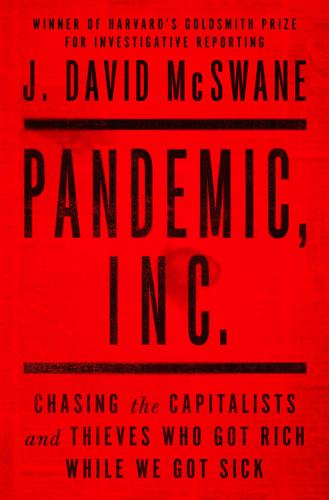
Pandemic, Inc.: Chasing the Capitalists and Thieves Who Got Rich While We Got Sick
by
J. David McSwane
Published 11 Apr 2022
the MIT Center for Transportation and Logistics Stephanie Mencimer, “Peter Navarro Is the Worst Possible Person to Be in Charge of Pandemic Supplies,” Mother Jones, April 9, 2020, https://www.motherjones.com/politics/2020/04/peter-navarro-is-the-worst-possible-person-to-be-in-charge-of-pandemic-supplies/. Navarro was waging his brand Letter to John Polowczyk, COVID-19 Essential Medicine Briefing Update, March 26, 2020. He urged the president Ibid. Throughout the month of March J. David McSwane, “Documents Show Trump Officials Skirted Rules to Reward Politically Connected and Untested Firms with Huge Pandemic Contracts,” ProPublica, March 31, 2021, https://www.propublica.org/article/trump-covid-pandemic-contracts.
…
contracts were handed out to anyone Ryan Gabrielson and Lydia DePillis, “A Closer Look at Federal Covid Contractors Reveals Inexperience, Fraud Accusations and a Weapons Dealer Operating out of Someone’s House,” ProPublica, May 27, 2020, https://www.propublica.org/article/a-closer-look-at-federal-covid-contractors-reveals-inexperience-fraud-accusations-and-a-weapons-dealer-operating-out-of-someones-house. Trump lieutenants steered contracts J. David McSwane, “Documents Show Trump Officials Skirted Rules to Reward Politically Connected and Untested Firms with Huge Pandemic Contracts,” ProPublica, March 31, 2020, https://www.propublica.org/article/trump-covid-pandemic-contracts. What barriers did exist were overcome J.
…
With millions a year in donations Will Stone, “An Anti-Vaccine Film Targeted to Black Americans Spreads False Information,” Georgia Public Broadcasting, June 8, 2021, https://www.gpb.org/news/shots-health-news/2021/06/08/anti-vaccine-film-targeted-black-americans-spreads-false. according to an analysis Pandemic Profiteers: The Business of Anti-vaxx (London: Center for Countering Digital Hate, 2021). “the flu shot is 2.4x more deadly” Marisha Goldhamer, “Seasonal Flu Vaccines Are Safe, Needed during Covid-19 Pandemic,” Fact Check, September 25, 2020, https://factcheck.afp.com/seasonal-flu-vaccines-are-safe-needed-during-covid-19-pandemic. an osteopath named Joseph Mercola Ibid. He oversees about 159 employees Sheera Frenkel, “The Most Influential Spreader of Coronavirus Misinformation Online,” New York Times, July 24, 2021, https://www.nytimes.com/2021/07/24/technology/joseph-mercola-coronavirus-misinformation-online.html.

The Quiet Damage: QAnon and the Destruction of the American Family
by
Jesselyn Cook
Published 22 Jul 2024
Sutin et al., “Differential Personality Change Earlier and Later in the Coronavirus Pandemic in a Longitudinal Sample of Adults in the United States,” PLOS ONE 17, no. 9 (2022): e0274542, https://doi.org/10.1371/journal.pone.0274542. GO TO NOTE REFERENCE IN TEXT after Covid protections and assistance came to an abrupt end: M. Potts, “Rents Are Still Higher Than Before the Pandemic—and Assistance Programs Are Drying Up,” FiveThirtyEight (blog), January 9, 2023, https://fivethirtyeight.com/features/rents-are-still-higher-than-before-the-pandemic-and-assistance-programs-are-drying-up/; M. Casey and R.
…
The vortex of information about the lies and corruption surrounding the pandemic was staggering. The Deep State had all hands on deck: The Democrats were wildly overexaggerating the threat of Covid, the mainstream media was parroting their narrative in a circus of hysteria, Big Tech platforms were suppressing any and all counterspeech, the CDC was hyperinflating the death tolls by attributing unrelated fatalities to the virus, and Big Pharma was rubbing its hands together. Trump seemed to be saying much of the same. He suggested that Covid was no more dangerous than the flu and that it would disappear with warmer weather, leading to “packed churches” by Easter.
…
Lopes et al., “KFF Health Tracking Poll—September 2020: Top Issues in 2020 Election, the Role of Misinformation, and Views on a Potential Coronavirus Vaccine,” KFF, September 10, 2020, https://www.kff.org/coronavirus-covid-19/report/kff-health-tracking-poll-september-2020/. GO TO NOTE REFERENCE IN TEXT gave rise to the term QAmom: M. Deckman, “Tea Party Women: Mama Grizzlies, Grassroots Leaders, and the Changing Face of the American Right,” NYU Press, May 2016, https://nyupress.org/9781479866427/tea-party-women. GO TO NOTE REFERENCE IN TEXT burden of caregiving on women: K. Power, “The COVID-19 Pandemic Has Increased the Care Burden of Women and Families,” Sustainability: Science, Practice and Policy 16, no. 1 (2020): 67–73, https://doi.org/10.1080/15487733.2020.1776561.
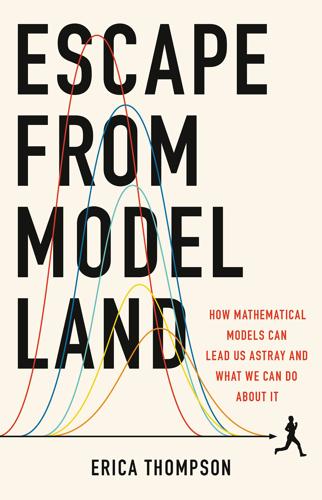
Escape From Model Land: How Mathematical Models Can Lead Us Astray and What We Can Do About It
by
Erica Thompson
Published 6 Dec 2022
If we had had no recourse to a model that could attempt to predict the future evolution of the pandemic, would we have made more or less effective decisions about mitigation? This counterfactual is difficult to imagine: presumably we would still be able to think through the mechanics of viral transmission and the effect of social distancing even without writing it down as a set of equations. Widespread availability of mathematical modelling has hardly given clear answers about strategy: the huge variety of political approaches to Covid-19 is testament to that. So while the ability to follow through our assumptions into quantitative plausible futures – including worst-case scenarios – is genuinely useful, I also think we have to take seriously Limbaugh’s challenge that ‘The modelers can’t be wrong… They have no weight on their shoulders.
…
You can also imagine that the California ‘Big One’ earthquake has been well modelled, as well as major hurricanes hitting large population centres. Those who ran simulations of a viral pandemic in the last few years have had an interesting chance to check up on their assumptions since 2020. Pandemic appears not to have been officially used as a stress-test scenario by regulatory bodies, but health insurers at least have certainly had pandemic influenza as a known major possibility for years. Even where scenarios exist, the many and varied downstream impacts of the pandemic that are emerging, from supply-chain disruption and Long Covid to accelerated digitisation and the ‘Great Resignation’, are potentially major economic changes that will not have been factored in.
…
This is the basis of the epidemiological models that informed the advice given by SAGE to the UK government in the early days of the Covid-19 pandemic. In practice they are much more complicated, dividing the UK into blocks of population density, defining where individuals live, how far they travel for work and how often they come into contact with other people of different ages. A lot of information about people and their behaviour goes into the model, as well as the characteristics of the virus itself. The actual progress of the Covid-19 pandemic, however, proved rather different from that predicted by the models, in which the spread and transmission of the virus closely paralleled population density.

The Bill Gates Problem: Reckoning With the Myth of the Good Billionaire
by
Tim Schwab
Published 13 Nov 2023
Eric Rubin: Analysis of Web of Science academic database. governments should respond: Bill Gates, “Responding to Covid-19—A Once-in-a-Century Pandemic?,” New England Journal of Medicine 382, no. 18 (April 30, 2020): 1677–79, https://doi.org/10.1056/NEJMp2003762. Covid-19 testing or social distancing: Robert Fortner, “How Bill Gates Underestimated the Pandemic He Predicted—and Got Away with It,” Medium (blog), February 14, 2021, https://robertfortner-93061.medium.com/how-bill-gates-underestimated-the-pandemic-he-predicted-and-got-away-with-it-bef13c228a78. financial conflicts were “numerous”: Schwab, “While the Poor Get Sick, Bill Gates Just Gets Richer”; Bill Gates, ICMJE Form for Disclosure of Potential Conflicts of Interest, New England Journal of Medicine, February 27, 2020, https://www.nejm.org/doi/suppl/10.1056/NEJMp2003762/suppl_file/nejmp2003762_disclosures.pdf.
…
“No foundation or nonprofit organization has any influence on my publications, and no funder has any influence on articles that the Journal publishes,” Rubin told me by email. Yet, a reasonable person could question this. At the beginning of the Covid-19 pandemic, Rubin’s journal published a long commentary by Bill Gates in which he prescribed how governments should respond. Given that Bill Gates has no medical training, why was he given real estate in one of the most prestigious medical journals to play expert on the most important public health crisis in decades? Should we be surprised that Gates’s commentary had many blind spots? He failed to mention Covid-19 testing or social distancing, for example—two early interventions that were essential to arresting transmission and preventing infections and death.
…
“need to team up”: Jay Hancock, “They Pledged to Donate Rights to Their Covid Vaccine, Then Sold Them to Pharma,” Kaiser Health News, August 25, 2020, https://khn.org/news/rather-than-give-away-its-covid-vaccine-oxford-makes-a-deal-with-drugmaker/. Trevor Mundel: Erin Banco, “How Bill Gates and His Partners Took Over the Global Covid Pandemic Response,” Politico, September 14, 2022, https://www.politico.com/news/2022/09/14/global-covid-pandemic-response-bill-gates-partners-00053969. an open license: Hancock, “They Pledged to Donate Rights to Their Covid Vaccine, Then Sold Them to Pharma.” Oxford’s Adrian Hill: Kirkpatrick, “In Race for a Coronavirus Vaccine, an Oxford Group Leaps Ahead.”
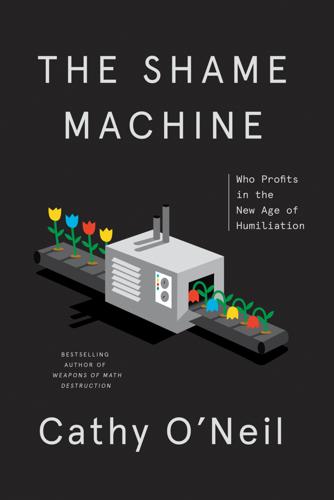
The Shame Machine: Who Profits in the New Age of Humiliation
by
Cathy O'Neil
Published 15 Mar 2022
From the perspective of the aggrieved lower orders, the elite not only lay claim to the lion’s share of wealth but also see themselves as arbiters of truth. “There’s an anti-authority feeling in the world,” said Dr. Anthony Fauci at the height of the COVID-19 pandemic. “Science has an air of authority to it. So people who want to push back on authority tend to, as a sidebar, push back on science.” Not all vaccine skeptics are ignorant, by any stretch of the imagination. An alarming number of health workers, for example, resisted taking the COVID vaccine in 2021, even after tending for months to victims suffering in their emergency wards on any given day. For example, a group of 117 employees sued Houston Methodist Hospital in May 2021 for mandating staff-wide vaccines.
…
GO TO NOTE REFERENCE IN TEXT At a contentious meeting: Annie Gowen, “ ‘God Be with Us,’ ” The Washington Post, December 9, 2020, https://www.washingtonpost.com/nation/2020/12/09/south-dakota-mitchell-covid-masks/. GO TO NOTE REFERENCE IN TEXT Crews lambasted the people mandating masks: J. Clara Chan, “NIH Official to Retire after He’s Exposed as RedState Editor Who Called Fauci a ‘Mask Nazi,’ ” TheWrap, September 21, 2020, https://www.thewrap.com/nih-official-to-retire-after-hes-exposed-as-redstate-editor-who-called-fauci-a-mask-nazi/. GO TO NOTE REFERENCE IN TEXT “people who get COVID-19 have behaved irresponsibly”: Alain Labrique et al., “Webinar: National Pandemic Pulse Round 1,” covidinequities.org, November 12, 2020, https://www.covidinequities.org/post/webinar-national-pandemic-pulse-round-1.
…
See public policy; punching-up campaigns and action college admissions, 59 concern trolling, 33, 35 conspiracy theories/theorists, 101, 161, 163, 208. See also misinformation Cooper, Amy, 109–10 Cooper, Christian, 109–10, 116 COVID-19 pandemic: economic impacts of, 59, 67–68 mask wearing and masking controversies, 153–59, 163 stigmatization of COVID victims, 158–59 vaccine skepticism and resistance, 161–65 Covington boys, 97–100 crack epidemic, 39–46 Blossom Rogers’s story, 37–38, 39, 45–46, 168, 211 Crews, Bill, 156 criminal justice system: the criminalization of addiction, 40–41, 42–43, 44–45, 48, 51, 53–54 drug dependency treatment in prison, 53 economic exploitation of parolees, 68–73 the persistence of criminal charges online, 104–5 the private prison industry, 48 Crockett, Molly, 96 Cruz, Nikolas, 137 cults, 112, 113, 144 Cuomo, Andrew, 115 D De Blasio, Bill, 163 debt and debt abolition, 207–8 detoxifying shame, 10–13, 15, 89–91, 203–15 confronting our individual shaming behaviors, 90–91, 123–26, 210–15 taking collective action, 89–90, 203–9 diabetes, bariatric surgery and, 192–93, 194–95 dieting.
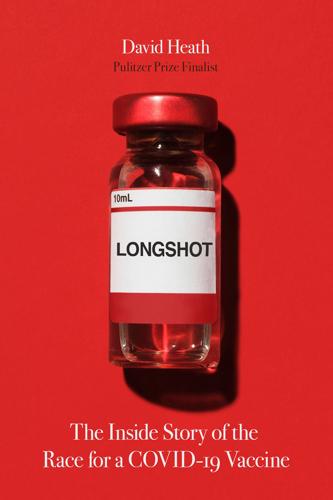
Longshot
by
David Heath
Published 18 Jan 2022
Dave Muoio, “10 States Nearing—or Exceeding—Hospital Capacity during COVID’s Summer Resurgence,” Fierce Healthcare, August 19, 2021, https://www.fiercehealthcare.com/hospitals/10-states-nearing-or-exceeding-hospital-capacity-during-covid-s-summer-resurgence. 3. Jay Bhattacharya and Donald Boudreaux, “Eradication of Covid Is a Dangerous and Expensive Fantasy,” Wall Street Journal, August 4, 2021, https://www.wsj.com/articles/zero-covid-coronavirus-pandemic-lockdowns-china-australia-new-zealand-11628101945. 4. “COVID-19 Vaccinations in the United States,” Centers for Disease Control and Prevention, accessed August 31, 2021, https://covid.cdc.gov/covid-data-tracker/#vaccinations_vacc-total-admin-rate-total. 5.
…
“Overall as a world, I’m not sure we’re doing much better than we did in 1918.” That, of course, is a reference to a flu pandemic that cost the lives of 50 million people worldwide. As of late August 2021, there 216 million confirmed cases of COVID-19 and around 4.6 million deaths worldwide. Americans account for 675,000 of those deaths—about as many Americans as died in the 1918 flu pandemic. If you’re still not vaccinated, you’re at high risk of catching COVID-19. You’re also prolonging this pandemic. The other route to herd immunity is for billions of people to get sick. That would be a horrific outcome. Said Graham, “I hope that people generate immunity through the vaccine instead of infection, because if it’s infection, there’s going to be a lot more suffering and death.”
…
The brutal truth is that this is not likely the last pandemic we will face. There is a high probability that we will see new strains of novel coronaviruses in the future. With luck, we will be able to ramp up new vaccines quickly to defeat those. But there is also the likelihood that we’ll see other viruses causing pandemics. Perhaps the next one will be a novel influenza. Or perhaps a new strain of Nipah, a particularly dreadful virus that served as the basis of the Hollywood thriller Contagion, starring Kate Winslet and Matt Damon. There are lessons to be learned from the discovery of the COVID-19 vaccine that could lead us to rethink the resources we devote to stopping future pandemics.

Reset
by
Ronald J. Deibert
Published 14 Aug 2020
We mapped how the coronavirus is driving new surveillance programs around the world. Retrieved from https://onezero.medium.com/the-pandemic-is-a-trojan-horse-for-surveillance-programs-around-the-world-887fa6f12ec9; See also Kamradt-Scott, A., & McInnes, C. (2012). The securitisation of pandemic influenza: framing, security and public policy. Global Public Health, 7(sup2), S95-S110. Drones were being offered up and used as part of COVID mitigation efforts: Gaulkin, T. (2020, April 1). Drone pandemic: Will coronavirus invite the world to meet Big Brother? Retrieved from https://thebulletin.org/2020/04/drone-pandemic-will-coronavirus-invite-the-world-to-meet-big-brother/ How easy it is to unmask real identities contained in large personal data sets: Narayanan, A., & Shmatikov, V. (2008).
…
Numerous proposals worldwide to employ cell location data to assist in the effort to combat the spread of COVID-19: Glanz, J., Carey, B., Holder, J., Watkins, D., Valentino-DeVries, J., Rojas, R., & Leatherby, L. (2020, April 2). Where America didn’t stay home even as the virus spread. Retrieved from https://www.nytimes.com/interactive/2020/04/02/us/coronavirus-social-distancing.html; Landau, S. (2020, March 25). Location surveillance to counter COVID-19: Efficacy is what matters. Retrieved from https://www.lawfareblog.com/location-surveillance-counter-covid-19-efficacy-what-matters; Anderson, R. (2020, May 12). Contact tracing in the real world.
…
These negative externalities may have been amplified by the surge in demand for social media during the COVID pandemic, the enhanced power of the platforms that went along with it, and the unprecedented emergency measures that tapped into those platforms’ surveillance potential. On top of that, our insatiable lust for data and disposable devices is silently taxing resources, sucking up vast amounts of energy, and thus contributing to, rather than helping to mitigate, the climate crisis. While the COVID pandemic has given some reprieve in terms of CO2 emissions, thanks to a short reduction in airline and other fossil fuel–powered transportation, that reprieve will eventually pass.
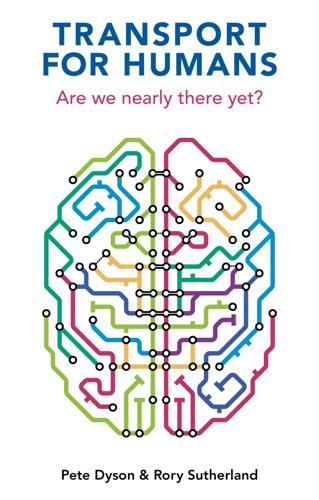
Transport for Humans: Are We Nearly There Yet?
by
Pete Dyson
and
Rory Sutherland
Published 15 Jan 2021
This is a value judgement that trades off the need to reduce cognitive load with the problem that it makes London, especially South London, seem more transport-poor than it actually is – at least to tourists and North Londoners. The Thameslink line, a north–south link, was removed from the map in 1999 to make things simpler, but was then added again in 2020 to assist with social distancing during the Covid-19 pandemic. Authorities insist that this is only a temporary measure, calling it a ‘complicated addition to the map’.11 But if they remove it again, passengers might well end up making needlessly complex journeys, as do many tourists who visit South London. (Another new line, the Elizabeth Line (formerly known as Crossrail), will be included by default, not least because it is operated by Transport for London rather than the British–French joint venture Govia, who at the time of writing run Thameslink services.)
…
Transport is blind to our rapidly evolving online habits: in this case, we won’t get a clear picture of whether fleets of delivery vans are inefficiently servicing a small group of enthusiastic users, or whether they are efficiently substituting the need for lots of people to trudge around shops. An emerging finding from UK academic research suggests that the boom in online grocery shopping during Covid-19 has been largely attributable to people who were already doing it before the pandemic switching to doing it a lot more. How this splits by region and demographic is unclear.6 The data we have frames the conversation, while the data we need often goes unnoticed. * * * 6 COVID-19 TRANSAS. 2021. At a crossroads: travel adaptations during Covid-19 restrictions and where next? Report (https://covid19transas.org/category/reports/). Table 6. Behavioural adaptations requiring careful attention.
…
As such, transport planners should take the long view: improvements that are made today will take decades, not just a few years, to be fully felt. Attracting a generation of young people can create customers for life. At the time of writing, we can only speculate on the habit-breaking effects of the Covid-19 pandemic, which gave many a huge fresh start. One month into the pandemic, only 9% of Britons wanted life to return to ‘normal’: they were aware of cleaner air, more wildlife and stronger communities. The World Economic Forum found that 86% of people across twenty-eight countries wanted significant change to make the world a fairer and more sustainable place.17 Until recently, the behavioural economics literature looked quite underpowered, as it typically concentrated on the behaviour of individuals, examining social norms only to the extent they affect individuals rather than how those norms are formed and evolved in the first place.18 The evidence has grown into a consensus that large-scale changes in habits require shifting circumstances, not just personal willpower.
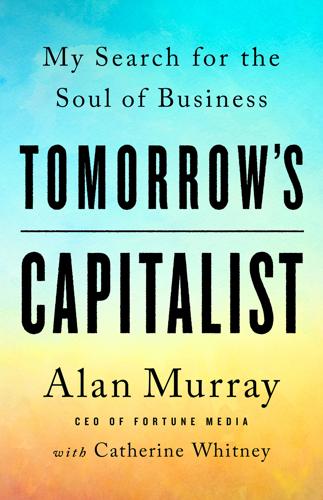
Tomorrow's Capitalist: My Search for the Soul of Business
by
Alan Murray
Published 15 Dec 2022
BRIGHT SPOTS EMERGE With any dramatic societal event, you can observe in the aftermath some lasting changes. During the course of the COVID-19 pandemic, it soon became apparent what some of those changes would be: > The shift toward talent as the most important source of corporate value had continued. The trend could have been weakened by historic levels of unemployment, which made labor plentiful. But plentiful labor is not the same as plentiful talent, and the pandemic seemed to be leading an increasing number of talent-forward companies to take an “employees first” approach. Indeed, as the economy bounced back from COVID in 2021, it became clear that there was an unprecedented battle for talent, giving knowledge workers even more power in the economic debates to come
…
I sat down with him in person in Fortune’s offices shortly before we closed them, as the pandemic was breaking news across the globe. He was feeling the pressures around personal protective equipment, the N95 masks in particular. 3M had started ramping up its manufacturing of PPE before it hit the American public that the need was desperate here at home. Roman explained: “Coming out of SARS, we had developed a strategy to have idle capacity available for the next pandemic. We didn’t anticipate a global pandemic like we’re facing with COVID-19. We responded and have been ramping up capacity ever since.”12 The priorities were clear to his leadership: “Protect our employees, so we could keep executing, fight the pandemic from every angle, and deliver for our customers and shareholders, as we went through the uncertainty that we were facing.
…
Competition is the magic that makes capitalist economies successful. But solving society’s biggest problems—like a global pandemic—requires cooperation as well as competition. The scientists at pharmaceutical companies were competing with each other to be the first to develop vaccines and treatments for COVID. But they also were sharing data, knowledge, and even their facilities in ways that never would have been imaginable before the pandemic. “There’s so much collaboration, cooperation going on,” Daniel O’Day, chairman and CEO of Gilead Sciences, agreed. “The only competition in COVID is the virus itself. Companies have come together and collaborated in ways that we’ve never seen before.
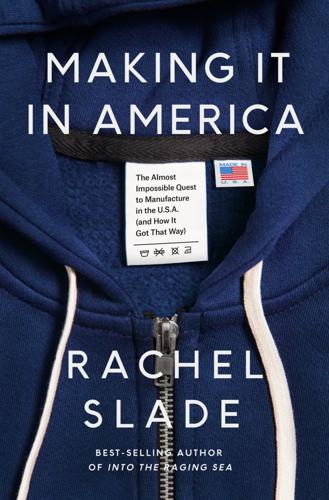
Making It in America: The Almost Impossible Quest to Manufacture in the U.S.A. (And How It Got That Way)
by
Rachel Slade
Published 9 Jan 2024
They’d been running nonstop for eight months. Their lives had been consumed by Covid, masks, testing, masks, Covid. In November, they dared to imagine a post-Covid future. Along the long wall of the factory overlooking the Presumpscot, piles of cut hoodie pieces were stacked on shelves, untouched since March. A few weeks back, a silk-screen artist had come in to customize a few finished hoodies with a mermaid motif for a customer. Anyone exhausted with mask wearing and social distancing could look at those army-green sweatshirts and remember that there was a time before Covid. And that there would be a time after. Those brand-new, American-made, union-made, hand-screened hoodies seemed like a promise that American Roots would get back to doing what it was built to do.
…
A B C D E F G H I J K L M N O P Q R S T U V W X Y Z A Abercrombie & Fitch, 257, 257n AFL-CIO, 53, 64, 197, 216 American Roots and, 160, 177, 200, 216 CEO-to-worker pay ratio tracked, 257 conventions and meetings, 112, 112n, 129, 160–62, 200 Democratic Party and candidates, 52–53, 70, 74 promotes domestic manufacturing, 73 Trumka and, 62, 70, 73–74, 160, 274 Washington headquarters, 63, 220 Waxman working for, 52–53, 61, 62, 67, 82, 94, 188–89, 199, 289 Whirlpool plant shutdown and, 78–80 See also labor unions; Trumka, Richard; specific unions Africa, 4, 26, 122–23, 123n, 262n, 284 Made in Africa consortium, 123n used clothing exported to, 22 See also specific countries agricultural monoculture, 152–54 Alfond, Harold, 189, 191–92 Alfond, Justin, 189–91, 193, 211 Alibaba, 224 Alibrio, Gina, 221, 293 Allen, Tom, 52 Allende, Salvador, 72 Alliance for Retired Americans, 67, 91–92 Allied Textiles, U.K., 46–47 Alloiding, Simeon, 39, 51 Amalgamated Bank, 287–88 Amalgamated Clothing Workers of America, 287 Amalgamated Housing Cooperative, 287 Amazon, 261 Bessemer warehouse, 241, 242 business model, 269–70 damage to U.S. manufacturers, 269 problematic labor practices, 112n selling Chinese goods, xii, 270 as start-up, in Kentucky, 268–69 turnover rate, 269 unionization effort at, 241–42, 269 American Apparel, 232, 232n, 252, 264–67 American Cord & Webbing, Woonsocket, Rhode Island, 156 American Fabrics, New York City, 166–71, 235–36 American manufacturing academia abandons, 74 automation and, 300–301 benefits of, 300 Biden administration and, 286–87, 301 company closures, 18, 20, 74, 77–78 costs and profits, 247–48 China’s takeover of global markets and, 68, 69 Covid pandemic and, 238 Devlin on bringing it back, 196–98 as essential to the nation, 5, 29, 113 generational shift and demise of, 103 government’s role in reviving, 7, 8, 114, 296–97, 300–301 greed’s destruction of, 69, 78, 94 Hamilton and, 7–8, 296 health insurance burden, 296–97, 297n immigrant/New American employees, 121, 301–3 (see also American Roots) innovation and, 296, 298, 299 Jefferson’s vision, 9 labor crisis and, 118, 282 last days of Carleton Woolen Mills and, 45–48 Lawrence, Massachusetts, and witnessing the life cycle of, 106–11 “made in America” products, 171, 240 NAFTA’s destruction of, number of manufacturers and jobs lost, 18, 45–46, 118 number of companies, employees today, 5 offshored amount by 1990, 68 offshoring and, 4, 18, 26, 27, 68, 69, 77, 129, 257, 260, 261–62, 263 (see also Bangladesh; China; Mexico; Vietnam; specific countries) onshoring revival, 113–14, 238, 242, 290–91, 293, 296 Pilchman’s pessimism about, 170–71 poor management training, 294, 294n quality of, 22, 300, 300n shareholder profit and, 263n shipbuilding and, 204 size of (2022), 4 sourcing as difficult, 193 tariffs as important to, 198 Taylorism and, 255–57 union investment in, 161, 287–88 unions and, 20, 73, 99, 288 (see also labor unions) Walmart and, 261–62 Waxman’s dream and, 95, 99 WeatherTech and, 227–28 worker protections and, 183 workforce training, 297, 301 workplace safety, 22, 183 work satisfaction and, 298–99 WTO and the destruction of, 192 See also labor unions; NAFTA; supply chain; textile and clothing production American Revolution, 5–6, 7, 11, 13 American Roots, Westbrook, Maine, 28, 234, 287 American-sourced materials and, 29, 111, 129, 231–37, 295 Bailey as consultant, 252–55, 264–68, 271–73, 278–81 branding alliances and, 289 business model, 176, 236 cash and investment capital shortage, 176, 186–88, 289–90 cost-saving decisions, 119 Covid pandemic and, 200–201, 209, 210, 213–15, 223–24, 239, 242–43, 276, 285 Covid pandemic PPE manufacturing pivot, 214–19, 224, 225, 226 customer targeted by, 111–12, 149, 158, 160, 177–78, 179 downsizing workforce, 225, 276 economic impact of, 242, 295 employee diversity, 299 employee hiring, 120, 121, 123, 282 employee hiring, immigrants/New Americans, 123, 127, 179–80, 215, 221–22, 245, 272–73, 283–84, 285, 294, 303–4 employee priorities, 281–82 employee recruitment, 285 employee salaries, benefits, 175, 248, 250, 269, 286 employee stress, 178–79, 248, 254, 279–80 employee training, 112, 119–20, 121, 248 employee welfare, 113, 114 financial problems (2017), 160 founding of, 111–15 goals for growth, 254 hoodie made by, 28, 140, 149, 150–52, 158–60, 271 hoodie manufacturing, finding suppliers, 141–44, 152, 156–57, 159–60, 225 hoodie order by Painters Union, 157, 158–60 hoodie order by TWU, 163–71 hoodie zipper, 142–44, 147 industrial sewing machines for, 149 January 6 response by, 229–30 kaizen method and, 264–65 logo, 239, 243, 273 management, 178–79, 220–21, 252, 254, 277–78 mission statement, 28–29, 239–40, 251 monthly overhead and payroll, 209 murder of George Floyd and, 221 naming of, 113 new equipment and improvements (2021), 227, 239 office of Ben Waxman at, 175–76, 195, 220, 253, 254, 291 online presence, 209 patternmaker for, 116–19, 150–51, 244 piece-rate payment, 265–67, 280, 281 Pilchman and, 170, 231–32 PolarFleece vests and, 105, 111, 114–16, 119, 127–31, 132 post–Covid pandemic, pivoting back to clothing, 239 pricing of merchandise, 171, 247, 286 production costs and problems, 119, 243–45, 247–55, 267–68, 279 production revamped, 255, 271–73, 278–81, 290 raising capital, investors, and strategic team, 188, 189, 193–94, 199, 211, 214, 227, 291 revenue (2016), 128 revenue growth (2018 to 2023), 172, 179, 186, 224, 226, 254, 276, 290 salary of founders, 113, 257 sales and marketing, 127–28, 157, 158, 177–78, 209–10, 239–40, 276 (see also Waxman, Ben) size, number of employees, 179, 226 success of, 290–92 testimonials and accolades, 171 union labor and, 28, 29, 175 union leader Jabbir and, 160–62, 175 union support for, 165, 176, 177–80 values of, 188 Waxman home as collateral, 201 “wearing your values” and, 240 WeatherTech T-shirt order, 227–28 Westbrook factory, 172, 174–75, 189, 217, 219, 278–79 white supremacists target, 179–80 See also Waxman, Ben; Waxman, Whitney Reynolds Andersen, Kurt, Evil Geniuses: The Unmaking of America, 11 Anderson, Wes, 119 Angola, 124, 125, 126, 283, 285 Antonelli, Paola, 132 Appalachian Mountains, 53 Ares, Jessica, 39 Arkwright, Richard, 6–7 Arlington Mills, Lawrence, Massachusetts, 106, 109 ASHP (American Society of Health-System Pharmacists), 299, 300n Asplundh tree service, 136 As Steel Goes (Brooks), 58 Atkinson, Robert, 68 B Bailey, Marty, 252–55, 257–60, 262–68, 301 American Roots and, 271–73, 278 Moroccan T-shirt video, 265, 272 Bangladesh, 24, 25, 27n, 29, 114, 257 banking deregulation, 94 Glass-Steagall Act, 94 subprime mortgages and mortgage-backed bonds, 94–95 Barchiesi, Rich, 60 Bartram, David, 18 Bassett Furniture Company, North Carolina, 69 Bella + Canvas, Los Angeles, 244 Bernstein, Leonard, 106 Bethlehem Steel, 77 Bezos, Jeff, 240–41, 269 Biaya, Robert Mbaya, 122, 123–27, 284 Biden, Joe, 32, 112n, 286 pro-union administration, 286–87 trade agenda, 235, 286–87 Black Mass (film), 119 Bobe, Ludovic Ndengabeka, 244, 247, 273 Boeing, 262 offshores 737 MAX production, 262 Born, Doug, 216 Boston Globe, 173 Bottle of Lies: The Inside Story of the Generic Drug Boom (Eban), 299n Boyle, Tony, 64–65, 67 Bradley, Bill, 50–51 Bretton Woods, New Hampshire, 174 British East India Company, 12–14 Brooks, Robert R., As Steel Goes, 58 Brown, Roxanne, 218 Buffett, Warren, 192–93 Bullshit Jobs: A Theory (Graeber), 298 Bureau of Labor Standards, 183–84 Burkhardt, Jonathan, 61–62, 92 Burns, Cam, 239–40 Bush, George H.
…
Wyatt reached for Ben from Whitney’s lap and she hoisted the baby to his father, relieved to have her husband back in the house. Ben got the kids fed and put them to bed while Whitney waited for her Covid test results. They barely slept. At 8:30 the next morning, March 14, they got the call: negative. The last few days had been hellish—being apart at the beginning of the pandemic, Whitney down with possible Covid. The mix of relief and trepidation was exhausting. They couldn’t go through that again. They called up their brand-new board members—Alex, Justin, and Patti—and scheduled an emergency meeting.

Stakeholder Capitalism: A Global Economy That Works for Progress, People and Planet
by
Klaus Schwab
Published 7 Jan 2021
Not since World War II were debt levels in advanced economies so high, the Wall Street Journal calculated,18 and unlike in the post-war period, these countries “no longer benefit from rapid economic growth” as a means to decrease their burden in the future. The COVID pandemic, of course, brought an exceptional acceleration of the debt load in countries around the world, and especially for governments. According to the IMF, by mid-2021, in the span of a mere 18 months, “median debt is expected to be up by 17 percent in advanced economies, 12 percent in emerging economies, and 8 percent in low-income countries”19 compared to pre-pandemic levels. But even without the pandemic, debt had been creeping up in the past three decades. As one example: in advanced economies, public debt rose from about 55 percent in 1991, to over 70 percent in 2001, and more than 100 percent in 2011.
…
As the movement gained traction abroad though, it was often co-opted by the alt-right.11 In 2020, lastly, a final group of dissenting voices emerged: those that grew angry and mad at the global government responses to the COVID-19 pandemic, which caused the greatest combined devastation to lives and livelihoods since the Spanish flu in 1918–1919. Around the world, people started spreading conspiracy theories about the alleged true nature of the pandemic. Some believed it was intentionally created and spread by China. Others saw in it an effort by their own governments to suppress the population and opposed public health measures on those grounds. Some even went so far as to suggest the World Economic Forum, the organization we work for, had a hand in the pandemic. In Germany, media reported that neo-Nazi elements were involved in the protests for freedom from government measures against the pandemic.
…
“Singapore believes in strong government, not big government,” Senior Minister Tharman told us in an interview. That is not to say the Singapore model is flawless, of course. The COVID-19 pandemic revealed some painful shortcomings in the Lion City model. Initially, Singapore seemed to have a firm grip on the spread of COVID, a remarkable feat for an international city so closely connected to other hotspots of the pandemic. The government acted swiftly, putting in place a national test, trace, and treat strategy, and curtailing public life and (international) travel. But despite these early successes, the city-state did face a major outbreak, located initially in the city's migrant dormitories and spreading from there.

Stakeholder Capitalism: A Global Economy That Works for Progress, People and Planet
by
Klaus Schwab
and
Peter Vanham
Published 27 Jan 2021
Not since World War II were debt levels in advanced economies so high, the Wall Street Journal calculated,18 and unlike in the post-war period, these countries “no longer benefit from rapid economic growth” as a means to decrease their burden in the future. The COVID pandemic, of course, brought an exceptional acceleration of the debt load in countries around the world, and especially for governments. According to the IMF, by mid-2021, in the span of a mere 18 months, “median debt is expected to be up by 17 percent in advanced economies, 12 percent in emerging economies, and 8 percent in low-income countries”19 compared to pre-pandemic levels. But even without the pandemic, debt had been creeping up in the past three decades. As one example: in advanced economies, public debt rose from about 55 percent in 1991, to over 70 percent in 2001, and more than 100 percent in 2011.
…
As the movement gained traction abroad though, it was often co-opted by the alt-right.11 In 2020, lastly, a final group of dissenting voices emerged: those that grew angry and mad at the global government responses to the COVID-19 pandemic, which caused the greatest combined devastation to lives and livelihoods since the Spanish flu in 1918–1919. Around the world, people started spreading conspiracy theories about the alleged true nature of the pandemic. Some believed it was intentionally created and spread by China. Others saw in it an effort by their own governments to suppress the population and opposed public health measures on those grounds. Some even went so far as to suggest the World Economic Forum, the organization we work for, had a hand in the pandemic. In Germany, media reported that neo-Nazi elements were involved in the protests for freedom from government measures against the pandemic.
…
“Singapore believes in strong government, not big government,” Senior Minister Tharman told us in an interview. That is not to say the Singapore model is flawless, of course. The COVID-19 pandemic revealed some painful shortcomings in the Lion City model. Initially, Singapore seemed to have a firm grip on the spread of COVID, a remarkable feat for an international city so closely connected to other hotspots of the pandemic. The government acted swiftly, putting in place a national test, trace, and treat strategy, and curtailing public life and (international) travel. But despite these early successes, the city-state did face a major outbreak, located initially in the city's migrant dormitories and spreading from there.
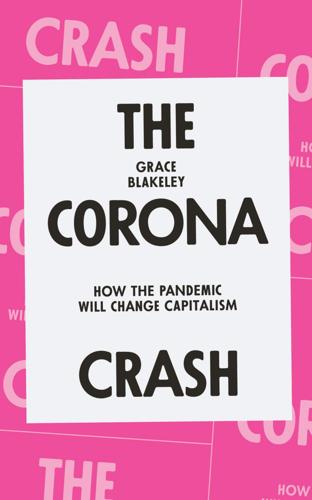
The Corona Crash: How the Pandemic Will Change Capitalism
by
Grace Blakeley
Published 14 Oct 2020
The stagnation of the past decade represented the death knell of the speculative mania that characterised the era of financialisation, which collapsed under the weight of its own excesses in 2008. Amid the pandemic, we have witnessed its replacement – state monopoly capitalism – begin to emerge. Within weeks of the declaration of a pandemic by the World Health Organisation on 11 March, it became clear that the public health emergency would cause widespread economic devastation. There were three quarters of a million confirmed cases of Covid-19 by the end of March and the constraints on ordinary economic activity imposed in response to its spread had brought the global economy to a standstill. The Great Lockdown – as the coordinated stay-at-home and social-distancing measures imposed by many states around the world have been termed – had an immediate impact on the labour market, output, incomes and consumption.
…
The challenge these states face was made abundantly clear when Cyclone Amphan struck India and Bangladesh in May 2020. India, a middleincome country with high levels of poverty, had more than 100,000 confirmed cases of Covid-19 and 3,000 deaths at the time of the disaster, while Bangladesh, one of the poorest countries in the world, had nearly 27,000 confirmed cases and around 400 deaths. Both states have weak public health infrastructures. They have struggled to roll out measures such as mass testing owing to state under-capacity and to achieve social distancing given the cramped living conditions faced by many families.24 The mass evacuations associated with Cyclone Amphan will only increase the challenge.
…
But it is not just in the Global South that the preexisting weaknesses created by uneven, financialised capitalist development are about to be exacerbated by the pandemic. So far, debt-laden economies in the Global North like the US, the UK and Ireland have managed to avoid a financial crisis as a result of the pandemic – but a senior official at the Federal Reserve has warned that looming bankruptcies could still trigger one.3 Governments have stepped in to defer consumer loan and credit card payments, act as guarantor for bank lending to small businesses, and pump almost unlimited liquidity into their domestic corporate sectors, which were already over-leveraged before the pandemic struck. But each of these measures rests on the assumption that firms and households will ultimately be able to repay the loans.
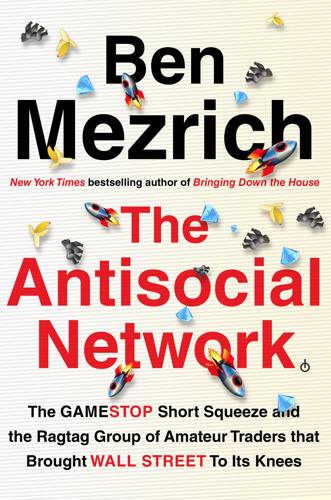
The Antisocial Network: The GameStop Short Squeeze and the Ragtag Group of Amateur Traders That Brought Wall Street to Its Knees
by
Ben Mezrich
Published 6 Sep 2021
Which meant that although they were both focused on mathematics at the same university, separated only by two years, they’d barely crossed paths even before the pandemic. Unlike Jeremy and despite Covid, Casper had chosen to experience his sophomore year from a dorm room on campus because he’d wanted to be closer to his friends. From what Jeremy had gleaned from the first few weeks of the fall semester—a barrage of quarantines, weekly testings, social distancing requirements—it didn’t seem like Casper would have it much better than Jeremy, as isolated as he was. It hadn’t taken long for Jeremy to realize—whether it was in a dorm surrounded by classmates, or in an apartment surrounded by strangers—a pandemic was something you went through alone.
…
Like many people around the world—trapped at home during the height of the pandemic—I watched the market turmoil that came to a head the week of January 25, 2021, with a mixture of amazement and amusement. There was no question that something dramatic was happening: a David versus Goliath story involving a ragtag group of amateur investors, gamers, and Internet trolls taking on one of the biggest hedge funds on Wall Street. But it wasn’t until I delved deeper into the story that I began to think that it was also something significant; that what we were all seeing, from our quarantine couches and our masked-up, socially distanced perches, was the first shot in a revolution—one that threatens to upend the financial establishment as we know it.
…
His jacket was already off, draped over a corner of his chair, but it didn’t make any difference. If he had been at his desk in that office on Madison Avenue, instead of lodged in an extra bedroom in his rented pandemic home in Florida, it would have been thirty degrees outside the picture window behind him—the kind of view generally reserved for Wall Street bankers, still staggering despite the sparse traffic snaking through the pincushion of Midtown and between the Covid-emptied sidewalks—and he’d have turned the heat as far down as it would go. But here in Florida, the rivulets of sweat ran down the back of his neck and dampened the seams of his brightly patterned socks.
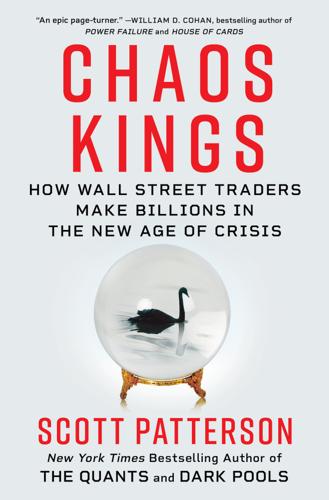
Chaos Kings: How Wall Street Traders Make Billions in the New Age of Crisis
by
Scott Patterson
Published 5 Jun 2023
But he wasn’t sure about the second question. Trump didn’t seem to be taking Covid-19 seriously at all. Nor were his top advisers. He asked Taleb if he could write a memo to the White House outlining his concerns. Taleb called Bar-Yam. “We should write something,” he said. It was January 24. Taleb, like Bar-Yam, had been studying the jarring mathematics of pandemics for years. Decades before, he’d learned about characteristics of financial markets that acted in ways similar to pandemics. Sudden crashes were extreme, often unpredictable events—like plagues and pandemics. He knew that highly contagious viruses can spread exponentially, resulting in mass death.
…
Uncertainty, as well as the fossil fuel industry’s serial lies and denials, had paralyzed the world. Literal flames were frying its forests. I met Litterman in Washington, D.C., hours after his Senate testimony. It would be my last face-to-face meeting for months—as well as his—as lockdowns gripped the country in the wake of the Covid-19 pandemic. Litterman told me he worried the Covid-19 virus would soon become a global pandemic, and he was right. “It’s a perfect example of when you have a risk-management problem—it’s urgent, you don’t know how much time you have,” he said. “With coronavirus, we wasted so many weeks.” The same was true for the climate. “We’ve got to slam on the brakes,” he said, referring to carbon emissions—and his experience with the flaming tanker.
…
At the same time, the financial community should not simply be reactive—it should provide solutions. “As this report is being finalized, the United States is in the midst of a worldwide pandemic, with deaths already exceeding 180,000 from COVID-19, and an associated economic collapse,” Litterman wrote in the foreword to the 196-page report. He noted the similarities between the pandemic and global warming, including the fact that delaying addressing both problems “can be devastating.” The report, released in the midst of the 2020 presidential election, ongoing fear about the pandemic, and nationwide protests over the murder of George Floyd, attracted almost no attention. Litterman wasn’t surprised.
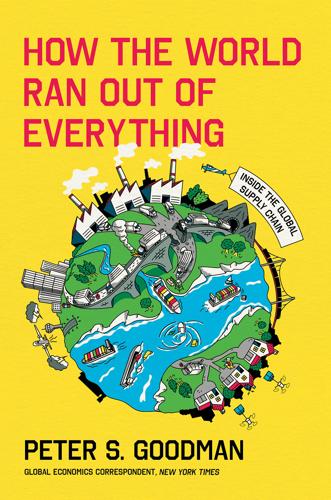
How the World Ran Out of Everything
by
Peter S. Goodman
Published 11 Jun 2024
See also China and manufacturing; container shipping industry as benefactor of international investors, 23–25, 30–33 Communist Party of, 25, 30–31, 66, 106, 284, 301 component assembly in, 42 container shipping development by, 101 COVID-19 pandemic and export reduction by, 41–44 COVID-19 pandemic origin in, 40–42 human rights in, 27–29, 31–34, 36, 287–88 special economic zones of, 25–26 Taiwan and military threat of, 32, 283–84 Tiananmen Square uprising, 27, 29 US pork exports to, 254 wages in, 171–72, 287 Zero COVID-19 policy of, 284, 342–43 China and manufacturing China as dominating force, 4, 11, 19–23, 33–38, 105 China’s factories in Mexico, 328–31, 343 COVID-19 pandemic procurement from, 82–89 intermediate goods shipped from (late twentieth century), 95 investors benefiting from, 4, 11, 19–23, 30–38 manufacturing dominance and diversification difficulty, 283–85, 291–95, 300 Mexico and Vietnam manufacturing cost vs., 347–48 Ningbo (city and port), 3, 39, 83–85, 89, 90, 102–3, 118–20, 158, 160 special economic zones, 25–26 US-China trade war and, 24, 42, 283, 285–91, 302, 330 WTO’s acceptance of China, 26–31, 34–37 China Container Industry Association, 106 China International Marine Containers, 106 China Ocean Shipping Company (Cosco), 101, 106, 153 China-US trade competition.
…
Aye was among the nearly three hundred workers at the Greeley slaughterhouse who were hospitalized with severe COVID-19 symptoms during the first four months of the pandemic, and one of at least five people who died6. And the Greeley plant was merely one facility within an enormous industry consumed by the virus. Across the United States, 59,000 meatpacking workers7 contracted COVID-19 over the course of 2020, with 269 people dying. That so many ordinary workers found themselves in harm’s way in the midst of a pandemic was no mere misfortune. It was a direct outgrowth of the business plans pursued by their corporate bosses.
…
Coronavirus Tests Demand for Apple’s Flagship Product,” Wall Street Journal, March 26, 2020. 9. seventy scheduled runs: “919 blank sailings on Transpacific and Asia-Europe,” Sea-Intelligence, May 4, 2021, https://www.sea-intelligence.com/press-room/65-919-blank-sailings-on-transpacific-and-asia-europe. 10. 126 scheduled sailings: US International Trade Commission, “The Impact of the Covid-19 Pandemic on Freight Transportation Services and U.S. Merchandise Imports,” https://www.usitc.gov/research_and_analysis/tradeshifts/2020/special_topic.html. 11. waters of Southeast Asia: Costas Paris, “Ocean Carriers Idle Container Ships in Droves on Falling Trade Demand,” Wall Street Journal, April 8, 2020. 12. recycling operations: Costas Paris, “Cargo Vessels and Cruise Ships Line Up for Scrapping,” Wall Street Journal, November 10, 2020. 13. between 15 and 30 percent: US International Trade Commission, “The Impact of the Covid-19 Pandemic,” fn. 9. 14. global freight-carrying capacity: Data furnished by Everstream Analytics. 15.
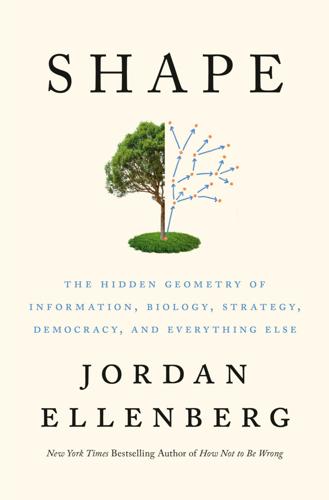
Shape: The Hidden Geometry of Information, Biology, Strategy, Democracy, and Everything Else
by
Jordan Ellenberg
Published 14 May 2021
His argument on the random walk was meant to show that, after the number of mosquitoes in a region had been reduced, it would take quite some time for enough mosquitoes to wander into the area to push it back over the epidemic threshold. That’s a key idea for the battle against COVID-19, too. We don’t need to eliminate every transmission of the disease, which is a good thing, since that’s impossible. Epidemic control is not about perfectionism. 77 TRILLION PEOPLE WILL CATCH SMALLPOX NEXT YEAR In the spring of 2020, at the outset of the COVID-19 pandemic in the United States, the disease was clearly tracing out the kind of geometric progression you don’t want to see. Cases of COVID-19 were growing by about 7% every day. That meant every week the cases were getting multiplied by 1.07 seven times, which amounts to a 60% increase.
…
.* Chomsky retorts that, be that as it may, methods like Google’s provide no insight into what language really is; they’re like Galileo observing the parabolic arc of a projectile before Newton stepped in to lay down the laws. They’re both right, about language, and about pandemics, too. You can’t do without a certain amount of both curve fitting and reverse engineering. One of the most successful modelers of the pandemic in 2020, a recent MIT graduate named Youyang Gu, ably combined both approaches, using a Ross-style model of differential equations designed to mimic the known mechanics of COVID-19 transmission, but using machine learning techniques to tune the many unknown parameters in that model to match the observed pandemic-so-far as well as possible. We need to catalog as much as we can about what happened yesterday if we want to predict what’s happening tomorrow, but we are never going to have billions of past pandemics to look at, and if we want to be prepared for the next viral novelty, we had better look for laws.
…
The contemporary world is wrinkled as heck. Before we even knew there was a pandemic, COVID-19 was on planes between China and Italy, between Italy and New York, between New York and Tel Aviv. If we somehow didn’t know there was such a thing as an airplane, we could infer it from the nature of the pandemic spread. And yet the standard geometry of the Earth’s surface still plays a role. The hardest-hit parts of the United States in the spring of 2020 weren’t the cities with the international airports and the jet-setting residents; they were the places you could drive from New York. Pandemics travel both fast and slow, in whatever vehicle they can hitch a ride on.

Amazon Unbound: Jeff Bezos and the Invention of a Global Empire
by
Brad Stone
Published 10 May 2021
Jack Young – Places/Alamy Vociferous opposition greeted Amazon’s decision to locate half of its second headquarters in Long Island City, Queens, New York. Protesters unfurled anti-Amazon banners and jeered at an HQ2 city council hearing in January 2019. Amazon cancelled its plans to build new offices there only days later. Drew Angerer/Getty Images At the start of the Covid-19 pandemic, criticism flooded in from Amazon’s hourly workforce. Despite instituting temperature checks, social distancing guidelines, and other safety measures, some employees were still getting sick and workers protested that the company was prioritizing sales over safety. Leandro Justen After it resisted making Bezos available to testify before Congress, Amazon was forced to relent.
…
track the location of employees inside warehouses: Mark Di Stefano, “Amazon Drops Pandemic Test to Track Warehouse Workers Through Wi-Fi,” The Information, November 30, 2020, https://www.theinformation.com/articles/amazon-drops-pandemic-test-to-track-warehouse-workers-through-wi-fi (January 26, 2021). in twenty-three states: Paris Martineau, “Amazon Quietly Expands Large-Scale Covid Testing Program for Warehouses,” The Information, September 24, 2020, https://www.theinformation.com/articles/amazon-quietly-expands-large-scale-covid-testing-program-for-warehouses (January 26, 2021). thousands of tests a day across 650 sites: “Update on COVID-19 Testing,” Amazon, October 1, 2020, https://www.aboutamazon.com/news/operations/update-on-covid-19-testing (January 26, 2021).
…
For despite the heightened suspicion of big tech and of Amazon’s tightening grip over Western economies, the company had become a salvation of sorts in the year 2020—a life preserver, thrown to millions of households around the world, as they quarantined amid the relentless assault of the Covid-19 pandemic. CHAPTER 15 Pandemic Amazon’s recent challenges seemed like mere speed bumps. The HQ2 misadventure, the drama in Bezos’s personal life, the loss of the JEDI contract, and battles with Donald Trump and antitrust regulators—they barely slowed Amazon’s inexorable rise. Jeff Bezos and his global empire appeared, at least in the moment, totally unbound from the laws of corporate gravity that slowed the growth of large enterprises, inhibited their agility, and clouded the judgment of senior leaders with exorbitant wealth.
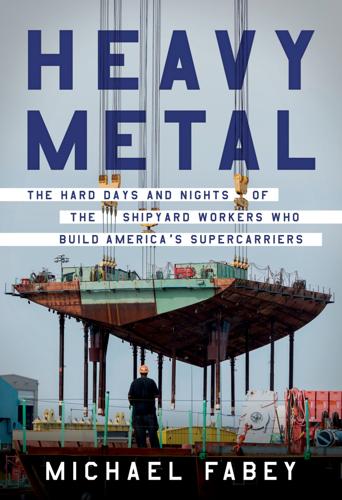
Heavy Metal: The Hard Days and Nights of the Shipyard Workers Who Build America's Supercarriers
by
Michael Fabey
Published 13 Jun 2022
Courtesy of Hampton Roads Naval Museum Newport News Shipbuilding president Jennifer Boykin shows Caroline Kennedy the sweet spot to smash the champagne bottle for the carrier John F. Kennedy. It was not the first such moment for either. Courtesy of the author After Covid cases started in Newport News Shipbuilding, the yard started taking steps to protect the workforce, mandating masks, social distancing, and temperature checks at the gates. The pandemic wreaked havoc with shipyard shifts, supply chains, and shipbuilding schedules. Courtesy of Huntington Ingalls Industries To prove the Ford, Kennedy, and later carriers are combat ready, even with their new systems, the Ford underwent shock trials in the summer of 2021, during which the US Navy exploded underwater charges with the force of 3.9 magnitude earthquakes.
…
To help develop action plans to address those needs, while keeping the yard operational and Covid-19 compliant, on April 2, yard president Jennifer Boykin established a Covid-19 Crisis Action Group (CAG) of team leaders from all over the yard to work on recommendations on how to safely and efficiently operate during the pandemic. A new vice-presidential steering committee considered recommendations and sent ones it approved to Boykin. This prevented VPs from coming up with individual plans for their own operations and interfering with overall company interests. Four subteams formed under the CAG helped the yard respond to the pandemic quickly and with some agility.
…
Technical issues regarding the elevators and other systems now delayed the first deployment to 2022 at the earliest, or about five years after the ship was commissioned into service. Worse, for those on CVN 79, Covid-19 and the Ford fixes continued to delay Kennedy work. During normal times, the yard ramped up the workforce to catch up. The virus, though, prevented anything like that. Like the Outlaws, Jennifer Boykin hoped everyone in the region would take Covid-19 seriously as the virus refused to wane in the summer months. In a July 14 message to yard workers, she noted not only a rise in community cases, but also some “social-distancing lapses during eating breaks inside the yard.” As a result, she lamented, the yard saw the highest spikes in the region and the facility thus far in July.

Restarting the Future: How to Fix the Intangible Economy
by
Jonathan Haskel
and
Stian Westlake
Published 4 Apr 2022
Not everyone can work from home, but an estimated 47 percent of the UK workforce was working remotely in the summer of 2020 as a result of the COVID-19 pandemic. What will the effects of WFH be on an economy increasingly reliant on intangibles? Working from Home versus Working at Work At least some employees rather enjoy working from home.35 In doing so, they avoid commuting, deal with caretaking responsibilities, minimise distractions from coworkers, maintain social distancing, and perhaps even enjoy more free time. On the employer side, many firms whose employees are working from home are asking themselves, What’s the point of paying sky-high rents solely for the privilege of an empty office, surrounded by other empty offices?
…
Here, too, we see a paradox as many people complain of a growing sense of frenetic, stressful, and wasteful contestation in economic life, with the objectively affluent, and even the rich, seeming to have to work harder and harder to keep up. Fragility. The COVID-19 pandemic has shown that even the world’s richest economies are not immune to natural forces. Indeed, the damage caused by the pandemic is linked to the complexity and sophistication of the economy. Our large, dense cities, our complex international supply chains, and the unprecedented interconnectedness of our global economy allowed the virus to leap from country to country and increased the cost of the lockdowns needed to control it. Even fifteen years ago, a pandemic outbreak in a remote area of China would be at most a minor news story for the rich world.
…
Fragility The idea that modern societies’ vulnerability to threats such as pandemics and climate change comes from our failure to invest in intangibles is counterintuitive. Indeed, most people would assume the opposite: that fragility is caused by worrying too much about fluffy things like intangibles, and not enough about robust physical things. When the COVID-19 pandemic began, much public debate focused on the tangible capital necessary to fight it. International observers were impressed with how fast China built a new COVID-19 hospital in Wuhan. Westerners nervously wondered if they could build new hospitals as quickly and worried that they might not have enough ventilators to meet peak demand or enough factories to produce protective equipment.
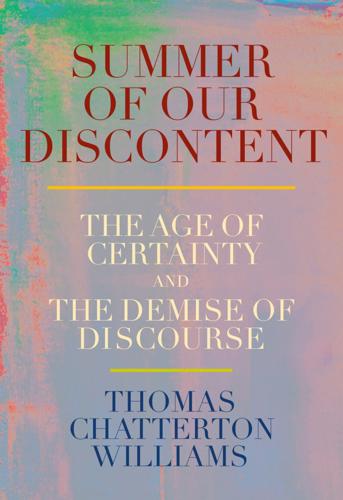
Summer of Our Discontent: The Age of Certainty and the Demise of Discourse
by
Thomas Chatterton Williams
Published 4 Aug 2025
” *10 Harold Clarke, Marianne C. Stewart, and Karl Ho, “Did Covid-19 Kill Trump Politically? The Pandemic and Voting in the 2020 Presidential Election,” Social Science Quarterly 102, no. 5 (2021): 2194–209, doi:10.1111/ssqu.12992. *11 By November, a 6:00 p.m. curfew was put in place, with even grocery stores shutting down. Crucially, however, there were no significant further disruptions to the schools. *12 It had been 72 percent as recently as May. Alec Tyson, Courtney Johnson, and Cary Funk, “U.S. Public Now Divided over Whether to Get COVID-19 Vaccine,” Pew Research Center, Sept. 17, 2020.
…
.”[*5] For a not insignificant portion of the American left and center—and also some of the right—who were sidelined from normal life, homeschooling and working remotely or panicking about not working, and who were being antagonized into a near-constant state of anxiety by a singularly juvenile and polarizing president who seemed not only not to grasp the severity of the pandemic but even to revel in tempting catastrophe—as he had after Charlottesville, come to think of it—the possibility that the country had a malignant racial sickness began to seem undeniable. Many of these people understood themselves to be white and were newly alive to their own physical and spiritual vulnerability but also freshly aware of the disproportionate toll COVID-19 had been taking on communities they did not belong to. That discrepancy, a consistent theme in the mainstream media’s coverage in those early weeks and months,[*6] seemed to suggest problems of a more systemic nature.
…
They accepted these sacrifices as awful but necessary when confronted by an otherwise unstoppable virus. And then, from one day to the next, they were told with a straight face that this had all been done in vain. “The risks of congregating during a global pandemic shouldn’t keep people from protesting racism,” NPR announced with eyebrow-raising certitude, citing a letter signed by dozens of American public health officials and disease experts. “White supremacy is a lethal public health issue that predates and contributes to COVID-19,” the letter further explained. One prominent epidemiologist went still further, arguing that the public health risks of not protesting for an end to systemic racism “greatly exceed the harms of the virus.”
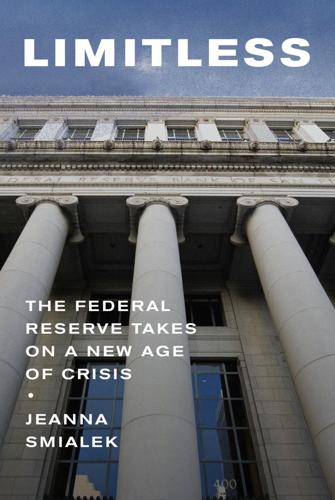
Limitless: The Federal Reserve Takes on a New Age of Crisis
by
Jeanna Smialek
Published 27 Feb 2023
The situation was serious, Powell told his colleagues. They needed to think it through. They ran through an analysis of what could happen with the virus and what it would mean. What were the economics of a pandemic in 2020? “There could be a very large social distancing impact on demand,” Stacey Tevlin, the Fed Board’s head of research and statistics, told her colleagues. The phrase “social distance” was still a new one. It sounded alien, almost funny. “How bad are we talking, Rich?” Powell asked his second-in-command, searching for a worst-case scenario. “Probability distributions have means, right tails, left tails,” Clarida hemmed, referencing the common statistical bell curve: The right tail includes low-probability good outcomes, the left low-probability bad ones, and the middle is made up of more likely, less exciting scenarios.
…
But as of Powell’s tenure, decades of crises and a few pivotal characters had fundamentally changed the Fed’s purpose and function in America’s economy. By the time we all learned the term “social distancing” and became armchair experts on mRNA in 2020, the Fed had become central banker to the world, the most important economic policy setter in history, and the enabler of modern finance. And the following year, as inflation took off in the wake of the government’s sweeping response to the pandemic, it was the Fed that America would look to as its first line of defense. * * * — In the modern era, the central bank’s most basic job is—as it has been for decades—to keep the economy humming along at a steady but sustainable pace.
…
The decision-making and line-drawing had not been easy, and it had often been contentious. Debate over what position the Fed ought to play in modern America—especially in times of crisis—seemed destined to rise again in the future. But as that sad and socially distanced winter break approached, the Fed was emerging from the drama of late 2020 relatively unscathed. The public health situation remained precarious, but America’s economy had held up through its first pandemic year, one many still hoped would be its last. The waves of evictions that policy makers had so feared had never materialized, and the job market was on the mend. Mnuchin’s decision to kill the Fed lending programs had not disrupted markets, perhaps because investors were looking toward a brighter future.
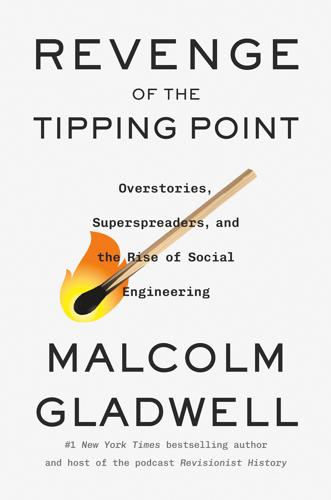
Revenge of the Tipping Point: Overstories, Superspreaders, and the Rise of Social Engineering
by
Malcolm Gladwell
Published 1 Oct 2024
It had emerged in the city of Wuhan in central China the previous December, and had just begun to show up, here and there, throughout Europe and the rest of the world. Could it turn into something big? Almost twenty years earlier, a close cousin of COVID—known as SARS—had surfaced in southeastern China, terrifying health officials. But SARS petered out before it could do widespread damage in the rest of the world. And it was possible to believe that this was just another false alarm. The signature events of the early stages of the pandemic—the mass lockdowns, the mask mandates, the social-distancing rules that upended life around the globe, the endless sirens in the night—were still weeks and months away. In February 2020, there were optimists and pessimists, and the leadership team at Biogen was among the optimists.
…
That’s around thirty hours in transit at the very least: Wuhan to Shanghai, Shanghai to Paris, Paris to Boston’s Logan Airport. After he landed in Boston, he tested positive for COVID. This was the early days of the pandemic. No one was taking the kind of precautions that would become commonplace a month later. The student landed at Logan. Stood in line in immigration. Made his way from Logan to his apartment in Boston. Did he have roommates? Maybe he did. If so, they almost certainly weren’t wearing masks or practicing social distancing. This was surely a public-health disaster in the making. But it wasn’t. The student infected no one else. In fact, the whole incident was so ho-hum that the executive director of the city’s public-health commission went out of her way to tell people not to worry: “Right now, we are not asking Boston residents to do anything differently,” Rita Nieves said.
…
It has to do with the unsettling reality of how epidemics spread. In all of the exhaustive (and ultimately exhausting) commentary on the COVID pandemic, this particular issue rarely came up—perhaps because it raises too many awkward questions, or perhaps because the assumptions that most of us carried into the COVID pandemic were simply wrong. But the next time around, when another deadly virus sweeps the globe, I promise you it will be front and center. 2. The Boston region’s first known COVID case was detected on January 31. A Chinese student studying at the University of Massachusetts flew back to Boston from Wuhan in China, the city where the epidemic began.
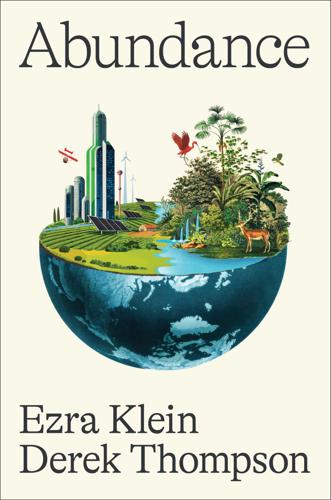
Abundance
by
Ezra Klein
and
Derek Thompson
Published 18 Mar 2025
Democrats carried those lessons into the COVID pandemic. They met the crisis with overwhelming fiscal force, joining with the Trump administration to pass the $2.2 trillion CARES Act and then adding the $1.9 trillion American Rescue Plan Act and the trillion-dollar infrastructure bill on top. Democrats made clear that they preferred the risks of a hot economy, like inflation, to the threat of mass joblessness. They succeeded. But solving the crisis of the pandemic economy created a new crisis for the post-pandemic economy: too much demand. Supply chains that had been battered by the pandemic and Russia’s invasion of Ukraine began to break.
…
Andy Markowitz and Jenny Rough, “List of Coronavirus-Related Restrictions in Every State,” March 17, 2020, updated May 1, 2024, https://www.aarp.org/politics-society/government-elections/info-2020/coronavirus-state-restrictions.html; Victor Fiorillo, “Yes, Even Your Outdoor Socially Distanced Thanksgiving Party Is Banned,” Philadelphia, November 17, 2020, https://www.phillymag.com/news/2020/11/17/outdoor-thanksgiving-philadelphia-covid/; Gabrielle Connor, Vaishnavi Vaidya, Jennifer Kolker, and Ran Li, “Indoor Dining and COVID-19: Implications for Reopening in 30 U.S. Cities,” Urban Health Collaborative, Drexel University, September 2020, https://drexel.edu/~/media/Files/uhc/Additional%20Project%20Documents/IndoorDiningCOVID19.ashx?la=en; “State Alcohol-Related Laws During the COVID-19 Emergency for On-Premise and Off-Premise Establishments as of June 15, 2020,” National Institute on Alcohol Abuse and Alcoholism/National Institutes of Health, June 15, 2020, https://alcoholpolicy.niaaa.nih.gov/sites/default/files/file-page/apis_-_covid-19_memo_6.15.20_508c.pdf. 10.
…
But two years later, the coauthor of a large analysis of global masking research concluded that “there is just no evidence that [masks] make any difference, full stop.”11 To bring the pandemic to heel, the world needed something more universally applicable than a rule, or a law, or a border control policy. We needed a global fix: a medicine that would achieve immunity protection at scale. What happened next is a kind of miracle. Before 2020, no vaccine in American history had ever gone from the lab to the public in less than three years.12 The COVID vaccines achieved this feat in about ten months. In December, the US Food and Drug Administration issued an emergency authorization for two COVID therapies based on mRNA technology—the very same idea that the science establishment rejected when Katalin Karikó had suggested it, decades earlier.13 The first vaccine came from Pfizer, working with the German firm BioNTech.

The Hype Machine: How Social Media Disrupts Our Elections, Our Economy, and Our Health--And How We Must Adapt
by
Sinan Aral
Published 14 Sep 2020
We organized Zoom meetings to brainstorm how we could contribute to efforts to address the pandemic. While stressing the need to first do no harm, I reached out to my contacts at social platforms around the world to see how we could help. In a week, we created three projects supporting national and international health organizations, measuring the effect of social distancing on COVID-19 spread and fighting pandemic misinformation online. I reached out to Facebook and suggested a collaboration. They responded quickly and said that, since we already had a data licensing agreement, they could share data right away. We focused on modeling the effect of social distancing on the pandemic’s spread.
…
In the same way negative social media content creates negative value on the Hype Machine, influencers can encourage both positive and negative behaviors. When Charnas advertised her flight out of New York City during the COVID-19 pandemic, public health officials criticized the communication as harmful for influencing her followers to do the same. Our research showed that social media connections created geographic and social spillovers that dramatically affected adherence to social distancing during the pandemic. A wealth of information creates a poverty of attention. —HERBERT SIMON In September 2016, as Alexander Nix, the now-disgraced former CEO of Cambridge Analytica, strode confidently onstage at the Concordia Annual Summit in New York to talk about “the power of big data in global elections,” the conference sound system played “Bad Moon Rising” by Creedence Clearwater Revival as his hype music.
…
In Nigeria, for example, a hoax meme suggested you could cure the disease by excessively drinking salt water, which led to several deaths. A similar pattern repeated itself during the COVID-19 pandemic. While social media delivered lifesaving information and provided human connection at a time of forced social distancing, misinformation and hoax cures also spread around the world, hindering public health efforts to contain the pandemic. The Transparency Paradox Immediately after the Cambridge Analytica scandal broke, in an interview by Martin Giles for the MIT Technology Review, I predicted the Hype Machine was about to face a dilemma that would pull it in competing directions.
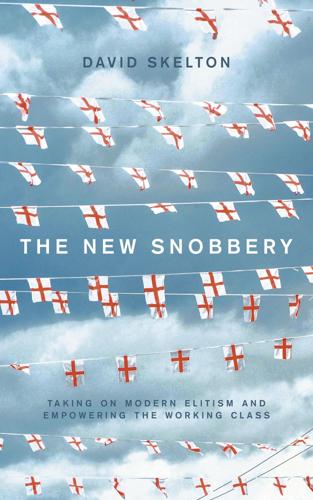
The New Snobbery
by
David Skelton
Published 28 Jun 2021
That promise must still be delivered. COVID-19 – A CALL TO ACTION Our national experience during the Covid-19 pandemic has made the necessity for the promised change even more urgent. The pandemic has clearly shone a light on the tilted nature of the economy, and as we have previously discussed, the lowest paid have been more exposed to both the health and financial risks of the virus. Lockdowns have meant that high-income earners have built up savings, whereas those on lower incomes have seen savings disappear and debt grow. The fact that people working in elementary jobs were more than twice as likely to die of Covid was a stark reminder that the UK’s economic divides aren’t merely theoretical.
…
INDEX Adams, Gladstone 1 Alipoor, Javaad 1 Ant and Dec 1 Arts Council 1 Arts and Humanities Research Council 1 Ashcroft, Lord 1 associative mating 1 Atlas Shrugged (Rand) 1 Attlee, Clement 1, 2, 3 Bale, Tim 1 banking crisis (2008) 1 BBC coverage of EU referendum 1 diversity targets in 1 identity politics/wokeism in 1 middle-class dominance of 1 working-class representation in 1 Bevin, Ernest 1 Beyond the Red Wall (Mattinson) 1 Blair, Tony 1, 2, 3 Bloodworth, James 1, 2 Blue Labour 1 Bohonos, Jeremy 1 Bourdieu, Pierre 1, 2 Brahminisation of Social Democratic parties 1 Brecht, Bertolt 1 Brennan, Jason 1 British Library 1, 2 British Medical Journal 1 British Museum 1 British Social Attitudes Survey 1, 2 Brooks, David 1, 2, 3 Brown, Gordon 1, 2 Buerk, Michael 1 Burchill, Julie 1 Bush, Vannevar 1 Butler, Dawn 1 Cable, Vince 1 Cameron, David 1, 2, 3, 4 Carry On films 1 Cartoon Museum 1 Cass, Oren 1 Cedefop polls 1 Centre for Cities 1 Chamberlain, Joseph 1 Change UK 1 Channel 4 News 1 Chartered Institute of Personnel and Development 1 Churchill, Winston 1, 2 Class Ceiling, The (Friedman and Laurison) 1 Clegg, Nick 1 Clinton, Bill 1 community building 1 Conservative Party economic policies of 1 membership of 1 pro-worker politics 1 quango appointments 1 on social issues 1 values of 1 working-class support for 1, 2 corporate governance 1 Countryfile 1 Covid pandemic 1, 2, 3, 4, 5, 6 Cowley, Tim 1 Cruddas, Jon 1 cultural capital 1 culture and cultural capital 1 and ‘four lads’ meme 1 and identity politics/wokeism 1 middle-class domination of 1 as national unifier 1 pro-worker policies 1, 2 representation of working class 1, 2 working-class values in 1 Davie, Tim 1, 2, 3 Davis, Andrew 1 Deneen, Patrick 1 dignity of work 1 Disraeli, Benjamin 1, 2, 3 Durham University 1 economics and corporate governance 1 and Covid pandemic 1 decline of skilled work 1 and dignity of work 1 impact of changes on working class 1 industrial policies 1 inevitability of change 1 investment in workers 1 and meritocracy 1 pro-worker policies 1, 2, 3 revival of manufacturing 1 and shareholder value theory 1 and social mobility 1 wage stagnation 1, 2, 3, 4 Economist, The 1 education and access to professions 1 David Skelton’s experience of 1 and identity politics/wokeism 1 pro-worker policies 1, 2 reinforcement of class divide after 1 universities in 1, 2 and vocational/technical education 1, 2 white working-class children in 1 working class let down by 1, 2 Eliot, T.
…
Twelve years after the banking crash came another catastrophe that hit hardest those communities who were suffering the most from over a decade of stagnating real wages. With over 100,000 deaths, Covid-19 was devastating for the entire country, but the lower down the income scale you were, the worse hit you were by both the economic and the health impacts of Covid. Put simply, it’s easier to work from home in most middle-class jobs than in most working-class jobs, and social distancing was simply not an option in many unskilled positions. One study found that those with household incomes of over £50,000 a year were six times more likely to be able to work from home than those whose household income was less than £20,000.
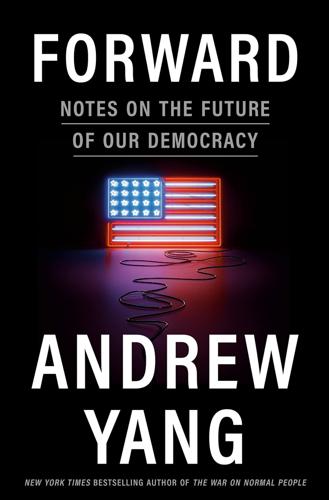
Forward: Notes on the Future of Our Democracy
by
Andrew Yang
Published 15 Nov 2021
Let’s move this country of ours—the one we love and will leave to our children—Forward. AFTERWORD I wrote this book while I was deciding to run for mayor of New York City. It was both an easy and a hard decision. Seeing New York City hollowed out by the COVID-19 pandemic was heartbreaking. Thousands of restaurants and small businesses closed, Fifth Avenue was partially boarded up, and Broadway’s lights went out. More than 30,000 New Yorkers died from COVID-19, and, according to one estimate, more than 200,000 left the city’s metro area in 2020. The coronavirus devastated New York and made living among millions of other people a drawback instead of a strength.
…
Here are some of the indicators Katherine Gehl and Michael Porter, The Politics Industry: How Political Innovation Can Break Partisan Gridlock and Save Our Democracy (Boston: Harvard Business Review Press, 2020), 81. Economists estimate that 42 percent Jose Maria Barrero, Nicholas Bloom, and Steven J. Davis, “COVID-19 Is Also a Reallocation Shock,” National Bureau of Economic Research, May 2020. One in six Americans Megan Leonhardt, “1 in 10 Americans Are Struggling to Afford Enough Food amid the Pandemic,” CNBC, Sept. 10, 2020; Claire Hansen, “1 in 5 Young Children Don’t Have Enough to Eat During the Coronavirus Pandemic,” U.S. News & World Report, May 6, 2020. Thirty percent of Americans missed Igor Popov, Chris Salviati, and Rob Warnok, “Missed Payments Stabilize in June—at Alarming Levels,” Apartment List, June 9, 2020.
…
Facebook had just lost Robert Channick, “Nearly 1.6 Million Illinois Facebook Users to Get About $350 Each in Privacy Settlement,” Chicago Tribune, Jan. 14, 2021. CHAPTER 14: LOYALTY CUTS BOTH WAYS The data shouted the same thing Mark E. Cziesler et al., “Mental Health, Substance Use, and Suicidal Ideation During the COVID-19 Pandemic—United States, June 24–30, 2020,” CDC, Aug. 14, 2020. Racism against Asian Americans “Covid-19 Fueling Anti-Asian Racism and Xenophobia Worldwide,” Human Rights Watch, May 12, 2020. Asian Americans had historically voted “The Changing Racial and Ethnic Composition of the U.S. Electorate,” Pew Research Center, Sept. 23, 2020. The final tally “Kentucky Results,” NPR, accessed March 1, 2021, apps.npr.org/elections20-primaries/states/KY.html.
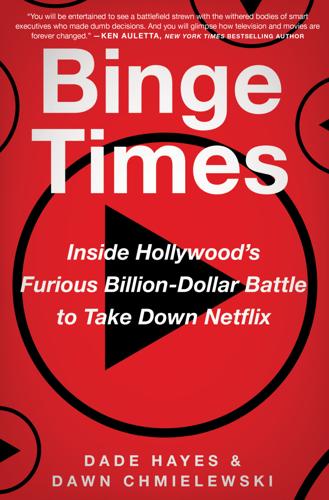
Binge Times: Inside Hollywood's Furious Billion-Dollar Battle to Take Down Netflix
by
Dade Hayes
and
Dawn Chmielewski
Published 18 Apr 2022
See also NBCUniversal acquisition of NBCUniversal, x, 84, 124–32 acquisition of Sky, 96, 128–29, 131–32, 307 Disney and, 126–27, 152, 176 streamatis personae, x TV Everywhere, 83, 84 Xfinity, 101, 123–24, 198, 199, 248 Comedy Central, 144, 221 Coming 2 America, 265, 298 Community, 137–38, 266 Conjuring, The: The Devil Made Me Do It, 305 Connelly, Tim, 116 Consumer Electronics Shows, 56–57, 116 Conway, Ron, 99 Cook, Tim, ix, 6, 100, 103–4, 105, 178–79, 259 Cooper, Morgan, 113 Coppola, Francis Ford, 156 Coppola, Sofia, 103 Cosby Show, The, 212 Cotillard, Marianne, 265 COVID-19 insurance, 275 COVID-19 pandemic, xiii–xx, 31, 110, 188, 192, 230, 244, 249–50, 251, 257, 271–72, 284–85 COVID-19 vaccines, 285 Crackle, 140 Crawford, Joan, 29 Crawford, Katherine, 46 Crazy Rich Asians, 253, 304 Crédit Lyonnais, 299 Criterion Collection, 156–57 Crown, The, 56, 75, 98, 159–60, 184, 237 Crudup, Billy, 6–7, 10, 98, 247 Cruella, 278, 305 Cruise, Tom, 283 Crunchyroll, 156, 221 CSI: Crime Scene Investigation, 143 Cuarón, Alfonso, 32, 156, 233 Cuban, Mark, 23, 255 Cue, Eddy, ix, 10, 100, 101, 102, 133–34, 179–82, 184–85 Cukor, George, 29 Cuoco, Kaley, 282 Curai, 49 Cuse, Carlton, 152 Daily Chill, The, 119 Daily Essentials, 116, 118, 119 Damon, Matt, 295 Dancing with the Stars, 243 Daniel, Kareem, xi, 277–78 Dark, 233 Da Vinci Code, The, 192 Davis, Colin, 114 DAZN, 135, 141 DC Universe, 156 Deadline, xvii, 288, 295 Dean, Howard, 53 Dear Evan Hansen, 213 Dear White People, 278 Death on the Nile, 272 Defending Jacob, 104 DeGroff, Dale, 204 Delrahim, Makan, 63 Del Toro, Guillermo, 113, 156 Demimonde, 223 De Niro, Robert, 11–12, 15–16, 302, 310 Denson, Denise, 87 Desperate Housewives, 79, 80, 82 DeVillier, Lauren, 311 DiCaprio, Leonardo, 12, 31, 156, 260, 310 Dick, Kirby, 186 Dick, Philip K., 295, 296 Dickinson, 104, 179, 245 Die Hart, 118 Diller, Barry, 108–9 Dinklage, Peter, 61, 77 Diop, Mati, 15 DirecTV, 62, 123, 134, 218–20, 289 Discovery, 5, 128 acquisition of Scripps, 131, 306 proposed merger with WarnerMedia, 289–90, 303, 306–8, 313–14 Discovery+, 307–8 Dishmantled, 118 Dish Network, 89, 123 Disney (Walt Disney Company), 5, 78–96, 271–80 acquisition of 21st Century Fox, 63, 95–96, 128–29, 131, 152, 168–70, 306 acquisition of Capital Cities/ABC, 78–83, 107, 122, 126 alliance with Apple, 78, 79–81, 83–84, 173 ClassPass, 311 COVID-19 pandemic and, 271–72, 275–76, 277, 278 deal with Hulu, 63, 88, 95, 131, 145, 150–53, 168, 318 digital wake-up call, 79–84 Go Network, 90–91 Investor Days, 103–4, 167–68, 177, 208, 211, 223, 277, 278 NBCUniversal and, 126–27, 307 Netflix and, 50–51, 79, 87–89, 126, 160, 175–76, 230–31, 234–35, 317–18 streamatis personae, xi streaming, 79–96, 124, 135–36, 167–77, 272–80, 308 TV Everywhere, 83–88 Disney, Walt, 147 Disney+, xviii, 152, 167–77, 196, 216, 230–31, 272–80, 308–9, 317–18 launch difficulties, 241–44 Premier Access, 260, 276–77, 279, 305 subscribers, 175–76, 190, 210–11, 244, 252–54, 260, 279, 305, 317 Disney Consumer Products, 277 Disney Cruise Line, 176 Disney FastPass, 274 Disneyland, xiii, 176, 243, 271–72 DisneyLife, 93–94 Disney Vacation Club, 243 Disney Vault, 273–74, 278 DisneyWar (Stewart), 90 Dockery, Michelle, 104 Dr.
…
That scenario was championed by cinephiles in the spring of 2021 when Hollywood’s famed Cinerama Dome and ArcLight Cinemas announced they were closing due to the pandemic. “Netflix, you know what to do,” tweeted journalist Yashar Ali. Show-business glamour isn’t the first thing that comes to mind during a trip through the area surrounding Icon. Tinged with grit, it has witnessed more than a century of boom-and-bust cycles. A Denny’s restaurant two blocks down Sunset is a favorite of panhandlers. Day laborers pack the parking lot of Home Depot just on the other side of the freeway. In 2019, before the COVID-19 pandemic forced a widespread rethink of office spaces in many business sectors, Netflix announced a major expansion to a building across the street.
…
Moviegoing, one of the oldest rituals in American cultural life, had officially returned after the depths and deprivations of the coronavirus pandemic. The atmosphere in the theater turned celebratory, even giddy, a mood uncannily matched by the high-spirited film itself. The premiere of In the Heights was kicking off the twentieth annual Tribeca Film Festival, the first festival in North America to feature in-person screenings since COVID-19 hit in early 2020. “Before COVID,” Tribeca cofounder De Niro said before the lights went down, “the simple act of going out to a movie theater was something that you would take for granted.

The Authoritarian Moment: How the Left Weaponized America's Institutions Against Dissent
by
Ben Shapiro
Published 26 Jul 2021
Treating science as politics undermines science; treating politics as science costs lives. That’s precisely what the authoritarian Left does when it invokes The ScienceTM to justify itself. We saw The ScienceTM prevail over science itself repeatedly during the pandemic, to ugly effect. Perhaps the most robust finding with regard to Covid—a finding replicated across the globe—was that large gatherings involving shouting and singing were inherently more dangerous than sparsely populated, socially distanced situations. The media quickly seized on this fact, for example, to chide anti-lockdown protesters for their irresponsibility, claiming that even outdoor protests could be unsafe.1 Meanwhile, local officials in many areas went beyond the science itself, closing beaches, hiking trails, and even public parks—areas that were in no way chief vectors for transmission.2 Republicans who refused to close beaches in largely unaffected areas, like Governor Ron DeSantis of Florida, were heavily criticized.3 All of the pro-lockdown policy and rhetoric was justified with appeals to science.
…
Maura Jones, explained, “I would argue that, yeah I’m a doctor and I encourage you to social distance and I care about coronavirus and I know that it’s a real threat, but racism is, to me to my family, the bigger threat right now and it has been for hundreds of years.” Dr. Jasmine Johnson joined a protest by the University of North Carolina Student National Medical Association with a sign reading, “Racism is a pandemic too!” She claimed that racism was the root cause of racial disparities in death statistics from Covid—and therefore suggested that protest was actually a public health good.11 Ashish Jha, dean of the Brown University School of Public Health, made the most insane case of all: that the protests would fuel Covid spread, but that this didn’t matter.
…
In late 2020, Klaus Schwab, founder and executive chairman of the World Economic Forum, laid out his support for what he called “the Great Reset.” Schwab explained in Time that the Covid pandemic had pushed forward a key question: “Will governments, businesses and other influential stakeholders truly change their ways for the better after this, or will we go back to business as usual?” Now, this was truly an odd question. Prior to the pandemic, the world economy was in the midst of a boom time. Unemployment rates in the United States had dropped to record lows; economic growth was strong. What, then, was the impetus for corporations “changing their ways for the better”?
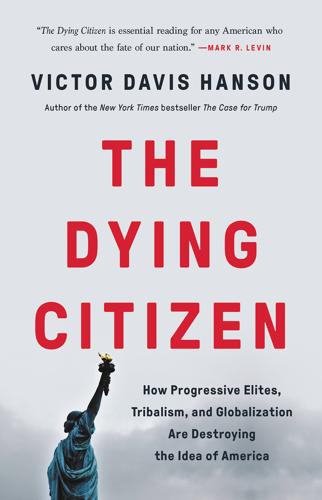
The Dying Citizen: How Progressive Elites, Tribalism, and Globalization Are Destroying the Idea of America
by
Victor Davis Hanson
Published 15 Nov 2021
Somehow tribal tensions superseded even notions of public health in a time of pandemic. Over one thousand health care professionals nationwide offered an unapologetic defense of the seemingly selective enforcement of COVID-19 quarantines: “We created the letter in response to emerging narratives that seemed to malign demonstrations as risky for the public health because of COVID-19. Instead, we wanted to present a narrative that prioritizes opposition to racism as vital to the public health, including the pandemic response.” President-elect Joe Biden almost immediately announced he would be helping small businesses adversely affected by the pandemic and lockdown primarily on the basis of the race or ethnicity of their owners.
…
With each clap of the crowd, he gained a new enemy in Washington, even as he seemed oblivious of the growing number—and underappreciated and often silent wealth and power—of his various political opponents. Finally, Trump took on globalization, especially after the outbreak of the COVID-19 pandemic. He focused in general on the practice of unfettered but asymmetrical transnational trade and in particular on the mercantilism of China, soon to be further suspect given the Wuhan, China, origins of COVID-19. When the pandemic hit, the United States and China were deadlocked in a trade war. The American pushback had both angered and surprised the Chinese, who had thought their imminent global hegemony a foregone conclusion.
…
Accurate data about rates of transmission, infectiousness, and lethality were impossible to come by due to the general chaos of the times and the politicization of the disease both in the United States and abroad.3 In stark terms, details about the pandemic were either deemphasized or exaggerated—depending upon the politics of the respective agency, media, or individual medical expert. Was Trump doing well in combatting the plague? After all, deaths per million in America for most of the pandemic were about on par with those in major European nations such as the United Kingdom, Spain, and Italy—while the US economy remained far stronger despite a national lockdown. Or was he doing poorly because the COVID-19 death rates were lower in Germany? Did COVID-19 hit the United States like no other virus because it seemed to have killed more Americans than any infectious agent since the 1918 flu pandemic?
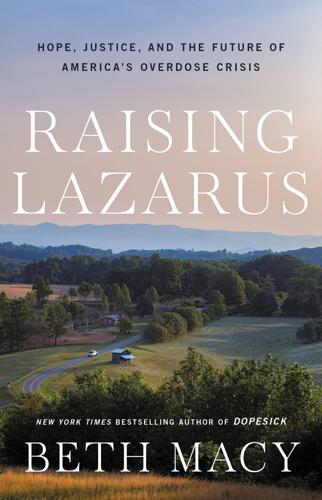
Raising Lazarus: Hope, Justice, and the Future of America’s Overdose Crisis
by
Beth Macy
Published 15 Aug 2022
There’s people injecting drugs and stealing my kids’ bicycles—fuck ’em!’” Two months into the COVID-19 pandemic, I reached out to Anne Case and Angus Deaton, the husband-and-wife economist duo who first reported America’s declining life-expectancy trend and coined the term “deaths of despair” as an explanation for soaring opioid, alcohol, and suicide deaths (particularly among middle-aged White men and women who hadn’t gone to college). Back then, Mount Airy had very few reported COVID cases and zero COVID deaths. But overdoses in the county were up 29 percent from the previous year, with an uptick in methamphetamine, polysubstance, and alcohol-poisoning deaths.
…
Deaton told me about a friend at Princeton who was healthy and in her early thirties, and yet had nearly succumbed to COVID in the pandemic’s early weeks. Despite their friend’s connections and relative affluence, she could not access a COVID test when she got sick. “Economists know the free market doesn’t respond to emergencies—you don’t put out a bid when someone’s drowning in the ocean,” Deaton said. The madness that was America’s piss-poor response to the coronavirus was the same madness that had long imperiled addiction treatment, only literally no one was immune from COVID, not even then-President Trump. “Illicit drugs can’t get here from China now, but the ABC stores will deliver booze to your door!”
…
If life-expectancy declines persist, experts predict it will take more than a century to recover. Roughly six months into my reporting for this book, COVID-19 emerged in March 2020. Overdose deaths went up as the pandemic further isolated people with substance use disorders (SUDs). That community was already plagued by the poisoning of street drugs with fentanyl, a synthetic opioid 50 to 100 times more potent than heroin, and an environment that makes it far easier for people with addictions to use illicit drugs than to access treatment for addiction and their underlying mental health issues. Within the first pandemic year, the overdose count was 29 percent higher than the year before, and the numbers kept climbing.
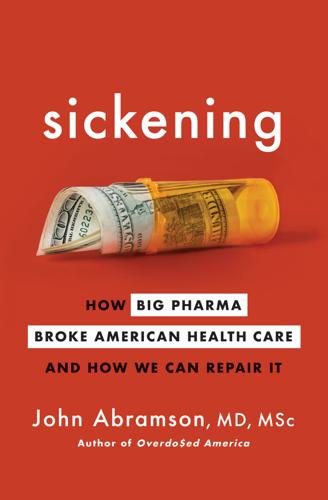
Sickening: How Big Pharma Broke American Health Care and How We Can Repair It
by
John Abramson
Published 15 Dec 2022
Our national acceptance of the so-called knowledge that is produced and disseminated with the primary purpose of maximizing return on research investments is reflected in our acceptance of committing less than 2 percent of our national health expenditures on population-based disease prevention. These chickens came home to roost during the early phases of the COVID-19 pandemic, when we failed to use low-cost public health measures (masking, social distancing, handwashing, testing, and contact tracing) and instead turned to unproven medicines (like hydroxychloroquine and remdesivir) to rescue those who became ill. The final piece of this puzzle is how comparatively little we spend on the social factors that determine the other four-fifths of our health.
…
Reform from the Bottom Up Afterword Acknowledgments Notes Index About the Author Copyright About the Publisher Introduction Tragically, during the first year of the coronavirus pandemic, an average of fourteen hundred Americans lost their lives to COVID-19 every day. Far more tragically, but with far less public awareness, Americans have been dying unnecessarily at almost the same rate for two decades.* This invisible tragedy is occurring not because of a once-in-a-century pandemic, but rather because, compared to citizens of other wealthy nations, we in the United States have such inferior health and health care. Not only is our health worse, but the pace at which we are falling behind is accelerating. For example, the (pre-pandemic) rate of American deaths that could have been prevented by adequate medical care was by far the highest: half again higher than the average of nine other wealthy countries.
…
Indeed, the best way for the manufacturers to maximize their financial gains was to ignore global needs and sell the largest possible share of their available vaccines for top dollar to wealthy nations while maintaining tight control of their patents and other intellectual property. Predictably, fifteen months into the pandemic 85 percent of the approximately two billion doses of COVID-19 vaccine administered worldwide had been given to residents of wealthy nations. At the other end of the spectrum, a mere 0.3 percent had been administered to people living in low-income countries. Dr. Tedros Ghebreyesus, the director general of the World Health Organization (WHO), called this “a scandalous inequity that is perpetuating the pandemic.” The WHO had tried to preempt this global inequity by launching the COVID-19 Technology Access Pool (C-TAP) in May 2020. The goal of C-TAP was to equip and train independent vaccine manufacturers in Latin America, Asia, and Africa by providing access to the patents and the technical know-how required to produce their own vaccines.
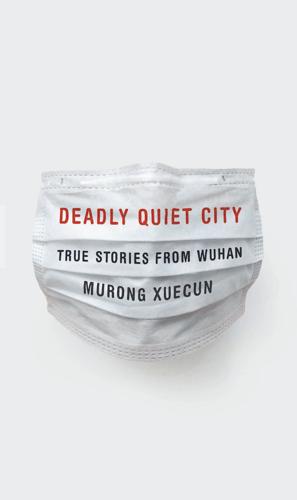
Deadly Quiet City: True Stories From Wuhan
by
Murong Xuecun
Published 7 Mar 2023
Australia’s proposal for an international inquiry into the origins and responses to the coronavirus pandemic is gathering international support, with the EU collecting signatures for a motion establishing an inquiry at the meeting of the World Health Authority. The performance of the WHO will also be investigated. More than 100 million residents of north-east Chinese province Jilin are put into lockdown after outbreaks of COVID-19. On 19 May, the World Health Assembly adopts without opposition a resolution to establish an inquiry into the origins and responses to the coronavirus pandemic. COVID-19 cases exceed five million globally, with 340,000 dead.
…
Everyone has a personal QR code which is required to prove you are legal and uninfected just to be able to take subway journeys, enter restaurants, or shop at supermarkets. No one cares anymore about privacy or rights because they disappeared long ago in China. In the foreseeable future, COVID-19 prevention policies that treat people with contempt will continue. When the day comes that COVID-19 is no longer a pandemic, Xi Jinping will not relinquish ruling by QR code. It will shackle China for a long time to come because the QR codes report people’s movements; and when required it can be changed to ensure that ‘petitioners’ and dissidents, as well house church congregants, have no options to seek justice.
…
He lives alone in a small apartment and rarely goes out. He often just stares blankly at the walls. He says his divorce and the pandemic are not connected. ‘There were cracks in our relationship much earlier,’ he says, as if discussing a piece of porcelain. At other times he admits the scars caused by the pandemic have not healed. ‘They make grief even more painful, and a shattered relationship more shattered.’ ‘After returning to Wuhan, I have come to feel the pandemic was not as bad as I initially feared. Look outside. The streets are very lively, but I can still distinctly feel this is no longer the Wuhan of before.’
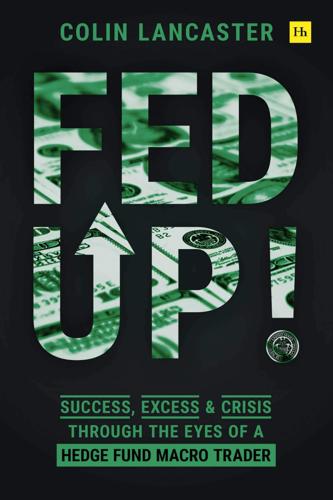
Fed Up!: Success, Excess and Crisis Through the Eyes of a Hedge Fund Macro Trader
by
Colin Lancaster
Published 3 May 2021
Success, Excess and Crisis Through the Eyes of a Hedge Fund Macro Trader Colin Lancaster Contents Part 1: The Late Stages of a Bubble Chapter 1 Sushi, Sake and a Breakdown in the repo markets October 2019 Chapter 2 Viva Las Vegas November 2019 Chapter 3 The Star Tavern and Life in Knightsbridge December 2019 Part 2: The Crash Chapter 4 The Virus Spreads January 2020 Chapter 5 Risk Management and an Inflection Point February 2020 Chapter 6 Market Crash March 2020 Part 3: The Aftermath Chapter 7 QE Dreaming April 2020 Chapter 8 Economic Data Worse than the Great Depression May 2020 Chapter 9 Lessons from the Gilded Age; Back to Market Highs June 2020 About the author Acknowledgments Publishing Details For Tia, Victoria, Sophia, and Maria “We have always found, where a government has mortgaged all its revenues, that it necessarily sinks into a state of languor, inactivity, and impotence.” David Hume This book tells the story of a global macro trader working amidst the greatest market panic that we’ve seen since the Great Depression. As the COVID-19 pandemic spreads across the world, readers are taken through the late-stage decadence of an exuberant market bubble to the depths of the market crash and into the early innings of a recovery. It provides readers with a front row seat on trading activity, allowing them a view of the market’s heartbeat.
…
The virus is still spreading: nearly 65,000 confirmed cases, 5,000 new cases announced yesterday, and over 1,100 deaths to date. It even has its own name now: COVID-19. It’s nastier than originally thought. It can cause severe acute respiratory distress syndrome and multiorgan failure. The central banks respond: more liquidity. The PBOC is buying everything that isn’t nailed to the floor. And for good measure, the Fed also dumped in another $80 billion. Pandemics are tricky for the markets. They’re the type of exogenous shock that comes out of nowhere and can have dramatic economic consequences if not contained.
…
“Rabbi, what else do you like?” I say. “Let me dig some more. I’ll take a look at past pandemics to see what has moved the most: Spanish flu, SARS, MERS, and H1N1. Anything else?” “Let’s look at hedge fund positioning,” I say. “Let’s look for the most crowded names.” “Good idea.” “Anything else?” I ask. “Well,” the Rabbi says, “Kraft finally got downgraded. We will see more fallen angels. Corporate leverage has risen so much. And credit spreads just keep coming in. You’re just not getting paid to own credit. And if COVID-19 gets worse, credit spreads will really move. We should pile on.” “Let’s sell some more.”
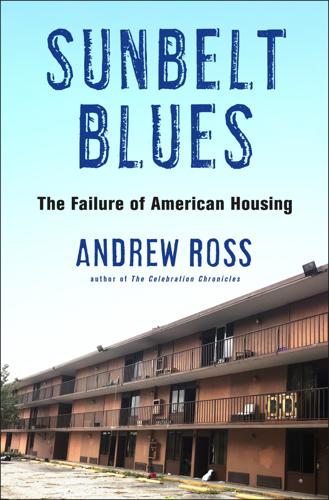
Sunbelt Blues: The Failure of American Housing
by
Andrew Ross
Published 25 Oct 2021
“If you dig a firepit,” Louise points out, “you’ll hit water pretty quickly here.” By the end of the pandemic summer of 2020, the camps were filling out again with returnees, new arrivals from a wave of motel evictions, and a sprinkling of COVID refugees. During the coronavirus crisis, concentrations of unhoused people in cities around the country were seen as public health threats, and some widely ridiculed alternatives to shelters were introduced by authorities. As most hotel rooms nearby lay empty, San Francisco opened a “safe sleeping village” for socially distanced homeless in the Civic Center Plaza, just yards from City Hall. Las Vegas officials, more notoriously, converted a parking lot into a quarantine area for rough sleepers.
…
Cloud Airfield Site,”GrowthSpotter, October 20, 2020, https://www.growthspotter.com/news/osceola-county-developments/gs-news-rental-homes-20201020-g4ha5dgpcfaudaqtedstl2uhzy-story.html. 18. Occupancy data for all Florida tourist properties can be found at “COVID-19 FL Tourism Impacts,” Visit Florida, https://www.visitflorida.org/resources/crisis-preparation/covid-19-resources-and-information-for-businesses/covid-19-fl-tourism-impacts/. 19. Ken Storey, “Route 192 in Kissimmee Is About to Get a Dubai-Style Resort,” Orlando Weekly, April 4, 2016, https://www.orlandoweekly.com/Blogs/archives/2016/04/04/route-192-in-kissimmee-is-about-to-get-a-dubai-style-resort. The pandemic recession put paid to the most ambitious version of the site plan; the towers were dropped and retail scaled back to reflect grimmer economic forecasts.
…
The magic they conjure up from their hearts is the monetary lifeblood of the company, underwriting its vast profits year after year. By any measure, they are owed a whole lot more than $15. OUT OF WORK The COVID-19 pandemic delivered a sharp blow to most employers, especially small businesses with scarce capital reserves. It also broke the momentum of rising wages across the country. After mass layoffs, the ready availability of workers desperate for jobs meant that demands for higher pay would be on mute for a while. During the first months of the pandemic lockdown, national unemployment levels went from record lows to record highs. LHT industry employees in top travel destinations like New York, Hawaii, New Orleans, Los Angeles, Las Vegas, Miami, Atlantic City, Myrtle Beach, Flagstaff, and Orlando were the hardest hit of all.
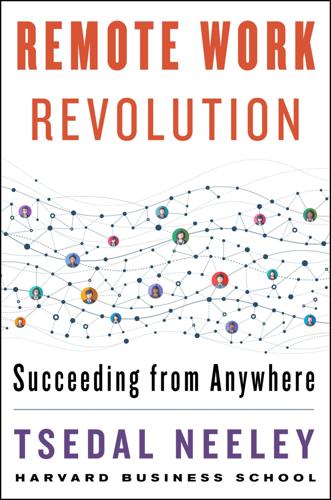
Remote Work Revolution: Succeeding From Anywhere
by
Tsedal Neeley
Published 14 Oct 2021
Like other global leaders entering an emergent market, she was bound to work in conditions rife with ambiguity. Seven years later, she would work in even greater ambiguity—as well as volatility, uncertainty, and complexity—when the worldwide pandemic caused by COVID-19 blew open the world. I will describe how she responded a little later. We don’t know what the long-term effects of COVID-19 will be on organizations, industries, and societies, although we do know that the world has profoundly changed. During the pandemic, every government leader had to make decisions that weigh the losses and gains of quarantine versus business as usual while not being able to accurately predict the consequences of whatever strategy they designate.
…
Accurate and effective communication channels between official agencies, medical administrators, and personnel were already active; testing and tracing technology was in place; and people understood the purpose of stay-at-home precautions. The population remained relatively unscathed because leadership at many levels was able to accurately frame and anticipate the 2020 COVID-19 health crisis by building a coordinated, country-wide task force. Singapore’s leaders clicked into and framed the risks they saw on the horizon. GENERATE SOLUTIONS WITH DIVERSE MINDS The crisis unfolding in 2013 around Molinas in Turkey, while not as volatile, complex, or far-reaching as the COVID-19 pandemic (although she too would have to reckon with the events of 2020), is more indicative of the crises that global leaders face on a regular basis.
…
Periodic relaunches are important in good times but crucial in times of uncertainty, as James’s story illustrates. The team might need to switch to a new mediating tool that calls for new norms of communication. The government might introduce new regulations or laws that affect people’s work patterns, as we saw when millions were switched to working from home during the first months of the COVID-19 pandemic. Countries, markets, or entire industries might make a sudden shift that requires the team to reorient their goals. Periodic relaunches are the only structured mechanisms to give teams the ability to quickly pivot in a systematic way. GETTING ALIGNED ON SHARED GOALS Contrary to what many people believe, team alignment is not synonymous with agreement.
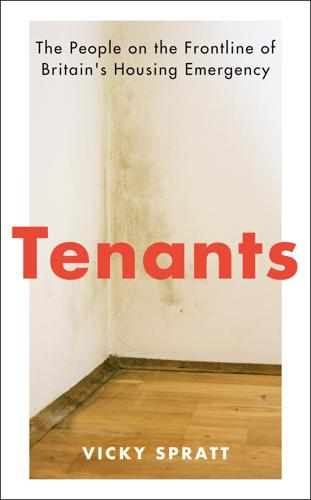
Tenants: The People on the Frontline of Britain's Housing Emergency
by
Vicky Spratt
Published 18 May 2022
Available at bradford.gov.uk/media/5756/bradford-homelessness-evidence-base-2020-to-2025.pdf just over one fifth (22 per cent) of rough sleepers: Combined Homelessness and Information Network, CHAIN Annual Report: Greater London, April 2020–March 2021, Greater London Authority (2021). 2,000 of the people housed: Ministry of Housing, Communities and Local Government, Investigation into the housing of rough sleepers during the COVID-19 pandemic, National Audit Office (11 January 2021). Available at www.nao.org.uk/wp-content/uploads/2021/01/Investigation-into-the-housing-of-rough-sleepers-during-the-COVID-19-pandemic.pdf the High Court ruled that there was a legal basis: NRPF Network, ‘High Court rules councils can accommodate rough sleepers with no recourse to public funds during the Covid-19 pandemic’, 22 March 2021, www.nrpfnetwork.org.uk/news/accommodating-rough-sleepers This ruling came out of an important legal case: ‘The Queen (on the application of Timon Ncube) v.
…
Staying at home might have been safe for some during the pandemic, but home proved to be a major site of transmission for those living in cramped conditions. ‘The exact location of infections is one of the big data gaps of the pandemic,’ Tunstall told me over Zoom. ‘But there can be no doubt that a substantial proportion of all Covid transmission in the UK would have occurred at home. A Chinese study found that during their lockdown, 69 per cent of infections were at home, for instance.’ Professor Tunstall also cited a UK study which found that, when the government’s tier system was in operation during the pandemic, people in areas categorised as Tier 4 (that is, the most restricted) had an average of five contacts with other people per week, and 1.5 of these were at home.
…
By the autumn of 2021, that still had not happened. Part Three Utopian Thinking: The Problem of Change Historically, disasters – pandemics and world wars – have forced humans to break with the past and imagine the world anew. Will coronavirus do the same? We know that poor housing added to the hardship wrought by Covid-19. Policy responses to the pandemic have so far been necessarily short term. While short-term help is clearly needed, the pandemic provides an opportunity to rethink the direction of our social policies over the longer term. It has demonstrated that serious gaps in the social safety net can quickly become catastrophic when the system comes under pressure from the very sort of external forces it was meant to indemnify us against.
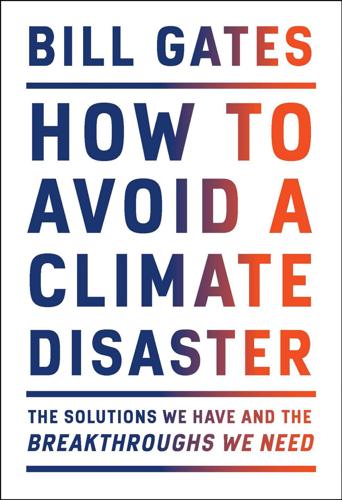
How to Avoid a Climate Disaster: The Solutions We Have and the Breakthroughs We Need
by
Bill Gates
Published 16 Feb 2021
Let’s put all this into terms that everyone who is experiencing the COVID-19 pandemic can relate to. If you want to understand the kind of damage that climate change will inflict, look at COVID-19 and then imagine spreading the pain out over a much longer period of time. The loss of life and economic misery caused by this pandemic are on par with what will happen regularly if we do not eliminate the world’s carbon emissions. I’ll start with the loss of life. How many people will be killed by COVID-19 versus by climate change? Because we want to compare events that happen at different points in time—the pandemic in 2020 and climate change in, say, 2030—and the global population will change in that time, we can’t compare the absolute numbers of deaths.
…
By the end of the century, if emissions growth stays high, climate change could be responsible for 75 extra deaths per 100,000 people. In other words, by mid-century, climate change could be just as deadly as COVID-19, and by 2100 it could be five times as deadly. The economic picture is also bleak. The likely impacts from climate change and from COVID-19 vary quite a bit, depending on which economic model you use. But the conclusion is unmistakable: In the next decade or two, the economic damage caused by climate change will likely be as bad as having a COVID-sized pandemic every 10 years. And by the end of the 21st century, it will be much worse if the world remains on its current emissions path.*2 Many of the predictions in this chapter may sound familiar to you if you’ve been following climate change in the news.
…
Launching Mission Innovation with world leaders at the 2015 UN climate conference in Paris. (See this page for the names of those photographed.) In 2020, disaster struck when a novel coronavirus spread around the world. To anyone who knows the history of pandemics, the devastation caused by COVID-19 was not a surprise. I had been studying disease outbreaks for years as part of my interest in global health, and I had become deeply concerned that the world wasn’t ready to handle a pandemic like the 1918 flu, which killed tens of millions of people. In 2015, I had given a TED talk and several interviews in which I made the case that we needed to create a system for detecting and responding to big disease outbreaks.

AI 2041: Ten Visions for Our Future
by
Kai-Fu Lee
and
Qiufan Chen
Published 13 Sep 2021
She opened her eyes and reached out for Garcia, ready for a long-overdue plastic-textured embrace. ANALYSIS AI HEALTHCARE, ALPHAFOLD, ROBOTIC APPLICATIONS, COVID AUTOMATION ACCELERATION “Contactless Love” transpires in a society transformed by an ongoing pandemic—in this case, the prospect of the COVID-19 pandemic lingering for decades as a mutating seasonal virus. This hypothesis is, of course, just speculation. However long COVID stays with us, what has become clear now is that AI will reshape healthcare, from speeding the discovery of vaccines and drugs to accelerating the integration of technologies like AI diagnostics into existing care.
…
The heroine of this story takes the desire to close oneself off from the world to an extreme, however, setting up a conflict between pursuing love and avoiding human contact. “Contactless Love” explores some of the questions raised by the arrival of a globe-altering pandemic, including its stresses but also how COVID-19 has accelerated other trends that may be positive, including new drug discovery, precision medicine, and robotic surgery, all enhanced by AI. In my commentary, I will describe how AI will disrupt conventional medicine, as well as give a road map for the commercialization of robotics. In two decades, COVID-19 will be remembered not just as a pandemic, but as an automation-accelerating event. THE NIGHTMARE HAD returned. Chen Nan was a ghost levitating in midair, watching her five-year-old self from the outside.
…
CONVENTIONAL DRUG AND VACCINE DISCOVERY Drug and vaccine discovery have historically been extremely time-consuming and costly. It took over a hundred years to develop and perfect a vaccine for meningitis. Pharmaceutical companies were able to move much faster in developing vaccines for COVID-19, spurred on by unprecedented spending (the U.S. government alone spent $10 billion just in 2020) to run multiple clinical trials and manufacturing efforts on parallel tracks. Had COVID-19 been as contagious or as lethal as the worst pandemics, however, even waiting a year for a vaccine would have been too long. So we need to continue to accelerate the speed of vaccine and drug development. Drug discovery requires an understanding of how virus proteins, which are sequences of amino acids, fold into unique 3D shapes.
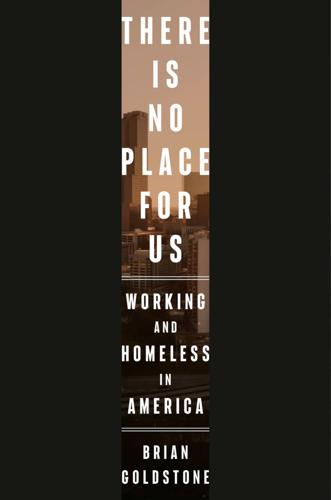
There Is No Place for Us: Working and Homeless in America
by
Brian Goldstone
Published 25 Mar 2025
But it’s those near the bottom of the income scale, people like the families in this book, who are particularly at risk. Commentators have struggled to account for how plummeting unemployment and a booming economy could be accompanied by such widespread insecurity. Perhaps the pandemic is to blame? It’s a tempting explanation, but this calamity was in the making long before Covid. The pandemic merely amplified it. Temporary relief programs—emergency rental assistance, the CDC eviction moratorium, stimulus payments, an expanded child tax credit—helped stall the effects of the deepening housing precarity. When these measures ended, the floodgates opened.
…
Washington High School, 53 Boston, xx, 11 Bottoms, Keisha Lance, 181 Boulevard Crossing Park, 262 Bowen Homes, 10, 170, 174–75, 178, 259 Bowie State University, 90 Breanna, 121–22, 156 Bring Chicago Home, 357 Brooks, Rayshard, 198 Buckhead, 35–36 Budgetel, 257, 273, 274, 283–84, 298–300 Burger King, 131, 181 Butler’s Shoes, 4 by-product of homelessness, 166 C Cabbagetown, 39 Caleb, 246, 249–50, 306, 307 Camille, 224–25, 254–57, 273, 275, 277–78, 281 Campbell, Bill, 57 Campbellton Road, 54 Candler Road, 36–37, 206 Days Inn on, 105–6, 107, 299 Capital City (Stein), 117 Capitol Homes, 55, 57 CAPS (Childcare and Parent Services), 131, 136, 138, 139, 140, 195, 227 Captain D’s, 14 CARES Act of 2020, 148, 244, 309 Carlyle Group, 261–62 Carnicería y Tiendas El Progreso, 114 Cathy, Truett, 56 CBS News, 355 CDC (Centers for Disease Control and Prevention), 142 federal eviction moratorium, 183, 256, 274, 359 Centennial Olympic Park, 111, 200, 330 Centennial Place, 58 Central Atlanta Progress, 58 Certified Nurse Assistants, 68 Chattahoochee River, 26, 315 Cheesecake Factory, 20 Chelsea Gardens, 226–27, 229, 231–32, 338–50 Chelsea Market, 10 chemotherapy, 78–79, 80, 83–84, 143–44, 149, 225 Cheshire Bridge Road, 302 Chicago, 58, 186, 253, 356–57 Chicago Coalition for the Homeless (CCH), 356–57 Chick-fil-A, 8, 56, 61, 113, 330, 333, 335 childcare, 136–40, 142, 143 Celeste’s business, 148–49, 153–55 Child Care and Development Block Grant, 138–39 Chosewood Park, 114–16, 118–19, 263–64, 265, 336–37 Chosewood Park Neighborhood Association (CPNA), 265–66 Christina, 36, 84, 162, 165, 197, 223–24, 251–52 Christmas, 28–29, 33–34, 101, 120, 128, 133, 161, 270 Church of Atlanta Lighthouse, 112, 115, 170 Cindy, 112, 118–20, 170, 260–61 City of Refuge, 73 City Springs, 95 Civil War, xviii Clark Atlanta University, 233 Clinton, Bill, 137 Coates, Ta-Nehisi, 204 Cobb Energy Centre, 18 Coca-Cola, xviii, 55, 194 code enforcement, xv, 66, 197 College Park Elementary, 347–48 College Park Power (CPP), 343–47 Color of Law, The (Rothstein), 265 Common Co-Living, 303 Community Assistance Center (CAC), 127, 128 Community Boutique, 159–60, 164, 198, 222, 253, 293, 299 Community for Creative Non-Violence, 354 Confederate monument, removal of, 206 Continuum of Care, 83, 189, 351–52 Cousins, Tom, 5–7 Covenant Capital Group, 126 COVID-19 pandemic, 141–49, 169–70, 181–82, 183, 359 death toll, 147, 225–26, 256, 274 hotel closures, 240–41 school closures, 141–42, 146, 153–54, 164 tests, 246–47, 283 COVID-19 vaccinations, 315 Craigslist, 54, 70, 213, 214, 225 Creative Creations, 160 credit scores, 65, 82, 97–98, 242, 308–9, 326–27, 335 “cycle of dependency,” 137 D Daniel, 31–32 Darius, 68–71, 192 Dave & Buster’s, 101 Davis, Mr., 101–2 Days Inn on Candler Road, 105–6, 107, 299 Debbie, 81–82 Decatur Cooperative Ministry, 73 Decatur Square, 206 Deerfield Gardens, 210 Dejene, Mr., 64–67 DeKalb County Board of Health, 73, 81, 307 DeKalb County Court, 67, 206, 256–57 DeKalb County Jail, 321–22 Delta Airlines, xviii Dempsky, Michelle, 242 Denver, xvii, 161 dependency cycle, 137 deregulation, 363–64 Derick, 326, 330 discrimination, 5, 53, 162, 204, 242, 363 dispossessory notices, 43, 125, 126, 183, 255 Divorce Court (TV series), 103–4, 106, 221–22 Dixie Hills, 301–5, 306–7 Dodge Durango, 37–38, 39–40, 46, 47, 84, 234, 248, 306 Dollar General, 330 DoorDash, 150–53, 181, 185, 193, 210, 228–29, 347 Dover Crossing Drive, 215–16 Down and Out in America (Rossi), xvii Drake House, 72–73 Drea, 309–10 Dunwoody, 22, 121, 127, 239 Dworkin, Julie, 357 E East Lake Golf Club, 5–6 East Lake Meadows, 5–6, 10, 55, 57, 119, 170, 173, 174–75, 259 East Point, 7–8, 39–40, 43 Eastside Trail, 117–18 Eastwyck Village, 28–29, 33, 101–6 Eboni, 223–24, 250–51, 278 EBTs (electronic benefit transfers), 114, 132, 166–67, 288, 305, 344–45.
…
She was also running errands, winding up in cramped, poorly ventilated spaces—the corner store, the laundromat—where social distancing was nonexistent. Given these conditions, it seemed a small step to watching a bunch of kids. Celeste told Jalen to get the word out. He liked engaging in these sorts of tasks: anything to break up the monotony. And besides, it gave him an excuse to neglect his schoolwork. Like his mother, Jalen was witty and outgoing, a natural extrovert. As a keen eavesdropper on hotel gossip, he knew who’d been arrested the night before, or who’d gotten Covid, or who the man upstairs had been sleeping with behind his girlfriend’s back.
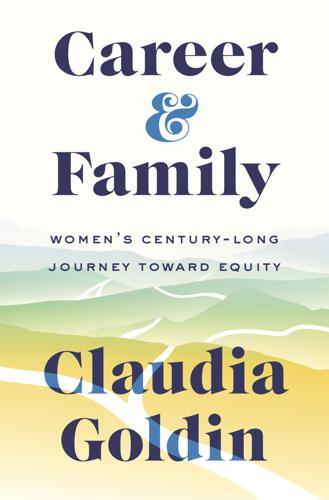
Career and Family: Women’s Century-Long Journey Toward Equity
by
Claudia Goldin
Published 11 Oct 2021
But, as I noted then, Group Five includes women who are even younger, and its end date is not yet clear. 222 “Pandemic Will ‘Take Our Women 10 Years Back’ …” Amanda Taub, “Pandemic Will ‘Take Our Women 10 Years Back’ in the Workplace,” New York Times, September 26, 2020. 222 “Pandemic Could Scar a Generation of Working Mothers,” Patricia Cohen and Tiffany Hsu, “Pandemic Could Scar a Generation of Working Mothers,” New York Times, June 3, 2020. 222 “How COVID-19 Sent Women’s Workforce Progress Backward.” Julie Kashen, Sarah Jane Glynn, and Amanda Novello,“How COVID-19 Sent Women’s Workforce Progress Backward,” Center for American Progress, October 30, 2020, https://www.americanprogress.org/issues/women/reports/2020/10/30/492582/covid-19-sent-womens-workforce-progress-backward/. 222 “… you’re allowed only a kid or a job.”
…
Today, college graduates represent almost 45 percent of all US women in their late twenties. The anxieties and discontent of the college-graduate group are palpable. Newspapers and news feeds are filled with disquieting prophecies about the future of the younger members of Group Five: “Pandemic Will ‘Take Our Women 10 Years Back’ in the Workplace,” “Pandemic Could Scar a Generation of Working Mothers,” and “How COVID-19 Sent Women’s Workforce Progress Backward.” In the age of COVID, those with children and others to care for are struggling to put in the hours, publish the academic papers, write the briefs, and attend to demanding clients on Zoom. According to these predictions, a rug is being pulled out from under those who were finally able to achieve historic rates of career and family.
…
See also gender earnings gap; inequality of income economic downturns: caregiving connections to, 219, 231–32, 237; COVID-19 pandemic creating, 74, 219, 221–23, 226, 231, 235; Great Depression as (see Great Depression); marriage effects of, 93; “she-cessions” as, 223 economic growth, 22–23 Economics of Household Production (Reid), 47, 48 education: advanced and professional degrees in (see advanced and professional degrees); age at time of, 41, 50, 265n41; antibias or diversity, 155; antidiscrimination laws for, 130, 225; coeducation in, 42, 82–83, 225, 266n43, 273n83; cost of, 90–91; college graduation rates, 41; COVID-19 pandemic effects on, 16, 203, 219, 221, 225, 227–29, 231; drop-out rates in, 85, 86–87, 274n87; gender earnings gap and, 159–60, 287n160; gender statistics on, 5–6, 41–42, 91–92, 275n92; of Group One women, 25–27, 39–45, 41, 49–50, 269n59; of Group Two women, 28–29, 39–45, 41, 70–71, 86; of Group Three women, 29–30, 39–45, 41, 86, 91–92, 95–96, 101–2, 104, 105–6, 112, 124, 274n86, 276n95, 277n101, 278n104; of Group Four women, 30–33, 39–45, 41, 112–13, 115, 117, 122, 127–30, 129, 139, 146, 199, 284n139; of Group Five women, 33, 39–45, 41, 139, 148–49, 149, 284n139; high school movement for, 71; lowered barriers to, 22; major selection for, 95–96, 101–2, 112, 128–29, 276n95, 282n128; marriage effects on, 35, 86–87; occupation-specific, 95–96, 112; for pharmacists, 190; pregnancy effects on, 36; prohibitions on, 20; sex ratio of, 41–42, 91–92, 275n92; single-sex institutions for, 42, 44; social class and, 42, 43, 50; white-collar work demands for, 70–71.
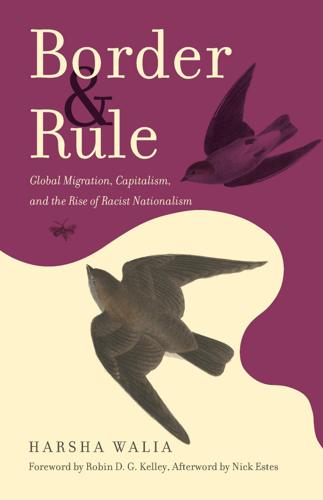
Border and Rule: Global Migration, Capitalism, and the Rise of Racist Nationalism
by
Harsha Walia
Published 9 Feb 2021
Racialized women are overrepresented in the underpaid care sector, currently a front line in the struggle for a new green economy and whose value as an essential service socially reproducing life is crystal clear during the Covid-19 pandemic. Nurses, cleaners, teachers, domestic workers, grocery clerks, service workers, single mothers, and land defenders leading political struggles during the pandemic, and well before it, trenchantly assert that inequality is a product of austerity and also of differences made through nationality, race, gender, sexuality, and ability, which are co-constituents of class relations. As interdependent and interwoven societies, our fiercely internationalist struggle is not against “foreigners” but against any oppressors. State responses to the global Covid-19 pandemic have blown off the lid on border and rule practices and exposed the fault lines in our societies.
…
(Spain: FRIDE and the Gulf Research Center), 49. 21.Jill Crystal, Oil and Politics in the Gulf: Rulers and Merchants in Kuwait and Qatar (Cambridge: Cambridge University Press, 1995). 22.De Bel-Air, “Demography, Migration and Labour Market in Saudi Arabia,” 5. 23.Adam Coogle, Detained, Beaten, Deported: Saudi Abuses against Migrants during Mass Expulsions, Human Rights Watch, May 10, 2015, www.hrw.org/report/2015/05/10/detained-beaten-deported/saudi-abuses-against-migrants-during-mass-expulsions. 24.Coogle, Detained, Beaten, Deported; International Organization for Migration, “Ethiopian Diaspora Continues its Support to IOM for Migrants Returning Home from Saudi Arabia,” February 18, 2015, https://ethiopia.iom.int/ethiopian-diaspora-continues-its-support-iom-migrants-returning-home-saudi-arabia. 25.Human Rights Watch, “Saudi Arabia: Events of 2018,” World Report 2019, www.hrw.org/world-report/2019/country-chapters/saudi-arabia. 26.AlShehabi, “Policing Labour in Empire.” 27.Hanieh, Lineages of Revolt, 131. 28.International Labour Organization, “Labour Migration: Facts and Figures in Arab States,” www.ilo.org/beirut/areasofwork/labour-migration/lang--en/index.htm. 29.Hadi Ghaemi, Building Towers, Cheating Workers: Exploitation of Migrant Construction Workers in the United Arab Emirates, Human Rights Watch, November 11, 2006, www.hrw.org/report/2006/11/11/building-towers-cheating-workers/exploitation-migrant-construction-workers-united. 30.Human Rights Watch, “The Island of Happiness”: Exploitation of Migrant Workers on Saadiyat Island, Abu Dhabi, May 2009, www.refworld.org/pdfid/4a125f4b2.pdf. 31.Human Rights Watch, Migrant Workers’ Rights on Saadiyat Island in the United Arab Emirates: 2015 Progress Report, February 10, 2015, www.hrw.org/report/2015/02/10/migrant-workers-rights-saadiyat-island-united-arab-emirates/2015-progress-report. 32.International Trade Union Confederation, The Case against Qatar, March 2014, www.ituc-csi.org/IMG/pdf/the_case_against_qatar_en_web170314.pdf. 33.Pete Pattison, “Revealed: Qatar’s World Cup ‘Slaves,’” Guardian, September 25, 2013, www.theguardian.com/world/2013/sep/25/revealed-qatars-world-cup-slaves. 34.Robert Booth, “Qatar World Cup Construction ‘Will Leave 4,000 Migrant Workers Dead,’” Guardian, September 26, 2013, www.theguardian.com/global-development/2013/sep/26/qatar-world-cup-migrant-workers-dead; Pattison, “Revealed.” 35.Amnesty International UK, “Qatar’s Lifting of Travel Restrictions for Many Migrant Workers Welcomed,” September 5, 2018, www.amnesty.org.uk/press-releases/qatars-lifting-travel-restrictions-many-migrant-workers-welcomed. 36.Amnesty International, “Qatar: Migrant Workers Illegally Expelled During COVID-19 Pandemic,” April 15, 2020, www.amnesty.org/en/latest/news/2020/04/qatar-migrant-workers-illegally-expelled-during-covid19-pandemic/. 37.Pete Pattisson and Roshan Sedhai, “Covid-19 Lockdown Turns Qatar’s Largest Migrant Camp into ‘Virtual Prison,’” Guardian, March 20, 2020, www.theguardian.com/global-development/2020/mar/20/covid-19-lockdown-turns-qatars-largest-migrant-camp-into-virtual-prison. 38.Priyanka Motaparthy, “Understanding Kafala: An Archaic Law at Cross Purposes with Modern Development,” Migrant-Rights.org, March 11, 2015, www.migrant-rights.org/2015/03/understanding-kafala-an-archaic-law-at-cross-purposes-with-modern-development/. 39.Bina Fernandez and Marine de Regt, “Making a Home in the World: Migrant Domestic Workers in the Middle East,” in Migrant Domestic Workers in the Middle East: The Home and the World, Bina Fernandez and Marine de Regt, eds.
…
In the US in 2019, thousands of “Close the Camps” mobilizations, demanding closure of detention facilities incarcerating migrant children and families, swept across the country. On May Day of the following year, mostly immigrant and racialized retail, warehouse, and food service workers at Amazon, Target, Whole Foods, and Instacart led protests and strikes for higher pay and better safety protections during the Covid-19 pandemic, while also refusing a return to pre-pandemic “normalcy.” Around the same time, tens of thousands of jobless and desperate mostly caste-oppressed migrant workers and day laborers in India’s major cities defied a national lockdown, thousands of them battling with police as they attempted to make their way home to their villages.
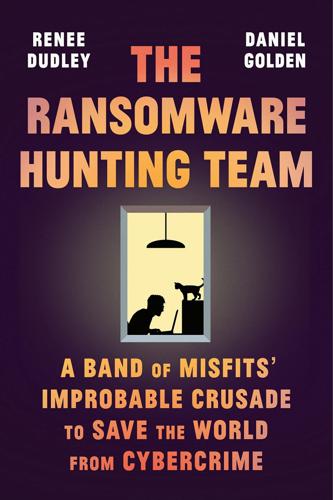
The Ransomware Hunting Team: A Band of Misfits' Improbable Crusade to Save the World From Cybercrime
by
Renee Dudley
and
Daniel Golden
Published 24 Oct 2022
“Yeah, it was definitely the work of an amateur,” Michael answered. Another ransomware strain that Michael cracked that weekend invoked the pandemic in its name—DEcovid19—and ransom note. “I am the second wave of COVID19,” the note said. “Now we infect even PC’s.” * * * While Michael escaped COVID-19, at least three of his teammates weren’t so fortunate. As a loner and hermit, Fabian considered himself at low risk. He had been staying home and social distancing long before everyone had to. Even his food was delivered to his apartment. “I didn’t know my lifestyle was called quarantine,” he joked.
…
Patrick’s Day in 2020, with holiday festivities canceled as COVID-19 swept across the United States, Lawrence Abrams messaged his contacts in the ransomware gangs. Led by Ryuk, the gangs had been steadily attacking bigger targets and demanding bigger ransoms. Then came the pandemic. By increasing society’s dependence on computers, it played into the attackers’ hands. A reign of terror loomed, with hospitals especially vulnerable because they were deluged with patients and their cybersecurity was often weak. So Lawrence asked the hackers to spare hospitals and other medical facilities for the duration of the pandemic. He appealed to them as ordinary, decent people with parents, children, and partners they loved.
…
Many of the parents are on public assistance—or, as the English say, on the dole—and the free lunch and midmorning snack that the school provides are often their children’s only meals. Even as the coronavirus pandemic ravaged the area in 2020, blitzing through public housing and terraced apartments where students’ families slept four to a room, the school stayed open, its masked teachers rearranging chairs to preserve as much social distance as possible. On a shoestring budget, in a building that’s showing its age, the school gives the children a solid education and helps them adjust to English life and culture. Teachers track the students’ progress by photographing them as they learn how to hold a pencil, draw a picture, or write their name.
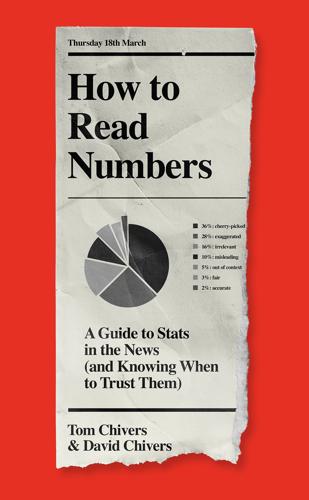
How to Read Numbers: A Guide to Statistics in the News (And Knowing When to Trust Them)
by
Tom Chivers
and
David Chivers
Published 18 Mar 2021
Zoe Zaczek, ‘Controversial idea to give “immunity passports” to Australians who have recovered from coronavirus – making them exempt from tough social distancing laws’, Daily Mail Australia, 2020 https://www.dailymail.co.uk/news/article-8205049/Controversial-idea-introduce-COVID-19-immunity-passports-avoid-long-term-Australian-lockdown.html 2. Kate Proctor, Ian Sample and Philip Oltermann, ‘“Immunity passports” could speed up return to work after Covid-19’, the Guardian, 2020 https://www.theguardian.com/world/2020/mar/30/immunity-passports-could-speed-up-return-to-work-after-covid-19 3. James X. Li, FDA, 1 April 2020 https://www.fda.gov/media/136622/download 4.
…
People often dislike them for that reason, and it’s easy to understand why. At the time of writing, newspapers still report on daily death tolls from Covid-19, the pandemic which began to sweep around the world in the first half of 2020. When, in Britain, those daily tolls dropped down to the mere hundreds, where before they had been in their thousands, it felt like a light at the end of the tunnel. Every one of those people, though, was an individual; they were unique. We can talk about the number of people who died during the pandemic – 41,369 in Britain by August, or 28,646 in Spain; or however many will have died around the world once the disease has eventually run its course, if it ever does.
…
You’re just looking at the planes that have made it back to base and pointing out all the bullet holes in their wings. Chapter 21 Collider Bias There was a strange phenomenon going on early in the Covid-19 pandemic. It was noticed that people who were hospitalised with the disease seemed to be less likely to smoke than the rest of the population.1 The Daily Mail was one of the places that picked this up, and mentioned that French hospitals were even going to try giving nicotine patches to Covid patients.2 That is really weird. Smoking is staggeringly bad for you; probably the most directly dangerous thing that any large fraction of the population does.
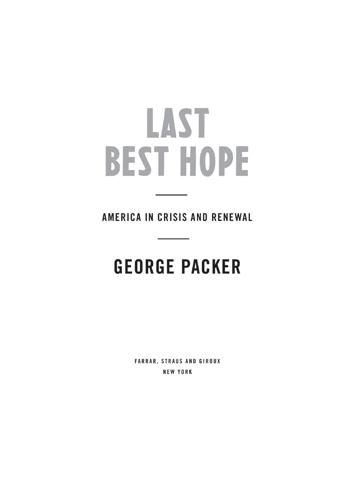
Last Best Hope: America in Crisis and Renewal
by
George Packer
Published 14 Jun 2021
Or, at most: “Wear the damn mask!” Actual persuasion across this divide was rare. It usually required an extraordinary circumstance. In one of the worst weeks of the pandemic, a nurse in El Paso named Ashley Bartholomew was completing her shift in the COVID intensive care unit. A patient who had begun to recover was watching TV—a story about El Paso’s critical need for refrigerated morgue trucks. Suddenly he said, “Fake news. I don’t think COVID is really more than a flu.” “Now you think differently, though?” Bartholomew asked, unsure what he meant. “No, the same,” the patient said. “I should just take vitamins for my immune system.
…
Some patients refused to believe it was real until their last breaths. Some not even then. It didn’t matter what the experts said. The populists refused to believe them because they were experts, as protective of their status as any other group. And the experts had sometimes been wrong. A COVID denier could point to the early testing debacle at the CDC, and the confused messages on social distancing, masks, and asymptomatic transmission, to argue that the experts had their heads up their asses. Without a shared reality, every data point, every body count just proves its opposite, like a knot getting tighter the harder you try to undo it. Once politics becomes an identity clash or tribal war, a death spiral can set in that’s very hard to escape.
…
The same spirit that drove Clara Barton, a government clerk with no training in health care, to bring medical supplies and comforting words to wounded Union soldiers in Washington at the start of the Civil War would carry Americans through the plague of COVID-19. Here finally was a crisis that could pull Americans together as hadn’t happened in the two decades since September 11, 2001. The biology of a pandemic is designed to show the limits of individualism and affirm a truth that’s too hard to keep in mind—our common humanity. Everyone is vulnerable. Everyone’s health depends on the health and behavior of others. No one is safe unless everyone takes responsibility for everyone else.

On the Edge: The Art of Risking Everything
by
Nate Silver
Published 12 Aug 2024
(Bitcoin prices increased roughly tenfold in the year after the WHO declared COVID-19 to be a pandemic.) And so in April 2021—even as schools remained closed in parts of the country—American casinos won a staggering $4.6 billion in gaming revenues from their patrons, 26 percent higher than in the same month two years earlier, before the pandemic. Poker players came out in a show of force at the Hard Rock. In April 2019, the last time this particular tournament had been held before COVID, it had a respectable 1,360 entrants. The 2021 version drew almost twice as many—2,482 entrants—despite still being in the middle of a pandemic and a travel ban affecting most of the poker-playing world.
…
Between all forms of gambling, Americans are probably making in excess of $1 trillion in bets annually. US Casino Revenues Spiked After COVID And here’s something that probably should keep more of us up at night: American life expectancy has stagnated. During the pandemic, in fact, it declined, to 76.4 years in 2021 from 78.8 years in 2019. Life expectancy numbers during a pandemic can be misleading—they essentially assume we’ll maintain the same number of COVID deaths going forward when we likely won’t—and the numbers have begun rebounding to some extent. Even before COVID, though, American men had lost a tenth of a year of life expectancy between 2014 (76.4 years) and 2019 (76.3).
…
GO TO NOTE REFERENCE IN TEXT around $2 billion: Dylan Matthews, “Congress’s Epic Pandemic Funding Failure,” Vox, March 22, 2022, vox.com/future-perfect/22983046/congress-covid-pandemic-prevention. GO TO NOTE REFERENCE IN TEXT 2022–23 budget deal: Kavya Sekar, “PREVENT Pandemics Act (P.L. 117-328, Division FF, Title II),” Congressional Research Service, August 15, 2023, crsreports.congress.gov/product/pdf/R/R47649. GO TO NOTE REFERENCE IN TEXT estimated $14 trillion: Jakub Hlávka, “COVID-19’s Total Cost to the U.S. Economy Will Reach $14 Trillion by End of 2023,” The Evidence Base, https://healthpolicy.usc.edu/blogs (blog), May 16, 2023, healthpolicy.usc.edu/article/covid-19s-total-cost-to-the-economy-in-us-will-reach-14-trillion-by-end-of-2023-new-research.

Arriving Today: From Factory to Front Door -- Why Everything Has Changed About How and What We Buy
by
Christopher Mims
Published 13 Sep 2021
See ships and shipping containerized shipping, 13–23; Amazon’s yellow totes compared to, 163; dimensions, strength, and structure, 18–19, 70–71; dwell time in ports, 83–84; e-commerce and development of, 14–15; as intermodal transport systems, 19; loading and transport process, 19–23; order of stacking containers, queuing theory, and grooming, 81–83; reefers (refrigerated containers), 34–35; scale of global shipping commerce, 22–23, 25–26; twistlocks and lashings securing containers, 34, 69, 84; Vietnam, in global supply chain, and, 15–23; Vietnam War and development of, 13–14 Continental Divide, 133 “continuous improvement,” 222, 223, 226, 228–30, 232 conveyor belts/conveyors, 163–70, 189, 194 Convoy (film), 109 Cook, Tim, 270 coronavirus. See Covid-19 pandemic corporate culture. See Bezosism; management systems Cosco Shipping Lines, 22, 48, 57, 70 Costco, 167 cotton gin, 212 Covariant, 246 Covey, Joy, 224, 275–76 Covid-19 pandemic: Amazon affected by, 7–8, 14–15, 217; automation and, 76; China, initial outbreak in, 2, 6, 29; “essential” workers in, 90; global health emergency, WHO declaration of, 30, 108; initial lockdown, 195, 255; shipping crews affected by, 27–29; shipping volumes and panic buying, 11, 76, 184, 195, 255, 266, 276, 287–288; supply chain affected by, 2, 6–9, 10; as supply shock, 10, 12; testing for, 6, 9, 68; U.S., first cases in, 6, 45 Coyote (logistics firm), 138 CPA (closest point of approach), 38 CPUs, 173–74 Croker, Sewall K., 128 CTC (Copenhagen Telephone Company), 82 Cummins (diesel engine company), 130 Cuomo, Andrew (governor of New York), 9 cyborgs, modern workers as, 15, 42, 219 cycle time, 215 D’Andrea, Raffaello, 182–83 DARPA (Defense Advanced Research Projects Agency), 247 Darwin, Charles, 83, 87, 160 Darwinism of Bezosism, 203, 209–11 De Beukelaer, Christiaan, 28 Delaware, as flag state, 32 delivery of goods to consumers, 271–88; accidents, injuries, and dangers in the workplace, 272, 275–76, 279–80; communication with drivers, 284–86; contactless delivery, 266; from delivery stations, 261–62; dogs, encounters with, 285; loading and organization of goods on truck, 274; on-time delivery, Amazon’s concern with, 223–24, 225–27; physical demands of, 272–73; robotic delivery, 263–70; routes, mileage, and route planning, 281–84; speeding, dangers of, 275–76; subcontracting/franchising, 278–81; training and methodology of, 271–75.
…
See also automation, at ports; containerized shipping; longshoremen ship-to-shore (STS) cranes, 20, 23, 34, 68–71, 77–78, 81 shoe sorters, 258 Silicon Valley, 73, 93, 166, 275 Six Sigma, 222–23 SLAM (scan, label, apply, manifest), 193–94 SLAM (simultaneous localization and mapping), 143, 146–47, 268 slavery: cotton gin and African American chattel slavery, 212; crews on container ships during pandemic, 28; Nazi slave laborers, 144; robots as slaves, 219; scientific management (Taylorism) as form of, 232; wage slavery of long-haul truckers, 157 slow steaming, 35–36 slungshot, 65 “smalls,” 260 smartphones: delivery drivers, communication with, 284, 286; Moore’s law and, 153; positional systems in, 145, 146; rapid delivery systems for, 265; Starship robotic delivery using computing power of, 268; supply-chain miles required to assemble, 12; truck drivers and, 120; Vietnam, manufacturing in, 16 Smokey and the Bandit (film, 1977), 109 Soft Robotics, 246, 247 sortation centers, 252–61 South China Sea, navigation in, 37–40 space flight, 144, 145, 247–48 stack ranking (rank and yank), 204 Stalin, Joseph, 61 “standard work,” concept of, 230 Staples, 168, 182, 212 Star Wars (film, 1977), 109 Starbucks, 123, 263–65 Starship Technologies, 263–70 status competition, 91 steel production, 99–100 Stein, Gertrude, 98 Stone, Brad, The Everything Store, 170, 275 stopwatches, 96–97 stressful working conditions: at Amazon, 171–76, 191, 214–16, 234; automation, surveillance, and work intensification, 113, 157, 174–75, 203, 211–14, 231–32, 234–35; scientific management and, 88, 95, 97, 98, 213, 234; shipping crews affected by Covid-19 pandemic, 27–29; for truck drivers, 110–13, 117, 120–21, 125, 135, 157; turnover and, 113 strikes and striking, 33, 71, 88, 98, 277 STS (ship-to-shore) cranes, 20, 23, 34, 68–71, 77–78, 81 Suez Canal, 38, 91 supply chain, 1–12; consumer culture and, 1; Covid-19 pandemic, effects of, 2, 6–9, 10; factory system, incorporation into, 2, 90–92; Southeast Asia’s role in, 10–12; “supply shocks,” 9–12. See also delivery of goods to consumers; management systems; ships and shipping; trucks and truck drivers; warehouses and warehousing surveillance: combined with work intensification, and automation, 113, 157, 174–75, 203, 211–14, 231–32, 234–35; of delivery drivers, 26; of workers for behavior leading to injury, 238, 286 surveillance capitalism, 231 survivalists, 7 swarm robotics, 78 Swift (trucking company), 107, 112 Target, 109 tarmac, invention of, 129 Taylor, Frederick Winslow, 87–90, 93–98, 103, 104, 105, 113, 213; The Principles of Scientific Management (1911), 95, 97, 98; Shop Management (1903), 95 Taylor, Robert, 216 Taylorism.
…
Adding you, the consumer, to the equation and molding your behavior to make it more compatible with this system, through algorithms and marketing tricks, is trivial compared to all the effort that comes before you click the Buy button. By dumb luck, I managed to put myself at the start of the journey of an item, in a factory in Vietnam, at the very moment the global Covid-19 pandemic was just getting started in China. The pandemic stretched the supply chain described in this book to its very limit and beyond. Trends that might have taken a decade were compressed into a span of a few months. Virtually overnight, we were all checking our phones daily, looking for that little notification: Arriving Today.
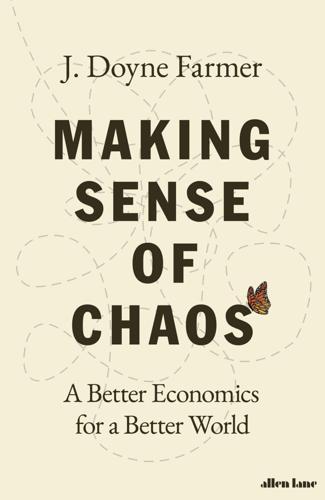
Making Sense of Chaos: A Better Economics for a Better World
by
J. Doyne Farmer
Published 24 Apr 2024
If you want to understand a business cycle, linearizing guarantees that the (model) economy won’t move by itself. Agent-based models liberate us from these kinds of assumptions. The COVID pandemic, revisited In the prologue I described the model we built at the beginning of the COVID pandemic that accurately predicted the hit to the UK economy. As the pandemic wore on, far longer than we imagined it would, it became clearer and clearer how the pandemic, the economy and the actions of governments around the world were intricately interlinked. While we could do the economics well, to make a proper model we needed to team up with epidemiologists.
…
Phelps (1991)1 On March 16, 2020, I mobilized a team of some of my best Oxford students, postdocs and former-students, and we began a crash program to build a model to predict how the economy would respond to the COVID-19 pandemic. It was clearly only a matter of time before the disease would become widespread and many governments would instigate lockdowns, with an enormous economic impact. But there are many ways to implement public health measures. Governments would need to decide what restrictions to impose and which industries should be closed. Was there a sweet spot that might provide a reasonable compromise between preventing the suffering that would be caused by infection and mitigating the suffering from economic stress? Could we predict the economic impact of COVID? (At the risk of spoiling the punchline, the answer is yes.)
…
Supply and demand shocks interact as they move downstream and upstream, colliding with one another and amplifying the initial shocks. This can reduce economic output even further. The economic impact of the COVID pandemic combined three exceptional features that made standard models inadequate: First, the shocks were highly industry-specific, making it essential to model the economy with a high degree of resolution; second, the shocks affected supply and demand simultaneously; and, third, the shocks were huge and happened really fast. Standard economic models assume equilibrium, which means that supply and demand are always equal. The COVID shocks hit the economy so hard and so quickly that they knocked it far out of equilibrium, making standard models unsuitable.

Rule of the Robots: How Artificial Intelligence Will Transform Everything
by
Martin Ford
Published 13 Sep 2021
And as things have become ever more unequal, the mechanism that distributes the income that powers consumer demand is eroding, and that in turn is undermining economic growth and dampening down the sustained rise in productivity that is crucial to future prosperity. The pandemic has completely upended things and plunged us into an unprecedented economic crisis, but all these trends remain in place and will likely produce headwinds that will make it even more challenging to recover from our current predicament. POST COVID-19 AND RECOVERY The coronavirus pandemic has unleashed a global economic crisis of unprecedented ferocity. In the United States and in countries throughout the world, millions of jobs have been lost very nearly overnight, entire sectors have been virtually shut down and the economy has plunged into the deepest downturn since the Great Depression in the 1930s.
…
Joseph Zeballos-Roig, “Kamala Harris supports $2,000 monthly stimulus checks to help Americans claw out of pandemic ruin—and she’s long backed plans for Democrats to give people more money,” Business Insider, August 15, 2020, www.businessinsider.com/kamala-harris-biden-monthly-stimulus-checks-economic-policy-support-vice-2020-8. 3. Bob Berwyn, “What does ‘12 years to act on climate change’ (now 11 years) really mean?,” Inside Climate News, August 27, 2019, insideclimatenews.org/news/27082019/12-years-climate-change-explained-ipcc-science-solutions. 4. Bill Gates, “COVID-19 is awful. Climate change could be worse,” Gates Notes, August 4, 2020, www.gatesnotes.com/Energy/Climate-and-COVID-19. 5.
…
“The human touch still really matters.”28 Roughly two days before the article appeared on Bloomberg’s website, the first documented case of COVID-19 had emerged in Wuhan, China. Over the course of the next few months, all our calculations around the perceived value of a “human touch” were, of course, reset and recalibrated with a speed that would have once been unimaginable. There can be little doubt that in virtually any environment where human workers come into direct contact with customer traffic, the coronavirus crisis is going to significantly accelerate the push toward automation. This will be true not only because of concerns around social distancing and hygiene, but also as a result of the inevitable escalation of a focus on efficiency in the wake of the economic downturn spawned by the virus.
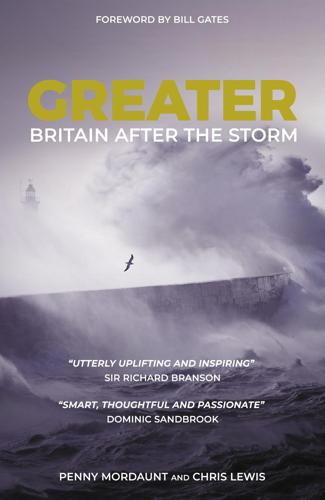
Greater: Britain After the Storm
by
Penny Mordaunt
and
Chris Lewis
Published 19 May 2021
There’s a long list of things the British never discuss: constipation, sex, depression, relationships, thrush, money, toilets, feelings, seborrhoea, logorrhoea, gonorrhoea, Chris Rea, diarrhoea, duty or death. And they like personal space. During Covid, the World Health Organization only required social distancing to one metre.21 The British chose two metres. Consequently, all Covid queues were colossal – past Nando’s and several times round the car park.22 THE DOUBLE ENTENDRE AND EUPHEMISMS The apologising, the embarrassment about complaining, the use of humour as a palliative are also present in the British approach to sex.
…
NOTES 1 Sadly, they themselves both disappeared in January 2021 and May 2020 from cancer and Covid respectively. 2 http://www.bbcamerica.com/anglophenia/2013/10/10-places-brits-love-to-live-in-america 3 https://www.businessinsider.com/british-expats-most-population-destinations-2015-9#4-spain--381025-expats-spain-is-still-high-on-the-list-where-brits-go-for-the-cheap-booze-sunny-weather-and-relatively-easy-integration-into-the-culture-14 INTRODUCTION Three great storms engulfed Britain in the ten years between 2010 and 2020: the financial crisis, the Brexit referendum and the global pandemic. They were similar in the following respects: they were unlike anything in living memory; they derailed longer-term government plans; they required unprecedented, profound and prolonged intervention; they were all eclipsed by each other; they exposed vulnerable communities; they revealed the British character; and they happened because Britain was more connected to the world than ever before.
…
QUEUES We queue up at school, in Parliament to vote, at Glastonbury (indeed, all festivals and sports events), at the pub, to get into clubs, to get the latest bargain, at the bank, at the Post Office, on parents’ evenings, in A&E, at petrol stations, at cash machines, for changing rooms, on the phone, in fast-food restaurants, in supermarkets, for public toilets, at Hamleys for the latest Christmas gift, outside the royal palaces, for amusement park rides, at football grounds, for the dole, for social housing, even at the crematorium. Covid introduced yet more opportunities to queue offline at ‘drive-thru’ test centres or online to get on to the Ocado website. It’s all tied up with patience, manners, decency, fair play and democracy. That’s why the country hated the stockpiling that preceded the pandemic (even as people were doing it themselves). That’s why they allow vulnerable people to go ahead of them in supermarkets. There is evidence that the British will spend almost six months of their entire lives queuing up for stuff.19 In some places, like Wimbledon or for royal weddings, it’s even seen as part of the ‘fun’ to queue outside all night in a tent.
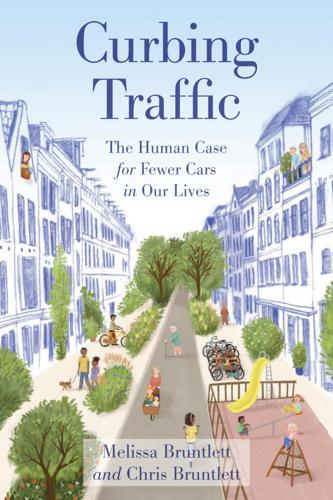
Curbing Traffic: The Human Case for Fewer Cars in Our Lives
by
Chris Bruntlett
and
Melissa Bruntlett
Published 28 Jun 2021
We soon started receiving packages—coffee from our favorite coffee company, groceries from the nearby green grocers, flour ground at the nearby windmill, and even beer from one of our craft breweries. We even did the same for our family in Canada, ensuring that birthdays and holidays were still meaningful during a pandemic. These options for hyperlocal, sustainable delivery meant these entrepreneurs—many of whom were our neighbors—could compete with the Amazons and Uber Eats of the world, and a situation that might have forced them to close their shutters allowed them to thrive. The question that now remains is whether the COVID-19 pandemic and the ongoing climate crisis will be enough for car-dependent regions to pivot and create a “new normal.” But their reaction to the coronavirus lockdown, and the unique conditions experienced by people across the planet, has allowed for some optimism.
…
Activities we had grown to love in our first year became our medicine for sanity: meanderings in the city center, and getting lost on the streets in our neighborhood helped us briefly forget about what was happening around us, not to mention giving us much needed time away from our children (as any parent can attest). However, with guidance in place to ensure social distancing of 1.5 meters (5 feet), and most residents also looking for outdoor reprieve, it sometimes proved difficult to maintain physical distance during daytime walks or rides. So we adjusted, taking our daily trips in the later evening, not only enjoying fewer pedestrians and cyclists on the streets but also the immense calm and quiet. As stated earlier, with traffic-calmed streets, we experienced much less traffic noise in Delft than in cities where we have lived before. But during the COVID-19 crisis, that was amplified, as most people stayed home and cars all but disappeared.
…
On June 1, the national government announced restaurants could open again as long as the 1.5 meter (5 feet) social distancing maatregelen (measures) were maintained. With most of Delft’s communal patio space created long ago when the streets and squares of the city center were stripped of cars, all restaurateurs needed to do was bump their tables a little farther apart, and claim the additional 25 percent of terrace space afforded to them by the municipality. For Americans, the OPEC oil crisis was a missed opportunity, but one they hopefully won’t repeat, as discussion of a Green New Deal emerges to aid the COVID-19 recovery. Critically, this stimulus can’t just switch the fuel source for all of the cars in the country, but must also include recoverable, reliable, and sustainable alternatives.

The New Nomads: How the Migration Revolution Is Making the World a Better Place
by
Felix Marquardt
Published 7 Jul 2021
Being able to do your work from anywhere is only any good if you genuinely like and have a connection to the anywhere that you happen to be in. Covid-19, perhaps by necessitating social distancing, showed equally the importance of social contact. Many of us have now tasted the isolated life of the digital nomad, connected only via the internet, and its attractions are dubious. Location is just as important as ever, but chief among the draws of a place are the people with whom you share it. In short, rather than altering my opinions, the pandemic reaffirmed the things I had been thinking, and the journey that I had been on during the writing of this book.
…
Though I have reduced my flying considerably, even before the pandemic, I haven’t been able to square this circle thus far. As I write this, the life of the digital nomad has been both disrupted enormously by coronavirus, and, also, reified for the rest of us. Covid-19 showed that working from home is possible for far more people than we expected. With hundreds of business closing their offices but maintaining their operations, it seems likely that many of these workers will not want to go back to the daily grind of either long commutes or small living quarters when the pandemic finally releases its grip. Similarly, many people have been laid off, meaning that the freelancers that swell the ranks of the digital nomads are in demand.
…
Africa’s share of the global population is 17 per cent, but the continent generates only 4–5 per cent of greenhouse gas emissions. It is impossible to know what impact Covid-19 will have on these statistics in the long term. But, with the aviation industry facing a moment of existential threat, we have the opportunity to think strategically about what we want from the future of flying, and the future of migration. With train travel, and slower travel, more practical during the pandemic, perhaps behaviour change will follow. More philosophically, with flights grounded, the coronavirus has reminded us just how exceptional flying is for the vast majority of humans.

System Error: Where Big Tech Went Wrong and How We Can Reboot
by
Rob Reich
,
Mehran Sahami
and
Jeremy M. Weinstein
Published 6 Sep 2021
At this same unprecedented time, we experienced the COVID-19 pandemic, which as of this writing has taken more than 3 million lives worldwide while upending work, education, the economy, and our personal lives. The pandemic caused one of those rare moments of instantaneous behavior change with extraordinary long-term implications. Vladimir Lenin is alleged to have said, “There are decades when nothing happens, and then there are weeks where decades happen.” Overnight, much of the world shifted to working from home and schools closed as public health authorities imposed social distancing rules and in some areas shelter-in-place orders.
…
A veritable alphabet soup of abbreviations—the Fair Credit Reporting Act (FCRA), Health Insurance Portability and Accountability Act (HIPAA), Family Educational Rights and Privacy Act (FERPA)—speaks to the seriousness with which policy makers have sought to balance privacy protections with the government’s need to access information on people’s credit, health status, and education records. The COVID-19 pandemic has brought these issues into sharp relief. Effective strategies of pandemic surveillance have the potential to benefit all of us as we confront a once-in-a-century public health crisis. But whereas the Chinese government is comfortable with mandating access to people’s personal information, in a democracy, the growth of digital contact tracing depends on balancing the public health benefits against people’s concerns about privacy. The efforts by Apple and Google to develop a COVID-19-tracing technology demonstrate this careful balancing act at work.
…
Doing that will require our democratic and civic institutions to work together with tech companies to infuse a broader set of values into how technology is developed and deployed. The COVID-19 pandemic revealed just how many digital tools and services, such as videoconferencing, have become essential to our lives. And there was certainly civic-minded engagement by tech companies, as search engines and social networks proactively communicated scientific information about face masks and other health-promoting measures to their users. AI tools were also deployed in the search for COVID-19 therapeutics and vaccines. As the pandemic recedes from view, it’s time to chart a new path forward. Despite deep political polarization and legislative stalemates in many democracies, especially in the United States, our politics are open to a serious moment of reckoning with technology.
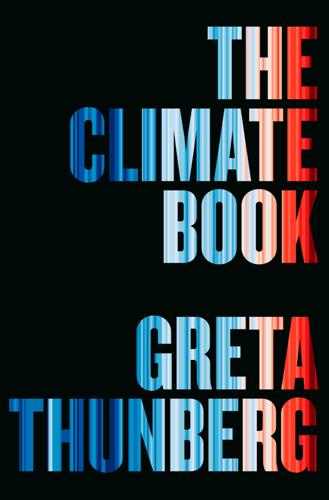
The Climate Book: The Facts and the Solutions
by
Greta Thunberg
Published 14 Feb 2023
All these impacts interact in unpredictable ways and make it exceedingly difficult to predict exactly how much economic damage will be associated with what degree of warming. Still, people try. In 2021, Moody Analytics estimated that the global economic toll of 2°C of warming would be $69 trillion. A study undertaken by Swiss Re estimated that 2.6°C of warming by 2050 would inflict three times more economic damage than the Covid-19 pandemic. Unlike the Covid pandemic, however, the damage inflicted by warming will only grow worse every year. Three degrees of warming would produce a world that hasn’t existed since humans emerged as a species. There was plenty of life back then, but no humans. It’s certain that such a world could not support 7.8 billion people.
…
But that rhetoric, still empty, also suggests the possibility that the unprecedented collective action and public intervention made necessary by the pandemic may not mark a one-time shift – and indeed that some of that new willingness may come climate’s way soon. ‘Anything we can do, we can afford,’ John Maynard Keynes declared in the midst of the Second World War. The pandemic reminded us of that principle; with climate change, the world might hope to actually enact it. The pandemic was humbling, too, teaching those who didn’t know it already that crises don’t reliably or simply solve rivalries and prejudices and the basic crimes of human indifference. And if Covid-19 also taught us, positively, that people respond when they perceive an imminent and immanent threat, it brought some negative lessons as well.
…
Many have wondered what the first disaster to bring the modern, globalized world to a temporary standstill would be. Some kind of resource-related conflict, an energy crisis or financial collapse, perhaps. Instead, it was a pandemic that appeared and changed our lives overnight. In the winter of 2022, when we were finishing this book, it was not possible to say for sure that Covid-19 had been transmitted to humans from other animals, in this case bats. There are still uncertainties. What we do know, however, is that most pandemics do come from animals; they are zoonotic diseases. In fact, 75 per cent of all new infectious diseases originate from wildlife. Natural habitats should work as a protecting shield, but once you strip back too much of that natural barrier we are exposed to increasing levels of risk.

How to Spend a Trillion Dollars
by
Rowan Hooper
Published 15 Jan 2020
Invest in girls’ education’. www.brookings.edu/opinions/want-to-save-the-planet-invest-in-girls-education/ 23 See ‘Sector summary: health and education’ at drawdown.org/sectors/health-and-education CHAPTER 2: CURE ALL DISEASE 1 David Cutler and Lawrence Summers (2020) ‘The COVID-19 pandemic and the $16 trillion virus’. JAMA Network. DOI: 10.1001/jama.2020.19759 2 Patrick Walker et al. (2020) ‘Report 12 – the global impact of COVID-19 and strategies for mitigation and suppression’. www.imperial.ac.uk/mrc-global-infectious-disease-analysis/Covid-19/report-12-global-impact-Covid-19/ 3 Cardiovascular disease: www.who.int/news-room/fact-sheets/detail/cardiovascular-diseases-(cvds); neurological: www.thelancet.com/journals/laneur/article/PIIS1474-4422(19)30029-8/fulltext; cancer: www.who.int/news-room/fact-sheets/detail/cancer; infectious disease: www.who.int/whr/1996/media_centre/press_release/en/ 4 Matthew Young et al. (2018) ‘Single-cell transcriptomes from human kidneys reveal the cellular identity of renal tumors’.
…
This stimulates the immune system to mount an response, so provides protection if the real pathogen is ever encountered. Robin Shattock’s putative vaccine is an RNA vaccine, as is a promising US Covid vaccine. If we can create a universal flu vaccine, we would be protected from what is still one of the greatest health threats to our species: the emergence of a flu pandemic. It’s the thing we were worried about when coronavirus came along, and perhaps the fact that Covid-19 was caused by a coronavirus and not an influenza virus is what wrong-footed the response of some governments. The development of a universal flu vaccine is therefore vital, and would help counter the rise of antimicrobial resistance.
…
‘Intervening to encourage people to believe in what they can achieve and to have the self-confidence to try may have long run effects, and may form a key part of our anti-poverty toolkit.’ MIT economist Abhijit Banerjee, who shared the 2019 Nobel Prize in economics, has made similar arguments.16 Banerjee, incidentally, is one of a group of economists who looked at the effect of cash transfers in Kenya during the Covid-19 pandemic. People given money ($0.75 a day) were less likely to suffer hunger or report sickness, including depression. The effects are modest, but it supports the idea that UBI can improve people’s resilience in tough times.17 $ $ $ THE PROGRESA SCHEME in Mexico in the late 1990s was at the vanguard of cash transfer initiatives.*18 Mothers in poor households were given cash sums on condition that their kids attended school regularly.
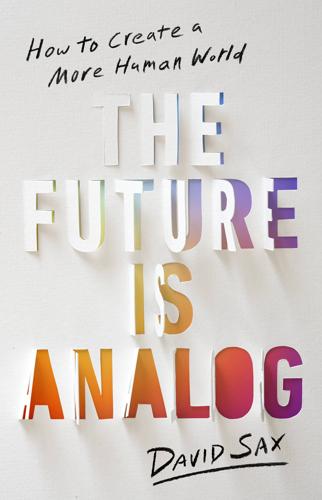
The Future Is Analog: How to Create a More Human World
by
David Sax
Published 15 Jan 2022
But that is starting to change as more evidence becomes available on the proactive benefits of increased face-to-face conversation. In one study, groups with stronger associational social ties (like church groups or basketball leagues) were shown to have fared better during the early phase of the pandemic, seeing fewer deaths and infections than people on their own. As the study’s author, demographer Lyman Stone, told me, conversation helped these groups create “pandemic resilience.” Each time the individuals in these groups discussed COVID-19 during the early months of 2020, they exchanged important information, which changed group and individual behavior. You met your friend in the dressing room before the hockey game, saw them wearing a mask, and asked them why; they explained about airborne virus spread, and you began wearing a mask.
…
“NYC Is Dead Forever. Here’s Why.” LinkedIn. August 13, 2020. www.linkedin.com/pulse/nyc-dead-forever-heres-why-james-altucher. Chapter 1 “Nearly Half of US Employees Feel Burnt Out, with One in Four Attributing Stress to the COVID-19 Pandemic.” Eagle Hill Consulting. April 14, 2020. www.eagle hillconsulting.com/news/half-us-employees-burnt-out-stress-from-covid19 -pandemic. Robinson, Brian. “Remote Workers Report Negative Mental Health Impacts, New Study Finds.” Forbes. October 15, 2021. Grant, Adam. “There’s a Name for the Blah You’re Feeling: It’s Called Languishing.” New York Times. April 19, 2021.
…
This future, made possible by artificial intelligence, big data, mobile computing, the internet, electric cars, smart scooters, virtual reality, and blockchain, would make us happier, healthier, smarter, richer, and just better-off. And then one day, just like that, our digital future arrived. Late in 2019, a sick bat emerged from its cave somewhere in China, pooped near a pangolin (or some other creature), and set off a chain of events that none of the tech oracles predicted (except Bill Gates). The COVID-19 pandemic happened so suddenly and so completely that few people even realized the scope of what they were experiencing. On Wednesday we were dropping our kids off at school, heading into the office, going out for lunch, and seeing a play after dinner; by Saturday we were assessing how many cans of beans we owned and which sourdough recipe was the simplest, while figuring out how to simultaneously stream a yoga class through the television, take a conference call in the closet, and get our kids enough digital devices to do school and play Roblox all day long.

Hype: How Scammers, Grifters, and Con Artists Are Taking Over the Internet―and Why We're Following
by
Gabrielle Bluestone
Published 5 Apr 2021
The virus had spread around the world, wreaking particular havoc in China and Italy, and after a month of stalling, New York City was itself just two days away from shutting down all its schools, bars, and restaurants. But just off the Bowery in SoHo, in the face of a global pandemic, dozens of people had crammed together, collectively risking their lives for something even more viral than COVID-19: a Supreme drop. As it was, the news of the virus made it a great day to score the elusive skateboarding gear. Justin Marchesani and Roland Carlor, two New York City fans of the brand who I caught leaving the store, said that for an 11 a.m. drop on a Thursday, the line was short and fast-moving.
…
Prosecutors also pointed out that not only had McFarland never mentioned health problems before, but in a recent medical exam, he indicated he had no allergies or respiratory or cardiovascular problems. But Elkton, the Ohio prison to which McFarland had been transferred, reportedly had an outbreak of COVID-19 so bad the National Guard had to be called in. On July 4, McFarland tested positive for coronavirus. “Tested positive for COVID today,” McFarland told a New York Post reporter. “Being put in isolation in a big room with 160 other people who have it at this jail.”234 Like many things after COVID-19, McFarland’s status was no longer funny. But for such a serious ordeal, it would seem not much was learned. In October, McFarland was sent back to solitary confinement, this time for launching a podcast from prison, which had been recorded over the phone.
…
It’s like our phones are making us all idiots.” Conclusion Like vaccinations, jade eggs, and the value of Elon Musk’s companies, COVID-19 quickly turned into an emotional referendum. In this country, at least, how you feel about an issue supersedes any scientific facts, and some people have simply chosen not to believe in the virus, dismissing the advice of epidemiologists as political spin. At the end of the summer, WeWoreWhat’s Danielle Bernstein revealed she had been diagnosed with COVID. She’d been on public lockdown for less than two weeks when anonymous call-out accounts began buzzing that maybe she’d made the whole thing up to cover for her lack of Fashion Week appearances.
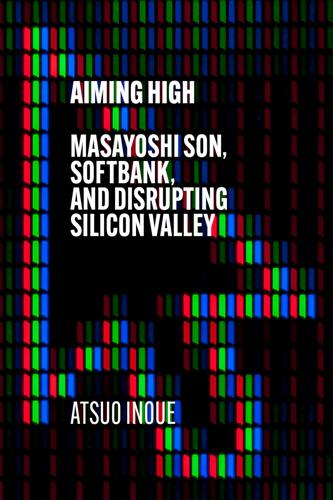
Aiming High: Masayoshi Son, SoftBank, and Disrupting Silicon Valley
by
Atsuo Inoue
Published 18 Nov 2021
WeWork continues to evolve, with 70 per cent of the world’s largest companies – such as ByteDance, Google, Facebook and Goldman Sachs – having accessed its services. In any sector or business, being at the right place at the right time – random acts of fate, essentially – plays an important role in success and with the Covid-19 pandemic and social-distancing requirements companies have been forced into a rethink of population density within the workplace, with some concluding agreements with WeWork to accommodate their employees. It also presents a solution in terms of new trends in reducing the distance between the workplace and employees’ places of residence, such as with Facebook telling its employees they can work from any WeWork they please.
…
You have to have Zoom meetings so often, too. In this sense, the new sharing-economy, such as WeWork, shared offices, shared cars, shared travel, or gig-workers, food delivery, Zoom as well, brings about a new lifestyle and work style, and the pandemic is accelerating the penetration of the new styles for sure. So, in post-COVID, that (implying the lifestyle and working style before the pandemic) will be reviewed as a matter of fact.’ Son himself is confident, citing the T-Mobile and Sprint merger as an example of America leading in the technology sector going forward as T-Mobile has become the world leader in 5G, with a successfully rehabilitated and rebranded Sprint becoming the pride of America.
…
Looking at these figures from an advertising revenue standpoint TikTok is vastly superior, underscoring the capacity of ByteDance’s algorithm to provide users with the content each and every one of them wants to see.’ Claure was in New York during the early stages of the COVID outbreak when the city was locked down, when the local government deemed letting people go to their place of work was too big a risk as they needed to keep the number of infections down. Claure also owns a home in Miami, but the situation there was even more dire. So, to escape the pandemic, he and his family headed off for Aspen, Colorado with its incredibly low infection rates as simply waiting the pandemic out was not an option for him and he wanted to keep everyone safe. ‘It hasn’t been as wonderful as I make it look on Twitter, I can assure you.
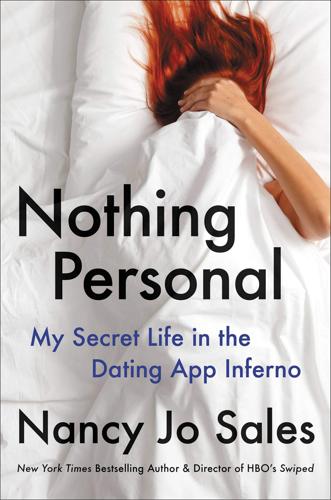
Nothing Personal: My Secret Life in the Dating App Inferno
by
Nancy Jo Sales
Published 17 May 2021
“My friend broke quarantine to have sex and got Covid,” said a woman I follow on Twitter in a viral tweet of May of 2020. “Thank goodness it wasn’t something treatable, like syphilis,” one commenter noted sarcastically. But other commenters were jocularly sympathetic with the Covid catcher. One man tweeted: “Worth it.” A woman responded: “What about all the people that slutted it up and didn’t get Covid. We rarely hear their heroic tales.” “A side chick is testing my willpower daily,” commented a man. “Can’t do it, but she’s not making it easy. Apparently doesn’t give [a fuck] about a pandemic, constantly sending nudes and telling me to stop being scared.
…
Ollstein, Alice Miranda, and Mohana Ravindranath. “How Some—but Not All—Dating Apps Are Taking on the STD Epidemic.” Politico, December 10, 2019. www.politico.com/news/2019/12/10/dating-apps-stds-080159. Olson, Loren A. “Do You Need a Hug? I Do: Anxiety in the COVID-19 Pandemic.” Psychology Today, March 26, 2020. www.psychologytoday.com/us/blog/finally-out/202003/do-you-need-hug-i-do-anxiety-in-the-covid-19-pandemic. Ortutay, Barbara. “Dating Apps Face US Inquiry over Underage Use, Sex Offenders.” Associated Press, January 31, 2020. https://apnews.com/a93a6e2b02b7f979efca92ea7266e9f2. Padilla, Mariel. “North Carolina Lawmakers Pass Bill to Close Sexual Assault Loopholes.”
…
Psychologists who study relationships call this “technoference”—the way in which smartphones have disrupted our ability to focus on each other in relationships and even in conversations. The sociologist Sherry Turkle calls this being “alone together,” meaning that technology demands so much of us, we’ve stopped being present when we’re together in person. After the pandemic struck, and people (soon to be followed by advertisers) started using the hashtag #alonetogether as a hopeful way of saying we’re still connected through technology despite social distancing, I thought of Turkle and how she had meant just the opposite with this phrase; but since the crisis was making us rely even more on technology to connect, I think it became too disturbing to think of it as actually further undermining our closeness.
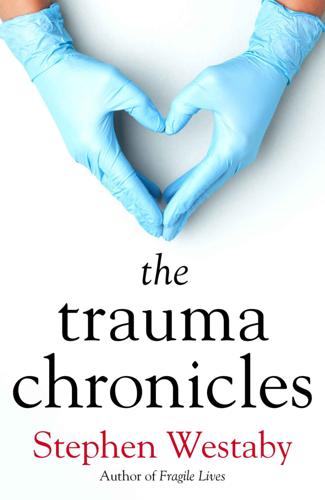
The Trauma Chronicles
by
Westaby, Stephen
Published 1 Feb 2023
What’s more, prolonged periods on a positive pressure ventilator sealed their fate. Should that be the case for Covid, steroids might help to damp down the inflammation. That dawned upon me on Valentine’s Day 2020, and I considered trying to share the suggestion. Needless to say, my interest in the cardiovascular consequences of Covid extended beyond curiosity. The virus caused heart failure and I was developing a unique artificial heart that did not need an electric power cable exiting through the skin. Now it seemed the pandemic would decimate organ transplantation on a worldwide basis. A realistic alternative would be needed, which I hoped would prove preferable to the complications of immunosuppression in the long term.
…
Patients with heart disease fared no better in the pandemic. Heart surgery virtually stopped apart from dire emergencies and was still bumping along the bottom two years later. Catheter laboratories closed with staff re-assigned to Covid roles, so coronary angioplasty and the use of catheter deployed heart valves were brought to a halt. By Autumn 2021, the British Heart Foundation calculated that more than 275,000 symptomatic cardiac patients were left waiting for investigations and treatment. In the words of their Medical Director ‘we saw growing waiting lists even before the pandemic. Now the pressure on the NHS has grown and the scale of the current cardiovascular crisis is unsustainable.’
…
The National Audit Office cautions that ‘if 50% of missing hospital referrals return to the NHS and activity grows only in line with pre-pandemic levels, the waiting list will reach 12 million patients by 2025. Should 50% of missing referrals return and the NHS succeeds in increasing its activity by 10% more than planned, the waiting list will still be 7 million.’ Despite diversionary political banter, the UK simply does not have the doctors, nurses nor hospitals to cope with the workload. In 2018 we imported more doctors than we trained, many from third world countries that could ill afford to lose them. In 2019 this figure was an appalling 60%. At the peak of the pandemic in 2020, 30% of beds were occupied by Covid patients.
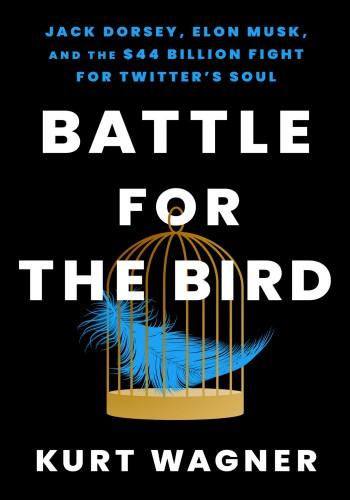
Battle for the Bird: Jack Dorsey, Elon Musk, and the $44 Billion Fight for Twitter's Soul
by
Kurt Wagner
Published 20 Feb 2024
For the most part, though, that was it. Before Covid, misinformation had been a relatively minor part of Twitter’s total policing efforts. The pandemic changed that. Twitter’s Trust and Safety team, led by Del Harvey, quickly came up with a misinformation policy related to Covid and broadened its definition of “harm” so that it could remove more posts that might put people at risk. The company took its cues from public health officials like the Centers for Disease Control and Prevention, and started demanding users take down tweets that went against expert guidelines about Covid. Users couldn’t deny recommendations from global health authorities (“social distancing is not effective”) or share alleged cures that were deemed to be dangerous (“drinking bleach and ingesting colloidal silver will cure Covid-19”).
…
The Analyst Day was initially scheduled for the fall of 2020 but was pushed until February 2021 because of Covid. The pandemic was making it difficult to judge Dorsey’s performance. Twitter’s user base was growing quickly, but its revenue was in the gutter. Sales were down 19 percent in the second quarter of 2020 as many marketers cut spending, waiting to see how the pandemic evolved. It certainly wasn’t fair to blame Dorsey for that, but it didn’t really seem fair to give him full credit for the user growth, either. It seemed like the real test for Dorsey would come once Covid was over, or at least normalized. In preparation for Analyst Day, Dorsey asked some of his top lieutenants to create a three-year business plan he could share with the board and investors.
…
a homemade treasure from his childhood that included Dorsey’s own colorful illustrations: Aditi Shorewal (@aditishorewal), “Friday night plan: Storytime with @jack.” Twitter, April 24, 2020, 10:05 a.m., https://twitter.com/aditishorewal/status/1253731836422877196. The World Health Organization declared Covid-19 a global pandemic on March 11: “WHO Director-General’s Opening Remarks at the Media Briefing on COVID-19—11 March 2020,” World Health Organization, March 11, 2020, https://www.who.int/director-general/speeches/detail/who-director-general-s-opening-remarks-at-the-media-briefing-on-covid-19---11-march-2020. declared it a nationwide emergency in the United States two days later: Steve Holland, Jeff Mason, and Makini Brice, “Trump Declares Coronavirus National Emergency, Says He Will Most Likely Be Tested,” Reuters, March 13, 2020, https://www.reuters.com/article/us-health-coronavirus-usa-emergency/trump-declares-coronavirus-national-emergency-says-he-will-most-likely-be-tested-idUSKBN2102G3.

The Equality Machine: Harnessing Digital Technology for a Brighter, More Inclusive Future
by
Orly Lobel
Published 17 Oct 2022
A dramatic population gap has resulted: it is predicted that by 2030, China will have over 30 million more men than women, which means that countless men will end up lonely and isolated, facing barriers to starting human relationships. All over the world, the Covid-19 pandemic demonstrated starkly how socially isolated we can become, and the mental health problems that can ensue. The loneliness and isolation of a global pandemic offer a poignant use case for the value of having robots (sexual and otherwise) in our homes. In an interview with Forbes, the CEO of Realbotix and creator of the sex robot Harmony claimed that sales were 75 percent higher than they were before the pandemic.14 Another possible benefit of sex robots is a safer sex industry. It’s an empirical question, like many of the other envisioned benefits, whether sex robots would indeed help reduce trafficking and protect against diseases and other negative consequences of prostitution.
…
More people are likely to start a relationship through online dating than any other type of dating. Already, over a third of new married couples say they met online. With same-sex couples, the percentage of online matches is even higher. And the Covid-19 pandemic made people rely on digital dating even more than in the past, connecting people when bars and parties were on hold. Bumble, Tinder, OkCupid, and Match.com all reported dramatic increases in traffic during the first months of the pandemic. OkCupid reported a 700 percent increase in dates in the second quarter of 2020, and Bumble reported a 70 percent rise in video calls during the same time frame.1 “What the internet apps do is that they enable you to see, for the first time ever in history, the market of possible partners,” says Eva Illouz, director of studies at the École des Hautes Études en Sciences Sociales in Paris, who has studied the ways in which capitalism and the modern world have transformed our emotional and romantic lives.2 Online dating apps can expand the pool of potential love matches and can re-engineer our patterns of dating and mating like never before.
…
The social integration of robots and the valuing of human care can be mutually reinforcing as society navigates the realities of the future. The Loneliness Pandemic I mentioned before that in the summer of 2018, I helped officiate my uncle Raffi’s wedding to his husband, during which I read from the Supreme Court case Obergefell v. Hodges: “Marriage responds to the universal fear that a lonely person might call out only to find no one there. It offers the hope of companionship and understanding and assurance that while both still live there will be someone to care for the other.” Loneliness has become an international pandemic. Marriage is in decline around the world, and social isolation caused by Covid-19 removed many from their everyday interactions.

SEDATED: How Modern Capitalism Created Our Mental Health Crisis
by
James. Davies
Published 15 Nov 2021
BBC News, https://www.bbc.co.uk/news/business-53918568 (accessed 26 Aug. 2020). 4 Comas-Herrera, Adelina (2020), ‘Mortality associated with COVID-19 outbreaks in care homes: early international evidence’, ILTCPN, 2020, https://ltccovid.org/2020/04/12/mortality-associatedwith-covid-19-outbreaks-in-carehomes-early-international-evidence/ (accessed Oct. 2020). 5 Van Lancker, Wim, and Parolin, Zachary (2020), ‘COVID-19, school closures, and child poverty: a social crisis in the making’, Lancet Public Health, https://doi.org/10.1016/S2468-2667(20)30084-0. 6 BBC News Online (2020), ‘Coronavirus: higher death rate in poorer areas, ONS figures suggest’, https://www.bbc.co.uk/news/uk-52506979 (accessed Jan. 2021). 7 Weale, Sally (2020), ‘Four in 10 pupils have had little contact with teachers during lockdown’, Guardian, https://www.theguardian.com/education/2020/jun/15/2m-children-in-uk-have-done-almost-no-school-work-inlockdown (accessed Sept. 2020). 8 Saad-Filho, A. (2020), ‘From COVID-19 to the End of Neoliberalism’, Critical Sociology, https://doi.org/10.1177/0896920520929966. 9 Sheridan, Danielle (2020), ‘Companies accused of furlough fraud after data found two thirds of workers carried on working’, Telegraph, https://www.telegraph.co.uk/news/2020/08/23/companies-accused-furlough-frauddata-found-two-thirds-workers/ (accessed Sept. 2020). 10 Campbell, Denis (2020), ‘UK lockdown causing “serious mental illness in first-time patients”’, Guardian, https://www.theguardian.com/society/2020/may/16/uk-lockdown-causing-serious-mental-illness-in-first-timepatients (accessed Sept. 2020). 11 Office for National Statistics (2020), ‘Coronavirus and depression in adults, Great Britain: June 2020’, https://www.ons.gov.uk/peoplepopulationandcommunity/wellbeing/articles/coronavirusanddepressioninadultsgreatbritain/june2020 (accessed Sept. 2020). 12 Fujiwara, Daniel (2020), ‘The Wellbeing Costs of COVID-19 in the UK. An Independent Research Report by Simetrica-Jacobs and the London School of Economics and Political Science’, https://www.jacobs.com/sites/default/files/2020-05/jacobs-wellbeing-costs-of-covid-19-uk.pdf (accessed Oct. 2020). 13 NHS (2020), ‘BSA Medicines Used in Mental Health, England 2015/16 to 2019/20’, https://nhsbsaopendata.s3-eu-west-2.amazonaws.com/mh-annual-narrative-final.html (accessed Sept. 2020). 14 Pierce, Mathias (2020), ‘Mental health before and during the COVID-19 pandemic: a longitudinal probability sample survey of the UK population’, Lancet Psychiatry 7(10):10883–92. 15 Public Health England (2020), ‘Guidance for the public on the mental health and wellbeing aspects of coronavirus (COVID-19)’, https://www.gov.uk/government/publications/covid-19-guidancefor-the-public-on-mental-healthand-wellbeing/guidance-for-thepublic-on-the-mental-health-andwellbeing-aspects-of-coronaviruscovid-19 (accessed Oct. 2020). 16 The Collective Psychology Project (2020), ‘Collective Resilience: How we’ve protected our mental health during COVID-19’, https://www.collectivepsychology.org/wpcontent/uploads/2020/09/Collective-Resilience.pdf (accessed Oct. 2020). 17 Social & Human Capital Coalition (2020), ‘Only 9 per cent of Britons Want Life to Return to “Normal” Once Lockdown Is Over’, https://social-human-capital.org/only-9-of-britons-want-life-to-return-tonormal-once-lockdown-is-over/ (accessed Oct. 2020). 18 UCL (2020), ‘Third of people report enjoying lockdown’, https://www.ucl.ac.uk/epidemiology-health-care/news/2020/jul/third-people-reportenjoying-lockdown (accessed Oct. 2020). 19 Harrabin, Roger, ‘Climate change: Could the coronavirus crisis spur a green recovery?’
…
For the last thirty years, Timimi has worked as a child psychiatrist, developing innovative mental health interventions for vulnerable young people, while at the same time researching and writing nearly a hundred articles, books and papers on child and adolescent mental health.13 I wanted to discuss with him a topic he had been considering for some decades as a professor, a psychiatrist and a parent. Given that he had worked closely with our school system for many years, I was keen to understand what he made of the new mental health interventions that have widely infiltrated our schools since 2010, and which are set to expand further following the COVID pandemic and its impact on mental health. Even before the pandemic, childhood distress was rising rapidly (by 48 per cent since 2004), with 1 in 8 children alleged to have a mental disorder. Despite this, only two-thirds of children referred for help actually receive any support, with half of those having to wait many weeks, months or even years for it to be delivered.
…
While suffering afflicted many during lockdown, others, less exposed to its various stresses, began to flourish in unexpected ways, which was the side of the story that new capitalism, judging by the coverage, was far less likely to report. In fact, when YouGov undertook the largest survey into the national outlook, only 9 per cent of people reported wanting life to return to ‘normal’ after the pandemic was over,17 while research conducted at University College London showed that lockdown was enjoyed by a full third of the British population.18 Our COVID confinement, it seems, had brought deep questioning of our pre-COVID neo-liberal lives. Many people were relieved to be temporarily away from jobs they disliked or found dissatisfying and unengaging. Others found unsought-for opportunities to spend more time with immediate family, to rekindle and deepen connections, to read, to reflect, to walk and to exercise.
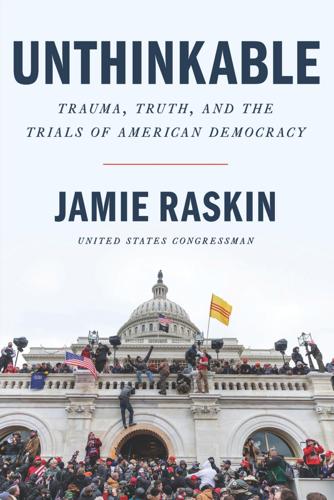
Unthinkable: Trauma, Truth, and the Trials of American Democracy
by
Jamie Raskin
Published 4 Jan 2022
But it became painfully clear to me—yes, even to me, of the perpetual naïve faith that friendship and community can overcome all obstacles—that Jim Jordan considered us his enemies in the most basic sense and that his time in Congress was going to be spent demonstrating his absolute devotion to one person alone: Donald Trump. On our COVID-19 subcommittee, Jordan acted nimbly to cover up for what I saw as Trump’s recklessness, incompetence, and mismanagement of the pandemic response. He ridiculed and heckled Dr. Fauci. He tore into the urgent public health mandates of masking and social distancing, which were pretty much all we had to protect ourselves before the vaccines came out. He ignored or minimized the massive death toll of COVID-19, and blamed the economic problems caused by the COVID public health disaster on “Democrat governors.” When he went sailing off on an anti-Chinese polemic and filibuster, I would seek recognition to recount at least nineteen different occasions on which Donald Trump lavishly praised the beautiful performance of General Xi and the Chinese autocratic government in the first five months of the COVID-19 crisis.
…
Trump and his collaborators were turning the richest and most scientifically advanced nation on earth into a failed state, defined as a nation that cannot deliver the basic goods of existence to its own people. That would include the essential good of protection against deadly diseases. The U.S. response to COVID-19 was a historic debacle that will be studied forever as a test case for public health catastrophes, what not to do when a pandemic happens. At a time that called for the best and most enlightened democratic leadership in the world, we simply had the worst. The summer of 2020 brought little relief from COVID-19, but there was one strange silver lining to the situation. Protracted social isolation gave Americans the chance to witness and then really see the continuing brutal violence wielded by certain police officers and certain police forces against African American citizens.
…
We drove down to Lafayette Square and found lots of elaborate Trumpian military fencing under construction as COVID-safe masked crowds of nonviolent youthful protesters gathered to chant support for the sweeping reforms contained in the George Floyd Justice in Policing Act. The homemade signs were vivid: “If You Don’t Like Wearing Your Mask Every Day, Try Breathing While Black,” “Black Lives Matter/Black Votes Matter,” “Who Do You Call When a Cop Is the Murderer?” and “George Floyd Mattered.” We wended our way through the crowd in our masks, trying to maintain social distance as best as we could, even as we warmly greeted constituents who were excited to bump into me there.
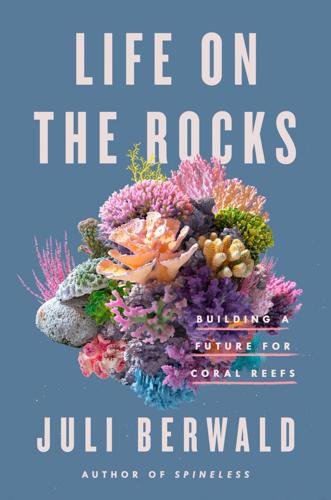
Life on the Rocks: Building a Future for Coral Reefs
by
Juli Berwald
Published 4 Apr 2022
GO TO NOTE REFERENCE IN TEXT Traditional Owners: “Traditional Owners of the Great Barrier Reef,” Great Barrier Reef Marine Park Authority, 2021, https://www.gbrmpa.gov.au/our-partners/traditional-owners/traditional-owners-of-the-great-barrier-reef. GO TO NOTE REFERENCE IN TEXT carbon emissions fell: E&T editorial staff, “Largest CO2 Emissions Drop in History Due to Covid-19 Pandemic,” Engineering & Technology, October 15, 2020, https://eandt.theiet.org/content/articles/2020/10/covid-19-pandemic-caused-largest-co2-drop-in-history/. GO TO NOTE REFERENCE IN TEXT Chapter 37. Flicker Breonna Taylor: Darcy Costello and Tessa Duvall, “Who Are the Louisville Officers Involved in the Breonna Taylor Shooting?
…
So many problems had come to the forefront during the pandemic. Failures of the medical system and institutionalized racism were unavoidable, along with the continued lack of response to climate change. So much of my relentless reading had shown just how interconnected these problems were. How climate change was really a problem that disproportionately affected people of color. How climate refugees will be forgotten by the medical system. How people of color died during the pandemic at almost twice the rate of white people. How as a group Hispanic, Black, and Indigenous children made up 75 percent of juvenile deaths from COVID-19, while representing only 41 percent of the population.
…
You can choose to lock in decades of environmental destruction, or we can turn this grim experience into something good.” Like our struggles with Isy and the insistent bleaching of the corals, the COVID-19 pandemic laid bare weaknesses. It showed problems that were already lurking beneath the surface—problems with our health care system, problems with inequality, problems with climate change. But like the way residential treatment upended the small world of our family and then brought it back together again, the devastation brought by the COVID crisis is an opportunity to rebuild better. In Europe, an economic recovery package worth $800 billion required energy-efficient building and a transition away from fossil fuels.
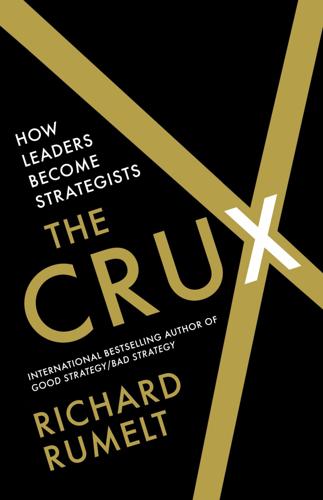
The Crux
by
Richard Rumelt
Published 27 Apr 2022
As I write this paragraph, I am homebound by the COVID-19 virus. Unlike South Korea, the US government was unable to quickly respond to the new virus. The media wanted to blame President Trump, but, for all his failings, the main problem was systemic. The US Department of Health & Human Services is a giant bureaucracy that manages both the Food and Drug Administration (FDA) and the Centers for Disease Control (CDC). As the COVID-19 pandemic hit the United States, there was mistrust, infighting, politics, and incompetence throughout the whole system. Despite years of warnings and studies about possible pandemics just like COVID-19, no one had an action plan.
…
The required grit is not there. PANDEMICS As I write this paragraph in the fall of 2020, I am holed up at home because of the COVID-19 pandemic. Here in Oregon, early in the pandemic, Oregon Health Authority director Patrick Allen told the state legislature that “without extraordinary efforts by the federal government, we are going to run out of needed protective gear for front-line health care workers.” Similar alarms are being raised across the country, as local health bureaucrats realized that they had failed to plan for an inevitable national emergency. Pandemics are not predictable, but they are inevitable.
…
It would lay out the conditions that might warrant forced obedience versus those that permit a modicum of individual freedom. COVID-19’s mortality rate for those under seventy is apparently less than 1 percent. What if the pandemic is truly horrific, with a 10 percent mortality rate, then what? And could anyone have predicted that the media and politicians would use the disease as a tool to bludgeon their rivals? The big success in the United States with regard to the pandemic was not any long-range strategic plan but the highly crux-based strategic “Warp Speed” project. Before COVID-19, developing a vaccine was a long-term affair. The fastest prior vaccine development was for the mumps, which took four years.
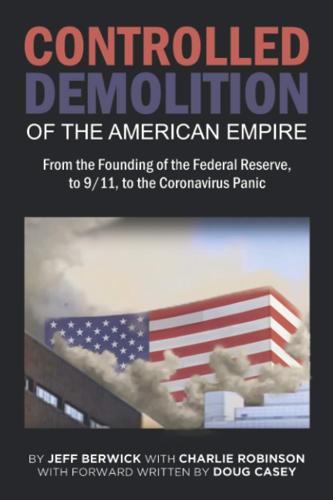
The Controlled Demolition of the American Empire
by
Jeff Berwick
and
Charlie Robinson
Published 14 Apr 2020
So what makes COVID-19 so different? First, allegedly, it is more contagious, more deadly, and easier to contract than all those other viruses. Miraculously, despite all these extremities, this will be the one disease that they can cure by the vaccine. This claim comes despite the fact that even the plain, old, garden variety Coronavirus that causes common household flu and colds, cannot be prevented by a single vaccine, because the strains mutate every season. Second, for the first time in history, the world has been “forced” to adopt severe tactics to slow the spread of COVID-19: social distancing, shutdowns, closures, and cancellations.
…
Collusion on a grand scale involves many players – individuals and organizations with competing (and often concealed) goals and agendas. Between herding angry cats and managing contingencies, it is impossible to entirely prevent cock-ups, errors, and betrayals. COVID-19: Conspiracy Lies! Lies! Lies! So what do people call it when conspiracy theories become conspiracy facts? This is important because the 2020 Designer “Pandemic” is the product of a longstanding pattern of events and behaviors – turning virtually every “conspiracy theory” into fact, with corroborating evidence! COVID-19 has brought it all together. The global power elite plotting to impose a totalitarian New World Order. Implementation of an authoritarian world government controlled by the United Nations and a global central bank.
…
On 11 February 2020, WHO announced a name for the new coronavirus disease: COVID-19. ‘CO’ stands for corona, ‘VI’ for the virus, and ‘D’ for the disease. The 19 is for 2019. Sounds plausible enough, right? The Plague, Spanish Flu, SARS, MERS, Ebola, Swine Flu – humanity has seen them all. Many of them were essentially lies as well. But, outbreaks happen, people get infected, some die, life goes on, the disease goes away. No vaccine was necessary. The world economy was not put on hold. SARS (Severe Acute Respiratory Syndrome), caused by a coronavirus, is an epidemic disease that seemed on the brink of a pandemic in the early 2000s. It spread rapidly from its origin in Asia in 2002-2003 to Europe and the Americas before it just disappeared.

The Contrarian: Peter Thiel and Silicon Valley's Pursuit of Power
by
Max Chafkin
Published 14 Sep 2021
In an interview a week before the primary—and two weeks after getting his latest check from Thiel’s PAC—Kobach told an interviewer that he believed hospitals and doctors were exaggerating the severity of the pandemic to hurt Trump, by recording accidental deaths, like car accidents, as COVID deaths. “I believe that the numbers are being cooked,” he said. On primary day, he lost to Marshall by fourteen points. * * * — experts had called for a gradual reopening of the economy and the continued reliance on social distancing and masks. Trump dismissed all of this as political posturing, insisting, at various times, that the terrible virus was being vanquished by his administration, or that it actually was no worse than the flu, or both.
…
Boudette, “Hundreds of Tesla Workers Tested Positive for the Virus after Elon Musk Reopened a Plant, Data Shows,” The New York Times, March 13, 2021, https://www.nytimes.com/2021/03/13/world/tesla-elon-musk-coronavirus-outbreak.html. virus as the “sniffles”: “Trump Says Son Barron’s Covid Illness ‘‘Just Went Away,’ ” NBC News, October 22, 2020, https://www.nbcnews.com/video/trump-says-son-barron-s-covid-illness-just-went-away-94447173800. “control the pandemic”: “Mark Meadows: We’re Not Going to Control the Pandemic,” CNN, October 25, 2020, https://www.youtube.com/watch?v=tN9T73GWam0. planning on doing immediately: Danny Crichton, “In Its 5th Filing with the SEC Palantir Finally Admits It Is Not a Democracy,” TechCrunch, September 21, 2020, https://techcrunch.com/2020/09/21/palantir-is-not-a-democracy/.
…
By late March more than 550,000 Americans had died from COVID, making the pandemic deadlier than U.S. casualties in World War I and World War II combined. The United States has suffered one of the worst per-capita mortality rates in the world. How had those grim figures not moved him to break with Trump or to at least spend his money more ambitiously to try to help? How was it that his most ambitious donation of 2020 had been to the political action committee of one of America’s most prominent nativists, Kris Kobach? I tried to ask him about this, of course. But the promised interview never materialized, and as COVID-19 case levels soared anew, Thiel’s representative stopped returning my emails.
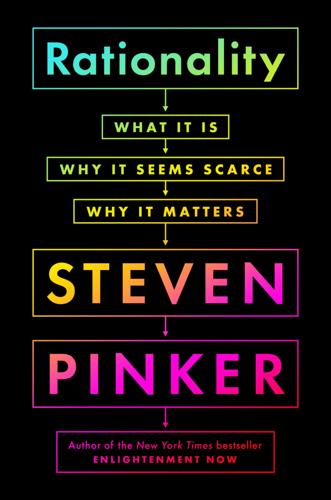
Rationality: What It Is, Why It Seems Scarce, Why It Matters
by
Steven Pinker
Published 14 Oct 2021
Russia has a female president. The world suffers a new and even more lethal pandemic than Covid-19. Vladimir Putin is constitutionally prevented from running for another term as president of Russia and his wife takes his place on the ballot, allowing him to run the country from the sidelines. Massive strikes and riots force Nicolás Maduro to resign as president of Venezuela. A respiratory virus jumps from bats to humans in China and starts a new and even more lethal pandemic than Covid-19. After Iran develops a nuclear weapon and tests it in an underground explosion, Saudi Arabia develops its own nuclear weapon in response.
…
Yet in that same year, the Covid-19 pandemic set off a carnival of cockamamie conspiracy theories: that the disease was a bioweapon engineered in a Chinese lab, a hoax spread by the Democratic Party to sabotage Donald Trump’s chances of reelection, a subterfuge by Bill Gates to implant trackable microchips in people’s bodies, a plot by a cabal of global elites to control the world economy, a symptom of the rollout of fifth-generation mobile data networks, and a means for Anthony Fauci (director of the National Institute of Allergy and Infectious Diseases) to earn windfall profits from a vaccine.1 Shortly before the announcements of the vaccines, a third of Americans said they would reject them, part of an anti-vax movement that opposes the most benevolent invention in the history of our species.2 Covid quackery has been endorsed by celebrities, politicians, and, disturbingly, the most powerful person on earth at the time of the pandemic, US president Donald Trump. Trump himself, who was consistently supported by around 40 percent of the American public, raised further doubts throughout his presidency on our collective capacity for reason. He predicted in February 2020 that Covid-19 would disappear “like a miracle,” and endorsed quack cures like malaria drugs, bleach injections, and light probes.
…
Traffic and pollution work the same way: my decision to drive won’t clog the roads or foul the air, just as my decision to take the bus won’t spare them, but when everyone chooses to drive, everyone ends up bumper to bumper on a smoggy freeway. Evading taxes, stinting when the hat is passed, milking a resource to depletion, and resisting public health measures like social distancing and mask-wearing during a pandemic, are other examples of defecting in a Public Goods game: they offer a temptation to those who indulge, a sucker’s payoff to those who contribute and conserve, and a common punishment when everyone defects. To get back to the example with which I opened the chapter, here is the Tragedy of the Carbon Commons.

Futureproof: 9 Rules for Humans in the Age of Automation
by
Kevin Roose
Published 9 Mar 2021
In early 2020, when the Covid-19 pandemic hit the Bay Area, Marcus Books was forced to temporarily close its doors. And like a lot of businesses, it faced an uncertain future. But its community rallied behind it, starting a GoFundMe page and raising money to keep the store in business. Then, in May, George Floyd, an unarmed Black man, was killed by police in Minneapolis. Protests filled the streets of America’s cities, and orders started pouring into Marcus Books from all over the country from people who wanted to support its mission. It’s selling five times as many books as it was before the pandemic, and its GoFundMe donations ballooned to $260,000, more than enough to keep the store afloat.
…
I’d favor a UBI-style plan coupled with Medicare for All and generous unemployment benefits for workers who are displaced by automation, similar to how the federal government stepped in with emergency cash transfers during the Covid-19 pandemic. Whatever we do, it’s inarguable that any collective action would be better than doing what we’re currently doing to address automation-related economic pains on the federal level in the United States, which is essentially nothing. In addition to big nets, we also need to think about the small webs we can create to support each other through this technological transition. Because in the absence of some fairly radical economic and policy changes, we’re going to have to do a lot of this ourselves. Our response to the Covid-19 crisis is a useful guide here.
…
White-collar workers confined to their homes began itching to return to the office, where they could more easily collaborate with their teams and advance their careers. (One tech worker I know grumbled that “nobody is getting promoted over Zoom.”) People who had been satisfied with virtual interactions during the pandemic’s early months began flouting social distancing rules in order to eat at restaurants, drink at bars, and attend concerts and church services with their friends. Machines, it turned out, could not offer an adequate substitute for human connection, or give us what we needed to get ahead. And maybe they never will
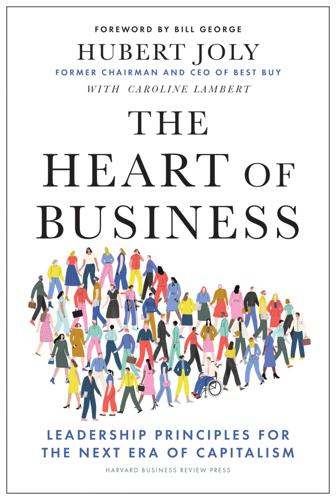
The Heart of Business: Leadership Principles for the Next Era of Capitalism
by
Hubert Joly
Published 14 Jun 2021
So was revitalizing Carlson Wagonlit Travel at a time when internet travel booking was supposed to kill the business. The Covid-19 pandemic that swept across the world in 2020 created significant challenges, threatening the survival of many companies. Yet the severe constraints around health and safety also offered new possibilities. Being forced to rethink process, products, and services brought about new ways to tap into unexplored demand and unleash new growth. Before the Covid-19 crisis, for example, Adobe, the digital creativity company, would hold an annual conference in Las Vegas for 15,000 attendees. In 2020, they could not physically gather because of social distancing and safety concerns.
…
Leadership requires combining vulnerability with making sometimes tough decisions and giving hope. Marriott CEO Arne Sorenson’s video message to employees on March 19, 2020, in the midst of the Covid-19 pandemic, is a master class in emotional intelligence and vulnerability. He appeared, shockingly to many, without his full head of hair, because of treatment for pancreatic cancer. He first talked about employees directly affected by the virus, offering support. He then explained that the impact of the pandemic and the restrictions taken to contain the outbreak were battering Marriott’s hospitality business. There was no sugarcoating, but no panic either as he went on to explain what the company was doing to mitigate the crisis.
…
More and more people hold the system responsible for social fractures and environmental degradation. Employees, customers, and even shareholders expect much more from corporations than a blind pursuit of profit. Disengagement at work is a global epidemic. More recently, a new civil rights movement and the Covid-19 pandemic have accelerated the need to rethink our system if we want to tackle the enormous challenges facing us. Business can be a force for good in this fight; it is uniquely positioned to help address some of the world’s most pressing issues. A growing number of business leaders agree. But they and I know from experience that it is hard to do.

Happy-Go-Lucky
by
David Sedaris
Published 30 May 2022
A quick stop for coffee and we’d continue on to Emerald Isle, where the coronavirus was widely thought to be a hoax, and unmasked people looked at you the same way that New York heroin addicts did, as if to say, Yeah, and what the fuck are you going to do about it? It wasn’t strangers I was worried about, though. If COVID were to get me, it would have come from a friend or acquaintance. Throughout the height of the pandemic, Hugh and I had dinner parties—at least two a week, and sometimes up to four. When questioned, I’d explain that the guests we invited were members of our bubble. But it wasn’t true. Anyone willing to leave their house was welcome. We ate a lot of ground water buffalo those first few months.
…
It’s so freeing, no longer listening to political podcasts—no longer being enraged. I still browse the dailies, skipping over the stories about COVID, as I am finished with all that as well. The moment I got my first shot of the vaccine, I started thinking of the coronavirus the way I think of scurvy—something from a long-ago time that can no longer hurt me, something that mainly pirates get. “Yes,” the papers would say, “but what if there’s a powerful surge this summer? This Christmas? A year from now? What if our next pandemic is worse than this one? What if it kills all the fish and cattle and poultry and affects our skin’s reaction to sunlight?
…
Lucky-Go-Happy Throughout the worst of the pandemic I, like everyone, thought of the many things I’d failed to appreciate back when life was normal: oh, to be handed an actual restaurant menu; to stand so close to a stranger that you can read the banal text messages that are obviously more important to him than his toddler stumbling off the curb and out into traffic. Many felt that they had taken their jobs for granted, but not me. I always loved my work, or at least the part of it that was public and involved reading out loud. The last show I did before COVID robbed me of my livelihood was in Vancouver, British Columbia, in a theater I didn’t much care for, a rock house with a grim, cramped lobby and the sort of dressing room you see in movies about performers who overdose on drugs because their dressing rooms are so depressing.
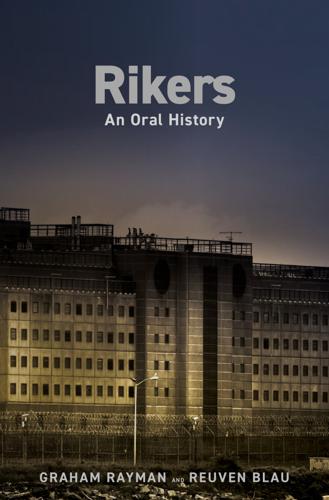
Rikers: An Oral History
by
Graham Rayman
and
Reuven Blau
Published 17 Jan 2023
Even if I could stay six feet, how vast and prolonged a game of human Tetris it would be to stay six feet away from another human being at all times in a dorm with fifty people. DIMITRI ANTONOV: That’s the thing we always kinda laughed about: where’s the social distancing? And still we didn’t even get masks or anything. That was February all the way up to March. We got masks late in March. I can understand why people were so frustrated and why it caused altercations because if anybody did have COVID, it’s like, well, what are we gonna do? JULIA SOLOMONS, social worker, Bronx Defenders: Early on in the pandemic, the Department of Correction stated that they had hundreds of thousands of masks that they were making available for staff and for clients.
…
See King, Amin “Minister” Frey, Matt after Rikers, 412 causes of violence, 91 desensitization to violence, 80 incarceration of mentally ill, 118–19 detainees’ housing assignments, 340–41 quality of medical care, 138–39 trauma of violence, 81 Frey, Warner, 368–70, 412 G Gangi, Robert after Rikers, 412 conditions in bullpens, 27–28 difficulty of detainees obtaining medical care, 130 high school in Rikers, 244 on racism in Rikers, 33 superiors not taking “the Program” seriously, 247 Gang Intelligence Unit (previously Gang Intelligence Task Force), 73 gangs bandannas as identification, 68–69 changes in purpose of, 77–78 in control of housing areas, 236, 238–39, 243, 270, 305, 306 drugs and, 176 entrance into, 13–14, 60–61, 65 escapes and, 207 history of, 12, 56, 57, 59, 61, 62–64, 68–71 housing assignments according to affiliation, 74–75 ignored by officers, 60–61 officers as members of, 77, 83, 311 officers working with leaders of, 61–62, 66, 68, 177 phone use controlled by, 50, 66, 72–73, 239, 240 power of, 61, 66–68, 72, 73–74 reasons for joining, 63, 75 gangs and violence in bullpens, 36–37 to establish credentials, 59 in housing areas, 14–15, 56–58, 60 marking teenagers, 245–46 between members of different, 49–50, 56–57, 60, 69, 72–73, 193–94 riots, 189–90 teenagers marked by, 245–46 teenagers preyed on by, 247–48 Gangster Killer Bloods, 70–71 Garcia, Biany being transsexual in Rikers, 272–73 on being transsexual in Rikers, 271, 274 Gastineau, Mark, 258–59 Gavin, Edward after Rikers, 412 attempted escape and, 210–11 community jails, 391–92 first day as officer, 15–16 food brought in for mobsters, 151 graduation ceremony of, 221 hostage situation, 195–97 on officer hitting Camacho, 259–60 on suicide, 115–16 Gilmore, Kenny after Rikers, 412 conditions in bullpen, 12 on visits, 191 Gilroy, Vincent, 3 Ginsberg, Allen, 149, 156 Giuliani, Rudy conditions in Rikers and, 277, 285 Jacobson and, 345, 346 Seabrook and, 365 “Gladiator School,” 237, 240 Glazer, Elizabeth, 362 de Blasio and criminal justice policy, 386 mentally ill detainees, 123 officers feeling like stepchildren among law enforcement officers, 374–75 power of Seabrook and, 362, 363 reduction of Rikers population, 388–89 on Sturz, 378–79 Gordon, Diane, 382 Green, Mark, 366 Grice, Marcus, 266 after Rikers, 412 on being attacked, 275 being HIV positive, 265 on fear of being in Rikers, 266 in general population teenage housing, 269–70 housing for homosexual teenagers, 271–72 officers’ treatment of LGBTQ detainees, 273–74 reading palms for officers, 270 on surviving Rikers, 275 Grieco, Martha after Rikers, 411 dangerous temperatures in housing areas, 288 Rikers as trigger for mentally ill, 114–15 Gristina, Anna after Rikers, 412 coloring hair with food, 160 on death due to officers’ inaction, 129–30 on fear of leaving, 406 in protective custody for mentally ill, 11–12, 115 violence to establish credentials, 90 on walking in water through metal detectors, 285–86 guilt crack epidemic and pleas of, 388 presumption of, 31, 244–45 reasons for pleading, 26, 32, 33, 35–36, 37–38 refusal to admit, 324–25 H handicapped individuals, 342 Hanley, Jim, 372 Harris, Darrel, 190 Harris, Dupree after Rikers, 413 basic facts about, 292 changes in purpose of gangs, 77–78 early gangs as brotherhoods, 62–64 on power of gang leaders, 73–74 searches of detainees after visits, 296–97 Harris, LaSharn, 293 after Rikers, 413 process visitors undergo, 293–94, 295, 296 racism of officers, 300 travel difficulties for visits, 292 Haynes, Derrick, 126 after Rikers, 249, 413 difficulty of obtaining medical care, 125–26, 128, 129 on gangs marking teenagers, 245–46 officers helping released teenagers, 248–49 riot in chapel, 246–47 Henagin, Lawrence after Rikers, 413 being beaten by officers, 45–46 being white detainee, 45–46, 51 on gang violence, 36–37, 72–73 riot over bananas, 89–90 Hernandez, Devonte after Rikers, 413 on getting used to teen housing area, 241 importance of visits to detainees, 299 on meeting detainees on outside, 249–50 mother’s visit experience, 294 officers ignoring violence between detainees, 243 transfer of, 250–51 vulnerable teenagers preyed on by gangs, 247–48 Heyward, Gary after Rikers, 413 beating detainees for making inappropriate sexual comments or advances to officers, 85 getting slashed, 88 ingenuity of detainees, 325 making weapons, 166 smuggling contraband, 173–74 suicides by officers, 228 history of drug use, 3 of gangs, 56, 57, 59, 61, 62–64, 69–71 of island Rikers is on, 5–6, 41 of racism, 48–49 Rikers Island Penitentiary plan, 6 of solitary confinement, 93–94 homeless individuals as detainees, 29, 117 Horn, Martin after Rikers, 413 on de Blasio and jails, 390 developing county-based jails, 384–85 on development of gangs in jails/prisons, 71 detainees bullying detainees, 17 insular environment of Rikers, 383–84 power of gangs, 72 Seabrook and Bloomberg, 366 selling Rikers, 381 “House of Dead Men,” 6 House of Detention for Men (HDM), 30 House of Xtravaganza, 267 housing areas alternative facilities due to overcrowding in, 400–401 assigning detainees to, 340–41 being removed from, before release, 399–400 blocked fire escape routes, 277–79 celebrity detainees in medical, 252, 255 conditions in, 286, 342 dangerous temperatures in, 287–88 declassification of heat-sensitive individuals and high temperatures in, 289–90 gangs and violence in, 56–58, 60 gangs in control of, 12, 236, 238–39, 305 infestations of mice, roaches, water bugs, rats, and spiders, 150, 280, 290 for detainees with COVID-19, 343–44 for LGBTQ detainees, 264, 270 for pregnant women, 145–46 sanitary measures during COVID-19 in, 332, 333–34, 338–39, 344 searches in, 356 social distancing during COVID-19, 332, 334, 339, 340, 341, 344 spread of COVID-19 in, 337 squalor of, 16 use of unready, new, 280 violence as constant in, 341 housing areas for teenagers gangs in control of, 243, 305, 306 as “Gladiator School,” 237, 240 for LGBTQ, 266 LGBTQ in regular, 269–70, 271–72 new jail for male, 235 state prisoners housed in, 245 violence in, 84, 237, 239, 240, 246 “Howl” (Ginsberg), 149, 156 Hunt, Ervin “Easy,” 30 after Rikers, 414 “bullpen therapy,” 32 detainees and civilians in kitchens, 156 own recidivism, 30, 39–40 on sister, 31–32 on working in kitchen, 151 Husamudeen, Elias after Rikers, 414 discrepancies in and manipulation of statistics, 349–50 effectiveness of solitary confinement, 100–101 Norman and, 364 Hylton, Donna after Rikers, 414 being forced to take medication, 133–34 conditions in clinic, 133 I infirmary/clinic, conditions in, 281 intake process, 8–9, 26 Israel, Stan, 363, 364 J Jacobson, Michael, 346 after Rikers, 414 on appointment as acting commissioner, 346–48 effects of “bullpen therapy,” 38–39 Giuliani and programs, 345 quality of medical care, 134 Seabrook and, 371–72 “Jails for the ’80s,” 384–85 James, Jesse, 309, 311 Ja Rule, 254, 256 Jay-Z, 256–57 John, Kadeem, 241–42 Johnson, Robert, 310 Jones, Latanya, 44–45, 323, 324 journalism, importance of, 387–88 K Kelly, Nellie, 307 after Rikers, 414 brother Ronald Spear, 306, 307–12 Kelly, Ray, 211 Kerik, Bernard after Rikers, 414 basic facts about, 347 on closing Rikers, 391 data collection and preparation process, 355 first impression of Rikers, 9 gang violence, 57 improvements fought by, 277 keeping food hot, 154 reduction of violence and, 352–53 Seabrook and, 368, 370–71 weapons smuggled in, 164–65 Kessler, Eve after Rikers, 415 constant violence, 89 corruption in Corrections Department, 16 manipulation of statistics, 360 number of mentally ill in jails, 117 record keeping by Department of Corrections, 359 on Seabrook, 364 Kev (Boxing Kev), 69 Keys, Alicia, 256 King, Amin “Minister,” 183 after Rikers, 415 basic facts about, 182, 187 drug business in Rikers, 182–83 power of gangs, 66–68 weapons in Rikers, 184–87 Kinkead, Mik, 298–99 Koch, Ed improvement of conditions in Rikers and, 148, 277 sale of Rikers, 379, 381 Sturz and, 376, 379, 380 Koehler, Richard after Rikers, 415 arrival of crack in New York City, 25 changing categories for “use of force,” 355 manipulation of statistics, 354–55 officers always getting blamed, 225 overcrowding and riots, 188 Seabrook and, 364 weapons, 164 Kuby, Ron innocent detainees labeled as criminals, 244–45 lessons taught to teenagers, 244–45 racism in Rikers, 48–49 Rikers as shelter for homeless mentally ill, 123–24 solitary confinement as frequent punishment, 94–95 L Lamashtu, Erobos Abzu, 197–99 Lampe, Bobby, 89 Lasker, Morris, 156, 380 laundry, conditions in, 281–82 Lee, Tami, 253 after Rikers, 415 ghosts at Rikers, 224 kosher food, 157 on self-discipline, 218 sexual relations between officers and detainees, 229–30 smuggling method, 175–76 Tupac at Rikers, 252–53 LGBTQ detainees attacks on, 272, 273, 275 deaths of, 264–65, 268 frequency of sexual attacks on, 264 in general population housing areas, 269–70 HIV positive, 265 hormones for transsexual individuals, 272–73 housing areas for, 264, 270 housing for teenage, 266, 271–72 romances in Rikers, 269 teenage girls, 269 Lindsay, John, 5 lingo, 15 Lippman, Jonathan Close Rikers campaign and, 377 death of Murdough and, 387 on need for criminal justice reform, 386 role of judiciary in criminal justice reform, 386–87 Lippman Commission closing Rikers and, 389–90 members, 389 public discussion of Rikers and, 389 reduction of Rikers population, 387 Sturz and, 385–86 Lombardi, Rick after Rikers, 415 attempted water escape and, 214 beating of teen not following “the Program,” 241–42 beginning of gangs in Rikers, 61, 69 being attacked by detainees, 64–66 being injured in protective custody, 76–77 contraband, 228–29 escapes and, 211, 212, 213 gangs and drugs, 176 gangs in control of housing areas, 238–39, 243 Gastineau, 258–59 hiding places for drugs, 177–78 high level of violence, 89 on hostage situation, 192 housing teenagers with state prisoners, 245 manipulation of statistics, 358–59 officers as gang members, 77 officers working with gangs, 61–62 “the Program” leading to violence, 239–40 Tackmann, 205 weapons, 176–77 Love, Michael, 60–61, 104 Lynch, Patty, 371 M Magro, Baldassare, 163 Mahon, Pete, 196–97 Malcolm, Ben, 223 Mark-Viverito, Melissa, 386 Marques, Stuart, 381–82, 393 Marte, Coss, 14–15, 415 Martin, Glenn after Rikers, 415 Close Rikers campaign, 377 failure of plan to sell Rikers and have community jails, 383 on process of reform, 394–95 Sturz’s commitment to reform, 385 McCray, Antron, 7 McGovern, James after Rikers, 403, 415 contracts being put on detainees, 91 escapes, 208–9, 212, 215 food for mobsters, 151 detainee counts, 208 on riot (1987), 192 violence between detainees, 36 weapons hidden by detainees, 37 McGrath, George, 235 McMickens, Jacqueline, 221 after Rikers, 415 difficulties of being officer, 220 food hoarding, 153 importance of personal ethics, 226–27 location and access to Rikers, 390 need for solitary confinement, 96 officer training and, 222 reasons for what appears to be cruelty by officers, 122–23 on relations between officers and detainees, 14 on resources to improve Rikers, 391–92 medical care celebrities in medical dorms, 252, 255 conditions in infirmary/clinic, 133, 281 by Corizon Health Inc., 125 during COVID-19, 335, 337 dental, 153 difficulty of obtaining, 125–29, 130 for homeless individuals, 117 hormones for transsexual individuals, 272–73 hospitalization, 128–29 detainee complaints about, 308–9 detainees forced to take medication, 133–34 lawsuit against hospital, 133 nurses covering for officers, 62 officers’ failure to provide medical care, 28, 129–32, 330 officers refusing to get, 129–32 during pregnancy, 141–47 quality of, 134–35, 138–39 in solitary confinement, 101–2, 104–5 Meldish, Joey, 168, 169 mentally ill individuals arrests of, for misdemeanors, 29 as “Brad H.,” 111 as caring for each other, 117–18 conditions in unit designed for, 286–87 death of, 286 estimated number of, in jails, 117, 119 heat-sensitivity and, 286, 289–90 inability of, to comply with officers’ orders, 119 poor treatment of, by detainees and staff, 108–9 problems created by, 113–14 in protective custody, 11–12, 115 Rikers as shelter for homeless, 123–24 Rikers as trigger for, 114–15 self-destructive behavior of, 111–13 in solitary confinement, 93, 95, 104–5, 108, 109–11 specialized units for, 119–20 suicide committed by, 116 mental observation units, 121–22 misdemeanors bail for, 26, 268 individuals arrested for, 29 sentences for, 31 Mitchell, Levi information about COVID-19, 344 social distancing during COVID-19, 340, 341 mobsters food for, 151, 158–59 privileges given to, 168–69, 262 Montanez, Paradise, 269 Montefiore Hospital, 134–35 Morse, Kathy after Rikers, 415 first impression of Rikers, 9 teenagers being in solitary confinement, 99 Murdough, Jerome, 286, 387 Murray, Archibald, 291 Mushlin, Michael after Rikers, 416 community jails, 393 on Department of Corrections fighting any improvements, 276–77 failure of community jails plan, 382–83 lawsuits against conditions in New York City jails, 379–80 Sturz and closing of Rikers, 380–81 N Newsday, 164 New York magazine, 347 The New York Times, 6, 148, 235, 380 Ninja Turtles, 42, 62, 86, 193 O odor of Rikers, 7 Oppenheim, Rachel, 328–29, 330–31, 416 Oppenheim, Tom, 319, 320 orange alerts, 15 Osei, Doris, 246, 250–51, 299–300 P “the pack up,” 396 Pasqua, Frank, III after Rikers, 414 conditions in housing areas, 286, 290 hiding contraband, 170 his contraband business, 178–80 detainees’ attempt to intimidate him, 85–86 detainees cleaning hazardous waste, 279 detainees cooking for selves, 161 KK (officers’ mess), 158–59 life as mobster in Rikers, 168–69 Pataki, George, 364–65 Perez, Mario “Machete” after Rikers, 416 fighting to establish credentials before gangs, 59 separation of detainees by borough, 59 Petcheam, Suzy, 320, 321, 321–22 Petraro, Anne, 108, 112 Philadelphia Gay News, 264 phones fights over, 17 gang control over, 50, 66, 72–73, 239, 240 selling PIN numbers, 12–13 in solitary confinement, 105 during visits, 292 Picciano, John, 371 Pierce, Gregory after Rikers, 416 emotional shutdown of, 85 officers beating detainees, 84–85, 87 punch (drink), 152 violence to prevent sexual attacks, 84 pleas, reasons for guilty “bullpen therapy,” 26, 32, 33, 35–36 crack epidemic and, 388 pretrial detention, 37–38 Polanco, Layleen, 266–67 Ponte, Joseph, 362, 363, 403 Powers, Peter, 346 Powitz, Robert after Rikers, 416 on age of units, 279–80 conditions in infirmary, 281 conditions in unit for mentally ill, 286–87 lack of cooperation from New York City to improve conditions, 276–77, 284–85, 286, 289–90 pregnancy abortion and, 146–47 methadone treatment during, 141 officers’ treatment during, 146–47 in pregnancy housing unit, 145–46 in regular housing unit, 141–43 in solitary confinement, 143–44 Price, Grace, 6–7, 416 Prison Health Services (PHS), 135.
…
See solitary confinement R race and racism administration and, 49 attacks by other detainees and, 87 being white in black prison world, 45–46, 51 in bullpens, 33 as foundation of criminal justice system, 393–94 history of, 48–49 as institutional in Rikers, 48–49 internalization of, 50–51 of officers, 300 plantation mentality of officers, 52–53 Rikers as out-of-sight and out-of-mind and, 384 Spanish female detainees cleaning officers’ quarters, 51–52 treatment of people of color by officers of color, 46–48 violence among detainees, 63–64 Ramsey, John, 97, 416 recidivism, 30, 39–40 rehabilitation, 31 released, being basic facts about, 396 being removed from housing before, 399–400 celebrities, 255–56 looking back at Rikers and, 401–2 need to keep last day secret, 401 waiting for bail and, 398–99 Revolving Door, 26, 29, 32 Ricciardi, Celeste on contraband contact lenses, 170 having abortion, 146–47 in pregnancy unit, 145–46 process visitors undergo, 295 transportation difficulties, 295 Rice, Daniel being handicapped during COVID-19, 342 sanitary measures during COVID-19, 338, 344 social distancing during COVID-19, 344 spread of COVID-19 in housing, 337 Richards, Stanley, 167 after Rikers, 416 house gangs, 12 intake process, 8–9 smuggling contraband, 166–68 Richman, Murray “Don’t Worry,” 254 Riker, Richard, 41 Rikers Island jails conditions in, 16, 281–82 COVID-19 and population reduction, 395 first impressions of, 7–10 ghosts at, 224 opening of new jails, 188 proposal to replace, with community jails, 377, 380–83, 391–92, 393 proposal to sell, to New York State, 379, 380–83 trip to, 5, 6–7, 361–62, 368–70, 372–73, 390 riots causes of, 188–92, 199–200, 232–33 in chapel, 246–47 development of, 192–93 officers’ treatment of detainees after, 193, 198 by teenagers, 232–33 Robinson, Christopher, 236, 306 Rosario, Edward-Yemil “Eddie” after Rikers, 416 alternative facilities due to overcrowded housing areas, 400–401 on effects of “bullpen therapy,” 39 food in bullpen, 149 detainee helping him fight charges, 330 officers’ dehumanizing treatment of detainees, 8, 34, 135–36 officers instigating problems among detainees, 50 officers’ treatment of detainees after riot, 193 poor quality of food, 152 problems created by mentally ill, 113–14 racism as foundation of criminal justice system, 393–94 on riot, 192–93 on visits, 292 Rothenberg, David, 327–28, 417 Ruggiero, Angelo, 180 S Sadat X after Rikers, 419 cleaning up hazardous waste, 279 conditions in bullpen, 34–35 friendships with officers, 258 keeping last day secret, 401 need to forget time in Rikers, 263 process visitors undergo, 293 retaliation by officers, 259 time spent at Rikers, 254 Salaam, Yusef after Rikers, 417 on odor of Rikers, 7 poor quality of food, 149 violence against detainees accused of child molestation or rape and, 295 violence against visitors, 295 Samuels, Kenneth, 17 Sanders, Bernie, 265 Schembri, Tony, 346, 348 school-to-jail pipeline, 43–44 Schriro, Dora, 213, 214, 367, 403 Schwartzbaum, Sidney, 374 after Rikers, 404, 417 background of, 219 community jails, 391 desensitization to violence, 83–84 effect of crack on Rikers, 351 gang violence, 56, 60 hierarchy among detainees, 87–88 Kerik and reduction of violence, 352, 353 as officer on probation, 223–24 officers keeping order in ranks, 227 officers’ reaction to detainee fights, 17 officers’ training, 12, 219 sale of Rikers and community jails, 381 Seabrook and pensions, 373–74 stopping attempted escape, 221–22 Seabrook, Norman “Stormin’ Norman” bridge to Rikers protests and, 361–62, 368–70, 373 elected COBA president, 364 Finkle and, 367 imprisonment of, 375 Jacobson and, 372 Kerik and, 368, 370–71 Koehler and, 364 Pataki endorsement and, 364–65 political relationships of, 364–66 power of, 361–63, 364, 366, 368 Schwartzbaum and pensions, 373–74 use of force by officers, 268 Seed, Kretzmer Gabriel, 120–21 Seelig, Phil, 363–64, 372, 381 sentences for misdemeanors, 31 rationale for, 27 revolving door of Rikers and, 32 Sessoms, Karen being a female officer in solitary confinement, 100 difficulty of obtaining medical care, 127–28 fight between detainees and officers, 92 injured in Rikers, 405 on physical and spiritual damage created by Rikers, 405–6 sexual comments/attacks frequency of, on LGBTQ individuals, 264 by detainees to detainees, 84 by detainees to officers, 85 by officers to visiting wives, 300 sexual relations between officers and detainees, 230 between officers and superiors, 230, 231 Shakur, Tupac, 252–53 Shanies, David, 267–69 Sheinkopf, Hank, 16 Shepherd, Bernard, 325–27, 417 Shyne, 256–57 “Sick Call” problems, 125–27 Skinner, Terrence, 351 after Rikers, 417 attempted officer-aided escape, 214–15 being polite with detainees, 233–34 explaining use of force, 350, 351–52 Gang Intelligence Unit, 73 increasing number of arrests, 355–56 increasing number of searches, 356 manipulation of statistics, 353–54, 356, 359–60 sexual relations between officers and detainees, 230 sexual relations between officers and superiors, 230, 231 suicide in solitary confinement, 105–6 teenagers’ riot over ice cream, 232–33 training, 222 Smagler, Stephanie, 81, 417 soap (laundry), 281–83 solitary confinement celebrity status after being in, 106–7 COBA and, 362 deaths in, 264–65, 268 effectiveness of, 94, 100–101 excessive heat in, 94, 276 female officers in, 100 food in, 94, 95, 106 as frequent punishment, 94–95 history, 93–94 individuals with medical conditions in, 267–68 medical care in, 101–2, 104–5 mentally ill in, 93, 95, 104–5, 108, 109–11 as necessary tool, 94, 96 negative psychological effects on health staff of, 97 negative psychological effects on detainees of, 93, 94, 96–99, 100, 102–4 New York City limits on length of, 94 official grievances about, 99 phone use when in, 105 suicide in, 95, 105–6 teenagers in, 93, 99 Tocqueville on, 93–94 United Nations definition of, 93 Solomons, Julia after Rikers, 417 booth visits, 299 changing definition of and categories for “use of force,” 358 disconnect between policies and actual practices, 342 dogs during visits, 296 mask-wearing during COVID-19, 339–40, 343 number of mentally ill in jails, 119–20 officers’ allowing violence between detainees, 87 Spear, Ronald basic facts about, 306, 307–8, 312 death of, 305, 306, 309–12, 414 medical treatment in Rikers, 308–9 St.
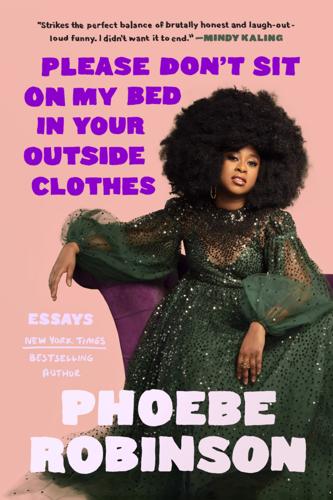
Please Don't Sit on My Bed in Your Outside Clothes: Essays
by
Phoebe Robinson
Published 14 Oct 2021
Despite the tragedies of Sandy Hook Elementary, Marjory Stoneman Douglas High School, and a long list of other school shootings, we don’t protect our students and restrict the kinds of guns that can be purchased because some people’s allegiance is to the Second Amendment and not to the safety of our youth. Hell, look at the national response to Covid-19 in America. We can’t even come together in the face of a global pandemic. After nine months of the federal government spreading disinformation, coupled with the nation’s “me first” mentality, which resulted in many people refusing to wear a mask and socially distance, more than three thousand people were dying per day, meaning that each day we were surpassing the total deaths on 9/11. So the notion that not having children is this grand disrupter to an otherwise idyllic civilization doesn’t hold water.
…
These situations were, of course, just the tip of the iceberg, but whatever your 2020 quarantine situation was, it’s safe to say you didn’t see this coming. Honestly, outside of a select few (e.g., Bill Gates, who, back in a 2015 TED Talk, stated that many governments were woefully underprepared if a virus pandemic seized the world), most of us were too consumed with our day-to-day responsibilities to ponder potential doomsday scenarios. But another part of the reason Covid so totally and utterly blindsided many of us is because it happened in 2020. This shit wasn’t supposed to happen then! Covid-19 showing up and canceling 2020 felt much more significant than it would in any other year. I mean, c’mon! Astrologists and numerologists practically alluded to everything being amazing in 2020!
…
Now, I’m not trying to sound ungrateful, because I know the alternative—quarantining solo—is rife with its own set of challenges, including boredom, isolation-induced dark thoughts, not having anyone to share newfound financial burdens due to unemployment or being furloughed with, and the absence of human contact. Touch deprivation became a topic of national discussion and legitimate concern during Covid-19 because of social distancing. And as time went on, some were starting to feel its effects. In Megan McCluskey’s article “The Coronavirus Outbreak Keeps Humans from Touching. Here’s Why That’s So Stressful” on Time.com, she investigated this new normal and referenced a 2014 study conducted by psychologist Sheldon Cohen and other researchers at Carnegie Mellon University.
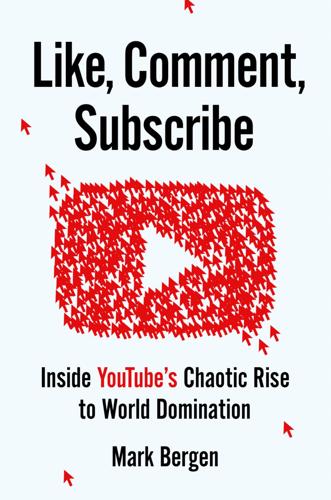
Like, Comment, Subscribe: Inside YouTube's Chaotic Rise to World Domination
by
Mark Bergen
Published 5 Sep 2022
GO TO NOTE REFERENCE IN TEXT said it had not been informed: Megan Farokhmanesh, “YouTube Didn’t Tell Wikipedia About Its Plans for Wikipedia,” The Verge, March 14, 2018, https://www.theverge.com/2018/3/14/17120918/youtube-wikipedia-conspiracy-theory-partnerships-sxsw. GO TO NOTE REFERENCE IN TEXT global pandemic struck: A YouTube spokesperson said the company “took a strong supportive stance on vaccines from the very beginning” of the COVID-19 pandemic “and was one of the first companies to implement a COVID-vaccine misinfo policy.” GO TO NOTE REFERENCE IN TEXT Chapter 29: 901 Cherry Avenue or Green Nasim: Daisuke Wakabayashi, Thomas Erdbrink, and Matthew Haag, “ ‘Vegan Bodybuilder’: How YouTube Attacker, Nasim Aghdamn, Went Viral in Iran,” The New York Times, April 4, 2018, https://www.nytimes.com/2018/04/04/technology/nasim-aghdam-youtube-shooter.html.
…
On February 9, 2020, there was a sharp rise in people searching the site for anything on the terrifying new virus. Engineers working on Google search saw the same thing. Google closed its offices on March 6, days before much of the country shut down. By May, as the grim reality of the pandemic settled in, Susan Wojcicki arranged a video chat with Hank Green that he would broadcast. The pioneering YouTuber had already addressed COVID-19 on his science channel and his personal vlog (“The Anxious Scroll”). He welcomed Wojcicki, who looked into her webcam in front of a massive white inlaid bookshelf stacked neatly with paperbacks and family photos. “Well, let’s get this out of the way,” Green began.
…
In March, YouTube halted some human moderation until lawyers sorted out how reviewers could screen “egregious content” from homes. YouTube, Wojcicki explained, leaned on its new self-regulation systems. Engineers built a “shelf” to prominently display select videos about COVID-19 on the site and rejiggered code to promote videos from established news outlets and medical authorities higher in rankings. In April, YouTube wrote a new rule banning videos with “medically unsubstantiated” claims, and the company said viewers were primarily fed “authoritative” footage on the pandemic. Weeks before Wojcicki sat with Green, Brits who had been stirred up by web conspiracies, which claimed 5G networks spread the virus, attacked several cell towers.
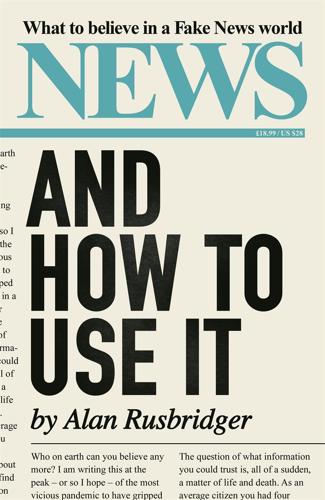
News and How to Use It: What to Believe in a Fake News World
by
Alan Rusbridger
Published 26 Nov 2020
Most recently, look at the news channel’s coverage of coronavirus in late February/early March 2020 to see how the almost perfect correlation in numerous Fox hosts mirrored the White House line – a journey from outright scepticism to belated acknowledgement of the gravity of the pandemic. By April 2020 the channel’s coverage of Covid-19 was sufficiently misleading that a group of seventy-four professors of journalism and journalists wrote an open letter condemning the coverage as ‘a danger to public health . . . Indeed, it is not an overstatement to say that your misreporting endangers your own viewers – and not only them, for in a pandemic, individual behaviour affects significant numbers of other people as well.’ (SEE: HYPOCRISY) The disquiet was evidently shared by James Murdoch, who resigned from the board of News Corp in July 2020 citing ‘disagreements over certain editorial content’.
…
Beginning with Donald Trump’s descent on the golden escalator and declaration about Mexicans being rapists, US outlets have been debating how to report his bombastic, xenophobic and often untrue statements. During the Covid-19 pandemic Trump frequently referenced the ‘foreign virus’ and ‘China virus’, which CNN chief White House correspondent Jim Acosta said ‘smacked of xenophobia’. The justice correspondent for the Nation, Elie Mystal, pointed to the connection between Trump’s rhetoric and a rise in hate crimes against Asians, writing, ‘If the media were doing their job, this would be the story: The president of the United States is putting lives at risk during a global pandemic by inciting violence against fellow Americans.’ Before Trump, though, xenophobic language, especially against Muslims, was prevalent in cable news.
…
In the UK this new landscape is regulated by the Advertising Standards Authority, along with the Competition and Markets Authority, which have released their own guidelines on the conduct of influencers (comparative guidelines are currently looser in the US). Covid-19 hit the world of influencers just as it did more mainstream forms of media. Their revenues dried up as the global economy went to sleep. Some were praised for broadcasting responsible messages about social distancing to vast audiences whom mainstream media was missing. Others were panned for spreading rubbish. Economic fragility. Dilemmas about trust while seeking authenticity. New media, old problems.
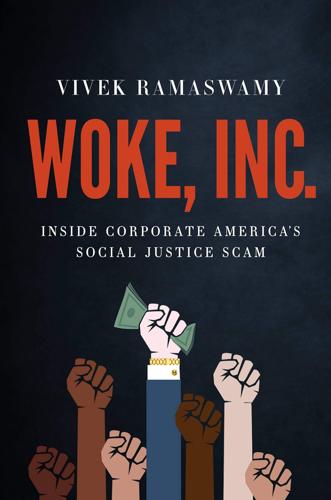
Woke, Inc: Inside Corporate America's Social Justice Scam
by
Vivek Ramaswamy
Published 16 Aug 2021
So it’s difficult to view his widely publicized comments about election fraud and his “prayers” that Trump use military force to retain power in January 2021 as being entirely separate from his own commercial agenda.28 The Chinese have gotten in on the act too. During the COVID-19 pandemic, one state-affiliated Chinese company charitably “donated” drones to local US law enforcement agencies to help enforce social distancing and contact tracing during the national lockdown. The trick? Free surveillance. The victims of pre-2008 capitalist excess were the cash-strapped strippers and little people and, arguably, in certain cases, the shareholders and clients who were shortchanged a few bucks to pay for lavish entertainment.
…
An injustice somewhere became a pandemic everywhere. Under its stated standard, YouTube would’ve banned any videos in January 2020 that claimed that human-to-human transmission of COVID-19 was possible, given the official WHO stance at the time. In retrospect, that was arguably the most dangerous lie about public health in modern history. As of this writing, the issue remains relevant to other scientific debates surrounding COVID-19 as well. In the spring of 2020, the FDA approved a drug called remdesivir, which it says shortens the duration of hospital stays for patients with severe COVID-19. Tens of thousands of patients hospitalized in the United States went on to receive remdesivir, including one of my family members.
…
Subramanian went so far as to argue that ESG metrics are the best measure for signaling future earnings risk—superior even to financial risk factors like the level of a company’s leverage, or debt burden.6 Harvard Business School professor George Serafeim, working in collaboration with Boston mutual fund manager State Street, observed that “during the market collapse” in the early stages of the COVID-19 pandemic, “firms experiencing more positive sentiment on their human capital, supply chain, and operational response to COVID-19 experienced higher institutional money flows” and less downside in share prices.7 Similar analyses abound. Morningstar found that sustainable index funds outperformed traditional index funds in the first quarter of 2020.8 Hermes Investment Management observed in 2018 that companies with good or improving ESG characteristics outperform companies with poor or worsening characteristics.9 Countless other reports come to similar conclusions.
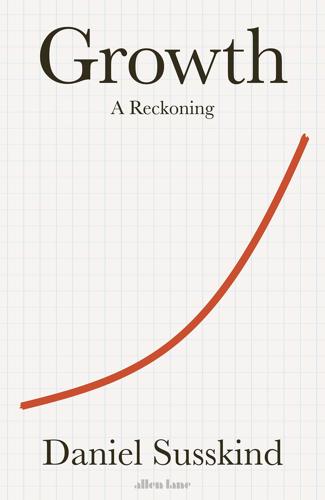
Growth: A Reckoning
by
Daniel Susskind
Published 16 Apr 2024
By late 2020, a survey by the global consulting firm Deloitte found that two-thirds of global businesses had already ‘used automation to respond to the impact of the Covid-19 pandemic’.16 The pandemic, then, is a perfect case study of the power of incentives to transform economic life. The fact that in-person work became prohibitively expensive both reshaped technological progress – increasing the adoption of existing technologies and driving the development of new ones – and set almost all countries around the world on a different economic growth path. The future now looks technologically distinct from the counterfactual where no pandemic had happened at all. Granted, this incentive was not entirely manmade: it was partly an act of nature, as well as a consequence of deliberate interventions like lockdowns.
…
And that is the world that fell apart at the start of the Covid-19 pandemic. Overnight, vast numbers of people woke up to find themselves, through no fault of their own, without an income. Suddenly, we caught a frightening glimpse of what widespread worklessness really looks like, and a sense of the fear and powerlessness that comes along with it. With that experience fresh in mind, it is astonishing to think that the Great Depression was far worse. Take the US: more people were out of work at the toughest moment of the crisis (25 per cent versus 15 per cent) and for a longer spell of time (during the pandemic, unemployment shot up but fell below 4 per cent within two years; during the Depression it remained above 10 per cent for a decade).
…
The contrast can be seen in Figure 1: a high and protracted stretch of unemployment during the Great Depression compared with a smaller and shorter-lived spike during the pandemic. To make matters even worse, back then there was also little insight into why the catastrophe was unfolding. During the pandemic, at least we knew that the economic pain was manmade, and there was a perverse comfort in knowing that it was the consequence of self-inflicted shutdowns and self-imposed social distancing. But the causes of the Great Depression were unclear to its victims at the time. As the former Chair of the US Federal Reserve Ben Bernanke put it, ‘the era was traumatic also because no one … really understood what was happening.’3 This pain and uncertainty help to explain why the Great Depression continued to haunt the American mind after the Second World War.

Evil Geniuses: The Unmaking of America: A Recent History
by
Kurt Andersen
Published 14 Sep 2020
Plus, the AFP president practically gasped—“I cannot imagine how we would be responding” to the pandemic “if the entire nation, every citizen in this nation, was trapped in a single-payer all-in government-run system.” The men agreed that the federal public health bureaucracies hadn’t done a good job on COVID-19, of course, but that the president was now cracking the whip. As for financial assistance to citizens, the lesser Koch minion said that if the federal government had “exercised fiscal discipline before now, we’d be in a position to help people more” in ways that “might include spending some money.” The economic libertarians’ de facto pandemic czar for a while was Stephen Moore, the right-wing Zelig and early Trumpist so second-rate that in 2019 even the Republican Senate wouldn’t consent to put him on the Federal Reserve Board.
…
*4 Loeffler, appointed in 2019 to fill an empty seat in Georgia, had been a senator for only eighteen days when she attended that pandemic briefing in January. She’d worked for years for her husband’s company, before and after marrying him, mainly as his head of PR but recently running its new cryptocurrencies division for $3.5 million a year. *5 Right-wing fantasies and misinformation about COVID-19 on Fox News apparently caused unnecessary deaths. “[Sean] Hannity originally dismissed the risks associated with the virus before gradually adjusting his position starting late February,” according to the research by economists in their paper “Misinformation During a Pandemic,” but “[Tucker] Carlson warned viewers about the threat posed by the coronavirus from early February….Greater viewership of Hannity relative to Tucker Carlson Tonight is strongly associated with a greater number of COVID-19 cases and deaths in the early stages of the pandemic.”
…
What I said at the end of Fantasyland I’ll restate (and I first drafted this paragraph, it’s important to note, a year before COVID-19 existed): societies do come to existential crossroads and make important choices. Here we are. The current political and economic situation wasn’t inevitable, because history and evolution never are. Nor is any particular future. Where we wind up, good or bad, is the result of choices we make over time—choices made deliberatively and more or less democratically, choices made by whoever cares more or wields more power at the time, choices made accidentally, choices ignored or otherwise left unmade. Even before the pandemic and its economic consequences, and before the protests and chaos following the murder of George Floyd, we were facing a do-or-die national test comparable to the big ones we passed in each of the three previous centuries—in the 1930s, the 1850s and ’60s, and the 1770s and ’80s.

A Short History of Humanity: How Migration Made Us Who We Are
by
Johannes Krause
and
Thomas Trappe
Published 8 Apr 2021
Bacterial infections such as these are no longer viewed as potentially fatal, having been largely replaced in the public consciousness by appalling viral pandemics. The Spanish flu was one example, claiming almost as many human lives between 1918 and 1919 as the First World War. Or smallpox, which was only eradicated in the 1970s after a nearly 300-year campaign to vaccinate against the disease. Or HIV, which has cost the lives of roughly 40 million people since the 1980s. And still fresh in most people’s memory is the COVID-19 pandemic of 2020. Although bacterial diseases have been held in check in Europe for about a century, there’s no reason to sound the all-clear.
…
The goal of science and medicine is always the same: to fully explore ourselves and our nature. Continuing along the path humanity has trodden since its inception, we will continue to build a networked world, a global society. Where it ends, no one knows. One thing that seems clear is that—pandemic social distancing aside—dogmatically insisting on social, cultural, and physical isolation within our nations is a dead end. The world has never been that way. The journey of humankind will carry on. We will find our limits—and we will not accept them. Through the journey of our genes, we know that humans are born travelers; we are made to wander.
…
In return, they probably gifted the Europeans with syphilis, which was then brought back home, creating immense suffering and countless victims well into the twentieth century. When Ebola broke out a few years ago in West Africa, there was worldwide fear that the virus might travel to other regions. When COVID-19 spread throughout the world in 2020, fears of a global pandemic were realized. There is increasing evidence that early waves of migrants globally were connected to the spread of infectious disease around the world. We know that plague bacteria existed in the south of what is now Russia at least 5,000 years ago, a region that later saw a mass exodus to Central Europe, where around the same time there was a sharp decline in the size of the local population.
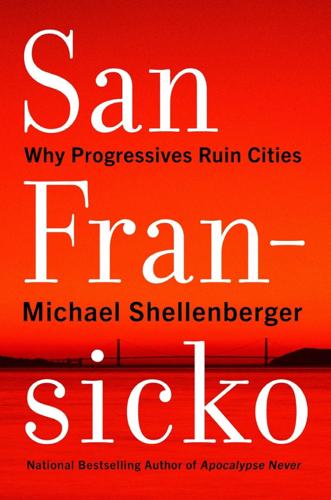
San Fransicko: Why Progressives Ruin Cities
by
Michael Shellenberger
Published 11 Oct 2021
Newsom appeared to make good on his commitment in April 2020 by helping San Francisco and other California cities use federal stimulus funding to rent hotel rooms for the homeless to shelter in place during the COVID-19 pandemic, an initiative called Project Roomkey. Doing so was an obvious win-win-win for hotel owners who could have been bankrupted by the pandemic, for the homeless who were uniquely vulnerable to the spread of COVID-19, and for the public. Jennifer Friedenbach of the San Francisco Coalition on Homelessness praised Newsom, whom she had criticized fiercely over the years, telling National Public Radio, “I’m a big believer in redemption.”6 Newsom appears to understand that addiction and mental illness are core drivers of homelessness, and to genuinely care about the problem and the people impacted by it.
…
“We find the Governor’s budget proposal falls short of articulating a clear strategy for curbing homelessness in California,” it wrote.9 Now, there is evidence that the response to COVID-19 by progressive cities including San Francisco made the addiction crisis worse. Before the pandemic, many street addicts would be occasionally arrested and forced to detox and get clean for a few days or weeks, but during the pandemic many remained intoxicated without interruption, worsening their addictions. “Morgan was really into meth,” said Kelly Stamphill, who tracked down her fentanyl-addicted son in a Tenderloin Safe Sleeping Site in March 2021.
…
12 When city workers offered one group of shelter-in-place hotel residents placements in a newly renovated permanent supportive housing facility in early 2021, two-thirds turned down the offer, likely because the hotel rooms were free and had private instead of communal bathrooms.13 San Francisco city government had also, during the pandemic, created “Safe Sleeping Sites” where the homeless could pitch tents to social distance. The city spent $61,000 per tent, which is 2.5 times the median rent for a one-bedroom apartment in the city. The program served 262 homeless people.14 The city turned Civic Center Plaza and several empty lots in the Tenderloin into sites. In the spring of 2021, Supervisor Rafael Mandelman introduced legislation to require the homeless to stay either in a shelter or, if there is no shelter space available, in a tent at a Safe Sleeping Site.

Lonely Planet Wales
by
Anna Kaminski;Hugh McNaughtan
Conwy Valley Line (www.conwyvalleyrailway.co.uk) A little gem heading down through Snowdonia from Llandudno to Blaenau Ffestiniog, reopened again after damage sustained by Storm Ciara in 2020. Classes & Costs There are two classes of rail travel in the UK: 1st class and ‘standard’ class. First class costs about 50% more than standard and simply isn’t worth the extra money. Also, during the Covid-19 pandemic, First Class had largely been temporarily suspended to make social distancing easier. You can roll up to a station and buy a standard single (one-way) or return ticket, but this is often the most expensive way to go. Each train company sets its own fares and has its own discounts, and passengers can only use tickets on services operated by the company that issued the ticket.
…
Rates can be a smidgeon cheaper if you book online, in advance, and midweek. No parking, though – despite the name. CARDIFF POST-COVID-19 The Covid-19 pandemic shook the world during 2020 and in Wales, has likely ensured some lasting changes to travel. Cardiff, as the capital, had some of Wales’ highest rates of infection at certain points. Fortunately, many of Cardiff’s best experiences are outdoorsy. As all travellers post-pandemic are likely to tire of words to the effect of ‘closed due to Covid-19’, we thought we’d compile our list of favourite things you can still enjoy around the city: A Appreciate the crazed combo of Norman and fanciful 19th-century architecture from within Cardiff Castle courtyard, now free to enter (a Covid-19 positive).
…
Interestingly, aside from cosmopolitan Cardiff, the counties voting with the highest majority to remain were two of the most strongly Welsh-speaking areas: Ceredigion and Gwynedd, which could well reflect the fact that Wales has often throughout history felt closer to the continent than to England. The 2020 Covid-19 pandemic saw further surfacing of a divide between Wales and England that was more than Dyke-wide. Under the terms of devolution, Wales (like Scotland) became responsible for dealing with issues such as health, and adopted a far more cautious approach to Covid-19 than England. Whilst some Welsh regions recorded some of the highest incidences of Covid-19 at many points, other regions such as Ceredigion had almost the lowest, yet blanket lockdowns were introduced, England-originating visitors turned back by police at the border, and one of Britain’s best-known travel writers, Simon Calder, was bombarded with abuse when he suggested certain parts of Mid-Wales as a potential autumn break.

Hope Dies Last: Visionary People Across the World, Fighting to Find Us a Future
by
Alan Weisman
Published 21 Apr 2025
But it also has the biggest budget, and Molly was determined to raise its awareness of vulnerabilities in the global food system. It took four years of lobbying the Pentagon and Congress, but the 2018 defense appropriations bill finally required the DOD to report on the security implications of global food disruptions. Soon, COVID would underscore Molly’s warning of how exposed we are to unforeseen disruptions. But just before the pandemic struck, came a phone call that allowed her to confront the transcendental question: What could actually change things? Whatever it was would require a great leap in thinking—some paradigm-shifting, completely novel way of creating food.
…
As if farming weren’t hard enough, and as if COVID hadn’t slammed milk prices, weather had become the wildest card in a deck already full of jokers. This year they’d planted on May 6. On May 10, they got four inches of snow. “And then we got a dry summer, so liquid nitrogen leaches away. That’s not good for the environment, or us.” During Andy’s drive back through a brilliant afternoon to Performance Premixes, his seed business, the whipping winds finally eased. Climate changes were becoming hard to deny, even though all the Trump signs he passed suggested denial was prevalent in this dairy country—mid-pandemic, farmers here prided themselves on living in a “mask-free zone.”
…
“And you’ll be rescuing knowledge for your kids.” Erika couldn’t refuse. They would all do anything for Laurie. In the teeth of the pandemic, she and Gary had driven down from Arizona with a truckload of oxygen machines, medicines, masks, disinfectant, water filters, and hundreds of sheets and pillowcases. The Seri had believed themselves so isolated that they’d escaped contagion until Laurie, listening to a Desemboque woman’s labored breathing, diagnosed her over the phone. She and Gary had arrived on the day of a COVID funeral, the first of seven. The village health clinic had no stethoscope, the ambulance’s tires were flat, and the state’s electric company had cut their power because it hadn’t been paid, so there was no running water or ventilation.

After the Fall: Being American in the World We've Made
by
Ben Rhodes
Published 1 Jun 2021
Repair some roads here!” COVID-19 underscored this danger for Putin. As Navalny and I spoke, Russia’s economy was spiraling into a deeper hole, even as Putin was ramming through “constitutional reforms” to allow himself to stay in power well into the 2030s. The pandemic itself was mismanaged, alternatively denied and attacked, responsibility delegated down to lower-level officials who were never empowered to do their jobs. Navalny complained about the shipment of vital medical supplies that Putin had sent to the United States and Western European countries early in the pandemic as evidence of his increasing fixation on his geopolitical standing, a trolling czar.
…
I thought about what Maria Stepanova had told me about COVID, why it might prove to be a circuit breaker to the spread of nationalism and its inexorable march toward violence. “It is a war without an enemy,” she’d said, “without the language of hate or the necessity to fight.” As much as the nationalists sought to mobilize the language of hate in response to the pandemic, enough people around the world could plainly see that what was required was a response based on science and reason, on facts and the very idea of objective reality that had come under assault. Meanwhile, the economic fallout from COVID was casting an even harsher light on the fundamental corruption of those in power—their personal wealth and the offensive inequality of the systems that they presided over.
…
The ferry reached the dock and I joined an orderly procession of people walking onto the shore. * * * — At the height of the COVID lockdown in the United States, China introduced a national security law that essentially eliminated the legal divisions between mainland China and Hong Kong. Wrapped in the guise of securitized goals like antiterrorism, the laws placed Hong Kong at the whims of their Beijing rulers. Opposition figures and democracy activists were detained. The repression and pandemic kept the street protests to a minimum. Power does not give up without a fight. In July 2020, I got on a video call with John, Lorraine, and Charles, the young people who had been my guides through the mindset of Hong Kongers.
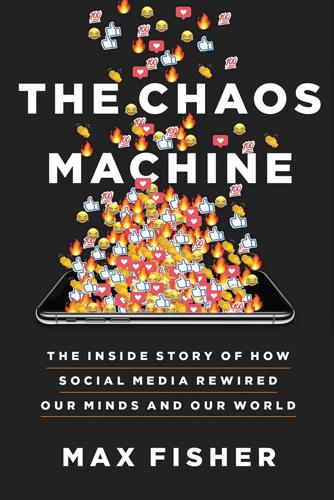
The Chaos Machine: The Inside Story of How Social Media Rewired Our Minds and Our World
by
Max Fisher
Published 5 Sep 2022
“The challenge I’ve got with them is to put sustainability and maturity over absolute profit,” he told a development publication, speaking more bluntly than he might have with news outlets. “And that’s a tough conversation to have, because they’ve all got bottom lines.” He met regularly with corporate liaisons throughout the pandemic. But evidence of real-world harm only continued mounting. Americans who used Facebook, Twitter, or YouTube, one study found, became more likely to believe that vitamin C could successfully treat Covid or that the government had manufactured the virus. Millions were rejecting masks and social distancing and would later reject vaccines. Doctors reported more and more patients refusing lifesaving treatments based on something they’d seen online, much as Brazilian families tormented by Zika had done just one year earlier, and often citing the same conspiracies.
…
A Facebook obsessive, he repeatedly reposted already-viral Covid, anti-vaccine, and pro-Trump conspiracies swirling across the platform—a typical Facebook superposter, not unlike Rolf Wassermann, the German artist who’d amplified whatever the platform pushed in front of him. But Barnett was absorbing a social media ecosystem now far more toxic than Germany’s. He attended a Facebook-organized rally at his state capitol in September, carrying an AR-15, to protest Covid restrictions. He came to believe, a friend later said, that shadowy powers intended to exploit the pandemic to insert microchips in citizens’ foreheads, a vague echo of Plandemic and QAnon beliefs.
…
And Why It Matters,” Max Fisher, New York Times, April 8, 2020. 9 Facebook reported a 70 percent: “Eight: ‘We Go All,’” Kevin Roose, New York Times, June 4, 2020. 10 jumped from 9 to 16 percent: “YouTube Controls 16% of Pandemic Traffic Globally: Sandvine,” Daniel Frankel, Next TV, May 7, 2020. 11 was everywhere by April: In April 2020, the advocacy group Avaaz identified 100 Covid-conspiracy posts on Facebook with 1.7 million combined shares. “How Facebook Can Flatten the Curve of the Coronavirus Infodemic,” Avaaz, April 15, 2020. 12 small-town missionary’s Facebook: His post received 18,000 shares. “Fact-Checking a Facebook Conspiracy about Bill Gates, Dr. Fauci and Covid-19,” Daniel Funke, Politifact, April 14, 2020. 13 “Coronavirus is a government made”: Her post received 90,000 shares and 350,000 likes.
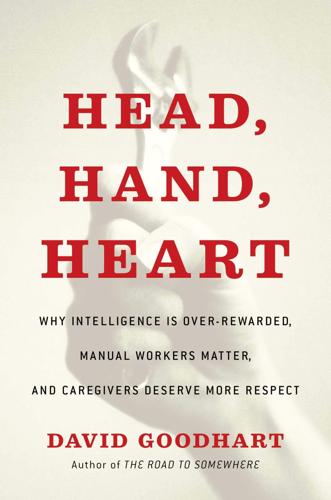
Head, Hand, Heart: Why Intelligence Is Over-Rewarded, Manual Workers Matter, and Caregivers Deserve More Respect
by
David Goodhart
Published 7 Sep 2020
This finding, which was also found to hold outside Whitehall, is based on the idea that low status in a hierarchy produces constant stress and anxiety—especially for men, who derive more status from work than women—and this produces higher levels of cortisol, which damages the immune system. This could be part of the explanation for why at the height of the pandemic men in low-skill jobs were twice as likely to die from Covid-19 as in the wider working population, at least in the United Kingdom. Although there is a commonsense connection between poverty, poorer health, and longevity, Marmot’s work has been criticized for its assumptions about status and stress. Many people go to work just to earn a living and derive their status from things outside work; moreover, high stress is also associated with high-status individuals with large responsibilities.
…
And even if there were an authority we could all trust who could spell out the relative risks of different courses of action, there is every likelihood that there would be fundamental disagreements between people of different temperaments as to which course to take, as there was at the height of the Covid-19 crisis. The same applies to how much we should forgo current consumption to invest in minimizing the threat from future pandemics and the threat of antibiotic resistance. Another imminent value challenge concerns human enhancement and “playing God.” Already there are many pharmacological ways of temporarily enhancing brain functioning, and in the future we might be able to manipulate our own DNA to improve cognitive ability or select the embryos of our babies to favor only those with the highest innate ability.I The more optimistic accounts see cognitive improvement technology as narrowing the current cognitive divides in the way that glasses level out the optical playing field for those with good and poor eyesight.
…
Socializing the costs would add an extra 1 percent to UK public spending.47 But whatever happens to the funding of the system, the status of the people who work in it will also remain an issue if the United Kingdom and the United States, and other rich societies are going to avoid an even more intense recruitment crisis into these jobs. The longer term response to the Covid-19 crisis will surely be not only to build more emergency capacity into our health services but also to raise the status and pay of the Cinderella parts of the care economy, above all elderly care. In much of Europe care homes for the elderly reported a disproportionate number of Covid-19 deaths as protective measures focused on health systems. All reputable surveys of future skill requirements in rich countries focus on what Adair Turner calls the “Hi-Tech, Hi-Touch” combination, meaning higher-order cognitive and technical skills on the one hand and interpersonal skills in education and health on the other—sometimes shortened to “coders and carers.”
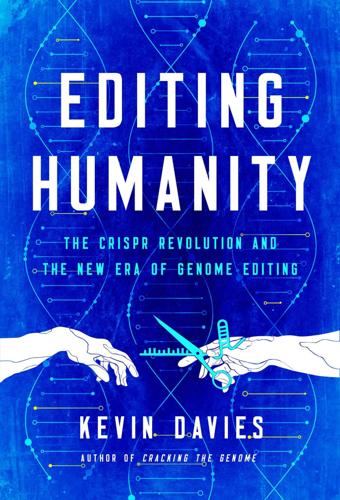
Editing Humanity: The CRISPR Revolution and the New Era of Genome Editing
by
Kevin Davies
Published 5 Oct 2020
The most important arms race on the planet takes place between two implacable enemies, the nuclear superpowers of the microbial world—bacteria and the viruses (or bacteriophages) intent on their mutual destruction. This war has raged for life eternal, a billion years at least. We didn’t need to experience the COVID-19 pandemic to know that viruses are the invisible menace, harbingers of sickness and death. “The single biggest threat to man’s continued dominance on this planet is the virus,” Nobel laureate Joshua Lederberg famously said. Beyond social distancing and some natural immunity, the human species mounts a variety of countermeasures, including vaccines and a battery of tailored or repurposed drugs and therapies. The threat is never extinguished, because viruses are able to mutate, evolve, capture genetic material from their hosts, and continually reinvent themselves.
…
Ed Yong, “How the Pandemic Will End,” Atlantic, March 25, 2020, https://www.theatlantic.com/health/archive/2020/03/how-will-coronavirus-end/608719/. 9. Megan Molteni and Gregory Barber, “How a Crispr Lab Became a Pop-Up Covid Testing Center,” WIRED, April 2, 2020, https://www.wired.com/story/crispr-lab-turned-pop-up-covid-testing-center/. 10. Matthew Herper, “CRISPR pioneer Doudna opens lab to run Covid-19 tests,” STAT, March 30, 2020, https://www.statnews.com/2020/03/30/crispr-pioneer-doudna-opens-lab-to-run-covid-19-tests/. 11. Megan Molteni and Gregory Barber, “How a Crispr Lab Became a Pop-Up Covid Testing Center,” WIRED, April 2, 2020, https://www.wired.com/story/crispr-lab-turned-pop-up-covid-testing-center/ 12.
…
A few months later, Doudna faced a new and unexpected public health crisis from of all things a virus: the novel coronavirus.8 As she and her colleagues prepared to shutter their labs for the pandemic, Doudna felt an overwhelming responsibility to help the local community. On March 13, she addressed her IGI colleagues with pronounced fire and emotion and told them it was time to step up. “Folks, I have come to the conclusion that the IGI must rise and take on this pandemic,” she said.9 With a gaping shortfall in COVID-19 testing capacity, Doudna and colleagues decided to turn a 2,500-square-foot space into a COVID-19 test center. The response to a call for volunteers was stunning: hundreds of people volunteered to help in any way they could.
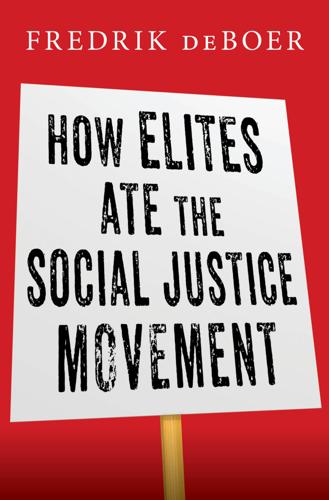
How Elites Ate the Social Justice Movement
by
Fredrik Deboer
Published 4 Sep 2023
But toward the end of his tenure, the United States was engulfed in a singular crisis. The Covid pandemic had its genesis in 2019 (thus Covid-19), but bloomed into a full-blown global emergency in March 2020. As large-scale lockdowns were established in the United States, it became clear to many Americans that their basic way of life would be deeply disrupted. Being forced to stay home for long periods made an already internet-addicted country turn even more deeply into its smartphones. Mask mandates and social-distancing guidelines made rare trips outside, such as to get groceries, into tense affairs. Fairly early in the pandemic, it would be conclusively proven that outdoor transmission of the virus was extremely unlikely, but for some months most people masked outdoors and would often take a wide path around others as they walked by.
…
In 2020, a year that was sold at the time as a moment of unique political foment—as a “reckoning”—we saw the American progressive movement drift from the essential to the inconsequential, from the material to the illusory, in much the same way. Early that year, an unprecedented global pandemic bloomed in front of our eyes. The novel coronavirus Covid-19 exploded out from China and across the face of the globe in the span of a few months. There have been deadlier diseases, and there have been diseases that have wrought more havoc, but there had never before been a disease that so took advantage of a globalized and interconnected Earth, of our now-small world.
…
The Trump presidency had enflamed the country, his boorishness and serial scandals convincing many that the 2020 presidential election would prove to be one of the most consequential of our lifetimes. Along with sustained rage at Trump’s long history of racist and misogynist statements, there was despair at his handling of the Covid-19 crisis. In March of that year, the virus had bloomed into a pandemic, spreading across our globalized world with unprecedented speed. In response to the crisis, state and city governments across the country had enforced lockdown policies that closed public spaces and kept people in their homes. Fear gripped the country as the virus killed hundreds of thousands, and being shut inside ratcheted up the tension.
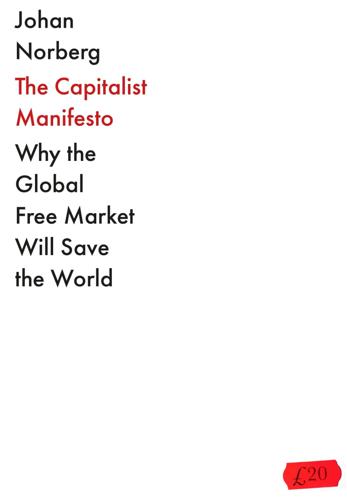
The Capitalist Manifesto
by
Johan Norberg
Published 14 Jun 2023
INDEX NB Page numbers in italics indicate illustrations Afghanistan, 160–61, 256 Africa, 30–35, 70, 267, 282 colonisation, 31 independence, 31–4 Sub-Saharan Africa, 30–31 AIM (AOL Instant Messenger), 170 Albania, 50 Algeria, 251 Alphabet, 179 AltaVista, 169, 174 Amazon, 169–72, 178–9 Amazon Prime, 179 Andersson, Magdalena, 8 Angola, 239 Annan, Kofi, 3 Ant Group, 227 AOL (America Online), 169–71, 174 Apple, 107–8, 159, 163, 169–73, 179 Apple TV, 179 Arab Spring, 215 Aristophanes, 73 Aristotle, 70 ARPA, 183–6 ARPANET, 184–5 Asia, 267, 282 Asp, Anette, 287 Attac, 2–3, 6 Australia, 11, 258, 267, 282, 285 Ayittey, George, 31 Bangladesh, 235 Bank for International Settlements (BIS), 144 Bankman-Fried, Sam, 153 Bao Tong, 212 Baran, Paul, 184, 186–7 Bastiat, Frédéric, 114 Beijing, China, 209 Belgium, 285 Berggren, Niclas, 62 Bergh, Andreas, 56, 103 Bezos, Jeff, 127 Biden, Joe, 76, 217 big companies, 141, 146–50, 176–7, 292 BioNTech, 177 biotechnology, 195 Björk, Nina, 263, 265, 272, 274–5, 278 BlackBerry, 174 Blair, Tony, 170 Blockbuster, 151 Blue Origin, 202 Bolivia, 47 Bolt, Beranek and Newman, 184 Bono, 4, 170 Botswana, 34–5 Boudreaux, Donald, 125 Boulevard of Broken Dreams (Lerner), 190 Brazil, 11, 29, 239, 258 Brexit, 116–18 Bullshit Jobs: A Theory (Graeber), 86, 98–9 business regulation, 139–41 Callaghan, James, 10 Canada, 102, 267, 283 Capital in the Twenty-First Century (Piketty), 128 capital income, 130–31 Carbon Engineering, 255 Cardoso, Fernando Henrique, 29 Carlson, Tucker, 146 cars, 158 Carter, Jimmy, 10 Case Deaton, Anne, 108–11, 136 Castillo, Pedro, 30 Chávez, Hugo, 43, 135 child labour, 20 child mortality, 19–20, 20 Chile, 11, 29–30 China, 5, 7, 11, 19, 24–5, 76, 78–80, 83–4, 104–7, 204–29, 239, 258 agricultural productivity, 206–7, 209 Communist Party, 182, 204–9, 211–12, 215–18, 221–3, 226–8 deindustrialization, 84 economic development, 205–29 environmental issues, 251–3, 257 exports, 209–10 industrial policy, 205, 212–13, 217, 223–4, 296 innovation strategy, 182, 192 innovation, 226–8 poverty, 213, 214 Reform and Opening Up programme, 212 state-owned companies, 208 WTO and, 205, 209, 211 China’s Leaders (Shambaugh), 215 Chirac, Jacques, 191 Chomsky, Noam, 49 Christianity, 264–5 Churchill, Winston, 135 Clark, Daniel, 87 climate change, 5–7, 230–60, 293 carbon border tariffs, 258 carbon tax, 256–7, 259 energy supplies, 233–5, 253–6, 259 greenhouse gas emissions, 231, 233–5, 238, 240–41, 244, 253–9 see also environmental issues Climeworks, 255 Clinton, Hillary, 140 Coase, Ronald, 206 Cohen, Linda, 189 communism, 2, 25–6, 241–3, 290–91 Communist Manifesto, The, 1848, 2 community, 267 Compaq, 174 Concorde, 191 Confucianism, 22, 25 Congo-Brazzaville, 30 Congo, 239 consumer culture, 160–62, 287–8 Cook, Tim, 173 cooperation, 278–9 Coopersmith, Jonathan, 188–9 Corbyn, Jeremy, 43 coronavirus see Covid-19 pandemic Council of Economic Advisers, 147, 152 Covid-19 pandemic, 8, 21, 76–81, 223, 232–3, 270 Cowen, Tyler, 154 Credit Suisse, 132–3 crony capitalism, 139–40, 291 culture wars, 12–13 Czechoslovakia, 26 Dalits, 63–4 dating profiles, 154 ‘deaths of despair’, 7, 108–10, 136, 271, 293 Deaths of Despair (Deaton and Case Deaton), 136 Deaton, Angus, 19, 108–119, 136 DeepMind, 177 degrowth, 232–5, 254–5 ‘deindustrialization’, 83–5 democracies, 26, 37, 46 Deneen, Patrick, 262–5 Deng Xiaoping, 24, 46, 205, 212–13 Denmark, 91, 285 ‘dependency theory’, 27–8 Detroit, Michigan, 87–8 dictatorships, 11, 24, 29, 32, 42–8 Digital Equipment Corporation, 174 disability-adjusted life years (DALY), 237 dishonesty, 153–6 Disney, 178 Dominican Republic, 225 Easterlin, Richard, 279 ‘Easterlin paradox’, 279–80 Easterly, William, 39 Ecclesiazusae (Aristophanes), 73 Economic Freedom of the World index, 35–7 economic freedom, 35–42, 36, 57, 58–62, 58, 77–8 Economist, The, 179, 192 education, 20, 94 Energiewende, 191, 192–3 Engels, Friedrich, 2, 277, 290–91 Enlightenment, 73 entrepreneurship, 123–4, 128–9, 152–4 ‘welfare entrepreneurs’, 197 environmental issues, 236–41, 245–52, 293 agriculture, 239–40 air pollution, 237–8 biodiversity, 238–9, 249–50 deforestation, 239 health and, 236–8, 237 plastics, 247–8 prosperity and, 245–52, 249 transportation, 250–51, 254–5 Environmental Performance Index (EPI), 248, 252 Estonia, 26 Ethiopia, 277 Europe, 22, 239, 267, 282 European Centre for International Political Economy, 79 European Union (EU), 4, 68, 79, 116, 164, 258–9 Everybody Lies (Stephens-Davidowitz), 155 Facebook, 163, 167–75, 179–80 Fallon, Brad, 192 famine, 29 Fanjul, Alfonso and José, 140 fascism, 75 Federal Communications Decency Act (USA), 174 Feldt, Kjell-Olof, 11 feudalism, 73, 75 Financial Fiasco (Norberg), 142 financial markets, 141–3 Financial Times, 8, 267 Finland, 76, 78, 268, 285 Foodora, 102 Forbes’ list, 129–30 forced technology transfers, 211 Foroohar, Rana, 8 Fortune 500 list, 151 Fortune magazine, 169 France, 79–80, 97, 159, 192, 281, 285 Fraser Institute, 35 free markets, 2–4, 6, 23, 58–62, 65–82, 83, 290–97 happiness and, 279–89, 282, 284, 286 human values and, 261–89 Friedman, Thomas, 204 ‘friendshoring’, 79 Friendster, 170 GAFAM (Google, Amazon, Facebook, Apple, Microsoft), 169–70 Gallup World Poll, 267 Gandhi, Indira, 245 Gapminder, 18 Gates, Bill, 124–7, 274 GDP (Gross Domestic Product), 5, 23, 26, 33, 35, 49–56 General Data Protection Regulation (EU GDPR), 164 generosity, 274–7 Georgia, 26, 215 Germany, 26, 84, 97, 101, 192–3, 196, 268 gig economy, 101–3 Gingrich, Newt, 191–2 Gini coefficient, 132 global financial crisis, 2008, 4–5, 142–3 global supply chains, 41–2, 58–61, 76, 81 Global Thermostat, 255 global warming see climate change globalization, 3–8, 17, 19, 80, 103–10, 117 Google, 163, 169–73, 179–80 Gorbachev, Mikhail, 215 Graeber, David, 86, 98–9 Grafström, Jonas, 240 Greece, 26, 254 Green Revolution, 239–40 green technology, 243, 251–5 Greider, Göran, 50, 241 growth, 49–57 degrowth, 232–5, 254–5 government and, 55–6 health and, 52–3 poverty and, 53–4 Guangdong, China, 207–8 Guardian, 3, 169 Halldorf, Joel, 262, 265 happiness, 279–89, 282, 284, 286 Hawkins Family Farm, 140 Hawkins, Zach, 140 Hayden, Brian, 161 Hayek, Friedrich, 66 Helm, Dieter, 193 Henrekson, Magnus, 56 Hertz, Noreena, 261, 262, 265, 268, 272, 274–5, 278 Hillbilly Elegy (Vance), 87 Hinduism, 22, 25 Hong Kong, 23, 205, 207 Horwitz, Steven, 294 housing market, 131, 142–3, 208–9 How China Became Capitalist (Wang and Coase), 206 How Innovation Works (Ridley), 188 Hsieh, Chang-Tai, 148–9 Hu Jintao, 215–16 Hugo, Victor, 25 Hume, David, 284 Hungary, 26, 283 IBM, 151 Iceland, 285 IKEA, 119, 141, 147 illiteracy, 20, 20 ‘import substitution’, 27–8 In Defence of Global Capitalism (Norberg), 3, 17, 33, 38, 42, 146, 151, 156, 169, 204, 214, 230–31 income, 22, 55, 88–96, 95, 134–5, 285, 291 low-income earners, 136–8 minimum wage, 90 wage stagnation, 89, 92–3 see also inequality India, 11, 24–5, 63–4, 70, 234, 239, 251, 258 caste system, 63–4 Indonesia, 239 industrial policy, 182, 188–203 Industrial Revolution, 22 inequality, 7, 27, 42, 54–5, 110, 131–8, 133, 285–7 happiness inequality, 131–2 income, 285–7 life expectancy and, 136–8 infant mortality, 19–20, 235, 291 Infineon, 196 inflation, 8, 10–11, 69 innovation, 65–6, 122–3, 125, 151, 181–203 government policy and, 181–203 innovation shadow, 169, 176 prizes and, 199 research, 199–200 subsidies and grants, 196–7 Instagram, 168, 177 integrity, 164 intellectual property, 41, 210–11 International Disaster Database, 235 International Union for the Conservation of Nature (IUCN), 238 internet, 162–8, 183–7 IPCC (Intergovernmental Panel on Climate Change), 231 iPhone, 107–8, 156, 159 Iran, 220 Iraq, 251 Ireland, 285 Italy, 97, 285 Jackson, Jesse, 43 Jacobs, A.
…
If we trust the broad simple correlations, it seems we need personal freedom and free markets to remedy the existential isolation that equality and spirituality can’t solve; it’s not the other way around.19 Several indicators of loneliness and isolation worsened sharply during the pandemic, and it will take a long time until we learn whether this is a temporary dip or a new trend. However, this is the predictable result of government-enforced social distancing, when people were commanded to stay at home and kids were not even allowed to meet their classmates. If anything, it is a counter-argument to the hypothesis that too much liberty and mobility make us lonely. On average, there is also no evidence for the large increase in mental illness that most of us assume exists (again with the caveat that the pandemic probably worsened these problems, at least temporarily).
…
Trotsky did not mind using that principle against his opposition but protested when Stalin used it against Trotskyites. Leon Trotsky, The Revolution Betrayed: What is the Soviet Union and Where is It Going?, Pathfinder Press, 1972, p.283. 25. ‘Covid-19 exposes EU reliance on drug imports’, Financial Times, 20 April 2020. 26. Vincent Geloso & Jamie Bologna Pavlik, ‘Economic freedom and the consequences of the 1918 pandemic’, Contemporary Economic Policy, vol.39, no.2, 2021. 27. Christian Bjørnskov, ‘Economically free countries have fewer and less severe economic crises’, Timbro briefing paper, no.29, 2020. 28. Keith Bradsher, ‘China delays mask and fan exports after quality complaints’, The New York Times, 11 April 2020.
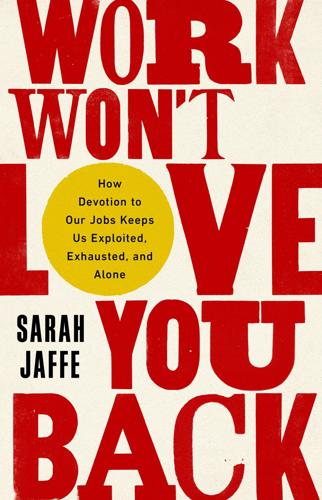
Work Won't Love You Back: How Devotion to Our Jobs Keeps Us Exploited, Exhausted, and Alone
by
Sarah Jaffe
Published 26 Jan 2021
“They want to reinforce the separation between your education and your work so that the internship is not full work, it is really something you do when you are in training,” said Marcoux. “They want it to be more supervised, but they still want it to be something separate from the labor law that we know right now.” 40 The COVID-19 pandemic, she said, “amplified the hypocrisy of school administrations who severely punished interns for striking their internship.” Some of those interns had been forced to retake a full year of school to complete the internship, but when some of them had to miss interning time because the pandemic closed many of the businesses, she explained, “the non-completion of their internship was not deemed to compromise their professionalism or ability to start working.”
…
Members of the UK Parliament have even formed an all-party group to look into the gaming industry, though Agwaze noted that GWU-UK’s invitation to speak to the group had been delayed as a result of Brexit and the general election in December 2019, and then because of the COVID-19 pandemic. Still, it marked a change from the assumption most people had, he said, that “it’s fine, because it is video games. It must be fun, even in its working conditions.” With the pandemic, Agwaze said, some of the union’s usual means of gaining new members—in-person meetings and speaking engagements—had to be scrapped, and the 2020 Game Developers Conference, where they’d planned a panel, was postponed.
…
“I always think, ‘If I was home, I would be on top of them to do it more.’ At least I call and say, ‘Make sure you do your work.’” Nannies and other domestic workers, she noted, have a hard time maintaining social-distancing protocols at work. “We just take precautions, wear our protective gear, especially because of the close proximity with the kids. You wear masks when you are in close proximity to other people. You make sure you wash your hands.” But the pandemic had underscored something that Seally already knew all too well: “If domestic workers don’t show up for work, then the majority of the workforce can’t show up for work,” she said.
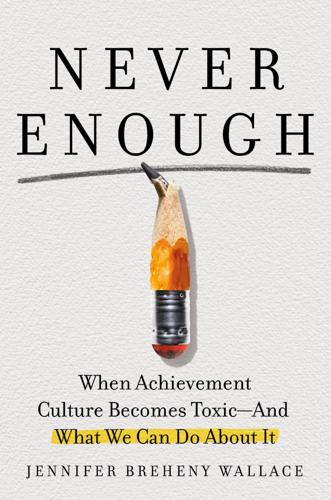
Never Enough: When Achievement Culture Becomes Toxic-And What We Can Do About It
by
Jennifer Breheny Wallace
Published 21 Aug 2023
GO TO NOTE REFERENCE IN TEXT “alarming increases in the prevalence”: Office of the Surgeon General, “U.S. Surgeon General Issues Advisory on Youth Mental Health Crisis Further Exposed by COVID-19 Pandemic,” U.S. Department of Health and Human Services, Dec. 7, 2021, https://www.hhs.gov/about/news/2021/12/07/us-surgeon-general-issues-advisory-on-youth-mental-health-crisis-further-exposed-by-covid-19-pandemic.html. GO TO NOTE REFERENCE IN TEXT wanted to understand the pressure: In consultation with a researcher at the Harvard Graduate School of Education, I distributed the survey to over six thousand parents nationwide during January and February 2020.
…
When you live in a community of high achievers with strict definitions of success, when friends are competing for the same leadership positions, for the same teams, for the same acceptances to increasingly exclusive colleges, you grow up in an environment of outsized expectations. You might suppose that mental health struggles resolve once these students get into college. But that doesn’t appear to be the case. Even before the devastating effects of the COVID-19 pandemic, mental health issues on college and university campuses were a growing concern. Survey data from before the pandemic found that three in five college students reported experiencing overwhelming anxiety, and two in five reported being too depressed to function within the past year. In 2020, a fifteen-month investigation by a Harvard task force found that students there suffered from “high levels of stress, overwork, concern about measuring up to peers, and inability to maintain healthy coping strategies.
…
Your honesty and wisdom will undoubtedly impact lives for the better. It’s already impacted mine. When the ideas come together, when it all flows, writing really is a dream. But, other times, when the ideas won’t gel, when you’re in the middle of a global pandemic, that dream can feel more like a nightmare. Forever I will be grateful to the editors Kate Rodemann and Gareth Cook, who entered my life in the middle of the COVID-19 pandemic, as I was sifting through mountains of research and interviews, homeschooling my kids, and wearing hazmat suits to the grocery store. Their extraordinary editing skills, big brains, and deep insights informed this book in so many ways.
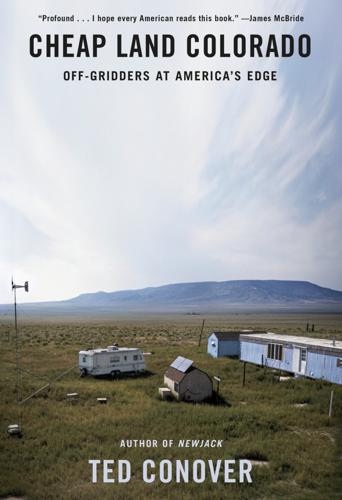
Cheap Land Colorado: Off-Gridders at America's Edge
by
Ted Conover
Published 1 Nov 2022
* * * — Even if few people had been infected yet by Covid-19 in my part of the flats, much of the turmoil of the outside world filtered in via television and social media. I stopped by a neighbor’s place; he told me, “If you have any money in the bank, get it out.” But why? “Last night it took one trillion dollars to cover the daily bank rate”—I wasn’t sure what this was—“as opposed to the two hundred million dollars in the last banking crisis.” The core problem, he added, wasn’t the pandemic but that the media overdramatized the Covid situation. I allowed that this might be true in certain situations, but I told him I believed there were solid reasons for alarm.
…
Lance of La Puente had found his gregarious nature challenged by the pandemic; spending workdays at home was difficult for him. A new hobby seemed to help: a friend of a friend had sent him a high-end telescope, and on dark nights he would head out to photograph the heavens from different spots in the valley. One night he asked to set up at my place, and I got to peer with him at deep sky objects (such as the Hercules Cluster and Andromeda Galaxy) that were light-years away. At the same time, over cups of tea, he told me he’d recently recovered from a breakthrough case of Covid; the apparent source was an anti-vaxxer relative who had stayed with him and his wife for a few days.
…
See also La Puente; San Luis Valley (SLV) prairie (flats); and specific towns and settlements cattle grazing and, 95 cheap land in, 11, 14 Hershey arrest and, 169–70 Hispanic culture and, 190 land sales and regulations, 132–34 land use restrictions, 28–29 map of, 10 mental-health services and, 212 old wells and cattle in, 121 services strained, 28–29 subdivision and land sales, 122–35, 125, 265n taxes and, 28, 122, 124, 131–35 tire collections and, 70 Costilla County assessor, 131–32, 134 Costilla County child protective services, 181 Costilla County code enforcement, 3, 17, 28–34, 31, 47, 50–54, 86–88, 92, 184, 203 Costilla County commissioners, 87, 124, 132–34 Costilla County Corporation, 89 Costilla County Free Press, 233 Costilla County jail, 29 Costilla County manager, 116 Costilla County sheriff and deputies, 85–86, 88, 244–45 Costilla Estates Development, 114, 116–21, 118 Costilla Land Company, 110, 252 Costley, Jeremy, 47 County Road G, 10 Cove Lake, 98–99 Covid-19 pandemic, 217–19, 223–26, 235–40, 245, 256–57 stimulus payments, 237–40 Coyotes (Conover), 246 Craigslist, 130, 130 Creede, Colorado, 62 Creole Americans, 144 Crested Butte, Colorado, 193 Crestone, Colorado, 10, 86, 234 crime, 29, 63, 80, 190–91, 198, 258 child abuse, 19, 169, 194–97, 265n domestic abuse, 178, 181, 194–96, 259 murder, 21–22, 94, 190–99 serial killings, 191–92 theft, 79, 107, 173, 193, 263n Cronon, William, 247, 268n Crouch, Pat, 197 Cumbres & Toltec railroad, 14 D dab lounges, 98 Dallas, 77 Dear, Robert, 12, 94 Deep South, 138 deer, 38–39, 202 Del Norte, 210 DeLorme road atlas, 35 Demetrius (abuse victim), 197 Democrats, 138 Dempsey, Jack, 61–62, 263n Denver, 11, 39, 73, 90–91, 126, 145, 190, 259 Denver, John, 127 Denver & Rio Grande Western Railroad, 14, 117, 118, 252 Denver Broncos, 21, 60 Denver Post, The 55–56 Desert Shield and Desert Storm, Operations, 49 Desmond, Matthew, 240n diabetes, 25 Dilley, Damian, 178 Dilley, Jeremiah, 181–84, 183 Dilley, Zahra (Ankhzahra Soshotep), 175–85, 183, 214, 220, 240, 255–56, 266n direct-mail land sales, 124–26 DIY Hunting Map, 36, 121 Dog Latin, 89 dogs, 36, 40, 42, 44–45, 50–51, 54, 57, 59, 72, 77–79, 94, 101–3, 150, 152, 158, 160–61, 166–68, 170, 176, 201, 210, 213–15, 266n Donaldson, Billy and Martha Jo, 135–37, 136 “Don’t Fence Me In” (Porter), 249 Doon, Ben, 95 driver’s licenses, 53, 91–92 drought, 227–29 Drug Enforcement Agency (DEA), 58 drugs, 57–59, 58, 63, 92, 103–4, 161, 198, 207, 211–12, 263n.
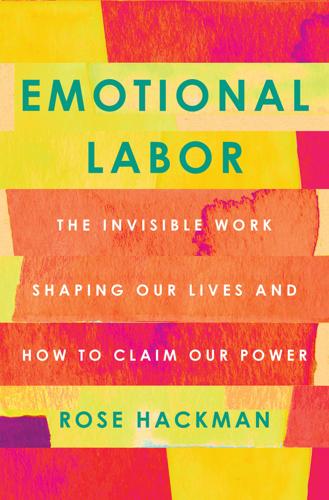
Emotional Labor: The Invisible Work Shaping Our Lives and How to Claim Our Power
by
Rose Hackman
Published 27 Mar 2023
A 2014 study of almost seven hundred tipped workers by the Restaurant Opportunities Centers United found that 80 percent of female servers experienced sexual harassment from customers.18 Another study from 2020 found that harassment of servers had significantly increased during the COVID-19 pandemic, with the health crisis giving way to a host of new specialized sexual comments. Servers reported patrons making comments like “I can’t ever imagine myself social distancing from your sexy ass,” and demanding servers take their mask off their face so they could decide how much to tip.19 The creative new attacks on bodily integrity, to now include the threat of infection from a deadly disease, only make the power dynamics at play in this scenario more explicit.
…
She sat down, focused on breathing, and slowly calmed herself, preparing for what was ahead. That first COVID-19-pandemic shift, there was little reassurance outside of her own to be found. No one had a plan; the nurses around her, her immediate superiors, were scared; and there weren’t enough gloves or masks to go around. Midway through her shift, one of the colleagues she had been working alongside went to the emergency room and tested positive. As a patient care technician, a job also referred to as a nursing assistant, she was expected to take patients’ vitals every four hours, but with the new pandemic situation she was tasked with extra duties not usually hers, including meal delivery and general care.
…
“The Great Resignation: Why People Are Leaving Their Jobs in Growing Numbers,” NPR.org, October 22, 2021, accessed February 12, 2022, https://www.npr.org/2021/10/22/1048332481/the-great-resignation-why-people-are-leaving-their-jobs-in-growing-numbers. 14. “Men Have Now Recouped Their Pandemic-Related Labor Force Losses While Women Lag Behind,” National Women’s Law Center, February 4, 2022, accessed February 12, 2022, https://nwlc.org/resource/men-recouped-losses-women-lag-behind/. 15. “Low-Paid Women Workers on the Front Lines of COVID-19 Are at High Risk of Living in Poverty, Even When Working Full-Time,” National Women’s Law Center, April 2, 2022, accessed February 13, 2022, https://nwlc.org/press-release/low-paid-women-workers-on-the-front-lines-of-covid-19-are-at-high-risk-of-living-in-poverty-even-when-working-full-time/. 16.
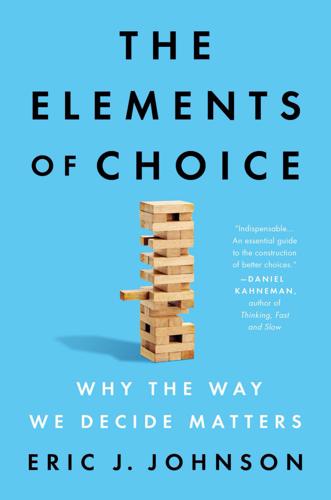
The Elements of Choice: Why the Way We Decide Matters
by
Eric J. Johnson
Published 12 Oct 2021
See plausible paths use of term, 3 Churchill, Winston, 6–8, 106 citation counts, 197–98 climate change, 66–68, 323 Clinton, Hillary, 190, 291–93 Clooney, George, 48 Coffee Meets Bagel, 45, 46–49 collaborative filtering, 276–77, 349n Columbia University, 67, 111, 162 comfort care, 310–13 compact florescent lights (CFLs), 137–38, 254 compatibilists, 301 compound interest, 97, 240–44 comprehension, 266–67, 282–99 configurators, 146–47, 149–50 Conlin, Michael, 69 consistency, 99–102 Consumer Financial Protection Bureau, 5–6, 240–44 Consumer Reports, 230 content-based filters, 276–77, 349n conversation quality, and Twitter, 324 conversations, 84–92 COVID-19 symptoms, 84–88 Social Security benefits, 88–92 talking about decisions, 106 copayments, 177–80, 280 Copenhagen Airport, 30–32, 31, 42 Cornell University, 194, 217 COVID Symptom Tracker, 87–88 COVID-19 pandemic, 83–88, 93, 155, 282 credit cards, 5, 244 Critical Care Nurse, 116 cubic inch displacement, 235 customization and user models, 266, 273–77 customized nudging, 95 dark patterns, 18–19, 81, 127–29, 267, 315 dating sites, 44–52, 230 Coffee Meets Bagel, 45, 46–49 deal-breakers and deal-makers, 49–51 decision simulators, 337n screening, 47–52, 164–65 Dayan, Eran, 218–19 deal-breakers, 49–51 deal-makers, 49–51 decision by distortion, 194–95 decision research, 3–4, 100 decision simulator technique, 92–105, 337n deductibles, 177–78, 282 defaults, 12, 13, 107–58 automatic voter registration, 156–58 disclosure of, 307–8 ease, 122–30 education about, 320–21 endorsement, 123, 130–34 endowment, 123, 134–40 German Large Auto Manufacturer (GLAM), 5, 15, 146–51, 273–75 mass, 150–52, 154–55, 275 meta-analysis of, 142–46 neglect, 148, 308–9 Netflix, 269 organ donations, 112–17, 120, 120–21, 151–52 persistent, 152–53, 155 personalized, 150–55 picking right, 146–56, 302 smart, 153–54, 155, 266, 274–75 sort order, 212, 213, 278–79 studies, 141–46, 142 Defense Advanced Research Projects Agency (DARPA), 42 defined benefits plans, 90–91 Democrats, 189, 236–37, 261–62, 262, 323–24 Denmark and organ donation, 109, 110, 110 derivatives, 287 describing options, 221–64 fuel efficiency, 222–30, 232–35 making tough trade-offs easier, 263–64 metrics.
…
The doctor knows what types of people are at risk, which symptoms suggest further testing, and what experts think are the best decisions to make in each situation. In addition, a good doctor might also make us feel a bit better emotionally. Due to the pandemic, there are too many patients and too few doctors, so such a conversation between doctor and patient might happen via an app. On March 27, 2020, Apple released such an app, Apple COVID-19, designed to facilitate precisely this conversation. It asks the user a set of questions and provides a course of action. Living in New York during this time of high stress, I naturally wanted to have a “chat” with this app.
…
Annuities use the payments of those who die young to pay for the benefits of those who die old. You need to be a good actuary to sell annuities. 14. Partners Advantage, “Getting Your Prospect to Think About Longevity, and Longevity Calculators.” 4. Goals of Choice Architecture 1. “Apple COVID-19.” 2. The success of the COVID-19 tracker is documented in Menni et al., “Real-Time Tracking of Self-Reported Symptoms to Predict Potential COVID-19.” 3. This is true whether the decision concerns Social Security retirement benefits or other similarly structured public benefits or employer program benefits. Other countries’ public pension plans (Germany’s, for example) have a similar structure. 4.

Among the Braves: Hope, Struggle, and Exile in the Battle for Hong Kong and the Future of Global Democracy
by
Shibani Mahtani
and
Timothy McLaughlin
Published 7 Nov 2023
Dennis Kwok, a lawyer and pro-democracy lawmaker who was among the first to raise the alarm on the extradition law, processed the implications as he was speaking to us that day: “I think it means the end of ‘one country, two systems.’ When the world is not watching [because of COVID], they are killing Hong Kong, killing ‘one country, two systems,’ and using social distancing rules to keep people from coming out to protest. This is the most devastating thing to happen to Hong Kong since the handover.” THERESA MOVED OUT OF THE RICHMOND STUDIO SHE’D SHARED WITH FINN in May 2020. It felt to Finn like he finally had some relief. Since pandemic restrictions had kicked in at the end of March, Finn worked from home, navigating the small space with his soon-to-be ex-wife.
…
Employees were packing away hundreds of neon Post-It notes into flimsy plastic bags, scrubbing bits of glue that remained after peeling off stickers featuring a smiling cartoon pig, the mascot of the local online forum LIHKG that had become an enduring symbol of the protests. People were afraid. The frosted-glass door to the café was completely opaque. We had buzzed in and looked up at the CCTV. Our faces were covered with surgical masks, this being the height of the COVID-19 pandemic, but they’d know who we were. They were expecting us. The security was warranted. A raid on this café would have revealed folder after folder, each containing details of successful rescues, of people who were now living free, away from the grasp of the Chinese Communist Party. Tommy, although we didn’t know him yet, wasn’t the only one looking for a way out.
…
If you had your passport, it was pretty simple. All you had to do was get on a plane. Canada, the UK, Australia—all were coming up with special immigration pathways for Hong Kongers in response to the new law. Get there, and they’d help with the rest, including sponsors or temporary housing. The pandemic offered some inconveniences—quarantine, COVID-19 tests, lockdowns—but that was nothing compared to the risk of staying put. The more complicated cases involved those without passports and facing charges such as rioting, arson, or assaulting a police officer. Given that the city’s only land border was with China, there was only one way out: over water.
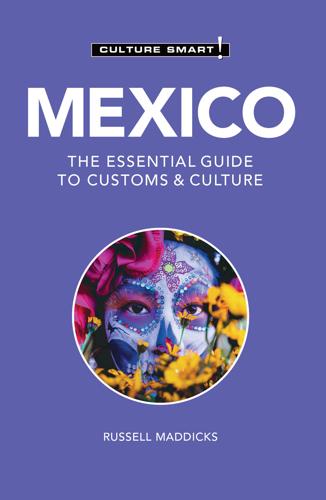
Mexico - Culture Smart!
by
Maddicks, Russell;Culture Smart!;
Published 15 Nov 2023
As president, AMLO pledged a “Fourth Transformation” (Cuarta Transformación) of politics and society following the Mexican War of Independence (1810–1821), the Reform War (1858–1861), and the Mexican Revolution (1910–1917). The key elements of T4, as it’s known, included cracking down on widespread corruption, gutting a bloated bureaucracy, and tackling historical inequality in Mexican society. Progress on these key issues has been slow, and was seriously impacted by the Covid-19 pandemic that took center stage for a frantic two years. In general, while social and educational programs focusing on the poorest sectors of society pleased AMLO’s supporters, there has been little action to tackle corruption. Andrés Manuel López Obrador in 2017. He has also worked closely with the armed forces, putting the military in charge of curtailing the activities of drug cartels and crime groups, but also putting them in charge of operating ports, airports, and the construction of the Tren Maya project in Chiapas and the Yucatán Peninsula.
…
The country is home to a small handful of billionaires while 43 percent of Mexicans live below the poverty line, 8 percent live in extreme poverty, and nearly 60 percent work precarious hand-to-mouth jobs in the informal sector. In 2022, the Economic Commission for Latin America and the Caribbean (ECLAC) ranked Mexico as the fifth poorest country in the region and warned that poverty was increasing in the country due to inflation. A slowly growing middle class was also badly hit by the economic effects of the Covid-19 pandemic, shrinking from 53.5 million people in 2018 to 47.5 million in 2020, according to the Mexican statistics agency INEGI. It’s only in the big cities that you find a sizable middle class. In Mexico City, nearly 58 percent of the population were middle class in 2022, while in the states of Oaxaca, Guerrero, and Chiapas it was only 6 percent.
…
Sectors that have been opened to foreign investment over the last twenty years include the automotive industry, transportation, banking, and telecommunication industries, and more recently, real estate and energy, too. Tourism, which represents about 8 percent of Mexico’s GDP, has bounced back fast since the Covid-19 pandemic, and tourism infrastructure and resort construction is booming along the Riviera Maya and in Baja California. The result is a diversified and sophisticated economy that is less reliant on oil revenue than it was in the past, but is still closely tied to the economic fortunes of its huge neighbor to the north.

Road to Nowhere: What Silicon Valley Gets Wrong About the Future of Transportation
by
Paris Marx
Published 4 Jul 2022
While the companies claimed to support efforts to establish more bike lanes and other infrastructure, they seemed to do little to change the existing mobility calculus and instead relied much more on effectively taking sidewalk space for themselves without permission. In San Francisco, the city even seized improperly parked scooters for a time. The ineffectiveness of micromobility companies was put on full display after the initial wave of the Covid-19 pandemic. With cities in various stages of lockdown and people needing to socially distance from one another, many cities closed streets or converted on-street parking to sidewalk extensions. As the summer of 2020 approached, there were bicycle shortages around the world as the number of cyclists soared and many cities added temporary bike lanes that gave way to permanent changes.
…
The financialization of land and property has caused housing prices in major cities to soar, even after the 2008 housing crash. Housing has become a speculative investment that wealthy people buy up even if they have no intention of living in their properties, because it is seen as a safe investment with high returns—and as billionaires saw their net worth soar through the Covid-19 pandemic in 2020, they have more money than ever to sink into speculative assets. With property already at unaffordable levels for a growing segment of the population, autonomous vehicles (in the form that is promised by tech executives) could act as a relief valve that makes it feasible for more people to move even farther from the city center in search of homes and rental units that do not eat up the majority of their incomes because the commute will be more tolerable.
…
In May 2020, Uber invested $85 million in Lime (another micromobility company) in exchange for taking Jump off its hands and, more importantly, its balance sheet. Jump had been losing $60 million a quarter. Weeks later, Jump’s e-bikes were being crushed at disposal sites around the United States even as there was a bicycle shortage in the early months of the Covid-19 pandemic. The perception that bikes and scooters were so disposable they should just be trashed instead of repainted and deployed into Lime’s fleet, or donated to charities, or even sold to people who might want to ride them illustrated the flawed model that the micromobility industry is designed around.
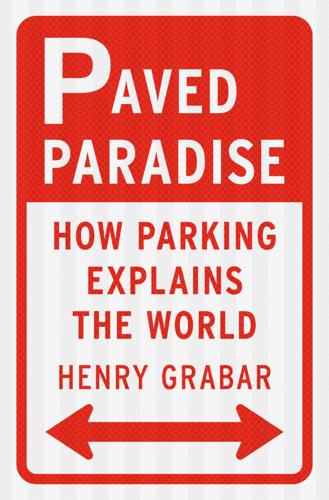
Paved Paradise: How Parking Explains the World
by
Henry Grabar
Published 8 May 2023
Hundreds of citizens sat in their cars, voting with clickers and following the action on a hyperlocal car radio broadcast. The awareness that the COVID-19 virus did not spread outdoors came painfully slowly. At the beginning of April, Oakland announced it would close seventy-four miles of streets to cars, to give people space to get outside. Cities like San Francisco and Chicago soon followed suit. At the end of April, the Lithuanian city of Vilnius decided to speed the reopening of its cafés, bars, and restaurants by offering public space for socially distanced tables. By midsummer, almost every American city and suburb had done the same. Within weeks, in cities from coast to coast, the atmosphere changed from plague-induced lockdown to outdoor carnival.
…
Long Beach City College created a program for students to sleep in its parking lot. Cities like San Diego, Seattle, and Phoenix (as well as smaller municipalities like Palo Alto and Encinitas, California) developed similar programs to meet the need. José Trinidad Castañeda helped create the one in Fullerton. In Las Vegas, during the early days of the COVID-19 pandemic, the city turned over a parking lot to homeless people in tents, giving everyone a parking space to live in. At the same time, cities tuned up parking regulations to criminalize vehicular homelessness—or at least push people sleeping in their cars into out-of-the-way areas like industrial zones.
…
Chapter 13 How Americans Wound Up Living in the Garage At the start of 2020, José Trinidad Castañeda was living with his mom. Reluctant to drain his savings in a rental market where a one-bedroom apartment went for north of $1,500 a month, Trinidad Castañeda shared a small house with his mother and two sisters. This made him typical of his generation: Even before COVID-19, 46 percent of eighteen-to-twenty-nine-year-olds lived with their parents. After COVID-19, that figure rose to 52 percent—the highest mark since the Great Depression. What made José atypical was that the hypothetical apartment that was out of his reach was not one in Boulder, Colorado, or Washington, DC, or Cambridge, Massachusetts, to name just a few cities where high rent has forced young people into cramped, shared quarters.
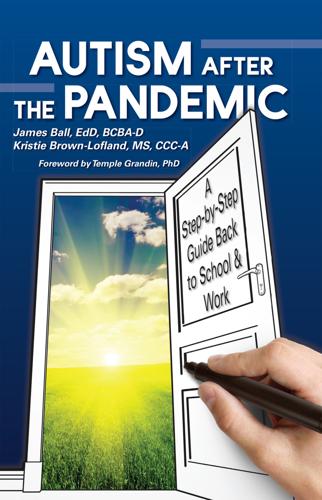
Autism After the Pandemic: A Step by Step Guide to Successfully Transition Back to School and Work
by
James Ball
and
Kristie Lofland
Published 17 Aug 2020
The first tip in Autism After the Pandemic is “no surprises.” Surprises scare people with autism. If a child or an adult is going to a new school or job, visiting before they start is highly recommended. Th is book has step-by-step instructions for teaching skills and strategies to prevent meltdowns, learn new skills, and to cope and grow in a work or school environment, and it is a valuable resource in families returning to a “new normal.” — Temple Grandin, Author of The Way I See It and The Loving Push We have arrived at a new normal: life after the arrival of COVID-19. How do we help those with developmental and/ or intellectual disabilities and those on the autism spectrum return to school or adult services?
…
A Teaching Strategy that can Save You Time: Chaining https://autismclassroomresources.com/a-teaching-strategy-that-can-save-you-time-chaining/ Accessible ABA website: Use Chaining and Task Analysis to Help Your Child with Autism https://accessibleaba.com/blog/chaining-task-analysis-autism REINFORCEMENT/MOTIVATIONAL SYSTEM Autism Behavior Therapy website: Free Printable First-and-Then Board https://autismbehaviourtherapy.com/free-printable-first-and-then-board/ StoryboardThat website: First Then Board Printable Template https://www.storyboardthat.com/storyboards/mon_shari/first-then-template Teachers Pay Teachers website: First-Then Schedule Board Freebie https://www.teacherspayteachers.com/Product/First-Then- Schedule-Board-Freebie-713428 ANTICIPATE THEIR SENSORY NEEDS AND BE PREPARED Noodle Nook website: COVID-19 Social Story FREE! http://www.noodlenook.net/covid-19-social-story-free/ PA Autism website: Wearing a Mask Social Story https://paautism.org/resource/wearing-mask-social-story/ Teachers Pay Teachers website: “We Wear Masks” – Coronavirus Social Story about Wearing a Mask https://www.teacherspayteachers.com/Product/We-Wear-Masks-Coronavirus-Social-Story-about-Wearing-a-Mask-5425981 Autism Little Learners website: Seeing People Wearing Masks Story https://www.autismlittlelearners.com/2020/04/seeing-people-wearing-masks-story.html Autism Research Institute website: I Can Wear a Mask Social Story https://www.autism.org/wp-content/uploads/2020/04/I-can-wear-a-mask-1-1.pdf YouTube – Jordan Drane: Wearing a Mask: A Social Narrative for Children https://www.youtube.com/watch?
…
Follow this process for each step: allowing the elastic to be put behind their ears, etc., until the person is wearing the mask. This may take several trials for each individual step. Try not to move ahead too quickly. The following websites contain social narratives and visual supports on wearing a mask and/or how COVID-19 will affect school and/or work. PARENT CHECKLIST Schedule sensory breaks Have brain breaks (Go Noodle, Adventures to Fitness, etc. are all fun apps to use) Break as often as needed, but return to schedule ASAP and pick up where you left off EXAMPLE: Ideas for sensory activities for home and classroom: Stretchy resistance bands Bouncing on exercise ball Tactile sensory bins Fidgets Sensory bottles or tubes Wall or chair push ups Squeezing Play-Doh or thera-putty Incorporate brain breaks Please reference Recommended Resources 20 to 26 at the back of the book.
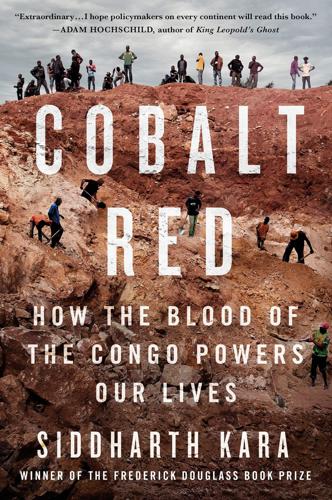
Cobalt Red: How the Blood of the Congo Powers Our Lives
by
Siddharth Kara
Published 30 Jan 2023
After the collapse at Kamilombe, I was unable to return to the Congo until 2021 due to travel restrictions from the COVID-19 pandemic. When I finally returned, it was immediately clear that the pandemic had caused conditions to deteriorate considerably. Most foreign mining companies suspended operations for extended periods during 2020 and 2021 out of safety concerns for their staffs; however, demand for cobalt only increased. Billions of people around the world relied more than ever on rechargeable devices to continue working or attending school from home. “COVID put pressure on artisanal miners to supply cobalt when the mines closed,” explained Dr.
…
There are many episodes in the history of the Congo that are bloodier than what is happening in the mining sector today, but none of these episodes ever involved so much suffering for so much profit linked so indispensably to the lives of billions of people around the world. The field research for this book was conducted during trips to the Congo’s mining provinces in 2018, 2019, and 2021. Travel during 2020 was not possible due to the COVID-19 pandemic. As the pandemic wreaked havoc across the globe, its impact on the destitute people mining for cobalt remains largely unassessed. When industrial mines went into lockdown for extended periods during 2020 and 2021, demand for cobalt did not graciously hibernate. It only grew as people across the world relied more than ever on their rechargeable devices to continue working or attending school from home.
…
It only grew as people across the world relied more than ever on their rechargeable devices to continue working or attending school from home. The increased demand for cobalt pressured hundreds of thousands of Congolese peasants who could not survive without the dollar or two they earned each day to clamber into the ditches and tunnels, unprotected, to keep the cobalt flowing. COVID-19 spread rapidly in the artisanal mines of the Congo, where mask wearing and social distancing were impossible. The sick and dead infected by the disease were never counted, adding an unknown number to the industry’s bleak tally. To obtain the testimonies included in this book, I devoted as much time as possible listening to the stories of those living and working in the mining provinces.
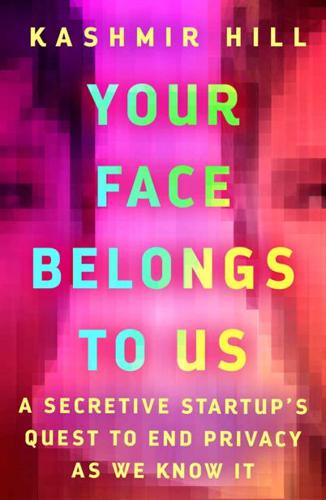
Your Face Belongs to Us: A Secretive Startup's Quest to End Privacy as We Know It
by
Kashmir Hill
Published 19 Sep 2023
Clearview’s few dozen full-time employees were still working from wherever they wanted, and although a government contractor without an actual headquarters was oddball, it was less so in the pandemic; lockdowns and social distancing rules had emptied most corporate offices. Instead, the meeting took place in Abrams’s posh Fifth Avenue apartment in Manhattan, its foyer adorned with photos of Abrams alongside Barack Obama, Bill Clinton, and George W. Bush. Abrams had a home office there, but it wasn’t huge, making it hard for us to maintain the recommended six-foot distance from one another in the time of Covid-19. Clearview’s spokeswoman, Lisa Linden, arrived early in a floral mask, and Hoan Ton-That arrived a few minutes late, wearing a paisley jacket over an all-white ensemble, a red bandanna functioning as his mask.
…
A state representative in California, Democrat Ed Chau, tried to pass a bill that would have cleared the way for private companies and government agencies to use facial recognition technology to fight Covid-19. But that bill didn’t gain traction. No public contracts emerged indicating that Clearview was involved in pandemic-related work. What Clearview AI and many other facial recognition technology companies did instead during that time was to adapt their facial recognition systems, training them on images of people in surgical and N95 masks to ensure that their software would still be able to recognize those who cared to take Covid-19 precautions. The pressure on Clearview eased somewhat. All the media attention had caused controversy, but it had also made more law enforcement agencies aware of the company’s existence, resulting in new trials and new customers.
…
People’s faces disappeared behind masks, along with the uproar about how they were being tracked. A pandemic took priority over privacy. Clearview AI, as if disappointed to fall out of the news cycle, sought to capitalize on the crisis. In March 2020, The Wall Street Journal reported that the company was “in discussions” with unnamed state agencies “about using its technology to track patients infected by the coronavirus.” The unverified claim sounded like startup hype, but it was true that the company’s software could theoretically be used for tracking people with Covid-19 and anyone they came into contact with. Reports emerged that South Korea, China, and Russia were tracking faces to try to control the spread of the virus.

Supertall: How the World's Tallest Buildings Are Reshaping Our Cities and Our Lives
by
Stefan Al
Published 11 Apr 2022
The mathematics of social networks explain that the bigger the city, the more social connectivity per capita. However, while social connectivity is good for exchanging ideas and making financial transactions, it also speeds up more dubious activities and virus transmissions. When the pandemic and social distancing called into question dense urban life, skyscrapers took on a new meaning. While compact cities may have contributed to the rapid spread of the COVID-19 pandemic, its opposite, urban sprawl, may have been a cause. Zoonotic diseases, which spring from animals to humans, are a result of our increasing wildlife-human interface. They are partially a consequence of the destruction of nature through deforestation and unbridled suburbanization.
…
Since it maximizes the number of people on a given plot of land, it can offset the higher land cost. Meanwhile, it makes for more compact and dense urban living, allowing for more possible social connections between people, which can stimulate economic growth. But, as COVID-19 showed, there are downsides to density. Skyscraper living can be more contagious, with aerosols easily spread in crowded elevators and improperly ventilated high-rise shafts. The pandemic-induced urban exodus may grind the supertall outburst to a halt. Some countries have decided to base their national policy on the positive relationship between urbanization and economic growth. China has added roughly half a billion people to its cities, and has the largest amount of supertall buildings.
…
The Burj Khalifa was completed in 2009 just as the Dubai property market collapsed. Throughout history, the hubris of tall structures, like the Tower of Babel or the Easter Island moai, have seemed to tempt the gods, leading to societal breakdown. In 2020, with a wave of new supertalls in New York still under construction, COVID-19 hit. The pandemic brought the city to an abrupt halt, including its feverish construction activity. Was the curse striking again, with New York’s record-breaking skyscrapers the latest symptoms of excess, and looming economic decline? Economists have since debunked the supposed “Skyscraper Curse.” The tallest towers are not a leading indicator of economic peaks.
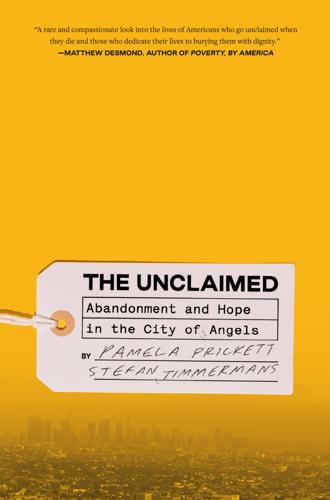
The Unclaimed: Abandonment and Hope in the City of Angels
by
Pamela Prickett
and
Stefan Timmermans
Published 11 Mar 2024
When the state permanently severs parent-child relationships, the law renders estrangement legally binding. The COVID-19 pandemic has only exacerbated these trends toward disconnection. Surveys taken before and after the pandemic showed that social distancing and lockdowns led to community distrust and isolation even after lockdowns ended, especially for the middle-aged and elderly, who were already vulnerable. At precisely the moment when we could have collectively benefited the most from social support, the number of social interactions plummeted. Unsurprisingly, Americans felt more alone than ever. “When adult children don’t contact you during a pandemic,” one respondent said, “it certainly feels [like] they don’t care whether you live or die.”
…
GO TO NOTE REFERENCE IN TEXT social distancing and lockdowns Alex Bierman and Scott Schieman, “Social Estrangement and Psychological Distress Before and During the COVID-19 Pandemic,” Journal of Health and Social Behavior 61 (2020): 398–417; Richard Weissbourd et al., “Loneliness in America: How the Pandemic Has Deepened an Epidemic of Loneliness and What We Can Do About It,” Making Caring Common Project, Harvard University, February 2021. GO TO NOTE REFERENCE IN TEXT “When adult children don’t contact you” Quoted in Lucy Blake et al., “Family Estrangement and the COVID-19 Crisis: A Closer Look at How Broken Family Relationships Have Been Impacted by the COVID-19 Crisis,” standalone.org.uk, 2020.
…
Relatives of migrants swallowed in the killing wasteland of the Sonoran Desert or of those “disappeared” by authoritarian regimes, like the Mothers of the Plaza de Mayo in Buenos Aires, ache for the chance to claim the remains of their loved ones but are denied burial rites. The U.S. military still spends millions of dollars every year to retrieve the remains of soldiers killed in foreign wars so families have something tangible to mourn. During pandemic lockdowns, social distancing rules restricted funeral size and practices. Americans unable to bury their loved ones were suspended in a liminal space of grief. If denying families a burial causes deep personal pain, denying a funeral to those without family exacts its own social cost. When we dispose of the unclaimed out of the public eye, locate their gravesites in inaccessible areas, or either fail or refuse to mark a mass burial with a ceremony—the default in most cities in the United States—we erase these deaths and lives and the vital lessons they offer.
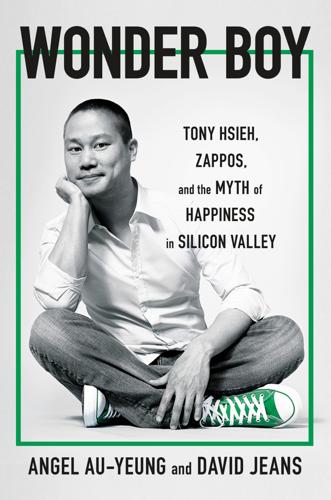
Wonder Boy: Tony Hsieh, Zappos, and the Myth of Happiness in Silicon Valley
by
Angel Au-Yeung
and
David Jeans
Published 25 Apr 2023
He had been coming up with all sorts of ideas for Life Is Beautiful since the pandemic had canceled the festival. Justin’s proximity to Tony also meant that his role remained central to Life Is Beautiful, and Tony had been discussing some ideas with him for how he could lead it forward. A few weeks before, they had hiked up Park City mountain and reached the backside of the slope, where Tony had first spotted what he believed was a natural amphitheater in the mountainside. Turning to Justin, Tony had proposed they launch a COVID-friendly festival, where everyone could socially distance outside. Tony would give Justin $100 million to pull it off.
…
In turn, he retreated deeper into his trailer park, where those present seemed to orbit around his cult of personality. In the months before the COVID-19 pandemic swept the United States in 2020, Tony was introduced to ketamine, the popular party drug typically used to tranquilize horses, and it uncorked long-held insecurities and breaks with reality that led him to act in ways that some saw aligned with psychosis. He started to claim that he devised an algorithm to bring about world peace, that he figured out how to cure COVID-19, and that he no longer had to urinate because his body could recycle water. After months of drug use caused his behavior to spill into his public life in Las Vegas, Tony’s friends persuaded him to check into a rehab facility in Park City.
…
Before Tyler turned to go back downstairs, Tony said something that made Tyler feel defeated. “If you don’t question me again,” Tony said, “I’ll give you half my net worth.” CHAPTER 22 THE GORDIAN KNOT “Let’s go for a walk,” Tony said. “I’ve got a surprise.” It was a morning in early June in the midst of the COVID-19 pandemic, and Justin was standing in the living room of the lodge. Tony’s episode on the boat had made clear to the group that he was far from okay. Justin, Tyler, and others had concluded that Tony may have acquired more ketamine during a visit from Anthony in the days before they went out on the lake, and they had each taken turns demanding that Anthony not provide Tony with drugs.
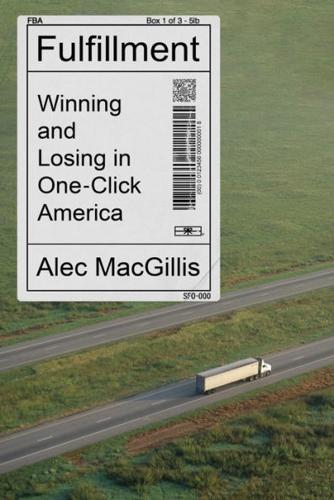
Fulfillment: Winning and Losing in One-Click America
by
Alec MacGillis
Published 16 Mar 2021
She had been working as a picker at the Broening Highway warehouse, where the GM plant used to be, until she had her baby, her second child, just as the pandemic was arriving. Her husband also worked as a picker, but at the other Amazon warehouse, at Sparrows Point, and he, too, had taken time off from the job, because there had been a lot of coronavirus cases there. The company’s initial reaction to the pandemic was to announce that it was seeding a charitable fund for its temp workers and contract delivery drivers who lacked health coverage and to encourage the public to donate to it. This met with some derision. It also promised two weeks of paid leave to anyone with a COVID-19 diagnosis and offered unpaid time off, without risk of being penalized for missing shifts, to anyone who wanted to stay home as a precaution.
…
more than NASA’s entire budget: Christopher Mims, “Not Even a Pandemic Can Slow Down the Biggest Tech Giants,” The Wall Street Journal, May 23, 2020. “the extreme divergence in the health of different types of companies”: Austan Goolsbee, “Big Companies Are Starting to Swallow the World,” The New York Times, September 30, 2020. “Covid-19 … has injected Amazon with a growth hormone”: Daisuke Wakabayashi, Karen Weise, Jack Nicas, and Mike Isaac, “Lean Times, but Fat City for the Big 4 of High Tech,” The New York Times, July 31, 2020. the company has … added more than 425,000 employees worldwide: Karen Weise, “Pushed by Pandemic, Amazon Goes on a Hiring Spree Without Equal,” The New York Times, November 27, 2020.
…
At the company’s warehouses in France, union demands over safety measures had forced a weeks-long shutdown and an eventual deal that included a reduction of shifts by 15 minutes, without a reduction to pay, to allow for more social distancing at crowded shift changes. In the absence of unions at the U.S. warehouses, discontent took other forms. WELCOME TO HELL read the graffiti inside truck trailers, out of sight of warehouse cameras. FUCK BEZOS. Workers began sharing their disquiet in online back channels, and at some warehouses, they organized protests, signaling that the pandemic just might set in motion a new era of workplace activism. The company moved to head off any such swell. It fired a worker who organized a walkout at the huge warehouse in Staten Island, saying he violated safety protocol by coming to the warehouse while under self-quarantine for having had contact with an infected worker.
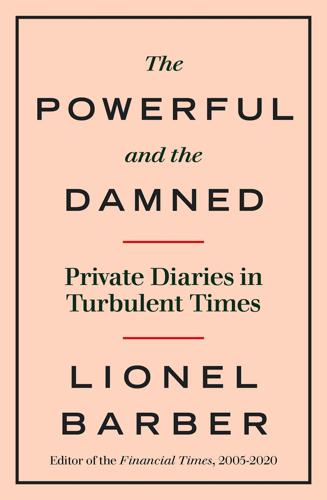
The Powerful and the Damned: Private Diaries in Turbulent Times
by
Lionel Barber
Published 5 Nov 2020
Covid-19 reinforced the negative trends underway. Something else changed in the spring of 2020. Globalisation was always more than a physical and political phenomenon, it was a mindset: the idea of ubiquitous choice, where the consumer can have it all, on demand, in real time. The pandemic spelt the end of ultra-mobility. In a world of ‘social distancing’, without a vaccine in sight, the basic modus operandi of a modern economy would have to be rethought, from air travel to office working. The coronavirus outbreak presented a supreme test of leadership in authoritarian societies as well as liberal democracies. In China, where the virus originated, the regime started with a bungled cover-up.
…
Finally, just as the first reports of coronavirus appeared, I ended my editorship with an interview with Chancellor Angela Merkel in Berlin, a political testament of the greatest defender of the old liberal order. Within weeks, the world was gripped by the coronavirus pandemic. This once-in-a-century phenomenon seems to draw an even heavier line under the years 2005–20, adding an even greater unpredictable element to a world already in disarray, to borrow the phrase of Richard Haass, the scholar, diplomat and president of the Council on Foreign Relations. I have therefore written an epilogue which attempts to assess Covid-19’s impact on the way we live now, and how it will reshape the world in future. Beyond the speculation, it is surely safe to say that Acheson’s world is over.
…
Martin’s essay predicted the return of government and regulation in the management of the economy; a huge increase in public deficits; and a shift in politics away from the global towards the national, just as occurred in the 1930s after the Depression. After a brief post-crisis interlude, the Covid-19 pandemic gave fresh impetus to the shift towards the state. FRIDAY, 27 MARCH Barack Obama has agreed to an interview with the FT. I’m thrilled because he’s not giving interviews to US news rivals. I’m also intrigued to meet the man who made history, the first African-American in the White House.
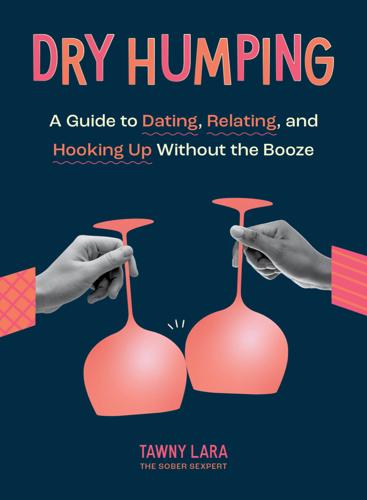
Dry Humping: A Guide to Dating, Relating, and Hooking Up Without the Booze
by
Tawny Lara
Published 19 Sep 2023
We’re replacing booze on a date, but the lighthearted fun of a drinking game can stay! Digital Get Down Many of us got more comfortable connecting on-screen during the COVID-19 pandemic. Video dates made meeting new people more accessible while staying safe and socially distanced. The pandemic lockdown also led to a surge in creative online activities. Virtual escape rooms, cooking classes, and group exercise classes became easily accessible if you had Wi-Fi and a screen. I took an online pasta-making class early in the pandemic. An adorable grandmother and granddaughter in Italy taught us how to make pasta from scratch—no pasta machine required!
…
I spoke with Aqxyl Storms, an alcohol-free nonbinary musician, about how some people turn to alcohol to ease general anxiety about their physical presentation. “I think my eating disorder had a lot to do with the discomfort I felt in my physical body. I liked to drink because it made me feel way less awkward,” they shared. Aqxyl’s sober curiosity began with a dry month in the early days of the COVID-19 pandemic and even resulted in them opening Minus Moonshine, a booze-free bottle shop in Crown Heights, Brooklyn. “Giving up alcohol helped me learn to accept my weirdness and awkwardness, not just with my body but also my personality,” they told me. “My confidence is real for the first time in my adulthood.
…
Being able to face your body with real courage, not just liquid courage, can mean gaining the space to make changes that will let you feel better for good—not just in the moment. Dubbs Weinblatt, a transgender educator and the host of the Thank You for Coming Out podcast, began gender-affirming hormone therapy just one month and six days after they stopped drinking during the COVID-19 pandemic. “I started out doing a dry month. I just wanted a reset,” they said during a Zoom interview. Before that dry month, Weinblatt’s only other experience with temporary sobriety in twenty years was the two weeks before their top surgery. “As soon as I stopped drinking, it opened up the headspace for me to try T [testosterone] sooner,” Weinblatt told me.

The Land of Hope and Fear: Israel's Battle for Its Inner Soul
by
Isabel Kershner
Published 16 May 2023
In one of the more symbolic shows of autonomy, one small Haredi charity operating out of a basement in Mea Shearim pioneered a home-care system for elderly ultra-Orthodox COVID-19 patients who dreaded ending up in a hospital ward and wanted to opt out of the national health system. The charity, Hasdei Amram, run by Yitzhak Markovitz, a member of a small anti-Zionist Hasidic sect, organized home visits by private doctors for a fee and follow-up care by volunteer assistants who delivered devices for measuring blood oxygen levels and oxygen generators. The operation was largely off the books: The patients generally avoided taking government COVID tests to evade attention and pressure to go to the hospital.
…
The operation was largely off the books: The patients generally avoided taking government COVID tests to evade attention and pressure to go to the hospital. For the same reasons, Markovitz did not report the charity’s cases to the authorities. It would take longer to gauge the broader impact of the pandemic on relations between the Haredim and the state. But if the pandemic had any immediate effect that posed a momentous challenge for the rabbis, it was the Haredi public’s realization of the need for fast and reliable information, upending years of pious resistance to free access to the Internet. By the time the epidemic arrived, about half the Haredi public in Israel was estimated to already have some kind of Internet access, at least in the workplace.
…
The contradictions were on display when the coronavirus hit. Even then, the government response became mired in the country’s political and cultural wars as some ultra-Orthodox rabbis flouted lockdown rules and some Arab mayors were seen dancing at large illegal weddings. Israel was initially a global leader in vaccinating its population. Yet at times its COVID infection and mortality rates soared to among the highest per capita in the world. * * * — Assaf had returned to Israel from New Zealand as a young man primarily because he missed the sense of belonging. It was easier to live where you were born, he explained, with your own family, language, and history.
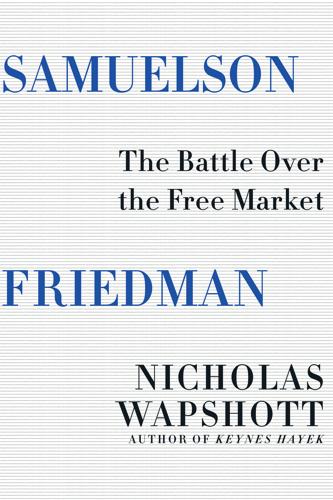
Samuelson Friedman: The Battle Over the Free Market
by
Nicholas Wapshott
Published 2 Aug 2021
While there were small rebellions from Tea Party types about the effects of the lockdown on businesses, it rarely extended beyond rallies to protest the mandatory wearing of masks in public when “social distancing”—leaving a gap of six feet between one person and the next—was not possible. Would Friedman have worn a mask? It is hard to imagine that Rose would have allowed him to risk his life on such a slender principle. The COVID pandemic showed not only that big government was necessary but that it was both the lender of last resort and the only means of keeping the tens of millions suddenly made unemployed44 from starving.
…
While both Keynesians and Friedmanites could claim that the remedy of pumping liquidity into the economy was true to their masters’ wishes, the COVID crisis dealt a severe blow to Friedman’s desire for smaller government and the removal of government from interference in the marketplace. The federal government was now in total control of the market, and decided which businesses were allowed to operate, which lived, which died. The universal response to COVID among responsible governments was that only “big government” was capable of providing the wherewithal to limit, then overcome, the pandemic. Countries with small or incompetent governments—usually presiding over countries with small or broken economies—could not cope with the medical disaster that overtook them.
…
Friedman’s novel plan for a negative income tax to replace traditional welfare payments attracted support from across the political spectrum, including from Samuelson, who praised it as “an idea whose time has come.”55 The idea morphed into the “universal basic income” in which the state would provide a minimum wage to everyone as a right. The COVID-19 pandemic saw governments around the world adopting similar schemes, at least temporarily, though the prospect of a world economy dependent upon robots rather than humans made more likely permanent direct state funding of those not needed for work. Friedman’s long march was always as much political as economic.
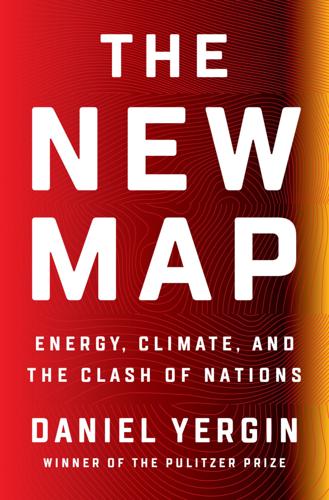
The New Map: Energy, Climate, and the Clash of Nations
by
Daniel Yergin
Published 14 Sep 2020
Perhaps a complacency developed—not among people focused on infectious diseases, but more generally after the relative success and limited numbers affected—in controlling SARS (8,098 people became sick, 774 died), MERS (Middle East Respiratory Syndrome) (2,494 cases, 858 deaths), and Ebola 2014–2016 (11,325 deaths).3 Only at the beginning of March did it become apparent that this coronavirus was far more transmissible. On March 6, the day OPEC-Plus broke up, 101,000 people were infected by COVID-19 worldwide, and more cases were emerging in Europe and the United States. “No handshake policy” was turning into “social distancing.” Offices emptied, businesses shuttered, schools and restaurants closed, conferences were canceled, airports emptied, travel stopped, and people were told to stay home. The unprecedented drop in oil demand during the first three months of the year—eight million barrels per day—would pale in comparison to what ensued in the months that followed.
…
See also specific countries Central Intelligence Agency (CIA), 103 Chan Heng Chee, 169 Chávez, Hugo, 272–73, 283 chemical weapons, 213, 245–47 Cheng Wei, 362–63 Cheniere, 32, 35–37, 38 Chesapeake, 31, 35–36 Chevrolet Volt, 332–34 Chevron, 65 Chiang Kai-shek, 139–41 China and Auto-Tech advances, 368 Belt and Road Initiative, xvi, 134, 177–90, 185 Century of Humiliation, xvi, 154 and container shipping, 161–64 Cultural Revolution, 147–48, 166, 340 development of oil resources, 155–60 economic growth, 130–33, 161 and electric vehicles, 338, 340–42, 344–45 and energy transition challenges, 412–13, 416 financing for Russian infrastructure projects, 117–18 and global energy trends, 423 and global impact of coronavirus pandemic, 311–12, 322–23 impact of U.S. shale production on, 56–57 key challenges facing, 142–46 “Made in China” strategy, 174, 397 and Middle East oil resources, 223–24, 232 naval power in Chinese history, 152–54 and Northern Sea Route, 113 petroleum imports, 133 and push for renewable energy sources, 395–402 and ride-hailing services, 362–64 rising global position of, 150, 165–76, 188–89, 425–26 rivalry with U.S., xiv, xvi–xvii, 62, 129–35, 425–26 and Russian geopolitics, 77, 114, 115–19, 120–26 and South China Sea tensions, 136–41, 147–51, 149, 152–53 and the Thucydides Trap, 131, 154, 425 trade and price wars, 26, 62, 315–16 and trade deficits, 39 and “unequal treaties,” 119, 139 and U.S. manufacturing boom, 25–26 and U.S. transition to LNG exporter, 39–40 and varied approaches to climate change, 413 “workshop of the world,” 132, xvi China Dream, The (Liu), 132 China National Petroleum Company, 125 China Ocean Shipping Company, 163 China-Pakistan Economic Corridor, 186 “China’s National Defense in the New Era,” 173 Chinese Communist Party, 166–67, 174 Chinese Development Bank, 396 Chinese Military Council, 138 Chinese Ministry of Foreign Affairs, 144 Chinese Nationalists, 140, 146 chudo (Russian economic miracle), 74–75 Chukotka Peninsula, 69–70 chulha stoves, 408 Cleveland Clinic, 302 climate change and electric vehicles, 330, 331 and energy transition challenges, xviii–xix, 377–87 and European decarbonization efforts, 86 and global power politics, xiii and “green deal” proposals, 51, 64, 388–93 and pipeline battles in U.S., 48 politics of, xviii variety of approaches to, 412 Clinton, Bill, 130, 153, 172, 216–17 Clinton, Hillary, 103, 150, 237–38 coal and China’s economic growth, 155–56 and electric vehicles, 339 and energy transition challenges, 378–79 and Germany’s response to Fukushima disaster, 87 and hydrogen, 404 impact of shale gas on, 12, 33 and railroad transportation, 20 and Russia’s “pivot to the east,” 116–17 and varied approaches to climate change, 412 cobalt, 345 Cold War, xiv, xx, 60, 69–70, 80, 90, 121, 348, 426 Coldwell, Pedro Joaquín, 275 USS Cole bombing, 249, 264 colonialism, 193–96, 196–200, 197 Commanding Heights, The (Yergin and Stanislaw), xx commodity supercycle, 56–57, 77 ConocoPhillips, 65 container shipping, 161–64 Continental Resources, 19–20 COP 20 (Copenhagen) meeting, 381 coronavirus pandemic, xiii–xiv, xvii, 311–12, 322–23 and Brazil, 45 and carbon emissions, 411–12 and China, xvii and China Belt and Road Initiative, 180–81 and Chinese economy, 132 and containerization, 163 and current geopolitical challenges, 424, 430 and electric vehicle technology, 339, 344, 373 and energy transition challenges, xv, xx, 416–18, 420 and global energy trends, 426, 427–28, 430 and global oil market, 313, 314–15 and green deal proposals, 393, 428 impact on global geopolitics, 62, 65 and Iraq, 235 and oil price war, 318, 321–22 origins of, 311–12 and ride-hailing services, 365 and Russian interests in Central Asia, 125–26 and Saudi oil industry, 310 and U.S.–China relations, 124, 130–31, 174 and Yemen, 251 corruption, 93, 167, 233–34, 292–93, 421 Council of Ministries (Soviet Union), 73 COVID-19. See coronavirus pandemic Crane, Christopher, 400 Crimea, xvi, 93, 94–96, 96, 115, 124–25, 246 Cultural Revolution, 147–48, 166, 340 cyber security and warfare, 70, 171, 355 Cyprus, 109, 256, 257 Dakota Access pipeline, 49–51, 50, 391 Damman #7 well, 295 Daqing oil field, 156 Darby, Abraham, 378, 429 Das Kapital (Marx), 148 decarbonization, xix, 86, 377, 385, 390, 390–91, 404 “decoupling,” xvii, xx, 130–31 Defense Advanced Research Projects Agency (DARPA), 347–49 Democratic Party (U.S.), xvii, 55, 64, 391 Democratic Republic of Congo, 345 Dempsey, Martin, 246 Deng Xiaoping, 147–48, 163, 167, 425 Denmark, 344, 400 dependency, 43, 232 developed countries, 382, 408, 412 developing countries, xix, 56, 382, 407–10, 412, 413 Devon Energy, 8, 9–10 DiDi, 362–64, 365, 369, 372 diesel fuel and vehicles, 54, 335–37 Diess, Herbert, 337 direct air capture, 405 distributed energy systems, 399–400 divestment movement, 385–86.
…
The epidemic in China was turning into a global pandemic. Sixteen years earlier, in 2004, the National Intelligence Council, a research organization in the U.S. intelligence community, had published a report titled Mapping the Global Future, which presented scenarios for the year 2020. One of the scenarios imagined was a pandemic in 2020. It was eerily prophetic, even as to the year: It is only a matter of time before a new pandemic appears, such as the 1918–1919 influenza virus that killed an estimated twenty million worldwide. Such a pandemic in megacities of the developing world . . . would be devastating and could spread rapidly throughout the world.
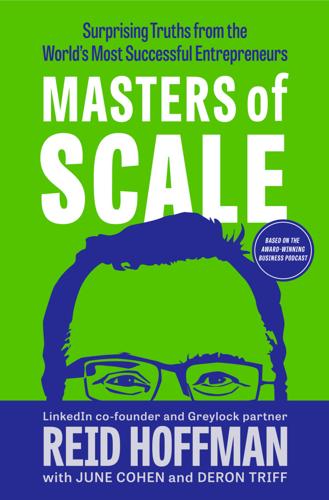
Masters of Scale: Surprising Truths From the World's Most Successful Entrepreneurs
by
Reid Hoffman
,
June Cohen
and
Deron Triff
Published 14 Oct 2021
All of this inspired Sarah to create some new offerings and features on Nextdoor—and the platform quickly pivoted from mere neighborly networking to more of an active outreach and informational clearinghouse. Sarah began by creating the COVID-19 Help Center, a central resource for accurate pandemic information and ways to support local businesses. She followed that up by launching the Neighborhood Help Map, which made it easy for neighbors to find and offer help based on proximity to where they lived. Later in 2020, that map showed it had staying power as it morphed into a Voter Help Map, which matched up people who needed help printing out their voter registration materials with neighbors who could print at home. When the pandemic hit, Nextdoor had been in the process of alpha testing a new Groups product.
…
When the pandemic hit, Nextdoor had been in the process of alpha testing a new Groups product. Sarah decided to stop testing and just launch it. “It had been trapped in the slog of iteration and we just said, ‘Okay, enough, rip the Band-Aid off.’ ” Nextdoor Groups became virtual meetups that helped to ease the psychological impact of social distancing, an idea with lasting value for elderly neighbors beyond the pandemic era. You could say the crisis lit a fire under Nextdoor, forcing them to come up with new ideas and act on ones that weren’t quite ready to launch. “I think in times of crisis your customers give you a little bit more latitude for things that might not be perfect,” Sarah says.
…
But it takes a leap of faith, Robert says. “And most people don’t have the courage for that, because you tend to hire what you know.” One last point on diversity: If you want a wide range of perspectives, don’t allow your company to be fenced in, geographically. There’s a strong movement now, accelerated by the COVID-19 pandemic, toward remote offices or distributed companies. This trend may prove to be a boon to cognitive diversity, according to Wences Casares, founder and CEO of Xapo, the digital currency company. Xapo is not huge—only about three hundred employees—but they are spread out in sixty-two locations around the globe.
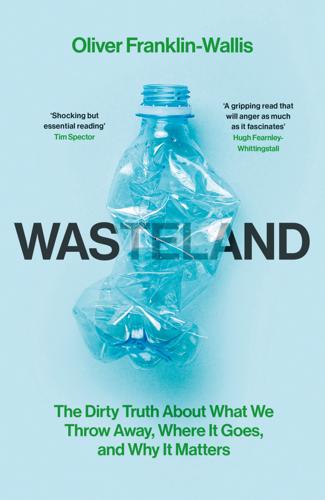
Wasteland: The Dirty Truth About What We Throw Away, Where It Goes, and Why It Matters
by
Oliver Franklin-Wallis
Published 21 Jun 2023
In reality, it creates the awkward feeling of wearing clown shoes, which along with the outdated outerwear and ill-fitting helmet, does not leave me brimming with confidence. We pass through another set of guarded, security-coded gates. Then, under the watchful gaze of two guards (due to the pandemic, even security is socially distanced) and I am handed one of those wand-like devices that you see at airport security, used to detect explosive chemicals. I sweep it over my clothing like a lint brush, sheepishly, before the guards wave me through. Once we pass through I hear the sound of the plant’s radiation monitoring system, its rhythmic blip-blip-blip evocative of a hospital ward.
…
In the distance, three slight figures are coming back down with their hauls. Three girls, barely teenagers, are walking in concert, bags of trash balanced on their heads. I count at least a dozen children on the mountain, and more nearby, helping parents while they sort, or playing among the garbage. The state provides free schooling, but when they shut during the Covid pandemic, few of the children had laptops or smartphones to study from home, so most chose to go to work with their parents. ‘They realise they can earn money at such a young age,’ Anwar says, ‘so that is why you see a lot of kids dropping out of school.’ The pickers are worried that we’ll be spotted if we climb higher, so we head back to the clearing.
…
For a small donation – families typically pay anywhere from 500 to 2,000 rupees (£5–20) – he will surrender your loved ones to the afterlife, while you watch from the safety of the bank. Every morning, Feroz rises at 4 a.m. and comes to the river, staying until the sun sets. During the heights of the Covid pandemic – thought to have killed as many as 4.7 million people in India, the highest total of any country – Feroz was performing the rites for as many as fifty families per day. ‘I used to be drunk all the time,’ he says. ‘I would take a glass of alcohol, go in there, dump the ashes, then I would come back and drink another glass.’
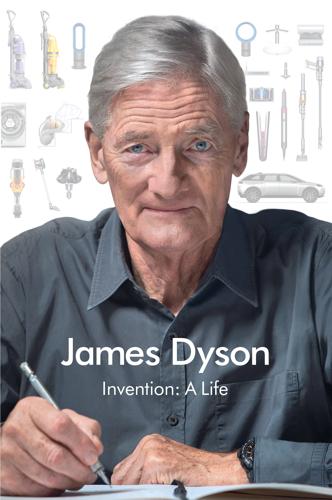
Invention: A Life
by
James Dyson
Published 6 Sep 2021
As the project progressed, we bought the rare components needed and reached the medical-grade manufacturing stage in just six weeks, turning an entire Hullavington hangar into a medical-grade production facility filled with Dyson people observing social distancing while assembling the machines. The teams were highly driven. They were diverted from developing commercial projects, which were delayed as a result. We only ever thought the ventilator would cost us money—rather than make it—but we did it for the right reasons as part of the national effort at this time of crisis. I wasn’t surprised by the way the teams responded: this is how we work and what we do. The teams did all of this at the height of the pandemic, working all hours, away from their families. It was selfless and showed just what engineers can achieve together in a short time.
…
The latter might be very much bigger and more powerful than our tiny electric motors, yet the principles of airflow are equally important to the successful working of both. As if by chance, Prime Minister Boris Johnson called me on March 13, 2020, saying he needed fifty thousand ventilators in six weeks in response to the Covid-19 pandemic. The project was announced publicly four days later. We repurposed the very buildings at Hullavington that had been devoted to the development of the car. It was fortunate that we had a pristine new factory available to make a medical product such as this. We started as a relatively small team of engineers and designers, understanding the clinical need and the specification of the ventilator.
…
We are sorry that these facts were not always reflected in our coverage, and we apologise for not doing so. Covid-19 created the most difficult circumstances facing business and the public in my lifetime. Many economies face a grave future as the world begins to recover, although the difference between the performance of Western and emerging and developing Asian economies is significant. In December 2019, national debt in Western countries was 103 percent of GDP, rising to 124 percent a year later. Asian debt rose from 53 to 63 percent of GDP, showing how these economies, although affected by the pandemic, were running much tighter ships than the West. Where Western economies contracted by 5.8 percent between December 2019 and December 2020, the figure for Asia was just 1.7 percent and, according to the IMF (International Monetary Fund), these are expected to grow by an average 5.9 percent by mid-decade, well above what can be expected of Western countries.
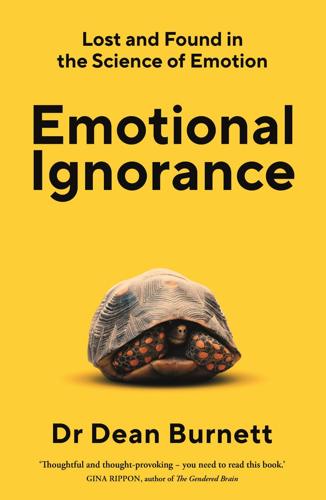
Emotional Ignorance: Lost and Found in the Science of Emotion
by
Dean Burnett
Published 10 Jan 2023
It was a tricky situation. But then, in 2020, the COVID-19 pandemic happened, and the world went into lockdown as the virus tore across the globe. At first, I felt I was well placed to ride things out. I already worked from home, my job wasn’t under threat, my wife and children and I are quite a harmonious group. This will be fine, I figured. This will be fine. Then, in March that year, my father contracted the virus. Eventually, he was admitted to hospital. And I couldn’t do anything. I couldn’t help, I couldn’t go to see him. It was a pandemic; we were all locked down, hospitals were quarantined, and all medical staff were working desperately hard to save lives.
…
Still, I will say that having more upsetting and vivid dreams than usual was rather annoying, given all the other emotional issues I was trying to get to grips with. In some ways it is unsurprising, though: the sudden loss of a loved one undeniably makes your daily life a fog of emotional turmoil and confusion, so why wouldn’t your dreams follow suit? It’s the same brain responsible for everything, after all. I’m not alone, either. The COVID-19 pandemic has led to people worldwide being more scared, confused, anxious, angry, and stressed than usual. The overall mental health impacts will take years to uncover and unpack, but interestingly, at the time of writing, I’m seeing a lot of people online opening up about the weird, unsettling dreams they’re regularly having.
…
absence of emotions: DB’s imagined scenario 1, 2, 3; negative consequences of 1; in science fiction 1, 2, 3, 4 acting work: actor/character relationship 1; emotional labour 1 action representation network (brain) 1 adolescence and early adulthood: brain development 1; crushes 1, 2; intense emotions 1; nightmare frequency 1, 2; safe exposure to negative emotions 1, 2; social media use 1 see also infancy and childhood affect: definition and components 1; versus basic emotions 1 airport security, facial recognition technology 1 altruism 1, 2 amygdala (brain region): and dreaming 1; and emotional regulation 1, 2; and emotions processing 1, 2, 3, 4, 5, 6, 7, 8, 9; gender differences 1; influence of testosterone 1; and memory formation 1; as part of olfactory system 1 AND model of nightmare production 1 anger: as ‘basic’ emotion 1, 2; and colour red 1, 2; DB’s anger during grief 1, 2, 3; facial expression of 1, 2; as ‘masculine’ 1(fn); and motivation 1, 2 see also negative emotions angular gyrus (brain region) 1, 2 anosmia (inability to smell) 1 anterior cingulate cortex (brain region) 1, 2, 3, 4 anterior olfactory nucleus (brain region) 1 anxiety: caused by work 1; performance anxiety 1; social anxiety 1, 2, 3; and status 1; vagus nerve stimulation treatment 1 see also negative emotions; stress apatheia (ultimate goal of Stoicism) 1 appraisal theory 1, 2 approach-attachment behaviour 1 approach versus avoid motivation 1, 2 arguments with romantic partner 1 arousal (component of affect) 1, 2, 3 asexuality 1 @AstroKatie (Katherine Mack) 1 attachment during early childhood 1, 2 see also parent emotional bond attention restoration, and colour green 1 auditory cortex (brain region) 1, 2(fn) auditory processing 1, 2, 3, 4, 5(fn) autism 1, 2 automated voices and announcements, annoyance caused by 1 avatar therapy 1 avoid versus approach motivation 1, 2 babies in the womb, playing music to 1, 2 baby-parent emotional bond 1, 2, 3 see also attachment during early childhood Bain, Alexander 1 Baron-Cohen, Simon 1 Barrett, Lisa Feldman 1, 2 basal ganglia (brain region) 1 basic emotions theory 1, 2, 3, 4 BDSM (sexual practice) 1, 2 belief perseverance 1 Bell, Charles 1, 2 bias: confirmation bias 1, 2, 3; fading affect bias 1, 2, 3; ingroup versus outgroup bias 1; negativity bias 1, 2 Blackmore, Chris 1, 2, 3 blinking, by cartoon characters 1 blood sugar, effect on emotions 1 blue colour, associations and effects 1, 2, 3 body, emotions experienced in see physiology-emotion connection body language: communicating emotion 1, 2, 3, 4; mimicry 1; missing from communication technologies 1 brain: body’s influence on 1; competing resource demands 1, 2, 3; development 1; distinguishing what is real/not real 1, 2; emotions as conscious or subconscious processes 1; gender differences (beliefs and experimental studies) 1; influence of oestrogen and testosterone 1; left brain/right brain facts and myths 1, 2, 3(fn), 4(fn); lobotomies 1; mirror neurons 1, 2, 3, 4; nervous and endocrine system regulation 1; neurotransmitters 1, 2, 3, 4, 5, 6; reward pathway and system 1, 2, 3, 4; somatic marker hypothesis 1; spindle cells 1; synapses 1, 2; triune model 1, 2 see also cognition (thinking); learning (of information); memory(ies) brain, functional regions: action representation 1; auditory processing 1, 2, 3, 4, 5(fn); cognition 1, 2, 3, 4; disgust 1; emotional regulation 1, 2; emotions (overview) 1, 2, 3; fear 1; imagination 1; intention processing 1; language processing 1; love 1, 2; lust 1, 2; memories 1, 2, 3, 4, 5; motivation 1, 2; olfactory processing 1, 2; visual processing 1, 2, 3 see also specific brain regions brain scans, limitations for studying emotions 1 brainstem 1, 2, 3, 4, 5 breastfeeding 1, 2 Broca’s area (brain) 1 Brown, Thomas 1, 2 Buddhism 1 bullying online 1 burnout 1, 2 Bushman, B.J. 1 bystander effect 1 cancer awareness, role of news and media 1 canned laughter, annoyance caused by 1, 2 categories and types of emotion: basic emotions (theory) 1, 2, 3, 4; identified by James McCosh 1 see also identifying and defining ‘emotions’ cats and other pets, emotional attachment to 1 caudate nucleus (brain region) 1 celebrity endorsements 1, 2, 3, 4 cerebellum (brain region) 1, 2, 3 childbirth, role of oxytocin 1 childhood see infancy and childhood chilli, enjoyment of pain caused by 1 cigarette smoke, DB’s memories and associations 1, 2 cognition-emotion relationship see emotion-cognition relationship cognition (thinking): brain regions associated with 1, 2, 3, 4; effect of love on 1; executive control 1, 2, 3; ‘flow’ state 1; and intrusive thoughts 1; and motivation 1, 2, 3, 4, 5; and social relationships 1, 2 see also learning (of information) cognitive dissonance 1 colours: cultural associations 1; in DB’s friend’s home 1, 2; emotional response to 1; and visual processing 1, 2, 3 communicating and sharing emotions: machine detection of emotions 1, 2; nonverbal information 1, 2, 3; online versus in-person 1, 2; at work 1, 2, 3, 4, 5 see also emotional contagion; empathy; facial expressions and emotions communication technologies see phone calls; social media and online communication; therapeutic applications of technologies; video calls confirmation bias 1, 2, 3 conformity 1, 2, 3, 4 consciousness, evolution of 1 consolidation of memories 1, 2, 3, 4 conspiracy theories 1, 2, 3, 4, 5 see also deception; misinformation and ‘fake news’ constructed emotions theory 1, 2 corpus callosum (brain region) 1 cortex/neocortex (brain region) (in general) 1 see also specific regions of the cortex cortisol 1 cross-race effect 1 crushes, in adolescence 1, 2 crying: DB’s (in)ability to cry 1, 2, 3, 4, 5, 6; gender differences 1; induced by TV and films 1; types and functions of tears 1 cuteness and cute aggression 1 cyberbullying 1 dancing 1 Darwin, Charles 1, 2 deception: automated voices and announcements 1; response to 1, 2; self-deception 1 see also manipulation of emotions; misinformation and ‘fake news’ defining ‘emotions’ 1, 2, 3, 4 deindividuation and ‘mob mentality’ 1 depression: caused by work 1, 2; gender differences 1; and gut microbiome 1; and memory 1; post-natal depression 1, 2; vagus nerve stimulation treatment 1 Diana, Princess of Wales, impact of death 1 digestive system, influence of 1, 2 disgust: as ‘basic’ emotion 1, 2; brain region associated with 1; and colour green 1; facial expression of 1, 2; and horror 1; and memory 1; and suppressed motivation 1 see also negative emotions doctors, emotional aspects of work 1 dopamine 1 drama therapy 1 dreams and nightmares: AND model 1; bizarre nature of 1, 2; DB’s bad dreams 1, 2, 3; due to COVID-19 pandemic 1, 2; and emotion processing 1; Freud’s interpretations 1; and memory consolidation 1; and mental health 1; post-traumatic 1; prevalence of nightmares 1; recurring 1; threat simulation theory 1 Dunbar’s number (of social relationships) 1 dysgranular field (brain region) 1 dysphoria 1 see also depression e-learning, motivation in 1 earworms 1 Ekman, Paul 1, 2, 3, 4 Eleri, Carys 1 embarrassment 1, 2, 3, 4, 5, 6, 7 see also negative emotions emojis and emoticons 1 emotion-cognition relationship: appraisal theory 1, 2; in attention and focus 1, 2, 3, 4; belief perseverance 1; cognitive dissonance 1; competition for brain’s resources 1, 2; confirmation bias 1, 2, 3; distinction recognised by Stoics 1; in effect of emotions experienced 1; in empathy 1; in ‘flow’ state 1; interrelatedness (in general) 1, 2, 3, 4; in learning and information processing 1, 2, 3; in love 1; motivated reasoning 1; in motivation 1, 2, 3; negativity bias 1, 2; role of imagination 1; shared evolutionary origin 1; in stage fright 1 emotion-memory relationship: appraisal theory 1, 2; emotions triggered by memories 1, 2, 3, 4; fading affect bias 1, 2, 3; happy memories being more detailed 1; for implicit memories 1; later emotions changing memories 1, 2, 3; longevity and potency of emotional memories 1, 2, 3, 4, 5, 6; in memory consolidation 1, 2; in PTSD 1, 2, 3, 4, 5; role of nightmares 1; suppressing emotional memories 1 emotional contagion: dangers of ‘mob mentality’ 1; versus empathy 1; evolutionary importance 1; from groups of people 1, 2, 3; from music 1, 2, 3; neurological mechanism for 1; from social media 1 emotional detachment/suppression at work 1, 2, 3, 4 emotional manipulation see manipulation of emotions emotional processing 1, 2 emotional regulation, brain regions responsible for 1, 2 emotional relationships: attachment during early childhood 1, 2; friendships 1, 2; one-sided see parasocial (one-sided) relationships; parent-baby emotional bond 1, 2, 3; role of neurotransmitters 1, 2; romantic see romantic relationships; see also social relationships emotions: causing change 1; as conscious/subconscious processes 1; historical study of 1; identifying and defining 1, 2, 3, 4; language of 1, 2 see also categories and types of emotion; communicating and sharing emotions; emotion relationship; emotion relationship; negative emotions; physiology connection; positive emotions; specific emotions empathy: and autism 1, 2; in babies 1; and body language mimicry 1; versus emotional contagion 1; evolutionary importance 1, 2, 3; influence of own emotions on 1; as ingrained 1, 2; ingroup versus outgroup bias 1; versus mentalising (theory of mind) 1; neurological mechanism for 1, 2, 3, 4; and physical pain 1; in romantic relationships 1; as selfish/unselfish 1 endocannabinoids 1 endocrine system 1 endorphins 1, 2 envy 1, 2 see also negative emotions episodic memories 1, 2, 3 evaluative conditioning 1 excitation transfer theory 1 executive control 1, 2, 3 see also cognition (thinking) existential dread, as a motivator 1 explicit memories 1 extrinsic versus intrinsic motivation 1 Facebook: DB’s use of 1, 2; research into emotional manipulation 1, 2, 3 see also social media and online communication faces, seeing in inanimate objects 1 facial colour changes 1 facial expressions and emotions: in artificial/CGI faces (uncanny valley) 1; automated emotion recognition 1; in cartoon characters (blinking) 1; cross-cultural similarities and differences 1, 2; difficulties distinguishing between emotions without context 1, 2, 3; early writings on 1; Ekman’s work 1, 2, 3, 4; ‘invisible’ emotions 1; involuntary nature of expressions 1, 2, 3, 4; online curation of emotions portrayed 1 facial paralysis, and empathy 1 facial recognition, cross-race effect 1 facial recognition technology 1 fading affect bias 1, 2, 3 ‘fake news’ see misinformation and ‘fake news’ fandom 1, 2 see also parasocial (one relationships fear: as ‘basic’ emotion 1, 2; brain region associated with 1; enjoyment of 1, 2; facial expression and colour 1, 2; as first emotion 1; of flying 1; and horror 1; and imagination 1; and motivation 1, 2, 3; in PTSD 1; smell of (in sweat) 1 see also negative emotions films and TV causing negative emotions 1, 2, 3, 4 Firth-Godbehere, Richard 1, 2, 3, 4, 5 flat Earth conspiracy theory 1, 2 ‘flow’ state 1 flying, fear of 1 football shirts, red colour’s competitive advantage 1 Freud, Sigmund 1, 2 friendships 1, 2 see also emotional relationships; social relationships frosty atmospheres, emotional contagion 1, 2 funerals: crying at 1; of DB’s father 1, 2, 3, 4, 5; emotional contagion at 1, 2; live streaming 1, 2 gender differences: adolescent crushes 1(fn); attitudes towards infidelity 1; in brains (beliefs and experimental studies) 1; in brains (DB’s impossible experiment) 1; in emotional regulation and expression 1, 2, 3, 4, 5, 6; ‘maternal instinct’ 1; mental health problems 1; other physiological differences 1; societal influences 1 gender discrimination 1, 2, 3 goal distraction 1 green colour, associations and effects 1, 2, 3 grief: DB’s acceptance of emotions 1; DB’s anger 1, 2, 3; DB’s attempts to disguise grief 1; DB’s emotional confusion 1, 2, 3; DB’s (in)ability to cry 1, 2, 3, 4, 5, 6; DB’s motivation and productivity 1, 2; DB’s need to talk after funeral 1; at death of Princess Diana 1; emotional processing 1, 2; shared grieving 1; stages of 1 see also negative emotions guilt 1 see also negative emotions habituation 1, 2 ‘hangry’ behaviour 1 happiness 1 hippocampus (brain region): and dreaming 1; and emotional regulation 1; and emotions processing 1, 2, 3; and imagination 1; and memory 1, 2, 3, 4, 5; and navigation 1 Holmes and Rahe stress scale 1, 2 Holmes, Sherlock (analogy for action representation) 1 hormones: cortisol 1; digestive 1, 2; effect of tears on 1; influence on the brain (and emotions) 1; oestrogen 1, 2; oxytocin 1, 2, 3, 4, 5, 6; testosterone 1, 2, 3; vasopressin 1, 2, 3 see also endocrine system horror (emotion) 1 horror movies 1, 2, 3 hypothalamus (brain region) 1, 2, 3 hysteria 1 Icke, David 1 identification, in parasocial relationships 1 identifying and defining ‘emotions’ 1, 2, 3, 4 imaginary friends 1 imagination and mental imagery 1, 2 imitation of observed actions 1 implicit memories 1 impression management 1, 2, 3, 4, 5 infancy and childhood: attachment with primary caregiver 1, 2; breastfeeding 1, 2; DB’s memories of 1, 2; emotional experiences 1; empathy in babies 1; imaginary friends 1; importance of sense of smell 1; learning from media characters 1; nightmare frequency 1, 2; oxytocin in newborns 1; parent-baby emotional bond 1, 2, 3 see also adolescence and early adulthood inferior frontal cortex (brain region) 1, 2 inferior parietal cortex (brain region) 1 infidelity, emotional versus sexual 1 insular cortex (insula) (brain region) 1, 2, 3, 4 intelligence, and brain anatomy 1 intention processing 1 intrinsic versus extrinsic motivation 1 intrusive thoughts 1 Izard, Carroll E. 1 jealousy 1 Kübler-Ross, Elizabeth 1 language of emotions 1, 2 language processing 1 learning (of information): from media characters 1; motivation 1, 2; from other people 1, 2; processing demands and information prioritisation 1, 2; from senses 1 LeDoux, Joseph 1 left brain/right brain facts and myths 1, 2, 3(fn), 4(fn) limbic system (brain region) 1, 2, 3, 4 lobotomies 1 Lomas, Tim 1 London taxi drivers, brain study 1 losing oneself in a book/film 1 love: brain regions associated with 1, 2; demands on the brain 1; effect on cognition 1; for family and friends 1, 2(fn); role of dopamine 1; romantic love 1, 2, 3 see also romantic relationships lust and sexual attraction: asexuality 1; brain regions associated with 1, 2; and romantic relationships 1, 2; Stoics’ rejection of 1, 2; suppression of 1 Mack, Katherine (@AstroKatie) 1 mammal brain (region) 1, 2, 3, 4 manipulation of emotions: by authorities 1; for marketing 1, 2, 3, 4, 5; response to 1; by social media 1; by traditional news and media 1, 2, 3, 4 marketing 1, 2, 3, 4, 5 McCosh, James 1 medical work, emotional aspects 1 memory(ies): brain regions associated with 1, 2, 3, 4, 5; changeable nature of 1, 2, 3, 4, 5, 6, 7; connections with objects 1, 2, 3, 4; consolidation 1, 2, 3, 4; DB’s memories of early childhood 1, 2; DB’s memories of his father 1, 2, 3, 4, 5, 6; episodic memories 1, 2, 3; explicit memories 1; fading affect bias 1, 2, 3; forgetting memories 1; and imagination 1; implicit memories 1; and music 1; procedural memories 1; reminiscence bump 1; retroactive memory enhancement 1; semantic memories 1; and sleep 1; and smell(s) 1, 2, 3, 4; suppression of 1; as synapses 1, 2; working memory 1; Zeigarnik effect 1 see also emotion relationship mental health/illness: and social media 1; and status 1; therapeutic applications of technologies 1 see also anxiety; depression; PTSD; schizophrenia mental imagery and imagination 1, 2 mentalising (theory of mind) 1, 2 mirror neurons 1, 2, 3, 4 mirroring body language 1 misinformation and ‘fake news’: about COVID-19 pandemic 1, 2; David Icke’s space lizards 1; flat Earth theory 1, 2; and social media/internet 1, 2, 3, 4; susceptibility to 1 see also deception ‘mob mentality’ (deindividuation) 1 Moebius syndrome (facial paralysis) 1 monkey experiments, mirror neurons 1 Morgan, Matt 1 motivated reasoning 1 motivation: approach-attachment behaviour 1; approach versus avoid motivation 1, 2; brain regions associated with 1, 2; and cognition 1, 2, 3, 4, 5; DB’s experiences during grief 1, 2; and emotions 1, 2, 3, 4, 5, 6; intrinsic versus extrinsic motivation 1; and novelty 1, 2, 3, 4 motivational salience 1 music: dancing 1; DB’s emotional response to 1, 2, 3, 4; differentiating between voice and instruments 1; earworms 1; emotional contagion from 1, 2, 3; emotional response to 1, 2; evolutionary significance 1, 2; and memory 1 musical expectancy 1, 2 navigation, role of hippocampus 1 negative emotions: and attention/focus 1, 2, 3, 4, 5; and creativity 1; emotion processing 1, 2; feeling good whilst experiencing 1, 2, 3; induced by TV and films 1, 2, 3, 4; and intrusive thoughts 1; and memory 1, 2, 3; as more impactful than positive emotions 1; negativity bias 1, 2; and novelty 1; and performance 1 see also specific emotions negativity bias 1, 2 nervous systems: enteric (‘second brain’) 1; parasympathetic 1, 2, 3; regulation by brain 1; somatic and autonomic 1; sympathetic 1, 2, 3 neurotransmitters 1, 2, 3, 4, 5, 6 news and media (traditional): credibility 1, 2, 3, 4; emotional content 1, 2, 3, 4; precursors to 1 see also conspiracy theories; misinformation and ‘fake news’; social media and online communication nightmares see dreams and nightmares noises, emotional response to 1, 2, 3 see also music novelty 1, 2, 3, 4, 5 objects, and memories 1, 2, 3, 4 oestrogen 1, 2 olfactory bulb and cortex (brain region) 1, 2, 3 olfactory system 1, 2, 3, 4 one-sided relationships see parasocial (one-sided) relationships online communication see social media and online communication online learning, motivation in 1 orbitofrontal cortex (brain region) 1, 2 oxytocin 1, 2, 3, 4, 5, 6 pain (physical): and empathy 1; enjoyment of 1, 2 paracingulate sulcus (brain region) 1 parasocial (one-sided) relationships: adolescent crushes 1, 2; benefits 1, 2; ending the relationship 1; with fictional characters 1, 2, 3, 4; identification with the object 1; with imaginary friends 1; losing oneself in a narrative 1; meeting the object 1; negative aspects 1; neurological mechanisms 1; with people you haven’t met 1, 2, 3, 4, 5 parasympathetic nervous system 1, 2, 3 Parch (TV drama), actor’s experiences 1 pareidolia 1 parent-baby emotional bond 1, 2, 3 see also attachment during early childhood ‘passions’ 1, 2, 3 pathos 1 performance anxiety (stage fright) 1 personality, influence of early experiences 1, 2 phone calls: DB’s last call to father 1; lack of nonverbal emotional cues 1; walking around during 1 physiology-emotion connection: body influencing emotion 1; emotion influencing the body 1; somatic marker hypothesis 1 see also crying Pickle (DB’s cat) 1 Pixar movies 1, 2(fn), 3 positive emotions: and attention/focus 1, 2; and memory 1, 2 see also specific emotions ‘Positive Lexicography’ project 1 post-natal depression 1, 2 posterior parietal cortex (brain region) 1, 2 prefrontal cortex (brain region): cognitive functions 1, 2, 3; and emotional regulation 1, 2; and emotions processing 1, 2; and imagination 1; influence of testosterone 1; and memory 1; and mentalising (theory of mind) 1; and motivation 1, 2 pride 1 procedural memories 1 processing (negative) emotions 1, 2 Proust, Marcel, In Search of Lost Time 1 psycho-emotional tears 1, 2 PTSD (post-traumatic stress disorder) 1, 2, 3, 4, 5 racism: cross-race effect 1; and oxytocin 1 rage see anger red colour, associations and effects 1, 2, 3 relationships see emotional relationships religious perspectives on emotions 1 reminiscence bump 1 reptile brain (region) 1 ‘resting bitch face’ 1 retroactive memory enhancement 1 reward, and motivation 1 reward pathways of brain 1, 2, 3, 4 Ridley, Rosalind 1 Rippon, Gina 1, 2, 3 romantic relationships: adolescent crushes as preparation for 1; attitudes towards infidelity 1; disagreements and disputes 1; emotional connection between partners 1, 2; empathy versus problem ‘fixing’ in 1; long-term relationships 1, 2; love in 1, 2, 3; negative emotions in 1; online versus in-person 1; and own identity 1, 2; physical attraction in 1, 2; role of oxytocin 1; stress associated with losing partner 1, 2; trumpeting on social media 1 see also emotional relationships sadness: as ‘basic’ emotion 1; and colour blue 1, 2; enjoyment of 1, 2, 3; facial expression of 1 schadenfreude 1, 2 schizophrenia 1 scientific method 1, 2 scientists: motivations 1, 2, 3; popular portrayal as lacking emotion 1 self-deception 1 semantic memories 1 Sesame Street (TV) show, learning from 1 sex differences see gender differences sexism see gender discrimination sexual activity, BDSM 1, 2 sexual attraction see lust and sexual attraction sharing emotions see communicating and sharing emotions Simpsons, The (TV show), blinking in 1(fn) Singer, Tania 1 sleep 1, 2, 3 see also dreams and nightmares smell(s): anosmia (inability to smell) 1; DB’s memories of cigarette smoke 1, 2; and emotions 1, 2; evolutionary importance 1, 2, 3; and memory 1, 2, 3, 4; olfactory system 1, 2, 3, 4 social anxiety 1, 2, 3 social media and online communication: adolescents 1; adults/older people 1; emojis and emoticons 1; and emotional contagion 1; impression management 1, 2, 3, 4, 5; lack of nonverbal emotional cues 1, 2; live streaming funerals 1, 2; machine detection of emotions 1; negative aspects 1, 2, 3, 4, 5; online versus in-person emotions and personae 1; positive aspects 1, 2; versus real-world interactions, cognitive demands 1; and reward 1, 2, 3; and self-deception 1; and self-validation 1, 2, 3; and status 1, 2 see also conspiracy theories; Facebook; misinformation and ‘fake news’; news and media (traditional); video calls social relationships: cognitive load associated with 1, 2; Dunbar’s number 1; friendships 1, 2; one-sided see parasocial (one-sided) relationships; see also emotional relationships somatic marker hypothesis 1 spicy food, enjoyment of pain caused by 1 spindle cells 1 Spiner, Brent 1 sports kit, competitive advantage of wearing red 1 SPOT (Screening of Passengers by Observation Techniques) programme 1 stage fright 1 stalkers 1 Star Trek: The Next Generation (TV series): Data actor’s experience of fans 1; Data’s inability to choose ice-cream flavour 1 Star Trek (TV series): Stoicism of Vulcans 1, 2; universal use of English language 1 Starbucks (branding) 1 status: and emotions 1; and social media 1, 2; subjective status and mental health 1 Stoics and Stoicism 1, 2 stress: benefits of green environments for 1; caused by uncertainty 1; caused by work 1, 2; coping mechanisms 1; cortisol 1; Holmes and Rahe stress scale 1, 2; PTSD 1, 2, 3, 4, 5; and status 1; Yerkes-Dodson curve 1 see also anxiety; negative emotions striatum (brain region) 1 study of emotions (historical) 1 suicide 1, 2 superior temporal cortex (brain region) 1, 2, 3, 4 suppression of emotions: during disagreements with romantic partner 1; in learning and decision making (as impossible) 1; at work 1, 2, 3, 4 supramarginal gyrus (brain region) 1 surprise 1, 2 sympathetic nervous system 1, 2, 3 synapses (neuron connections) 1, 2 taxi drivers, brain study 1 tears, types and functions of 1 teenage years see adolescence and early adulthood temporal lobe (brain region) 1, 2 testosterone 1, 2, 3 thalamus (brain region) 1, 2, 3 theories of emotions see basic emotions theory; constructed emotions theory theory of mind (mentalising) 1, 2 thinking see cognition (thinking) threat simulation theory 1 transportation phenomenon 1 triune brain model 1, 2 TV and films causing negative emotions 1, 2, 3, 4 types of emotion see categories and types of emotion uncanny valley 1 uncertainty, unpleasant nature of 1 vagus nerve 1 valence (component of affect) 1, 2 vasopressin 1, 2, 3 video calls: DB’s call with friends after father’s funeral 1; lack of nonverbal emotional cues 1 virtual reality (VR) 1 visual cortex (brain region) 1, 2 visual processing 1, 2, 3, 4, 5, 6 see also colours voice characteristics, and communicating emotion 1 volcano/cupcake scenario (competing motivations) 1 wine tasting and appreciation 1 work and workplaces: communicating the wrong emotions at work 1; DB’s job embalming cadavers 1, 2, 3(fn); emotional aspects of medical work 1; emotional detachment/suppression 1, 2, 3, 4; emotional labour of acting work 1; mental health problems caused by 1, 2, 3, 4, 5, 6; performance appraisals 1, 2; wellbeing initiatives 1, 2 working memory 1 yawning, as contagious 1 Yerkes-Dodson curve 1 Zeigarnik effect (tendency to forget completed tasks) 1 ‘zone,’ state of being in 1 Zoom calls see video calls About the Author Dean Burnett is a neuroscientist, blogger, sometimes-comedian and author.
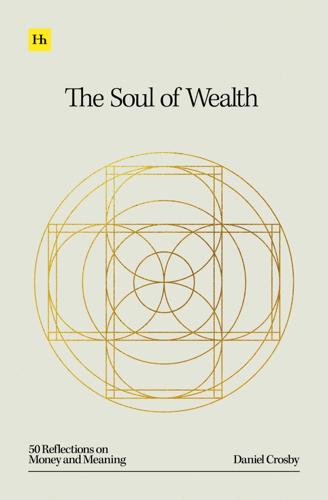
The Soul of Wealth
by
Daniel Crosby
Published 19 Sep 2024
Dillian asserts that, “A kid from Staten Island can get hired and within a few years, acquire enough sophistication to carry on an intelligent conversation with most world leaders.” Studying money is more than just examining dollars and cents. Let’s go back to the pandemic (actually, please, let’s not do that). But just recall all the financial hoopla that went on from 2020 through 2021. Finance and investing quickly turned mainstream. So-called meme stocks and cryptocurrencies were the talk of social media, and among socially distanced moms and dads at birthday parties. A survey from Ally Financial found that two-in-five Americans traded a meme stock back then, including 66% of millennials.194 Human psychology and the state of daily living drew otherwise uninterested people to learn about investing.
…
Moreover, brain scan data indicated a surge of activity in reward-related regions associated with happiness. The findings suggest that such changes in the brain promote a positive feedback loop, thereby encouraging individuals to take part in further acts of generosity.5 Thus, there is something in our brain that craves giving and rewards actions that stimulate it. During the worst of the Covid-19 pandemic, giving rose 6% as the crisis unfolded, a trend that surprised some researchers.6 It begs the question: Was our innate desire to give an emotional response to the collective need for upliftment during those trying times? At the very least, it’s a conjecture that might help restore your faith in humanity.
…
Even if you don’t have something physically bothering you due to financial woes, you might find that when an unexpected bill arrives, you don’t reach for your checkbook to take care of the issue, rather you grab a carton of ice cream as a coping mechanism. Worry is indeed a major issue in today’s culture—with worldwide levels of anxiety reaching record highs during and after the Covid-19 pandemic. Sixty percent of Americans report feeling anxious about their financial status, with younger generations more likely to feel worry, according to a 2023 Mind of Money survey by Capital One.181 So, whether you face a crippling condition or experience a bit of pecuniary panic, there’s often an interplay between health and wealth.
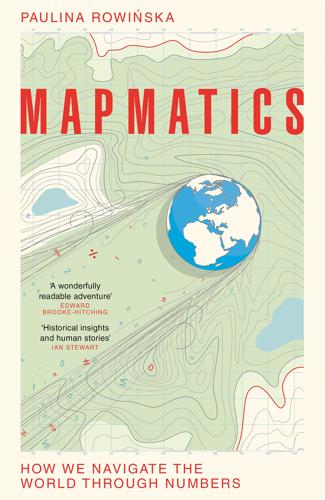
Mapmatics: How We Navigate the World Through Numbers
by
Paulina Rowinska
Published 5 Jun 2024
Beyond cholera Today, maps and mathematics are indispensable tools for fighting and preventing diseases, from local outbreaks to global pandemics. Scientists combine modern technologies from GPS to machine learning to gene sequencing with old-fashioned patient interviews to gather spatial information about the disease. In early 2020, many of us developed a daily habit of checking maps of COVID-19 cases, updated as the virus terrorized Wuhan, then other regions of China, Italy, and, finally, the whole world. Albeit unprecedented in scale, these weren’t the first disease mapping efforts in recent years. Before taking potentially life-saving decisions regarding vaccinations, quarantine and social distancing, authorities need to understand likely scenarios of an epidemic course under various circumstances.
…
P. ref1 Klondike gold rush, Canada ref1 knot problem ref1 Koch, Helge von ref1 Koch, John ref1 Koch, Tom ref1 Kochland ref1, ref2, ref3 Koelemeijer, Paula ref1, ref2 König, Dénes ref1 Königsberg bridges puzzle ref1, ref2, ref3, ref4, ref5, ref6, ref7, ref8, ref9, ref10 Konrad of Colmar ref1 Korean Air Lines Flight 007 ref1 Kremer, Geert de see Mercator, Gerardus Kühn, Heinrich ref1 Lambert, Johann Heinrich ref1 Lambeth Waterworks Company ref1, ref2, ref3 Lamont Geological Observatory, Columbia University, New York, USA ref1, ref2, ref3 Larcom, Shaun ref1 large low-velocity provinces (LLVPs) ref1 latitudes (parallels) ref1, ref2, ref3, ref4, ref5, ref6, ref7, ref8, ref9 Legible London ref1, ref2 Lehmann, Inge ref1, ref2 lidar ref1 light waves ref1, ref2 lines, measuring borders of Colorado ref1 circles ref1, ref2 and scale ref1, ref2 straight lines ref1 using logarithmic axes ref1 wiggly lines ref1, ref2, ref3, ref4; see also coastline paradox Literarum latinarum (Kremer) ref1 Livingstone, Ken ref1 logarithmic axes ref1 logarithms ref1, ref2 London, UK Great Stink of London (1858) ref1n Legible London ref1, ref2 London School of Hygiene and Tropical Medicine ref1 London Underground (Tube) ref1, ref2, ref3 nineteenth-century cholera outbreaks ref1, ref2, ref3 longitudes (meridians) ref1, ref2n, ref3, ref4, ref5, ref6, ref7, ref8, ref9 Lopez, Raymond ref1 lost persons/objects, finding ref1 loxodromes ref1 Lucasfilm ref1 Ma, Stephen ref1 McGhee, Eric ref1, ref2, ref3 Madison, James ref1 magnetic field, Earth’s ref1, ref2n Mandelbrojt, Szalom ref1 Mandelbrot, Benoit B. ref1, ref2, ref3, ref4, ref5, ref6 Manhattan metric ref1, ref2 mantle plumes ref1 mapmaking areas, preserving ref1, ref2 distances, preserving ref1 Gall–Peters projection ref1, ref2 impossibility of perfection ref1, ref2 Mercator projection see Mercator projection projections see projections shapes, preserving ref1, ref2 marine chronometer ref1 Markov chain Monte Carlo (MCMC) ref1 Markovich, Jeremy ref1 Mars, mapping interior of ref1 Maurepas, Jean-Frédéric Philippe Phélypeaux, Count of ref1 Meals on Wheels ref1, ref2 Measure of the Earth (Ferreiro) ref1 Mecca, direction of ref1, ref2 medical mapping COVID-19 pandemic ref1 H1N1 pandemic ref1 nineteenth-century cholera outbreaks (UK) ref1, ref2, ref3 SIR models ref1, ref2 yellow fever outbreak (1795) (USA) ref1 Menger, Karl ref1 Menger’s sponge ref1n ‘Mercator effect’ ref1, ref2n Mercator, Gerardus ref1, ref2, ref3, ref4, ref5, ref6 Mercator projection Cold War use of ref1 from a cylindrical projection ref1, ref2 distortions ref1, ref2, ref3, ref4, ref5 horizontal stretch ref1, ref2, ref3 modern-day versions ref1 popularity ref1, ref2, ref3 purpose ref1 vertical stretch ref1, ref2 and worldviews ref1, ref2 Wright’s interpretation ref1, ref2, ref3 Mercator, Rumold ref1 meridians see longitudes (meridians) metric maps ref1, ref2 metric spaces ref1, ref2 Metron company ref1, ref2 Mid-Atlantic Ridge ref1, ref2 Milwaukee school districts, Wisconsin, USA ref1, ref2 modulo ref1n Monarrez, Tomás ref1 Morison, Samuel Eliot ref1 Morris, Gouverneur ref1 Moser, May-Britt and Edvard ref1 Nadel, Lynn ref1 Napier, John ref1 NASA (National Aeronautics and Space Administration) ref1 National Association for the Advancement of Colored People (NAACP) ref1 National Geographic ref1, ref2 National Geographic Society ref1, ref2 NATO phonetic alphabet ref1, ref2 Nature ref1 Nature of Maps, The (Robinson and Petchenik) ref1 nautical miles ref1n Nautilus, EV ref1 nearest neighbour algorithm ref1, ref2 neuroscience ref1 New York City Commissioners’ Plan ref1 New Zealand 1929 earthquake ref1 Newton, Isaac ref1 Nicholson, Francis ref1 Nippon Foundation ref1 noise, computer ref1 North-centric view ref1, ref2 north, direction ref1n, ref2 North Korean missile threat ref1 North Pole ref1, ref2, ref3, ref4, ref5, ref6, ref7 Norway – UK Fisheries Case ref1 Nova et Aucta Orbis Terrae Descriptio ad Usum Navigantium Emendate Accommodata (Mercator) ref1 nuclear explosions ref1 Nunes, Pedro ref1 Ocean Exploration Trust (OET) ref1 ocean floor on-going discoveries ref1 importance of maps ref1 map resolution ref1 OET’s mapping expeditions ref1 plate tectonics and continental drift ref1, ref2 satellite mapping ref1 Seabed 2030 initiative ref1 sonar mapping ref1, ref2 soundings ref1 Tharp and Heezen’s maps ref1 volcanoes ref1 O’Keefe, John ref1, ref2 Oldham, Richard Dixon ref1 On-Road Integrated Optimization and Navigation (ORION) (UPS) ref1 On the Heavens (Aristotle) ref1 On the Measure of the Earth ( Eratosthenes) ref1 On the Mode of Communication of Cholera (Snow) ref1, ref2 ‘Orthogonal Map of the World’ (Peters) ref1 orthographic projections ref1 Osipovitch, Col.
…
A century later, an Irish mathematician, astronomer and physicist, Sir William Rowan Hamilton, considered a seemingly similar, but in fact very different problem of visiting every vertex exactly once. Finding such a path turned out to be much, much harder than tracing every edge exactly once, which has very practical implications. Packaged mathematical miracles When the COVID-19 pandemic struck in early 2020, many stores were closed and shopping in person wasn’t safe, so delivery services became my best friend and likely yours too. During the lockdown, nothing would cheer me up more than a new book arriving at my door. These days, we take deliveries for granted, but each of them is a mathematical miracle.
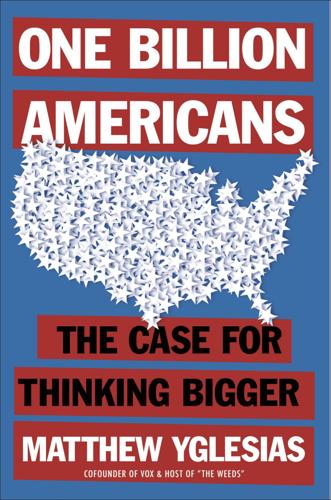
One Billion Americans: The Case for Thinking Bigger
by
Matthew Yglesias
Published 14 Sep 2020
The basic pattern of elites departing disease-ravaged cities for country strongholds is familiar from plague outbreaks in early modern Europe and cholera in the nineteenth century, and reflects the reality that throughout history there has been a tension between the economic opportunities presented by city living and the vulnerability to disease induced by crowding. That said, there is some reason to doubt the cogency of the link between density and disease vulnerability in the specific case of COVID-19. America’s second-densest city, San Francisco, wasn’t even close to being the second-hardest-hit city. Both San Francisco mayor London Breed and California governor Gavin Newsom were quick to issue social distancing orders in mid-March, while New York City mayor Bill de Blasio was slower to take equally robust action and New York governor Andrew Cuomo stepped in as the main leader of the response only once the situation was already out of control.
…
But for its trouble, California has by far the more dynamic economy—hosting four of the world’s ten most valuable companies, as well as much of America’s start-up scene and cultural exports. Natural resources just aren’t that big a deal in the modern economy. However, the threat of infectious disease is a constant reminder that society is built on a biological foundation. The specter of disease The COVID-19 pandemic that burst out of China in 2020 hit New York City extremely hard and extremely quickly. Many wealthy New Yorkers fled to their second homes in the suburbs or to vacation destinations throughout the East Coast. The basic pattern of elites departing disease-ravaged cities for country strongholds is familiar from plague outbreaks in early modern Europe and cholera in the nineteenth century, and reflects the reality that throughout history there has been a tension between the economic opportunities presented by city living and the vulnerability to disease induced by crowding.
…
Large families don’t generate more emissions because children are particularly resource intensive (quite the opposite, they are smaller than adults and don’t drive cars), it’s because they contain more people. You could just as easily reduce emissions by encouraging people to commit suicide. And even though the COVID-19 pandemic caused a drastic reduction in short-term greenhouse gas emissions by shutting down the economy and a longer-term change in the trend by killing people, nobody is glad it happened. If the risk were that one additional person would tip the whole world onto a path of inevitable extinction, that would be different.
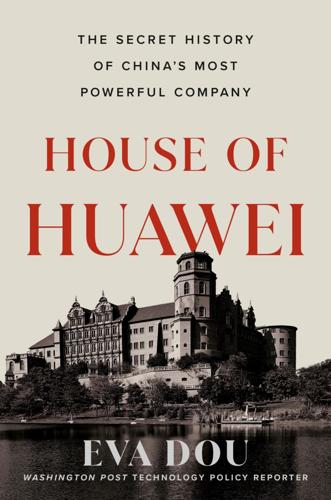
House of Huawei: The Secret History of China's Most Powerful Company
by
Eva Dou
Published 14 Jan 2025
For Christmas, Meng’s group booked out a restaurant for a fourteen-person dinner party in disregard of Vancouver’s social-distancing rules.[18] Images from Meng’s group photo shoot had also leaked, showing Meng and her friends standing in a tight cluster, none of them wearing masks. Meng’s lawyers tried to get her bail terms loosened at one point, arguing that the rotating security detail put her at risk of contracting COVID. Prosecutors pushed back, pointing out that Meng didn’t seem overly concerned about COVID, what with her group dinners, shopping sprees to high-end retailers, and hangouts with maskless friends.
…
Three days into Meng’s extradition hearing, a fifty-six-year-old man with a fever and dry cough arrived by ambulance to a Toronto hospital. The man had felt ill since traveling to Wuhan, the Chinese city where many of Huawei’s senior executives attended university, and which was about to become known as ground zero of the COVID-19 pandemic. As that first COVID patient was being confirmed in Canada, Wuhan’s eleven million residents had just received the shocking news that their city was being locked down. No one was allowed in or out except for emergency vehicles. No one knew what this mysterious disease was or how things would turn out.
…
As they approached Chinese airspace, Meng felt her vision blur with tears. She had changed on the plane into a crimson dress, and she emerged on the Shenzhen tarmac to flashing cameras.[2] Two people in hazmat suits, goggles, and latex gloves darted out to present her with red roses. China was still in the depths of the pandemic, with the world’s strictest COVID controls. Before she was whisked away for a three-week quarantine, Meng had a brief moment with the cameras. She bowed deeply to a crowd of supporters who stood at a safe distance, wearing masks and waving red flags. “I’ve finally returned to the motherland’s embrace,” Meng said, her voice catching.

The Undertow: Scenes From a Slow Civil War
by
Jeff Sharlet
Published 21 Mar 2023
“There’s a lot of drops,” Pastor Dave told me by phone after we met in Bossier City. By “drops” he meant clues. The pandemic was in full and terrible blossom, and tens of thousands of Americans had already died from a virus that Trump had attempted to laugh off. His rallies temporarily suspended, he’d stumbled on daily televised coronavirus briefings as a form of mass spectacle, a way to continue attacking the media and dismissing the experts and disseminating secret codes. The two-hour performances weren’t meant to inform or comfort or unite. They were Trump’s rallies for what would prove to be an all-too-brief era of social distancing. The president’s most devoted followers continued to parse his words, his gestures, even the color of his ties for hidden meaning.
…
The Church of the Insurrection, later that night Nisenan land Vessels, Church of Glad Tidings Double-vetted, I drove an hour north, through flat land and orange groves, to the Church of Glad Tidings in Yuba City. “Yuba-dooba-doo!” as Glad Tidings’ cherub-cheeked Pastor Dave Bryan called it, or sometimes “Foreversville.” From the beginning of the pandemic, Pastor Dave refused for his church any Covid precautions. Instead, “we advertised we will be open every night.” Every night for a month he led his flock in prayer. The state said “lockdown”; he said “revival.” The church never closed its doors. “No one else had the courage,” he said, and for that Glad Tidings graduated from a local profile to a national one.
…
“Coincidence,” explained Dave, “is just a spectacular thing, that God remains anonymous.” For instance: Covid-19. He told me Scripture teaches that what your enemies—here he meant China, which he thought had intentionally created the disease, and Dr. Fauci, who had tried to spread it—intend as evil against you, God will make good. Is that not the whole point of the risen Christ? The meaning of every martyr? But what about the dead who don’t rise? Not Jesus, not Ashli—all those already gone, killed by Covid? “This will blow your mind,” Dave said. Covid was real and the dead were many, but there was a “good part”: the godless churches, the ones with crosses instead of swords, had closed their doors.

The Rise and Fall of the Neoliberal Order: America and the World in the Free Market Era
by
Gary Gerstle
Published 14 Oct 2022
Sanders shared Warren’s antagonism to corporate power. If anything, his plans were more ambitious than hers, as he sought to make his social democratic vision a reality in American life.27 Pandemic The 2020 presidential campaign coincided with the onset of the Covid-19 pandemic, which lent new urgency to the issues that critics of neoliberalism had been raising. In political economic terms, the pandemic worked to intensify a development that the decline in the neoliberal order had already set in motion: namely, a conviction that government was the only institution with the wherewithal to address severe economic and social hardship.
…
The two countries signed the agreement in January 2020, with Trump hailing it as a major victory for his administration and for the nation. Across the first year of the agreement, however, multiple reports suggested that China was doing little to increase its American imports to stipulated goals. As was the case with so many Trump initiatives, there seemed to be little consistency or follow-through. And the outbreak of the Covid-19 pandemic at the very moment when the trade deal was signed upended global trade in ways wholly independent of US-China trade negotiations.12 Still, Trump’s constant bluster about the evils of free trade, his repeated threats to impose tariffs, and his hostility to the many countries seen by his administration as having gained a trade advantage over the United States pushed a neoliberal world to reassess long-standing beliefs and strategies.
…
Glenn, 47 Capital for the Twenty-First Century (Piketty), 254–55 capitalism American capitalism, 20, 31, 42–43, 139 in China, 10 communism and, 141, 147–48 crony capitalism, 201 curtailing destructive chaos of, 23 free market capitalism, 4–5, 99–100, 105, 108–9, 120–21, 133–34, 144–45, 173, 195–96, 204, 254–55 globalization of, 145–46 internationalist capitalist economy, 31 market capitalism, 195–96, 200 neoliberalism and, 4–12 Capitalism and Freedom (Friedman), 94–95 Capitol Hill violence (2021), 1, 288–89 capture thesis (political science), 159 Carnegie, Andrew, 169 Carter, Jimmy, 64–69, 121–22 Castle Rock Entertainment, 172 Catholic Americans, 133 Catholics, 27, 118–19 Cato Institute, 102–3, 109 Center for American Progress, 278–79 Centers for Disease Control (CDC), 280 Chamberlain, Neville, 55 Chauvin, Derek, 286 Chicago School of Economics, 90–91, 201 China, 10, 37, 271–72 Chinese Communist Party, 143, 145–46 Chinese democracy movement, 143 Chomsky, Noam, 254–55 Christie, Chris, 268 Chrysler Corporation, 62 Churchill, Winston, 36–37 Civil Aeronautics Board (CAB), 67 civil rights, 49, 50–51, 117, 124–25, 138 Civil Rights Act (1964), 53–54, 95, 125 Civil War, 79–80 classical liberalism, 5–9, 25–26, 93 Clinton, Bill minority homeowners under, 212, 213–14 neoliberalism and, 1, 2–4, 11, 137–38 New Deal order and, 152–64 New Left and, 14–15 political dissent, 179–88 restructuring of political economy, 4–5 Telecommunications Act, 164, 165–73, 181 Wall Street reform and, 173–78 Clinton, Hillary Rodham Clinton, Bill and, 153, 154–55, 186–87 election loss, 265–66 neoliberalism and, 260–65 Obama, Barack and, 222, 223–24 Sanders, Bernie and, 254–55, 259–62 Trump, Donald and, 250 CNN, 128, 172 Coalition Provisional Authority (CPA), 198 Cobb, Jelani, 263–64 Cohen, Michael, 245–46 Cohn, Gary, 270–71, 276 Cold War era, 10, 11–12, 29, 35–47, 48–54, 129–32 collective bargaining, 27–28, 81–82, 85 collectivism, 23, 73–74, 82–84, 85, 86, 100–1 Colloque Lippmann, 73–74, 86–87, 135–36 Comey, James, 265–66 Coming Apart (Murray), 231–34 Commodity Futures Modernization Act (2000), 213 Commonwealth of Independent States (CIS), 141–42 Communications Act (1934), 26, 125–26, 165, 170 Communications Decency Act, 169–70 communism capitalism and, 141, 147–48 cybernetic revolution and, 161–63 economic stagnation under, 69 impact on neoliberalism, 10–12, 20–21 labor movement militancy, 23 New Deal order and, 10–12, 27–35 Republican Party and, 38–47 World War II impact on, 33–35 Community Action Program, 159 conformism, 95–96 conservatism, 4–12, 28, 38 The Constitution of Liberty (Hayek), 97–98 consumer spending crisis, 214–15 Coors, Joseph, Jr., 108–9, 114 corporate welfare, 180–81 cosmopolitanism, 5, 8–9, 13, 182–83, 186, 208, 209 Council of Economic Advisers, 66, 171, 224, 284 Court, Warren, 118–19 Covid-19 pandemic, 272, 279–81, 282–83 crime rates, 1980s, 130–31 Croly, Herbert, 80–82 crony capitalism, 201 Cuban Missile Crisis, 219–20 culture wars, 4–5, 14, 15, 186–88 cybernetic revolution, 161–63 Daily Kos (blog), 278–79 Dart, Justin, 110–12 Debs, Eugene, 82–83 Debt: The First 5,000 Years (Graeber), 252–53 Defense Production Act (1950), 280 deindustrialization, 63–64 democracy American democracy, 1, 7, 282–83, 287–88, 289 Chinese democracy movement, 143 communism and, 187–88 Iraq war and, 195–96, 197–98, 203–4 liberal democracy, 147–48, 277 media corporations and, 165 neoliberalism impact on, 7, 91–92, 96–97 New Leftists impact on, 66 popular democracy (Ralph Nader), 66, 143 proletarian democracy, 33 social democracy, 6–7, 34–35 Democratic Leadership Council (DLC), 137–38, 180–81 Democratic National Committee, 64–65 Democratic Party. see also specific Democratic presidents acquiescence/resistance to neoliberalism, 135–40 African Americans, shift to, 48–49 civil rights and, 117 electoral constituencies and, 21–22 Keynesian economic ideas, 22–23 neoliberal order and, 2–3 New Deal order and, 20–27, 118, 152–64 support from religious groups, 27 white supremacy and, 49 Deng Xiaoping, 143, 145–46, 187–88 deregulation, 5, 68, 156–57, 228, 276 Disloyal (Cohen), 245–46 Disney Corporation, 172 Dixiecrats, 117–18 Dole, Robert, 209 Dow Jones Industrial Average, 60–61, 220–21 Duggan, Lisa, 102 Dukakis, Michael, 137 Dyson, Esther, 160–61, 162–63 economic liberalism, 76–78 economic recession, 48, 107–8 Economic Recovery Tax Act (1981), 122 Efron, Edith, 111–12 Eisenhower, Dwight D.
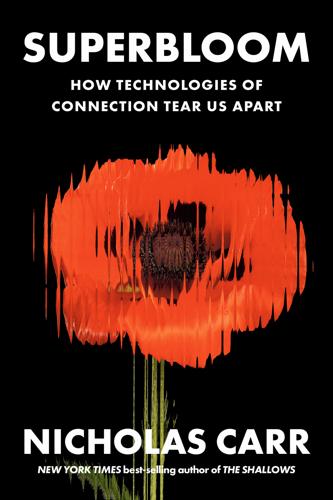
Superbloom: How Technologies of Connection Tear Us Apart
by
Nicholas Carr
Published 28 Jan 2025
When, years ago, Mark Zuckerberg needed a code name for Facebook’s automated advertising system, he chose Pandemic.2 But with the arrival of the coronavirus, the contagion metaphor took an unexpected turn. When a real pathogen is on the loose, we discovered, social media turns into an antiviral. It allows people to socialize without physical proximity, to gather together while remaining apart. If there was anything fortunate about Covid’s arrival, it was the timing. The disease appeared after social media had already trained us in the art of social distancing. Our phones and laptops proved our most valuable pieces of personal protective equipment. The pandemic, and the lockdowns it triggered, was less an inflection point than a moment of revelation.
…
See also relationships; social engagement consciousness, illusion of, 192 conspiracy theories, 16, 141, 200 consumer choice, expansion of, 61 contagion, 155–58, 176–79 content, of media, 50–51 advertisements and, 96 artificial intelligence and, 180–205 assessment of, 128 content collapse, 59–63, 91, 98–99, 118 controversies over, 69–74 distribution of, 128 filtering of, 128 generation of, 141, 180–205, 225 moderation of, 69–74, 76, 118, public role in spread of ugly, 72 self collapsing into, 168–69 users as producers of, 141 conversation, textspeak and, 98, 99–100 Cooley, Charles Horton, 7–15, 17, 19, 22, 32, 45–47, 67, 101, 136–37, 149, 158–60, 168, 190, 214, 226 Cooley, Thomas McIntyre, 32–33, 34, 35 Covid-19 pandemic, 155–79 Cox, James, 38 Creel, George, 130 crowding, psychological effects of, 116–17 Crystal, David, 94 cults of personality, 145–46 “Daisy” advertisement, 67, 68 DALL-E, 197, 202 data-collection regimes, 224 data filtering, 202–5 Davis, Andrew Jackson, 182 Dean, Howard, 123 decision making, 134, 135.
…
See meaning Sermo, 165 Shannon, Claude, 54–57, 60, 64, 68, 75, 78, 91, 138, 139, 184, 185, 189 Shaw, George Bernard, 129 signal processing, semantic processing and, 189–90 Simmel, Georg, 115 Simon, Herbert, 134–35 simulations, 230–31 Siri, 192 Slack, 99, 165 Slashdot, 126, 127 Slotten, Hugh, 36 smartphones, 74, 93, 95–97, 170, 214, 220–21 Smith, Dorothy, 167 Smith, Jaci Marie, 1–2 SMS text messages, 93 Snapchat, 108, 165 Snyder, Charles, 100 social boundaries, erasure of, 109 “social buttons,” 95 social change, 8–10, 13–14, 24, 116 social contexts, blurring of, 163–64 social engagement, 171–75, 192, 216 social media, 12–13, 17, 63–74, 93, 95, 101, 127, 139–41, 162, 170. See also specific platforms advertisements and, 96 AI and, 190–91 as “anti-empathy machine,” 110–11 benefits of, 116 coining of the term, 8 contagion and, 155–58 Covid-19 pandemic and, 155–79 division sown by, 142–46 empathy and, 110–11 engagement and, 142–46, 218; See also social engagement envy and, 108–10 erasure of social boundaries and, 109 experience of girls with, 174 manipulation of information and, 78 maturation of, 141–42 oversharing and, 108 polarization and, 142–46 as priming mechanism, 157 propaganda feedback loops and, 145 psychological harm of, 172–73 reform of, 224–25 regulation of, 223–24, 225–28 repetition and, 136–42 roles of users in, 141–42 sabotage of, 225–28 similarities to urban environment, 115–17 social change and, 116 social dynamics changed by, 116 “sociopathy” of, 148 textspeak and, 96, 99 as vector, 177–78 social networks, 17–18, 123.

The Bookshop: A History of the American Bookstore
by
Evan Friss
Published 5 Aug 2024
When bookstores began reopening, much of the in-person charm was lost in a world of social distancing. At the same time that Amazon embraced brick-and-mortar retail, the indies embraced online sales. Distinctions blurred. Compared with 2019, 2020 bookstore sales dropped 28.3 percent, even as overall book sales climbed. In 2021, a whopping 825.7 million copies were sold. Reading and book buying, both thought to be dead or at least dying, were on the rise. Publishers and authors had never been so thankful for Amazon. Roughly 70 percent of Americans reported buying books from the online Goliath. Over the first six months of the pandemic, one indie shuttered each week.
…
The downtown is basically just a thruway, with trucks thundering past a church, a bank, a gas station, a post office, and a handful of tired-looking homes. The new green building with a black metal roof and string-lit porch looks out of place. It’s home to WordPlay, an independent bookstore that opened in 2020, during the COVID-19 pandemic. Marlene and Tom England, the couple who own it, already owned one bookstore in Frederick, Maryland, called the Curious Iguana. They (mostly) knew what they were getting into. Indie bookstores tend to set up shop in urban areas with affluent residents and high foot traffic. Wardensville this is not.
…
In her inaugural presidential letter, Hill captured the dueling truths: “Although the renaissance of indie bookselling in recent years has been reason to celebrate, bookstores are still struggling and booksellers continue to lose sleep at night, counting the long list of threats—like rising costs, an election year, a pandemic, a looming recession, and Amazon.com—like sheep.” Hill’s letter arrived in March of 2020, just after the news broke: COVID-19 was here. * * * — Within weeks, bookstores around the country closed. Those with no e-commerce platform had no way to generate sales. Were bookstores essential businesses that state governments should allow to reopen?

How Boards Work: And How They Can Work Better in a Chaotic World
by
Dambisa Moyo
Published 3 May 2021
The corporate response to the 2020 coronavirus outbreak showed some companies’ willingness to play a central role in finding solutions to a global problem and demonstrated how corporations can set aside commercial priorities in pursuit of greater social goals. As governments, for the most part, were slow to act to prevent the spread of the disease, companies took it upon themselves to mandate social distancing. Many professional services firms required staff to work from home before any such restrictions were imposed by the government. Outside an immediate crisis such as the pandemic, societal matters are becoming woven into common commercial practice through employment contracts and recruitment policies. Additionally, corporations know that their actions could affect their insurance policies and credit ratings, as well as their standing with shareholders, as often represented by proxy institutions such as Glass Lewis and ISS.
…
These include challenges to the efficacy of multilateral institutions such as the International Monetary Fund (IMF) and World Trade Organization (WTO), which have governed the global system and brought stability over the past fifty years. Rising trade protectionism and mounting regulatory requirements are affecting all manner of industries and sectors, including banking, food, and technology. And of course, the 2020 COVID-19 pandemic highlighted how extreme global events could lead to international border closings and trade disruptions. These shifts are leading to a fall in global trade volumes, declining cross-border capital flows, and dwindling immigration. Boards would be wise to look for members who have a strong knowledge of worldwide economic trends and geopolitical dynamics and a network of political connections around the world.
…
China is also seeking to gain a greater global foothold in trade, capital flows, and investments through the multi-continent Belt and Road Initiative, which includes infrastructure investment across sixty-eight countries in Asia, Africa, Europe, and the Middle East to develop improved trade routes by land and sea. As a result, a growing proportion of the global economy will be guided by China. The 2020 global COVID-19 pandemic initially showcased the power authoritarian governments have over governments that rest on democratic freedom. An authoritarian government could quickly apply the levers it had—such as the ability to restrict freedom of movement and quarantine its population by decree—to control the spread of the disease, while governments in the United States and Europe hesitated before imposing similar restrictions in the hope of preserving individual freedoms, a bedrock principle of democratic capitalism.
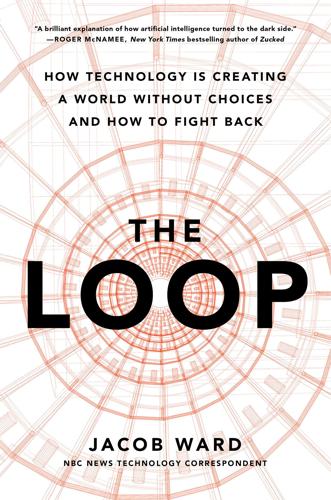
The Loop: How Technology Is Creating a World Without Choices and How to Fight Back
by
Jacob Ward
Published 25 Jan 2022
And so the week of April 20, an FAA-licensed drone pilot began flying passes above citizens playing soccer in the park, standing in line outside the local Trader Joe’s, and walking the streets of downtown Westport, not only to determine whether they were standing too close (the drone carried loudspeakers so it could tell people to leave a closed park or to maintain better social distance), but also to potentially identify symptoms of COVID-19. Chief Koskinas explained that his department has adopted radical new technology in the past. Sandy Hook is a half-hour drive north of Westport, and the 2012 murder of twenty children there transformed his department. Before then, he told me, “we were preparing and training differently.
…
After five weeks of lockdown at the beginning of the pandemic, when it first became clear that this would be a deep and vast economic crisis, with more than 26 million Americans filing for unemployment by late April, the national and international mood turned toward a desire for some way to monitor the spread of the virus while somehow getting back to public life. The president of the Veneto region in Italy, where the first known Italians had died of the virus, talked about creating some sort of work-license system for people who had tested positive for COVID antibodies. Public health officials in the United Kingdom and elsewhere began openly discussing the possibility of a “passport” given to those with the necessary antibody test results or a vaccination card that would allow them to work and travel again.
…
Use of that data then deepens the inequity.”6 The tendency to broadly apply the rulings of artificial intelligence when human systems are overwhelmed by human need damages independent judgment everywhere—not just in the courts. And it’s when we strap AI and high expectations onto a broken system that things really go wrong. By January 2021, ten months into the COVID-19 pandemic, the economic fallout in the United States was severe and deepening. The service industry was decimated as restaurants, hair salons, and gyms faltered and closed. The head of the National Association of Consumer Bankruptcy Attorneys told me his members were preparing for an avalanche of lost homes and cars as American entrepreneurs everywhere threw whatever they could at saving their businesses.

Internet for the People: The Fight for Our Digital Future
by
Ben Tarnoff
Published 13 Jun 2022
In 2015, when the Pew Research Center surveyed Americans who had used smartphones to apply for jobs—perhaps the most essential online activity of all—they struggled with a number of tasks, from navigating websites not optimized for mobile to entering large amounts of text and submitting required files. Smartphones simply make poor substitutes for home broadband; those who are compelled to rely on them are at a significant disadvantage. The COVID-19 crisis greatly magnified those disadvantages. As lockdowns and social distancing pushed more of people’s lives online, a decent home internet connection became all the more essential. In response, the many millions of Americans without one flocked to the parking lots of schools, libraries, and other institutions that continued to offer free Wi-Fi.
…
These homes not only receive internet for zero or low cost, depending on residents’ ability to pay, they also get access to a private network—an intranet—that lets them communicate with one another and find information on local resources like food pantries and translation services. During the COVID-19 pandemic, as connectivity became even more crucial, EII organizers also helped create several Wi-Fi hotspots in the three neighborhoods. “If the community has ownership of the infrastructure, then they’re more likely to participate in its maintenance, evolution, and innovation,” Diana Nucera, founder and former director of DCTP, told YES!
…
This loss of dynamism wasn’t limited to the US; the story in Western Europe and Japan was much the same. Each subsequent decade has marked further decline: these economies performed more poorly in the 1980s than in the 1970s, and more poorly in the 1990s than in the 1980s. The opening decades of the twenty-first century, with the Great Recession and the economic fallout of the COVID-19 pandemic, have been especially dismal. But stagnation, as the economist Thomas Piketty has shown, isn’t bad for everyone. As the US economy has slowed down, it has also become more unequal: since the 1970s, the richest .01 percent of Americans have more than quintupled their share of the country’s total wealth.

The Impossible City: A Hong Kong Memoir
by
Karen Cheung
Published 15 Feb 2022
There is only one thing to do at this stage, if we don’t want to be rounded up and made to kneel on the ground as they take down our personal details. We pretend that we just happen to be in the area. We go into a Southeast Asian restaurant and order beef rendang and satays, sitting in silence with other ashen-faced families as, outside the glass windows, the police run past every few minutes. When the pandemic hits, the government imposes social distancing rules that further limit public gatherings. You can be ticketed for standing in a group, even if you aren’t explicitly protesting. In certain districts that are regular protest hot spots, police deployment is so heavy it is impossible to walk anywhere without being stopped, and areas are cordoned off in advance.
…
Feng shui books fly off the shelf. A fortune-teller-influencer’s m-shaped forehead and ponytail is ubiquitous at this time of the year, smiling grimly at me on subway ads. A lion dances through my office building to offer luck, and we are given lettuce scraps to stuff into our red packets. This is just before the Covid-19 pandemic hits, although we are already wearing masks. No one here has forgotten the devastation of SARS. I’ve been avoiding new year celebrations since Gran died. Everywhere in the city, I see traces of this holiday that is meant to symbolize family harmony. Our family has been broken ever since we lost Gran.
…
Joanna Tse Yuen Man, a woman we would later call “Hong Kong’s daughter.” Her husband, also a doctor, passed away from cancer before SARS began, and Tse volunteered to serve in the SARS ward. She died in May 2003, only thirty-five. SARS was a blur, I’ll say to a friend over a lunch of French toast in 2019, after the first wave of the Covid-19 pandemic has been temporarily contained in Hong Kong. If I had been older back then, like I am now, I suppose it would have been a lot scarier. My friend stabs the butter-drenched bread. It was different for me, they say. My parents worked in the hospital, so every day was a lottery—whether they’d come home safe or sick.

Laziness Does Not Exist
by
Devon Price
Published 5 Jan 2021
This swift, expansive response rose up in a matter of days and took effect long before our state and local government started requiring us to isolate. Like climate change, COVID-19 began as a mostly abstract fear. Like climate change, the virus was terrifying to think about, and we knew serious damage was inevitable. The news presented us with dozens of apocalyptic-seeming projections of how the COVID-19 disaster might play out, just as they do with climate change. Yet individual people rapidly started making responsible, altruistic choices to address the pandemic, despite having spent years doing comparatively little to address climate change. Why? I think the difference is that with the coronavirus, people felt empowered to make a meaningful choice.
…
Eventually we stopped the e-mail thread, because it was getting a bit heated. I walked away from the conversation certain I was right. Then COVID-19 hit the United States. I was astonished by how rapidly and selflessly the people around me responded. Long before any of them were legally required to, my friends and neighbors started isolating themselves. Local theaters and bars canceled performances in order to reduce crowding. Restaurants began offering free food delivery to elderly people and the newly unemployed. People placed loving but firm pressure on those who refused to socially distance. This swift, expansive response rose up in a matter of days and took effect long before our state and local government started requiring us to isolate.
…
The news coverage of worst-case scenarios, such as how brutally the virus hit Italy, filled people with terror, but the response of countries like South Korea and Taiwan provided crucial, motivating counterexamples. In countries where people took the pandemic seriously, thousands of lives were spared. We weren’t just being fed messages of doom, we were also given hope. Though each of us was terrified by the onslaught of bad news about COVID-19, we also knew where to look for advice about how to respond. The steps we needed to take were clear and feasible, and we knew that everyone else was also taking them. Stay inside. Wear a mask. Deliver groceries to elderly people around you.
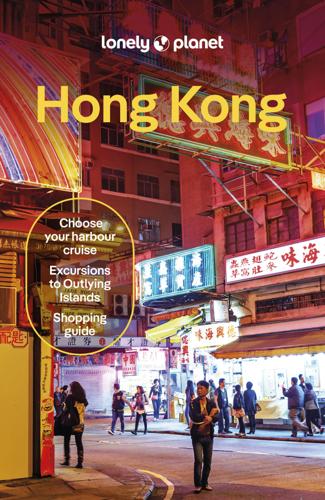
Lonely Planet Hong Kong
by
Lonely Planet
Dancing in the Streets It’s perfectly legal to booze in public in Hong Kong, and considering a beer from 7-Eleven costs a fraction of the price charged in a bar, many do. Throw Covid and social distancing into the mix, when al-fresco fun was the only option, and you’ve got Hong Kong’s latest trend. On summer nights, steep Peel Street in Central morphs into an impromptu, open-air beer bar, fuelled by the adjacent bottle shops. Coffee, Meet Cocktails No, not an espresso martini, but another trend in Hong Kong proliferated by Covid: neighbourhood spots that are coffee hangouts during the day and transform into cocktail bars after dark. A way to maximise earning potential, venues like Fineprint, Cupping Room and Bound pioneered this jack-of-all-trades approach, marrying the connoisseurship of coffee and cocktails together into a single urbane package.
…
Foreign Correspondents’ Club | AQUATARKUS/SHUTTERSTOCK © A CITY SUBDUED Following mass demonstrations, shifting allegiances and the effects of the pandemic, Hong Kong is grappling for a new identity, – amid considerable unease. By Mark Jones AFTER A SPELL AWAY, I recently returned to Hong Kong after four years. In the interim, the city had seen mass peaceful demonstrations that successfully changed an unpopular law. They were followed by smaller and more violent protests that led not only to that law being imposed, but a far more draconian one, the National Security Law being implemented. Oh, and COVID-19 happened. First lockdown, then crackdown. What did I make of the city?
…
In the 1840s, pubs like The British Queen served beer and rum to hard-drinking seamen. Fast forward to the 1950s and Wan Chai was where legions of American GIs let off steam during the Korean War, and later the Vietnam War, at neon-lit hostess bars. In recent decades, corporate expense accounts fuelled the rise of ever-swankier bars and clubs. Covid, the protests and subsequent expat exodus have hit hedonism hard, however, and at the time of research the bass-thumping bars of Lan Kwai Fong felt comparatively lifeless. That said, Hong Kong’s cocktail scene is bubbling with vitality as drinkers – especially those from mainland China – tap up social media for the latest wildly creative libations, whether that’s umami-rich savoury cocktails or locavore creations that champion Chinese spirits and ingredients.

Uprooting: From the Caribbean to the Countryside - Finding Home in an English Country Garden
by
Marchelle Farrell
Published 2 Aug 2023
We will not be visiting their beautiful garden in Trinidad any time soon, and the grief of that haunts me. The UK is somewhat unevenly opening up, with a drive for the reopening of shops and restaurants while locally enforced lockdowns remain an uneasy reminder that the pandemic is not over. However, Trinidad and Tobago remains tightly shut against the virus. The country has virtually eliminated Covid and avoided community transmission. I read a small article in a specialist journal about how the Trinidad and Tobago government’s response has been ranked number one in the world according to WHO criteria. But while New Zealand is lauded in hundreds of newspaper articles, Trinidad’s similarly incredible efforts to keep its population safe go darkly unremarked.
…
The heavy quiet enfolds me, and my shoulders drop under the weighty hug of reprieve. I sigh into the clear balm of this belated certainty. Stay at home. Along with millions of other British people, we are locked into our houses, the long overdue, utterly shambolic government response to the soaring crisis of lives lost to this new virus, this Covid-19. Lockdown comes as a long exhalation of relief – at least for those of us for whom the idea of home is a sanctuary. For us lucky ones, it is clear what to do now. The anxiety of carrying on as normal, the fear of every interaction potentially being a chain reaction of death, has been wiped clean in one direct mandate at last.
…
I find myself crying into the undergrowth of the garden a lot these days. I cry for all the things that I have lost – certainty, security, safety. I cry out of frustration with the world. Oli has been returning from the hospital distraught by the government’s edict to discharge patients to unprotected care homes without testing for Covid-19, knowing that what will inevitably happen is akin to mass murder, but helpless to stop it. I hold him at the end of his shifts and feel his spirit buckle under the weight of moral injury he is having to endure. My stomach churns as I see an unnatural hierarchy of the worth of human life being imposed, just as it was in the colonies under slavery; the justification of the inhumane sacrifice of one type of body over another.
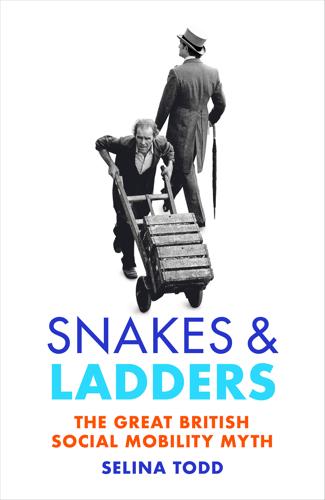
Snakes and Ladders: The Great British Social Mobility Myth
by
Selina Todd
Published 11 Feb 2021
Manual workers and domestic servants were at the bottom, despite the fact that British industry and most middle-class households depended utterly on their labour.2 And hugely vital but unpaid tasks, like mothering, were ignored. This classification of people’s work – updated but not much changed over the past century – continues to shape policymakers’ understandings of valuable and less-valuable work. The Covid-19 pandemic has exposed just how flawed this hierarchy is. Cleaners, carers, shop workers and delivery drivers have played vital roles in keeping society going. The pandemic has made clear to many what these workers already knew: that all these jobs require skill. Cleaning – to take just one example – requires attention to detail, stamina, speed and care. If cleaners don’t do a good job, the consequences for public health can be disastrous.
…
After the First World War, it suited many employers to employ a large number of female clerks on tasks considered skilled twenty years earlier, but increasingly defined as routine, and therefore paid less. By contrast, after the Second World War, Labour’s establishment of a comprehensive welfare state demanded thousands more teachers and health workers. The war – like the Covid-19 pandemic of the twenty-first century – demonstrated that nurses, social workers, ambulance drivers and home helps were vital to society. In 1945, voters, and the Labour government they elected, took seriously the need to rebuild Britain. They recognised that only the state could undertake such an enormous task, and that prioritising education, healthcare, housing and work, was the best response to the upheaval and destruction caused by the war.
…
Many wanted to make a useful contribution to society; some aspired to shape their country’s future. Climbing a few rungs up the ladder rarely delivered these dreams. We need to create a future that will, because we require imaginative thinking, big ambitions and hope to tackle the pressing problems of the twenty-first century, including climate change, pandemics like COVID-19, automation and an ageing population. The labour movement pioneers of the early twentieth century and the leftists of the 1970s remind us that an unequal hierarchy of wealth and power is only one model for organising society. They envisioned egalitarian alternatives that are worth pursuing.
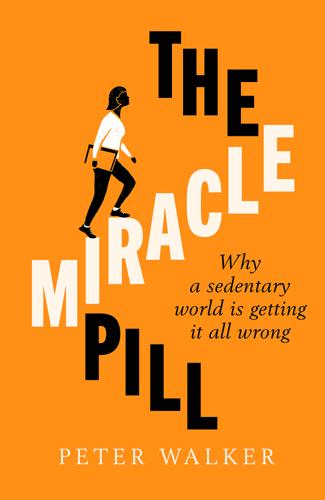
The Miracle Pill
by
Peter Walker
Published 21 Jan 2021
Some of the obligations cover social care for vulnerable children, but the great majority of the cost is for older people, and it is hard to overstate how much of a financial challenge this has already become. I can remember speaking to the leader of one English council, who told me that in just five years, the costs of social care in his borough had risen by 25 per cent. Another English council, in 2018, had to formally declare it could not meet its obligations.21 The impact of the Covid-19 pandemic on people living in care homes illustrated the strains felt on the sector, with the virus often spread between homes by agency staff working long hours in multiple locations. Councils and care providers are still awaiting a long-promised UK government plan for the sector. The situation is the same in many other countries.
…
Calculating an overall economic cost is hugely difficult, but one study by the London-based World Obesity Forum, which gathers scientific expertise on the subject, estimated that by 2025 the total global bill connected to obesity would be around £950 billion.20 The association of excess weight with generally poorer health outcomes has been highlighted anew by the coronavirus pandemic. To reiterate, this book is being written during the period of its peak in the UK, and many of the public health lessons are only emerging. But one repeated feature of studies both in China and Europe has been the greater probability of obese patients to require hospital treatment for the Covid-19 virus, and also to die. The energy balance How did the world get to this point? The answer in its broadest terms was expressed with great eloquence more than sixty years ago by one of the first experts to warn about the then-nascent obesity crisis.
…
He is critical of the English school curriculum’s apparent lack of interest in physical development, saying that even in kindergarten settings it can be ‘quite narrow’ and insufficiently play-based. This, he argues, has to change: ‘It’s adults that stop children from moving, and what we’re trying to do is unlock their ability to be able to move, and reset childhood to a certain degree. If these weeks with COVID-19 have taught us anything, it’s that movement is probably more important now than it ever has been. You can have an education system that, of course, educates children to be able to pursue the careers and the life that they want, but they also need the fundamentals of wellbeing in order to be able to achieve that.
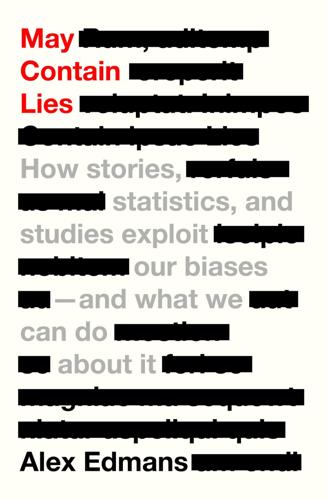
May Contain Lies: How Stories, Statistics, and Studies Exploit Our Biases—And What We Can Do About It
by
Alex Edmans
Published 13 May 2024
Some worried that mass protests might increase the spread of COVID-19, but a study claimed that ‘cities which had protests saw an increase in social distancing’.8 It was widely covered by the media, because their readers wanted this result to be true. Yet the researchers didn’t measure social distancing but the amount of time spent at home (captured by mobile-phone location). Social distancing depends on your distance from other people, not your home. You might leave the house for only two hours, but if it’s to participate in a mass rally, that’s not social distancing. This misrepresentation is again unnecessary.
…
Later on in the chapter, he writes, ‘there is an easy way to test this theory’, where the ‘theory’ refers to the hypothesis that you needed to be born in 1954 or 1955 to be a successful computer entrepreneur as you’d have accumulated 10,000 hours of practice by the start of the IT revolution. 4 Edmans, Alex (2021): ‘What stakeholder capitalism can learn from Jensen and Meckling’, ProMarket, 9 May 2021. 5 Milewski, Matthew D. et al. (2014): ‘Chronic lack of sleep is associated with increased sports injuries in adolescent athletes’, Journal of Pediatric Orthopaedics 34, 129–33. 6 Two out of the ninety results were significant at the 10% level, but the standard threshold is 5%. 7 Minerva Analytics (2021): ‘Boardroom diversity improves financial performance’, 23 July 2021. 8 Dave, Dhaval M. et al. (2020): ‘Black Lives Matter protests, social distancing, and COVID-19’, IZA Institute of Labor Economics, Discussion Paper 13388. 9 Thomas, Chloe et al. (2022): ‘The health, cost and equity impacts of restrictions on the advertisement of high fat, salt and sugar products across the Transport for London network: a Health economic modelling study’, International Journal of Behavioral Nutrition and Physical Activity 19, 93. 10 Snowdon, Christopher (2022).
…
The third reason an input can be endogenous is if it’s the outcome of another process : certain factors cause companies, cities and countries to be the way they are. In 2020, as the coronavirus crisis unfolded, a study claimed that greater air pollution was associated with more COVID cases and deaths, with causal statements such as ‘poor air quality increases the lethality of COVID-19’.7 Newspaper headlines broke out, such as ‘“Compelling” evidence air pollution worsens coronavirus – study’ with the strapline ‘Exclusive: best analysis to date indicates significant increases in infections, hospital admissions and deaths.’8 Cycling is my main form of transport but often unpleasant in central London, so environmentalists like me wanted to believe this result and use it to lobby for anti-pollution action – yet there’s a major flaw.
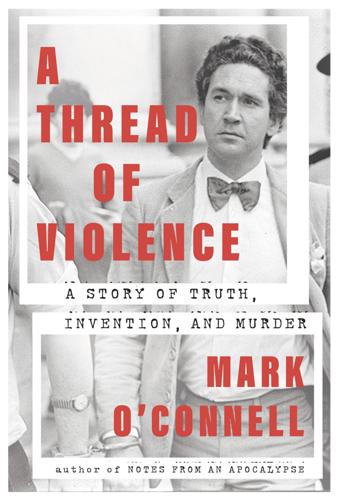
A Thread of Violence: A Story of Truth, Invention, and Murder
by
Mark O'Connell
Published 27 Jun 2023
Perhaps this truth would take the form of the document itself? I could not help but hope, against what I knew to be my better judgment, that some final illumination was at hand. * * * « The following day, the government announced the lifting of almost all Covid restrictions. It had been far too long in coming, and yet it felt abrupt, and somehow unexpected. There was a sense that the pandemic was, if not at an end, then no longer the framing device of reality itself—that it had been relegated, at last, to a subplot. Already there were more people on the streets, more movement, more life. The day was bright and clear and cold.
…
Although she was much too far away for me to get any sense of what the pages were, I immediately succumbed to a preemptive despair, concluding that this woman was likely a relative, or perhaps an old friend, of Macarthur’s, and that she was going through his papers because he had recently died. How else to explain the blue gloves? In fact, the gloves suggested that he had died of Covid-19. Yes, this woman was a relative of some sort, perhaps a cousin, who had come to look through his personal effects, and sort out his affairs, such as they were. He must have died that very day, in fact, because it would certainly have already been a major news story if he’d died any earlier. This was just my luck. Precisely the thing I most feared had now come to pass. Macarthur had died of Covid before I’d had a chance to speak with him; he was already en route to hell, and he was taking his story with him.
…
She wasn’t sure exactly what had happened, but she thought that some of the students may have become aware who he was, and someone had had a word with him. Eventually, he stopped dropping by. * * * « Scrolling through my Twitter feed one afternoon, I encountered a link to an article about Macarthur in one of the daily tabloids. “MASKING A MURDERER,” blared the headline. “Double killer Malcolm Macarthur backs Covid lockdown restrictions—labelling them ‘necessary precaution.’ ” It featured a photograph of a masked Macarthur, striding along a city center street in a beige overcoat, and leveling a wary, sidelong gaze in the direction of the camera. The lapels of the overcoat were of such startling width that it seemed likely he had owned it before going to prison.
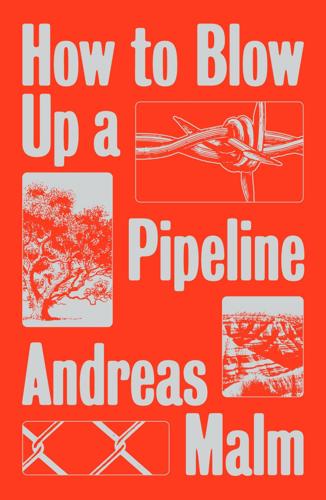
How to Blow Up a Pipeline
by
Andreas Malm
Published 4 Jan 2021
The tactical choices this book ponders will then reappear. I should like to believe that the arguments put forth here have a decent chance of surviving this pandemic, insofar as the movement rebounds. The need for militancy is unlikely to be diminished. It is thus my hope that the discussion in the following pages will be of some value for the movement in its post-corona phase – or even in a phase contemporaneous with COVID-19 or some other future pandemic. Sabotage, after all, is not incompatible with social distancing. Berlin, late March 2020 1 Learning from Past Struggles On the last day of the negotiations, we geared up for our most daring action yet.
…
HOW TO BLOW UP A PIPELINE HOW TO BLOW UP A PIPELINE Learning to Fight in a World on Fire Andreas Malm First published by Verso 2021 © Andreas Malm 2021 All rights reserved The moral rights of the author have been asserted 1 3 5 7 9 10 8 6 4 2 Verso UK: 6 Meard Street, London W1F 0EG US: 20 Jay Street, Suite 1010, Brooklyn, NY 11201 versobooks.com Verso is the imprint of New Left Books ISBN-13: 978-1-83976-025-9 ISBN-13: 978-1-83976-027-3 (UK EBK) ISBN-13: 978-1-83976-026-6 (US EBK) British Library Cataloguing in Publication Data A catalogue record for this book is available from the British Library Library of Congress Cataloging-in-Publication Data A catalog record for this book is available from the Library of Congress Library of Congress Control Number: 2020936555 Typeset in Adobe Garamond by Hewer Text UK Ltd, Edinburgh Printed and bound by CPI Group (UK) Ltd, Croydon CR0 4YY Contents Preface 1.Learning from Past Struggles 2.Breaking the Spell 3.Fighting Despair Notes PREFACE No More Excuses for Passivity The manuscript for this book was completed before the coronavirus known as COVID-19 struck. As I write these words, the pandemic is killing some 2,000 individuals worldwide per day. It also has political victims, one of the first being the climate movement, whose high-flying popular mobilisations were punctured in an instant by the outbreak. The climate strikes that swept the globe in 2019 have been put on hold.
…
Taboos against interfering with private property have been broken. If a pandemic can induce governments to take emergency actions, why can’t a climate breakdown that threatens to kill off the very life-support systems of the planet do the same? After this, there can be no more excuses for passivity. This is not to say that aggressive climate measures will happen automatically, that the curfews and closed industries and paused airports will necessarily extend into a transition away from fossil fuels. We should rather expect the opposite: business-as-usual bouncing back as soon as the pandemic dies down. The car companies will itch to restart production, the airlines to fly again, the oil and gas companies to profit from prices rising anew.
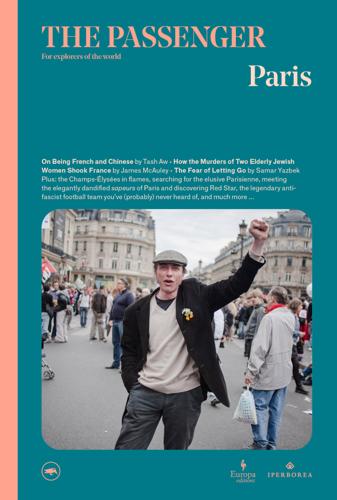
The Passenger: Paris
by
AA.VV.
Published 26 Jun 2021
While Kassovitz hails from central Paris, Ladj Ly, director of the more recent Les Misérables, was born in Mali and raised in Montfermeil, the home of Victor Hugo’s original misérables and the location for his film. Ly became the first black director to win a César for best film. These productions emphasise the harshest realities of the department, which, particularly since the 2005 banlieue riots, has been synonymous with urban poverty and inequality, as is further illustrated by its higher incidence of Covid-19 than the rest of the country. The 93 is the department with the highest unemployment rate in the whole of France (with levels of 50 per cent among young people). It is also the department with the highest concentration of immigrants (two-thirds of the children born in 2015 had at least one parent born abroad), many of them from the former colonies of North and West Africa.
…
The European bourgeoisie, especially in France, felt the need for a new type of establishment, one open to all – or almost all – that was pleasant enough and not expensive and was governed by few rules. It has always been important to have a place to meet strangers in a context where it is acceptable to strike up a conversation (the absence of which has been acutely felt during Covid-19 lockdowns). It is essential for work, for business, for conversation, to keep the more casual of our friendships afloat and – above all – it is vital in the pursuit of love. Restaurants were invented because people needed a place to go on a date and decide whether or not to make love afterwards.
…
In 2014 Arnault inaugurated the museum of the Fondation Louis Vuitton in Paris, an explicit response to the Pinault Collection, the family’s art collection housed in Venice, which will soon have a museum in Paris. While the Kering Foundation works to tackle violence against women, Arnault’s group announced during the Covid-19 emergency that it would produce sanitising gel to distribute to hospitals for free. The media war between the two families – who have also both had issues with the tax authorities – underlines the importance of the luxury sector in France. The LVMH group (standing for Louis Vuitton Moët Hennessy) also controls brands like Christian Dior, Bulgari and Veuve Clicquot as well as hotels, jewellery and watch-making.

Fortune's Bazaar: the Making of Hong Kong: The Making of Hong Kong
by
Vaudine England
Published 16 May 2023
They were peacefully angry at the perceived loss of those freedoms, and the breaking of promises to allow a free choice of leaders. 41 The growing pro-democracy movement took a new turn through the summer of 2019, when the government’s attempt to legislate extradition of Hong Kongers into China’s opaque legal system backfired. One million people marched against the government one week; two million marched the next. The marchers kept coming, rain or shine, until quashed by a now far less popular police force. 42 The Covid-19 pandemic inspired the government to ever greater heights of surveillance. It was impossible to do as it was told by Beijing—achieve zero transmission through heavy social distancing and quarantine regimes—and keep the city alive. So the city started to die: hundreds of thousands of its bright, educated people, including those now fearful for their future following the national security crackdown, simply left.
…
It was this mixing that made it. 15 EPILOGUE In the harbor of Hong Kong, where it all began centuries ago, the ferries still puff back and forth, carrying commuters to and from their outlying island homes, and crisscrossing from the island—“Hong Kong side”—to Kowloon. When the restrictions surrounding the Covid pandemic are eased, those ferries will again take tourists to the bus to the cable car to ascend the Peak, that vertiginous viewpoint over all Hong Kong, and the destination for its constantly aspiring classes. In many ways, the view and the sound of the city are the same. That constant hum rises from crammed streets made into canyons by high-rise hotels, banks, and window-to-window apartment blocks.
…
S., 196 Cheung A-cheung, 85, 147 Cheung, Oswald, 168, 206, 298 Cheung Pat Sze, 119 Chiang Kai Shek, 206, 221, 229 Chiang, Madame, 206 China, Imperial, 32 first synagogue in, 35 Hong Kong ceded to Britain by, 19, 116–17, 247 opium trade in, 38 in Opium Wars with Britain, 18–19 China, People’s Republic of, 1, 103 Great Leap Forward and Cultural Revolution in, 233–34, 240 growing strength of, 248 Hong Kong claims of, 4, 247–48 in Korean War, 233 U.S. relations with, 4 see also Communist Party, Chinese China, Republic of (nationalist), 145, 193, 229–30 army of, 215, 221 Hong Kong as viewed by, 13 China, republican revolution in (1911), 102, 140, 141, 146 racism in, 141–42 China Light and Power Co., 129, 135, 168, 194–95 China Mail, 27, 35, 56, 93, 104, 105, 113, 126, 172 China Merchants Steamship Navigation Co., 146 China Provident Loan and Mortgage Co., 181 China trade, 29, 33, 37–38, 61, 70 China Underwriters Co., 181 Chinese, ethnic, in Hong Kong, 103–4, 154–55, 245 as early migrants, 62, 64 elitism of, 105, 221 growing population of, 109 mixed marriages frowned on by, 157 post-handover status of, 251 racial pride of, 142, 143 unique mindset of, 241 see also Eurasians Chinese Chamber of Commerce, 183 Chinese Charity Association, 226 Chinese civil war, 233 Chinese Club, 102, 133, 138 Chinese General Chamber of Commerce, 133, 172 Chinese Permanent Cemetery Committee, 133 Chinese Recreation Club, 102 Chinese Repository (Canton), 42, 63 Ching, Frank, 180 Ching Ah Fung (Ellen Olson), 72–73 Choa Chee-bee, 85 Choa, George, 85, 166, 274 Choa Leep-chee, 85, 86, 99, 132, 163 Choa, Maisie Kotewall, 85, 165, 166, 227 Choa, Margaret, 201 Choa Po Sien, 85, 166 Choa Pu-yiu, 132 Choa, Trixie, 86, 163 Choa, Winnie, 132 Choa family, 163, 275–76 Chow, Shouson, 87, 146–47, 178, 181, 227 asked by British to cooperate with Japanese, 225–26, 227, 229, 230 as Rehabilitation Committee head, 194 in response to 1925 strike, 148–49 Christian Brothers, 106 Christians, Chinese, 42 Chungking, 193 Chungking Express (film), 235–36 Churchill, Winston, 187 Churn, Doris Frith, 288 Churn, Eddie, 162, 288 Churn, Eva, 162, 288–89 Churn, Lena Johnsford, 162 Churn, Samuel “Charlie,” 162, 207–8 Churn, Samuel Macumber (Cheung Kit Tsoi), 162, 185, 288 Churn-Macumber-Leonard family, 162 Clementi, Cecil, 123, 148–49, 181, 286 Cleverly, Charles, 53 Cleverly, Ellen Fagin, 53 Cleverly, Osmund, 53 Clifton, Francis Augusta, 53 Clifton, Samuel, 53 Club de Recreio, 139, 184 Club Germania, 138 Club House, 46 Club Lusitano, 29, 139–40, 204 Coates, Austin, 113 Cohen, Israel, 130 Cohen, Samuel H., 35 Cold War, 221, 233 collaboration, use of term, 240 colonialism: Hong Kongers’ experience of, 235 mythology vs. reality of, 13–14, 240–41 colonialism, British: women’s rights under, 48 see also British Empire colonialism, French, 2 Columbia University, 146 Commonwealth Immigrant Act (1962), 249 Communist Party, Chinese, 3, 146, 148, 221, 231, 233–34, 240 see also China, People’s Republic of Communist Party, Vietnamese, 2, 150, 158 Companhia Cooperativa de Macao, 202 Compradoric (architectural style), 107–8 compradors (local managers), 11, 40, 41, 108, 168, 169 Connaught, Duke of, 115 Contagious Diseases Ordinances (Hong Kong, 1857), 48–49 Correa, Frank, 168, 218 Correa, Vivienne Baker “Vivi,” 168, 290 Covid-19 pandemic, 245, 254, 256–57 Cowasjee Pallanjee and Co., 30 Craigengower Club, 184 Crawford, Ninian, 151 Crewe Circular (1909), 155 cricket, 184 Croucher, Noel, 150 Cruz, Francesca Brigitta, 71 Culloch, David, 54 Cumsingmoon Affair, 55–57 Cunich, Peter, 119 Cursetjee Bomanjee and Co., 18 Dairy Farm Co., 112–13, 122 Darwin, John, 13–14, 157–58 Dawoodi Bohra, 198–99 Deacon, Victor Hobart, 91–92 Deacon’s (law firm), 52, 70 Deng Xiaoping: MacLehose’s meeting with, 249 Thatcher’s meeting with, 250 Dent and Co., 31, 85 Dikotter, Frank, 141–42 Diocesan Boys’ School, 73, 94, 133, 188, 206 Diocesan Girls’ School, 73, 81, 86, 288 Diocesan Home and Orphanage, 84, 94 Diocesan Native Female Training School (DNFTS), 94 District Watch Committee, 87, 89, 133, 180 Ditta, Allah, 153 Dowell, William, 18–19 Drage, Charles Hardinge, 122–23 Drake, Darrell, 224 Duddell, George, 22, 53, 151–52 Dung Kaicheung, 236 Dunn, Timothy E., 224 Dutch, 22 Dutch East Indies, 10–11 E.
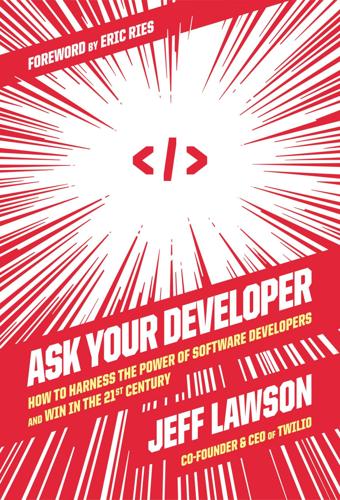
Ask Your Developer: How to Harness the Power of Software Developers and Win in the 21st Century
by
Jeff Lawson
Published 12 Jan 2021
I believe that work and customer engagement have changed fundamentally during the pandemic and will never go back to the old way again. Millions of people have embraced new technologies; they will not want to go back. This was largely a one-way acceleration toward digital. Customers will become accustomed to these digital experiences, and expectations will just continue to rise quickly. Companies that get this right will have loyal, engaged, productive customers. Those that don’t will struggle even more than before the COVID-19 crisis. But the good news is—you got this. I hope this book helped show you the path to partnership with software developers.
…
As I was finishing the book something happened that made this transformation far more urgent. The coronavirus pandemic that struck in early 2020 forced the world to reconfigure itself in real time as cities shut down, children learned at home, companies sent workers home, hospitals were overwhelmed with patients, and more. Suddenly digital transformation projects slated to take place over several years were happening in days or weeks. It was the great digital acceleration, not by choice but by existential necessity driven by the largest global pandemic in a century. As economic activity slowed to a crawl, it was literally Build vs.
…
Like everyone else, Twilio sent our employees home and kept the company running with everyone working remotely. That was especially challenging because our business didn’t drop off during the global shutdown. Our customers asked their developers to invent solutions to the onslaught of problems that COVID-19 brought them. Instead of taking it easy, our three thousand–plus Twilions were running harder than ever to handle a surge of demand from our existing customers and thousands of new customers who needed help—right away. From our front-row seat, we saw innovation that demonstrated so many of the principles I’ve written about in this book.
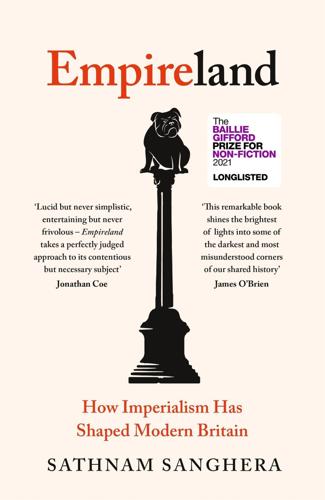
Empireland: How Imperialism Has Shaped Modern Britain
by
Sathnam Sanghera
Published 28 Jan 2021
In May the Sydney Morning Herald observed that, unlike Italy, the United Kingdom had had ‘time to prepare for the coronavirus tsunami’ but had failed to act, Libération, the French centre-left newspaper, reported ‘breathtaking shortages’, ‘fiasco’ and a nonchalant handling of the crisis by the Johnson government, the New Yorker said that despite its ‘internationally respected public-health apparatus’ Britain had taken an ‘obvious misstep’ in hesitating to implement a national lockdown, while in Turkey the Anadolu state news agency warned that the UK’s death toll from the crisis could be worse than those of Italy or Spain and that Boris Johnson’s crisis management of the pandemic should be questioned and examined in terms of this projected outcome.10 The Irish Times put it most damningly of all, some days later: ‘Another example of British exceptionalism backfiring in grand style, some might say, and a bad omen for Brexit, the UK’s other social-distancing project.’ 8. Dirty Money Few areas of Britain feel more quintessentially English than the Cotswolds, with its thatched cottages, rolling hills, overpriced garden centres and pubs that present themselves as high-end restaurants.
…
And it happened in 2020 around the Black Lives Matter movement, and around the coronavirus crisis when the public suddenly seemed to appreciate that BAME staff not only accounted for a disproportionate segment of NHS medical staff (44 per cent, when the 2011 Census puts the BAME population in England and Wales at 14 per cent) but were dying at seven times the rate of white colleagues. I met some relatives of black and Asian doctors who had died of Covid-19 for Channel 4 News and The Times. It was emotional. Medicine runs in many immigrant families, and some of the bereaved were themselves doctors, going back to work to face the virus that had killed their loved ones. Many of the deceased had experienced racism even as they built the NHS: studies confirm that not only are BAME doctors routinely racially abused, but they’re also pushed towards ‘Cinderella’ specialities such as geriatric medicine rather than the higher-status disciplines.
…
There is evidence that we refused to subscribe to European efforts to source ventilators, going our own way, only to face a serious shortage. As Google and Apple combined to develop a global tracing app, we went it alone to develop our own NHS app, with disappointing results. When the world’s nations rushed to quarantine foreign visitors arriving in their airports, we let them in, and then when Covid seemed to become less of a threat to the world after its initial onslaught, our advice switched to quarantine. Our politicians gloated endlessly about how we were leading the world in efforts to find a vaccine, while the Health Secretary boasted in June, amid disastrous mortality figures, that ‘British science is among the best in the world.’
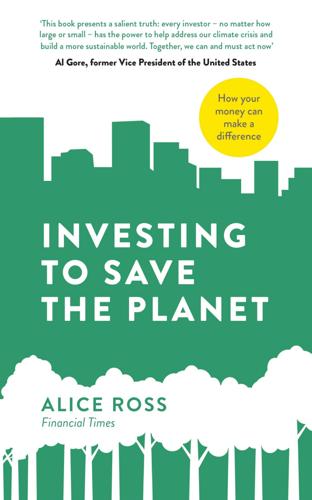
Investing to Save the Planet: How Your Money Can Make a Difference
by
Alice Ross
Published 19 Nov 2020
Lift-sharing services like Uber or Lyft are one obvious example, while in China, start-up YCloset, which allows users to rent clothes and jewellery, attracted investment from Chinese technology giant Alibaba in 2018. A circular economy in fashion could also be given a boost by the coronavirus pandemic, as people practising social distancing look to refresh their wardrobes cheaply or repair what they already own. In April 2020, analysts at HSBC said that they saw ‘significant opportunities’ for fashion companies that were exploring things like rental clothing platforms and repair services. Such companies include H&M, Patagonia and the RealReal.
…
Analysts at Morgan Stanley said in March: ‘With the disruption caused by the Covid-19 crisis, “social” considerations are back at the forefront of ESG. Corporate decisions affecting workers … have become increasingly important as a wider array of investors have begun looking at companies through an ESG lens.’ Analysts at Barclays predicted that the coronavirus crisis could even accelerate investors’ interest in climate change, arguing that while ESG implementation might be delayed in the short term, ‘it is unlikely to be abandoned in the long run – and it may even accelerate in a post-Covid-19 world’. Of course, not all the developments were positive.
…
As a result, the EU has now restricted the use of biofuel in transport that can be counted as renewable energy to just 7 per cent. But biofuels are proving attractive in the aviation industry. Flights make up more than 2 per cent of global greenhouse gas emissions – or at least they did before the 2020 pandemic grounded airlines. This means that if global aviation were a country, it would rank in the top 10 emitters. It remains to be seen how long it will take for aviation to match its pre-pandemic emissions, with many airlines warning that they will not see a recovery to 2019 levels of activity for years to come. An EU report from 2019 notes that, while sustainable aviation fuels such as electrofuels (which, if produced from renewable electricity, are potentially zero emission) have the potential to significantly reduce emissions, their use is minimal and likely to remain limited in the short term.
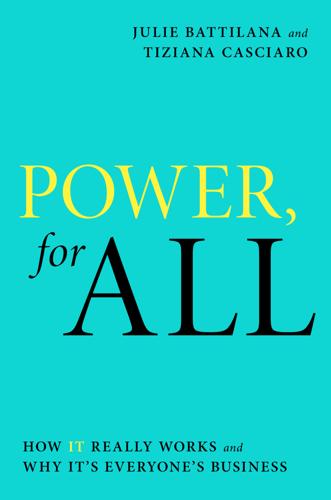
Power, for All: How It Really Works and Why It's Everyone's Business
by
Julie Battilana
and
Tiziana Casciaro
Published 30 Aug 2021
Sometimes, as we struggle to see through the fog of our self-focus, events much larger than ourselves remind us and rekindle our empathy. The COVID-19 pandemic helped some to see that the unilateral exercise of individual power is futile and counterproductive.45 And many more of us have awakened to the truth of scientists’ dire warnings about the boomerang effects of invading and destroying ecosystems46 and “the need for a more holistic ‘one health’ approach [that] views human, animal, and environmental health as interconnected.”47 Life-altering experiences such as the pandemic also make us more aware of our impermanence, which has long been one of the defenses humans put up against the other great danger of power: hubris.
…
In the face of this increased pressure, many corporate leaders have expressed their desire to serve other stakeholders in addition to their shareholders.36 In August 2019, the Business Roundtable, whose membership includes the CEOs of most major U.S. corporations, issued a statement rejecting the primacy of shareholders in favor of creating value for their employees and stakeholders, including their customers, and society at large. But when it comes to accountability to these groups, as of a year later, at least, not much had changed. A study revealed that when COVID started spreading in the spring of 2020, companies that signed the Business Roundtable statement fired their employees 20 percent more than those that did not sign the statement.37 They were also less likely to donate to relief efforts, offer customer discounts, or shift production to pandemic-related goods. The takeaway is not surprising: If we leave it to those in power to change, they may change their discourse but rarely their behavior. The good news is that new structures and systems that hold companies accountable not only for their financial performance, but also for their social and environmental impact, make real change possible.38 The Sustainability Accounting Standards Board created in 2011 by Jean Rogers, whom you met in chapter 6, is a prime example.39 The metrics that standard setting organizations like SASB have created are not, in themselves, enough to drive change.
…
Research in evolutionary psychology highlights how people internalize experiences of social acceptance and rejection in ways that can profoundly shape their assessment of their own worth.40 Kids understand early on the power of threatening to withdraw their friendship from another child, even if they don’t understand that the power derives from depriving a vulnerable peer of a key source of self-worth and a potential defense against mean-spirited bullies. Ultimately, the people we love matter more to us than anything else. Anyone who has come close to death will tell you that their loved ones were all they thought about in those final moments.41 The pain of being denied a last farewell to hospitalized family members was what made COVID-19 so heartbreaking for so many people. We can accept death, but not death without those we love.42 Love is easily leveraged as a source of power: Threaten someone I love, and I will yield to you to ensure the safety of my loved one. At the same time, I will do all that’s in my power to stop you. Affiliation can also be leveraged to divide us.
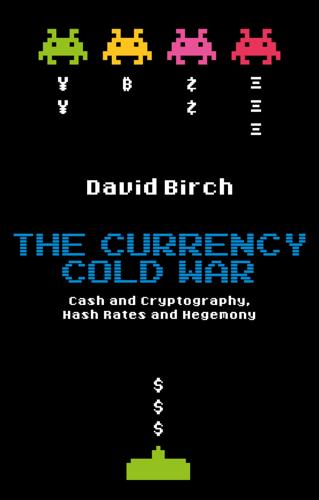
The Currency Cold War: Cash and Cryptography, Hash Rates and Hegemony
by
David G. W. Birch
Published 14 Apr 2020
You will read in the pages ahead, for example, about outgoing Bank of England governor Mark Carney’s bold vision for the International Monetary Fund to steward creation of a digitally rendered ‘synthetic hegemonic currency’ to replace the dollar as the world’s reserve unit. But it took a third, massively disruptive societal upheaval – the fallout from the Covid-19 pandemic – to turn this gradual two-trend convergence into something even more powerful and urgent. The global health crisis of 2020, which quickly also became a financial, economic and political crisis, threatens to redraw the boundaries of economic power – not only across countries, but also within them – as centralized governments’ failure to rapidly respond has shone a light on alternative models that embrace decentralized governance.
…
Of course, an issuer might decide to pay positive interest on digital currency balances, and there are observers who feel that in cases where the issuer is the central bank, this might simplify monetary policy. The idea of using some form of digital currency to helicopter-drop money directly to citizens is not new (Hockett 2019a). It was, however, brought back into sharp focus because of the Covid-19 pandemic. The first draft of the Democratic Party’s stimulus proposal for the United States (the 1,100-page-long Take Responsibility for Workers and Families Act) included a provision for the use of digital currency to make direct stimulus payments via a ‘digital dollar wallet’ that ‘represents holdings in an electronic device or service that is used to store digital dollars that may be tied to a digital [identity] or physical identity’ (my emphasis).
…
Meanwhile, as governments and companies fight over who gets to define our future fiat-backed currency system, we cannot discount the role of decentralized alternatives such as Bitcoin, even as sideline players. David and I might disagree on this, but I see post-Covid-19 political fragmentation breeding demand for Satoshi Nakamoto’s invention, which will represent an alternative – if not a more stable – store of value. Trust in both governments and corporate gatekeepers will be challenged by Covid-19 politics. Those who bemoan the lack of accountability in unprecedented fiscal and monetary stimulus packages could be very amenable to a new idea of money. For others who fear the surveillance powers of both corporate- and state-issued currencies, the alternative of depoliticized, pro-privacy digital currencies such as Bitcoin will be attractive.
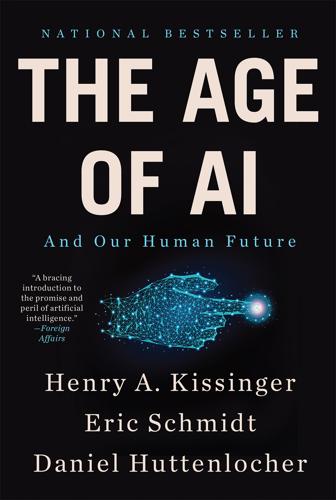
The Age of AI: And Our Human Future
by
Henry A Kissinger
,
Eric Schmidt
and
Daniel Huttenlocher
Published 2 Nov 2021
And, as previously noted, individuals have come to trust certain AI-driven network platforms with information that they would hesitate to show to a friend or the government—such as comprehensive records of where they have gone, what they did (and with whom), and what they searched for and viewed. The dynamic enabled by access to such personal data puts network platforms, their operators, and the AI they employ in newfound positions of social and political influence. Particularly during a pandemic-influenced era of social distancing and remote work, societies have come to rely on some AI-enabled network platforms as a kind of essential resource and social glue—a facilitator of expression, commerce, food delivery, and transportation. These changes have unfolded at a scale and speed that, thus far, have outpaced a broader understanding and consensus about the roles of these network platforms in society and on the international stage.
…
For the past four years, we and Meredith Potter, who augments Kissinger’s intellectual pursuits, have been meeting, considering these and other questions, trying to comprehend both the opportunities and the challenges posed by the rise of AI. In 2018 and 2019, Meredith helped us translate our ideas into articles that convinced us we should expand them into this book. Our last year of meetings coincided with the COVID-19 pandemic, which forced us to meet by videoconference—a technology that not long ago was fantastical, but now is ubiquitous. As the world locked down, suffering losses and dislocations it has only suffered in the past century during wartime, our meetings became a forum for human attributes AI does not possess: friendship, empathy, curiosity, doubt, worry.
…
Like its creator, that AI will learn to prefer those moves, even if they fare poorly in practice. Of course, the problem of bias in technology is not limited to AI. The pulse oximeter, which has become an increasingly pertinent measurement of two metrics of health—heart rate and oxygen saturation—since the start of the COVID-19 pandemic, overestimates oxygen saturation in dark-skinned individuals. By assuming the way light skin absorbs light is “normal,” its designers effectively assumed the way dark skin absorbs light is “abnormal.” The pulse oximeter is not run by AI. But still, it fails to pay sufficient attention to a particular population.

Bad Actors
by
Mick Herron
Published 9 May 2022
But he was awake again two hours later, Bachelor’s story climbing round his head. It was absurd, of course, and would lead nowhere—obviously—but at least the older man hadn’t asked him the favour he’d been dreading. There was that memory, too, of Bachelor’s concern when he, Lech, had been locked in Covid’s monstrous offices. He was remembering a line his father had enjoyed quoting—everyone is more or less of Polish origin. It seemed to fit Bachelor. Another reason for Lech not turning his back. Which was why, the following afternoon, he’d wandered from the office he shared with Roddy Ho to talk with Louisa Guy, whose room was on the floor above, its view ever so slightly better than his.
…
“And if Sparrow can suggest that’s what’s happened here, that you had de Greer disappeared before she could stage-manage an international spook scandal, then that’s the bigger story and you’re the bad guy. Worst case scenario, from his point of view, it all gets wrapped inside an official inquiry, and by the time the report’s made public we’re too busy locking down Covid-25 to give a toss. And best case . . .” “I’ve triggered an illegal abduction, possibly murder, to preserve the Service’s reputation.” “And you’ll be hung, drawn and quartered,” said Lamb. “But for that to hold water,” Diana said slowly, “de Greer would have to disappear for real. You think he planned to kill her?”
…
This, the bedrock of his political philosophy, had seen Sparrow through some shaky patches. He’d occasionally been knocked off balance, true. We don’t need no stinking lockdown, he remembered telling the PM. What are we, French? But even this had an upside, distracting attention from a harder Brexit than the wet-legged had been expecting, and post-Covid paranoia was a flame worth fanning. Take the anti-vaxxers, or the G5 arsonists, whose celebrity-endorsed idiocy made the Home Secretary look a model of reason . . . Every national panic permitted a government to lace its boots tighter, which was why every government needed a visionary unafraid to sow chaos.
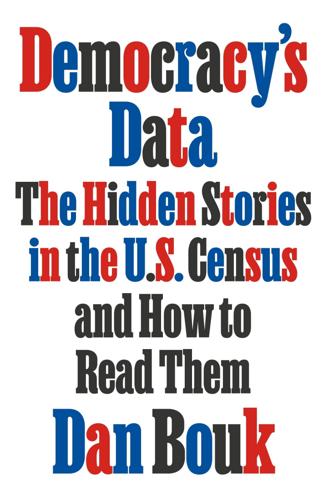
Democracy's Data: The Hidden Stories in the U.S. Census and How to Read Them
by
Dan Bouk
Published 22 Aug 2022
And in early March, as the first round of census self-response invitations went out in the mail, the COVID-19 pandemic had crashed the party. Our family hunkered down in New York City. We sewed our first masks from old dish towels. The Census Bureau paused its operations in the field. People started talking about “delaying” the release of census data, which sounded crazy to me.49 I didn’t realize how serious this crisis was. The delay happened. It had to happen. The bureau needed more time: more time to get enumerators out knocking on doors and time to convince people to answer those doors during a pandemic; more time to sort through all the responses received online, on the phone, or through the mail; more time to debug the tabulation software and check for errors.
…
Cohen, Lizabeth Cohen, Patricia Cline columns; deportations related to; for head of household; for income; for “Indians not taxed”; for migration; for occupation; padding affecting; race indicated in; for relation Combs, George Combs, Henry Communist Manifesto (Marx and Engels) Communists completeness computers concentration camps confidentiality: of census; Census Bureau promising; Congress tightening of; of data; draft and; World War II breaking Congress,7; census authorized by; census confidentiality tightened by; disfranchisement data presented to; see also House of Representatives congressional districts Congress of Industrial Organizations (CIO) Conner, Eugene E. Constitution cooperation: census requiring; with enumerators; officials needing; wage reporting “Counting for Dollars 2020” (report) COVID-19 pandemic Craig, David R. Curtis, Cathrine data: for African American genealogies; algorithms trained by; Big; British colonial; in census; in China; computers impacting; confidentiality of; in controversy; democracy linked to; on disfranchisement; Douglass, F., in; Dublin, L., and; enumerators influencing; errors in; fear of; frame of; fraud deterred by; genealogies and histories of; House of Representatives divided by; of individuals; of Japanese Americans; machines reading; names in; as numbers; objectivity of; partners in; poem reframing; politics shaping; Question Men and; race in; reform directed by; representation shaped by; of sampling; silences in; small-area; in South Africa; stories in; as text; for training enumerators; World War II weaponization of Davis, Lillian Rita Dearborn, Mina H.
…
She said: “If New York had had eighty-nine more people, they would have received one more seat.” Eighty-nine people! Newspapers ran with that number the following day. Twitter trembled with the outrage of pundits who didn’t realize that New York’s performance in the census had been spectacular but instead complained that their state had been robbed. They blamed COVID—the interruptions it had caused, the people it had displaced or killed—for the loss of a House seat, and they blamed the Census Bureau for missing, somehow, those eighty-nine people. They talked about lawsuits or recounts. (Though, as of this writing, neither has happened.) I shook my head in disbelief.

Across the Airless Wilds: The Lunar Rover and the Triumph of the Final Moon Landings
by
Earl Swift
Published 5 Jul 2021
That said, the Horizon runabout so evokes Greg Bekker’s thinking (as does the report’s assertion that wheels would work just fine on the lunar surface, well before that became a popular view) that I’m moved to consider another possibility: that ABMA and Transportation Corps engineers working on Horizon conferred with Bekker’s lab at Detroit Arsenal, which was within the same army command. At this writing, that remains a speculation; amid the disruptions of the Covid-19 pandemic, I have yet to find documentation that spells out such an arrangement. Another possibility is that Bekker wasn’t the only guy thinking as he did. Georg von Tiesenhausen, an ABMA and Marshall engineer whose papers are archived at the U.S. Space and Rocket Center, is widely credited with producing the first design of a lunar roving vehicle—in fact, he’s often mistakenly said to have had a role in the eventual lunar rover, which he did not.
…
See also Apollo 17 Chevrolet Corvair, 100 Chrysler Corporation, 74, 143 Chrysler rover, 162–63, 163, 166–67 Cinder Lake, 124–31, 125, 137, 199, 240, 288 Cinder Lake Crater Field No. 1, 124–25 Cinder Lake Crater Field No. 2, 128–29 Circular spline, 88–89, 154, 326n City College of New York, 76 Clarke, Rosemary, 26 Cobra, 42, 65, 320n Cold welding, 298–99 Collier’s, 31–36, 52–53, 96, 130, 184, 268 Colorado Plateau, 121–22 Computation Lab, 221 Cone Crater, 10–13 Conrad, Charles “Pete,” 15–16 “Contractor penetration,” 189–90 Coon Butte, 121–22 Cooper, Gary, 27 Covid-19 pandemic, 302, 324n Cowart, Eugene, 192, 218, 259, 300, 301 Craig, Elbert “E. B.”, 193–94, 197 Crew station, 152–53, 185–86 Cronkite, Walter, 110 Curiosity, 296 Dannenberg, Konrad, 30, 78 Davidson Center for Space Exploration, 4–7, 18 Davy Crockett (TV show), 35 Delco Electronics, 207, 344 Delco Retirees Group, 314 Dembling, Paul, 167–68 Deployment gear, 158, 217–21, 231–32 Descartes Highlands, 251, 252–53, 254, 258, 297, 298 Detroit Arsenal, 42–43, 49, 50, 55, 59, 203, 324n Detroit Free Press, 105, 161 Development mule (test mule), 102–4, 329n Direct ascent, 90–91 Disc brakes, 163 Disney, Walt, 35–36 Disneyland, 35–37 Dora-Mittelbau concentration camp, 25 Dornberger, Walter, 25, 26, 28 Douglas Aircraft Company, 74 Drive train, 153–54, 178–79, 202 Duke, Charles “Charlie,” 252–70, 298, 349n Apollo 17 and, 286 background of, 252 development of LRV, 209, 214, 250 first EVA (EVA-1), 253–60 Grover testing, 200, 200–201, 203, 221, 222 mission report, 269–70 second EVA (EVA-2), 260–64 third EVA (EVA-3), 265–69 Eagle (LM-3), 15, 147–48, 252.
…
We’ve worked together for nearly twenty years, during which I’ve never stopped wondering how I could have so lucked out. He is fierce. He is brave. He is a warrior in the cause of righteousness—and me. Finally, I’m much obliged to those people who kept me moored to reality while I was chained to my keyboard, a period that coincided with the emergence of Covid-19 and the strange and terrible times that followed. Amy Walton has backed this project from its start, and supported me for nearly two decades. I’m deeply thankful to have her in my life. My dear friend Laura LaFay has read every word between these covers, several times. She’s one of the best writers I know, and an incisive reader and editor.
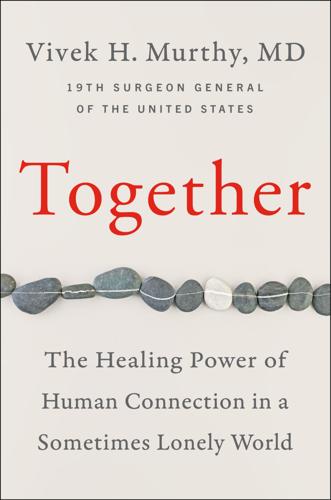
Together
by
Vivek H. Murthy, M.D.
Published 5 Mar 2020
If we could not touch, how could we love? Even that term, social distancing, seemed to condemn us to loneliness. And then there was the issue of trust. Fear of infection and panic over the potential economic fallout drove some to ignore the official mandates and hoard emergency supplies. Alongside the looming specter of a global financial recession rose an equally disturbing prospect of a social recession—a fraying of communal bonds that deepens in severity the longer we go without human interaction. As the pandemic continues, however, it becomes ever clearer that social distancing is a misnomer. To be sure, we must practice physical distancing to stop the spread of COVID-19, but socially, we may emerge from this crisis feeling closer to friends and family members than ever before.
…
What I could not anticipate, however, was the unprecedented test that our global community would face just as this book was going to press. In the first weeks of 2020, the COVID-19 pandemic turned physical human contact into a potentially mortal threat. The novel coronavirus was on the loose, like an invisible stalker, and any of our fellow human beings could have been its carrier. Almost overnight, it seemed, getting close enough to breathe on another person became synonymous with danger. The public health imperative was clear: to save lives, we’d need to radically increase the space between us. As I write these words, we are still in the middle of this pandemic. With health workers at risk, hospital equipment in short supply, and death rates from the coronavirus spiking by the day, governments the world over have mandated “social distancing,” closed schools and most businesses, and ordered everyone but essential service workers to stay home.
…
And all over the world, families, friends, and strangers have been performing acts of generosity—bringing groceries to the ill and elderly, calling to check on vulnerable neighbors, and sharing local updates on everything from grocery store hours to the availability of toilet paper. (Who knew that toilet paper would be such a hot commodity in a pandemic!) We are fortunate today that technology offers us ready opportunities to strengthen our connections remotely. The pandemic is inspiring creativity online as artists dance and sing together through videos from home. Families celebrate birthdays through FaceTime. Audiences enjoy live opera performances streamed over the internet, and students, from kindergartners to doctoral candidates, meet in classes online.
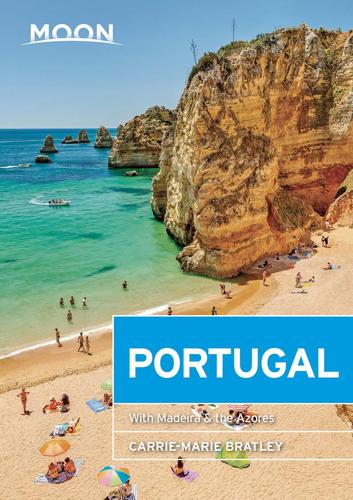
Moon Portugal
by
Carrie-Marie Bratley
Published 15 Mar 2021
PORTUGAL CARRIE-MARIE BRATLEY Contents Discover Portugal Lisbon Around Lisbon Évora and the Alentejo The Algarve and the Southern Beaches Coimbra and the Centro Porto and the Norte Madeira The Azores Background Essentials Resources Index List of Maps Photo Credits Copyright Although every effort was made to make sure the information in this book was accurate when going to press, research was impacted by the COVID-19 pandemic and things may have changed since the time of writing. Be sure to confirm specific details, like opening hours, closures, and travel guidelines and restrictions, when making your travel plans. For more detailed information, see click here. surfing in the Algarve the Alcobaça Monastery DISCOVER Portugal 10 TOP EXPERIENCES Planning Your Trip If You Have… Explore Portugal Top Beaches Explore Portuguese Cuisine Getting Outside boats in Carvoeiro Like the sardine that has become symbolic of Portuguese gastronomy and its formidable seafaring heritage, Portugal is small but packs a mighty flavorful punch.
…
TBR PR1 - City of Calcedonia trail Hiking Distance: 7-kilometer (4-mi) loop Hiking Time: 4 hours round-trip Trailhead: Lugar do Calvário, Covide village Information and Maps: www.walkingportugal.com/z_distritos_portugal/Braga/Terras_do_Bouro/TBR_PR1_Trilho_da_Cidade_da_Calcedonia.html One of the Peneda-Gerês’s most challenging and emblematic hikes, the City of Calcedonia trail takes walkers through traditional communities and ancient geological spots in the rural Covide valley. The loop explores areas where the earliest inhabitants are believed to date back to the Iron Age, and you’ll see Roman roads and unusual rock formations.
…
BEFORE YOU GO • Check local websites (listed below) for restrictions and the overall health status of the destination and your point of origin. If you’re traveling to or from an area that is currently a COVID-19 hotspot, you may want to reconsider your trip. • Get vaccinated if your health status allows, and if possible, take a coronavirus test with enough time to receive your results before your departure. Some destinations may require proof of vaccination or a negative COVID test result before arrival, along with other tests and potentially a self-quarantine period, once you’ve arrived. Check local requirements and factor these into your plans
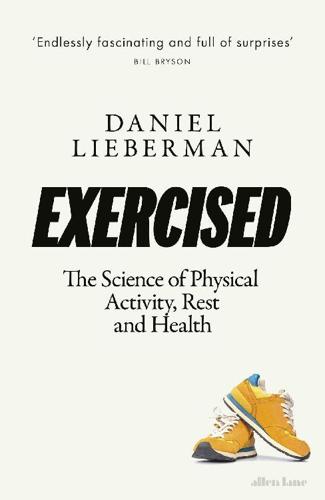
Exercised: The Science of Physical Activity, Rest and Health
by
Daniel Lieberman
Published 2 Sep 2020
Endurance athletes such as cross-country skiers had a stunning two-thirds lower risk of heart attacks than average Finns, while power athletes like weight lifters and wrestlers had one-third higher rates of heart attacks.48 Bottom line: weight training isn’t bad, but don’t skip the cardio. Respiratory Tract Infections and Other Contagions As I edit these words in March 2020, COVID-19, the worst pandemic since the 1918 Spanish Flu, is overwhelming the globe, causing massive numbers of people to fall ill, many to die, and plunging the world into economic crisis. The virus is a stark reminder that contagious diseases have never ceased to pose a profound and terrifying threat to human health. Even though the majority of people who get COVID-19 experience only mild to moderate symptoms, it is many times deadlier than most viral infections of the respiratory tract, including influenza.
…
Other infectious diseases like AIDS, hepatitis, and tuberculosis also take the lives of substantial numbers of people around the world annually. You may be wondering what physical activity has to do with contagions like respiratory tract infections (RTIs). During epidemics like COVID-19, health officials urge us to wash our hands more often and more thoroughly, to practice social distancing, to cough into our elbows, and—trickiest of all—to stop touching our faces. These fundamental, sensible measures effectively help impede transmission of the virus. Other key, proven treatments include vaccines that teach our immune systems to protect us from particular viruses, and antiviral medicines.
…
Contagious pathogens flourish in crowded, unhygienic conditions, and when they jump to humans from other species, they are especially dangerous because no one’s immune system has encountered them before. So, while hunter-gatherers suffer from plenty of infectious illnesses, highly contagious epidemic diseases like COVID-19 are partly mismatches made possible by civilization, and that explains why social distancing and handwashing are key tools to fight them.49 Persistent lack of physical activity may be an additional, partial mismatch for the immune system. There are longstanding concerns that excessively demanding physical activities like running a marathon can compromise the immune system’s capabilities, but several lines of evidence indicate that regular, moderate physical activity has the potential to reduce the risk of contracting certain contagious diseases, including RTIs.50 In addition, exercise appears to slow the rate at which the immune system deteriorates as we age.51 But exercise is no magic bullet.
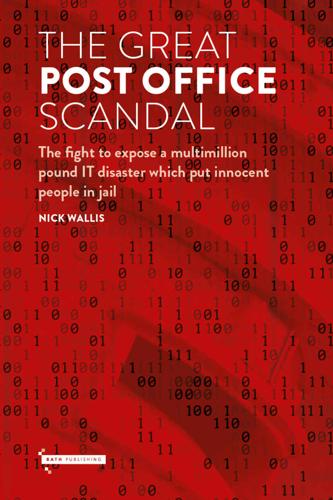
The Great Post Office Scandal: The Fight to Expose a Multimillion Pound Scandal Which Put Innocent People in Jail
by
Nick Wallis
Published 18 Nov 2021
Press scrums are largely predictable, but they can develop a strange dynamic. This particular one was hopelessly disorganised because of the COVID-inspired one-way system at the court gates, which meant the usual location for after-court media statements was blocked. The assembled TV crews were reluctant to suggest the Subpostmasters group together anyway – pictures of loads of Subpostmasters huddled in front of a bunch of microphone stands could see journalists accused of encouraging people to break social-distancing rules. Without any consensus on what to do, the whole thing became a free-for-all. Harjinder Butoy didn’t realise he was one of the first Subpostmasters to come out of court.
…
Confirmation was received shortly after we delivered the final cut to BBC1. The Prime Minister would be using Panorama’s prime time evening slot to announce an immediate total lockdown, in an attempt to arrest the escalating coronavirus pandemic. ____________________ 1 Something which seems to happen a lot. 2 Pub quiz fact: Nadine Dorries was the first. CCRC REFERRAL The next few weeks were difficult. For many it was touched by tragedy. The horror of the pandemic as it laid waste to thousands of lives will stay lodged in the national consciousness for decades. Practical considerations about safety and day-to-day living put everything else into sharp relief.
…
She said she’d call me back with more information. She didn’t.1 ____________________ 1 In June 2021, seven months after it was submitted, the Ombudsman told me it was still deciding whether or not to investigate the JFSA’s complaint. PRESUMPTIONS ABOUT MACHINES AND AI With Christmas out of the way, and January’s Covid lockdown keeping many people at home, the appellants’ barristers got to work on how they would present their clients’ cases to the Court of Appeal. Between them, Flora Page, Paul Marshall and Lisa Busch had got limb 2 on the table without any prospect of delaying a result. Now it was up for grabs, Lisa began to collaborate with Tim Moloney.
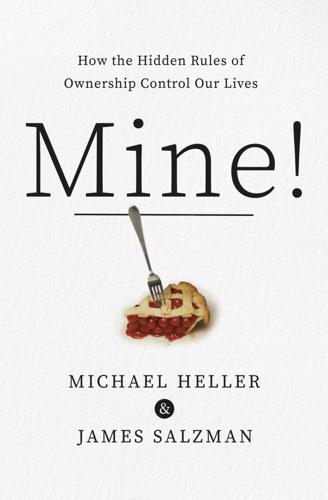
Mine!: How the Hidden Rules of Ownership Control Our Lives
by
Michael A. Heller
and
James Salzman
Published 2 Mar 2021
Maybe the Supreme Court should reserve seats for student groups. Or auction the seats and use the revenue for guided high school tours of its awe-inspiring building. Or—and this is our view—the Court should implement a different path to access altogether, such as video livestreaming arguments so they are freely available to everyone online. During the COVID-19 shutdown, the Court moved partway there with audio livestream, and the administration of justice did not noticeably falter. Put another way, every rule for making things mine rewards a different idea about what to value, like the options for the rocking chair we discussed in the Introduction.
…
Think about the last time you were in the checkout line at the supermarket with your shopping cart. Imagine a stranger had come up, peered into your cart, taken out the cereal box, then looked again and grabbed the carton of milk. This seems insane. It never happens (although we did come across one example during the panicky early days of COVID-19: toilet paper filching). You would probably shout at the person, “What the—what are you doing? That’s mine!” But why are the cereal box and milk carton yours? You haven’t bought them yet. What makes you so confident, even though your physical possession is not legal ownership? Retailers have always understood, and taken advantage of, this possession instinct by creating conditions where customers can get attached to products for sale.
…
The conflicts are growing more acute: as beach-spreaders are pushing the boundaries of possession, rising sea levels are shrinking New Jersey beaches. Local residents pay for lifeguards and beach upkeep and get mad when beach-spreaders keep them away from the water. Regional variations in beach possession symbols matter even more in the COVID-19 era. That’s why White House coronavirus adviser Deborah Birx urged beachgoers to defend circles of sand around their umbrellas: “Remember that is your space, and that is the space you need to protect.” She was arguing for uniform beach spacing nationwide. Bad ownership design can have deadly consequences in New Jersey, Florida, and elsewhere.
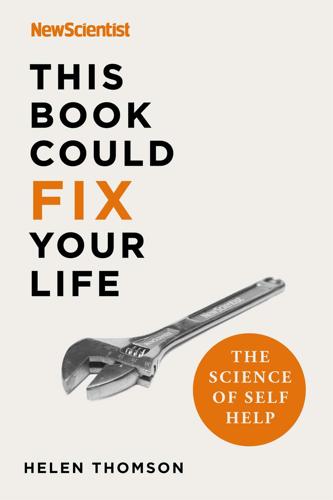
This Book Could Fix Your Life: The Science of Self Help
by
New Scientist
and
Helen Thomson
Published 7 Jan 2021
You might assume that there are more people having to deal with more uncertainty and more anxiety as a result of coronavirus and its legacy. But some researchers have suggested it could go the other way, making people less anxious, because they go on with their life even though they are experiencing more uncertainty. Future studies may show that successfully making it through something as big as Covid-19, a year-long limbo for some, can make the small things much easier to cope with. HOW TO TREAT CHRONIC ANXIETY As we’ve seen, stress is a natural response which puts our bodies in a state of preparedness, making us more aware of danger or uncertainty – something with an upside and a downside.
…
One study found that untrained observers who watch a video of the first twenty to thirty seconds of a job interview were astonishingly accurate at predicting whether the applicant would be offered the job. That doesn’t mean the observers were especially good at picking good candidates. It means the interviewers, despite being fully trained, still go with their initial gut instinct. Unless you’re still in the midst of social distancing, shaking hands with your interviewer is probably the second opportunity you’ll get to make an impression. Seize it – but not too hard. Several studies have found that people unconsciously equate a firm handshake with an extroverted, sociable personality – and that’s more likely than a shy disposition to please an interviewer.
…
Again, it’s based on the best recent scientific research that I and my New Scientist colleagues have unearthed. This time, the aim is to provide you with a comprehensive and evidence-based guide to a smarter, happier and less stressful life. When I agreed to write this book, I couldn’t know that I would end up writing most of it during a global pandemic lockdown. At the time of writing, the future still looks increasingly uncertain. There’s never been a better time to understand exactly how your brain works and how to use it to maximise the best aspects of your life, or help you cope when things go wrong. And there are life fixes that do work.
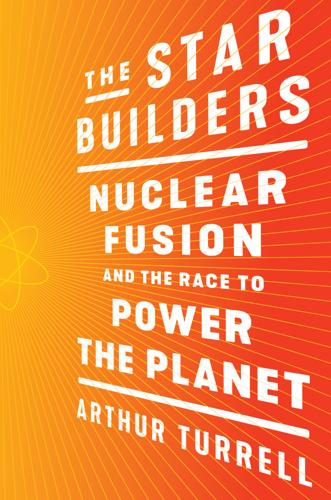
The Star Builders: Nuclear Fusion and the Race to Power the Planet
by
Arthur Turrell
Published 2 Aug 2021
If you’re in a mostly empty train carriage, you’re unlikely to bump into other passengers despite the shaking of the train as it goes over the tracks. Now imagine it’s rush hour. There’s barely a patch of free space. No matter how small the bump, you’re so close to your neighbors that you’re constantly colliding with them. That’s why social distancing is used to slow the spread of pandemics. And it’s also why packing more nuclei into the same amount of space—or increasing the plasma density—means more collisions, and more chances for fusion. For fusion to work, the plasma has to be kept hot, as dense as possible, and well confined. Rutherford died in 1937, just one year before physicists demonstrated that chains of fission reactions could be strung together to scale up indefinitely the energy released.
…
But these punishing timescales aren’t unusual among the new wave of private sector star builders, such as General Fusion, LPP Fusion, Lockheed Martin, TAE Technologies, HyperJet Fusion Corporation, MIFTI, Proton Scientific, Helion Energy, Commonwealth Fusion Systems, Renaissance Fusion, Zap Energy, HB11-Energy, Pulsar Fusion, and the list goes on. There are now more than twenty-five private sector fusion firms. Most are promising to deliver energy from nuclear fusion reactions in years rather than decades. Commonwealth Fusion Systems says it will achieve net energy gain by 2025 and a pilot power plant by 2033. The deadly Covid-19 pandemic may slow these timescales, but the intention is clear: fusion sooner rather than later.9 There’s fierce competition between the star-building start-ups. It’s hard not to imagine the race to demonstrate gain—and, even more so, to build a prototype power plant—being a winner-take-all contest.
…
We filled the glasses to the brim, placed the laminate on top, and then turned the whole thing over. Try it at home. If you’re really, really careful then you can remove the laminate and have an entirely full glass of water sitting, quite happily, upside down. Instabilities need a tiny seed from which their exponential growth can start, just as a pandemic starts with a single infected person. Without any imperfections in their interface, water and air can sit in a delicate, unstable balance. It was at this point, with two dozen glasses of water precariously looming over the classroom, that I told the students to give the water the tiniest of nudges with a finger or a pen tip and—almost instantly, as the instability grew, the water lost to gravity at every desk.
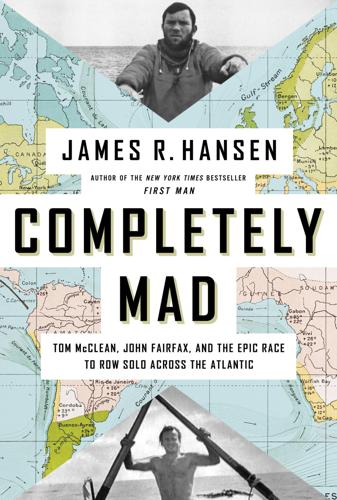
Completely Mad: Tom McClean, John Fairfax, and the Epic of the Race to Row Solo Across the Atlantic
by
James R. Hansen
Published 4 Jul 2023
For the 1,080 seconds of “Ocean Cloud,” the listener is away from Earth—or as one line of the song’s lyrics say: Between two planets In between the points of light Between two distant shorelines Here am I Listening to “Ocean Cloud,” we, too, are in a rowboat, alone, on the open sea. When the song ends, we have fallen in love with Don Allum and with the ocean. Some of us who really cherish the song feel like we have become a better person. By early 2020, in the middle of the COVID-19 pandemic, I became seriously interested in writing the story of Don Allum. I exhausted the internet, reading everything I could find about him. The best source was the website of the Ocean Rowing Society International. Founded in 1983, it is the governing body for international ocean rowing and the official adjudicator of ocean rowing records.
…
Outside of the ocean rowing community, however, very little about this drama was at all well known, which made it even more important for me to bring the extraordinary story to the wider world. Critically important was whether there was sufficient source material for telling the story of their race across the Atlantic in 1969. Though the shutdowns brought on by COVID-19 would make it impossible for me to conduct the necessary research abroad, I became convinced that there was a way to do it. I exhausted what could be found via the internet. That research started by scouring the website of the Ocean Rowing Society International. Since its establishment in 1983, the ORSI had documented all known ocean rows while adjudicating records and firsts in consultation with Guinness World Records.
…
Even before my outrigger made it all the way across the ocean, he gave me a thorough critique of the ocean route I was navigating and making suggestions to correct and improve it. The toughest decision of who to put on the boat and who to leave on shore came when considering what to do with my wife, Peggy. As it turned out, she had to be on the vessel but at a distance. An outbreak of a new plague called COVID-19 required that Completely Mad be conceived, built, and taken across to its destination in an unusual type of ship quarantine. My outrigger had to stay on a very strict navigational course, which restricted me—if I can be rightfully be called “the skipper”—as well as my laptop and books, to an exposed position at the helm (i.e., the island in our kitchen) while all sorts of noisy, intervening actions took place hourly all around me.
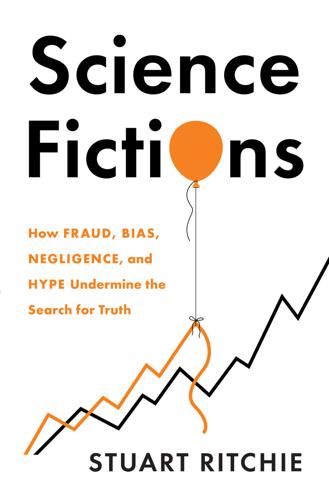
Science Fictions: How Fraud, Bias, Negligence, and Hype Undermine the Search for Truth
by
Stuart Ritchie
Published 20 Jul 2020
Since a preprint can be posted online without any oversight, we should certainly be extra sceptical about them, while scientists should have the intellectual humility not to publicise their work before it’s been at least looked over by their peers.86 As the scientific ecosystem changes, journalists will become more aware that there are different ‘stages’ of scientific publication and that they should be particularly cautious of papers that are still at the earlier ones. Soon after the start of the coronavirus (COVID-19) pandemic in early 2020, preprints appeared on a major biological preprint server that sparked widespread discussion about the origins and effects of the virus. Some of the papers were of obviously low quality, rushed out to capitalise on the media frenzy about the pandemic. Others included phrasing that, whether inadvertently or otherwise, seemed to stoke conspiracy theories about the virus having been designed deliberately as a biological weapon.
…
ABC News abortion Abu Ghraib prison abuse (2003) accidental discoveries Acta Crystallographica Section E acupuncture Afghan hounds Agence France-Presse AIDS (acquired immune deficiency syndrome) Alchemist, The (Bega) Alexander, Benita Alexander, Scott algorithms allergies Alzheimer, Aloysius Alzheimer’s Disease Amazon American Journal of Potato Research Amgen amygdala amyloid cascade hypothesis anaesthesia awareness Fujii affair (2012) outcome switching Anaesthesia & Analgesia animal studies antidepressants antipsychotics archaeology Arnold, Frances arsenic artificial tracheas asthma austerity Australia Austria autism aviation Babbage, Charles Bacon, Francis bacteria Bargh, John Bayer Bayes, Thomas Bayesian statistics BDNF gene Before You Know It (Bargh) Bega, Cornelis Begley, Sharon Belgium Bell Labs Bem, Daryl benzodiazepines bias blinding and conflict of interest De Vries’ study (2018) funding and groupthink and meaning well bias Morton’s skull studies p-hacking politics and publication bias randomisation and sexism and Bik, Elisabeth Bill & Melinda Gates Foundation Biomaterials biology amyloid cascade hypothesis Bik’s fake images study (2016) Boldt affair (2010) cell lines China, misconduct in Hwang affair (2005–6) Macchiarini affair (2015–16) meta-scientific research microbiome studies Morton’s skull studies Obokata affair (2014) outcome switching preprints publication bias replication crisis Reuben affair (2009) spin and statistical power and Summerlin affair (1974) Wakefield affair (1998–2010) biomedical papers bird flu bispectral index monitor black holes Black Lives Matter blinding blotting BMJ, The Boldt, Joachim books Borges, Jorge Luis Boulez, Pierre Boyle, Robert brain imaging Brass Eye vii British Medical Journal Brock, Jon bronchoscopy Broockman, David Brown, Nick Bush, George Walker business studies BuzzFeed News California Walnut Commission California wildfires (2017) Canada cancer cell lines collaborative projects faecal transplants food and publication bias and replication crisis and sleep and spin and candidate genes carbon-based transistors Cardiff University cardiovascular disease Carlisle, John Carlsmith, James Carney, Dana cash-for-publication schemes cataracts Cell cell lines Cell Transplantation Center for Open Science CERN (Conseil Européen pour la Recherche Nucléaire) chi-squared tests childbirth China cash-for-publication schemes cell line mix-ups in Great Famine (1959–1961) misconduct cases in randomisation fraud in chrysalis effect Churchill, Winston churnalism Cifu, Adam citations clickbait climate change cloning Clostridium difficile cochlear implants Cochrane Collaboration coercive citation coffee cognitive dissonance cognitive psychology cognitive tests coin flipping Colbert Report, The Cold War collaborative projects colonic irrigation communality COMPare Trials COMT gene confidence interval conflict of interest Conservative Party conspicuous consumption Cooperative Campaign Analysis Project (CCAP) ‘Coping with Chaos’ (Stapel) Cornell University coronavirus (COVID-19) Corps of Engineers correlation versus causation corticosteroids Cotton, Charles Caleb creationism Crowe, Russell Csiszar, Alex Cuddy, Amy CV (curriculum vitae) cyber-bullying cystic fibrosis Daily Mail Daily Telegraph Darwin Memorial, The’ (Huxley) Darwin, Charles Das, Dipak datasets fraudulent Observational publication bias Davies, Phil Dawkins, Richard De Niro, Robert De Vries, Ymkje Anna debt-to-GDP ratio Deer, Brian democratic peace theory Denmark Department of Agriculture, US depression desk rejections Deutsche Bank disabilities discontinuous mind disinterestedness DNA (deoxyribonucleic acid) domestication syndrome doveryai, no proveryai Duarte, José Duke University duloxetine Dutch Golden Age Dutch Organisation for Scientific Research Dweck, Carol economics austerity preprints statistical power and effect size Einstein, Albert Elmo Elsevier engineering epigenetics euthanasia evolutionary biology exaggeration exercise Experiment, The exploratory analyses extrasensory perception faecal transplants false-positive errors Fanelli, Daniele Festinger, Leon file-drawer problem financial crisis (2007–8) Fine, Cordelia Fisher, Ronald 5 sigma evidence 5-HT2a gene 5-HTTLPR gene fixed mindset Food and Drug Administration (FDA) Food Frequency Questionnaires food psychology Formosus, Pope foxes France Francis, Pope Franco, Annie fraud images investigation of motives for numbers Open Science and peer review randomisation Freedom of Information Acts French, Chris Fryer, Roland Fujii, Yoshitaka funding bias and fraud and hype and long-term funding perverse incentive and replication crisis and statistical power and taxpayer money funnel plots Future of Science, The (Nielsen) gay marriage Gelman, Andrew genetically modified crops genetics autocorrect errors candidate genes collaborative projects gene therapy genome-wide association studies (GWASs) hype in salami-slicing in Geneva, Switzerland geoscience Germany Getty Center GFAJ-1 Giner-Sorolla, Roger Glasgow Effect Goldacre, Ben Goldsmiths, University of London Golgi Apparatus good bacteria Good Morning America good scientific citizenship Goodhart’s Law Goodstein, David Google Scholar Górecki, Henryk Gould, Stephen Jay Gran Sasso, Italy grants, see funding Granularity-Related Inconsistency of Means (GRIM) grapes Great Recession (2007–9) Great Red Spot of Jupiter Green, Donald Gross Domestic Product (GDP) Gross, Charles ground-breaking results groupthink ‘Growth in a Time of Debt’ (Reinhart and Rogoff) growth mindset Guzey, Alexey gynaecology h-index H5N1 Haldane, John Burdon Sanderson Hankins, Matthew HARKing Harris, Sidney Harvard University headache pills heart attacks heart disease Heathers, James height Heilongjiang University Heino, Matti Henry IV (Shakespeare) Higgs Boson Hirsch, Jorge HIV (human immunodeficiency viruses) homosexuality Hong Kong Hooke, Robert Hossenfelder, Sabine Houston, Texas Hume, David Huxley, Thomas Henry Hwang, Woo-Suk hydroxyethyl starch hype arsenic life affair (2010) books correlation versus causation cross-species leap language and microbiome studies news stories nutrition and press releases spin unwarranted advice hypotheses Ig Nobel Prize images, fraudulent impact factor India insomnia International Journal of Advanced Computer Technology Ioannidis, John IQ tests Iraq War (2003–11) Italy Japan John, Elton Journal of Cognitive Education and Psychology Journal of Environmental Quality Journal of Negative Results in Biomedicine Journal of Personality and Social Psychology journals conflict of interest disclosure fraud and hype and impact factor language in mega-journals negligence and Open Science and peer review, see peer review predatory journals preprints publication bias rent-seeking replication studies retraction salami slicing subscription fees Jupiter Kahneman, Daniel Kalla, Joshua Karolinska Institute Krasnodar, Russia Krugman, Paul Lacon, or Many Things in Few Words (Cotton) LaCour, Michael Lancet Fine’s ‘feminist science’ article (2018) Macchiarini affair (2015–16) Wakefield affair (1998–2010) language Large Hadron Collider Le Texier, Thibault Lewis, Jason Lexington Herald-Leader Leyser, Ottoline Lilienfeld, Scott Loken, Eric Lost in Math (Hossenfelder) low-fat diet low-powered studies Lumley, Thomas Lysenko, Trofim Macbeth (Shakespeare) Macbeth effect Macchiarini, Paolo MacDonald, Norman machine learning Macleod, Malcolm Macroeconomics major depressive disorder Malaysia Mao Zedong MARCH1 Marcus, Adam marine biology Markowetz, Florian Matthew Effect Maxims and Moral Reflections (MacDonald) McCartney, Gerry McCloskey, Deirdre McElreath, Richard meaning well bias Measles, Mumps & Rubella (MMR) measurement errors Medawar, Peter medical research amyloid cascade hypothesis Boldt affair (2010) cell lines China, misconduct in collaborative projects Fujii affair (2012) Hwang affair (2005–6) Macchiarini affair (2015–16) meta-scientific research Obokata affair (2014) outcome switching pharmaceutical companies preprints pre-registration publication bias replication crisis Reuben affair (2009) spin and statistical power and Summerlin affair (1974) Wakefield affair (1998–2010) medical reversal Medical Science Monitor Mediterranean Diet Merton, Robert Mertonian Norms communality disinterestedness organised scepticism universalism meta-science Boldt affair (2010) chrysalis effect De Vries’ study (2018) Fanelli’s study (2010) Ioannidis’ article (2005) Macleod’s studies mindset studies (2018) saturated fats studies spin and stereotype threat studies mice microbiome Microsoft Excel Milgram, Stanley Mill, John Stuart Mindset (Dweck) mindset concept Mismeasure of Man, The (Gould) Modi, Narendra money priming Mono Lake, California Moon, Hyung-In Morton, Samuel Motyl, Matt multiverse analysis nanotechnology National Academy of Sciences National Aeronautics and Space Administration (NASA) National Institutes of Health National Science Foundation Nature cash-for-publication and cell line editorial (1981) impact factor language in Obokata affair (2014) Open Access and open letter on statistical significance (2019) replication research Schön affair (2002) Stapel affair (2011) Nature Neuroscience Nature Reviews Cancer NBC negligence cell line mix-ups numerical errors statistical power typos Netflix Netherlands replication studies in Stapel’s racism studies statcheck research neuroscience amyloid cascade hypothesis collaborative projects Macleod’s animal research studies replication crisis sexism and statistical significance and Walker’s sleep studies neutrinos New England Journal of Medicine New York Times New Zealand news media Newton, Isaac Nielsen, Michael Nimoy, Leonard No Country for Old Men Nobel Prize northern blots Nosek, Brian Novella, Steven novelty Novum Organum (Bacon) Nuijten, Michèle nullius in verba, numerical errors nutrition Obama, Barack obesity Obokata, Haruko observational datasets obstetrics ocean acidification oesophagus ‘Of Essay-Writing’ (Hume) Office for Research Integrity, US Oldenburg, Henry Open Access Open Science OPERA experiment (2011) Oransky, Ivan Orben, Amy Organic Syntheses organised scepticism Osborne, George outcome-switching overfitting Oxford University p-value/hacking alternatives to Fine and low-powered studies and microbiome studies and nutritional studies and Open Science and outcome-switching perverse incentive and pre-registration and screen time studies and spin and statcheck and papers abstracts citations growth rates h-index introductions method sections results sections salami slicing self-plagiarism university ranks and Parkinson’s disease particle-accelerator experiments peanut allergies peer review coercive citation fraudulent groupthink and LaCour affair (2014–15) Preprints productivity incentives and randomisation and toxoplasma gondii scandal (1961) volunteer Wakefield affair (1998–2010) penicillin Peoria, Illinois Perspectives in Psychological Science perverse incentive cash for publications competition CVs and evolutionary analogy funding impact factor predatory journals salami slicing self-plagiarism Pett, Joel pharmaceutical companies PhDs Philosophical Transactions phlogiston phosphorus Photoshop Physical Review physics placebos plagiarism Plan S Planck, Max plane crashes PLOS ONE pluripotency Poehlman, Eric politics polygenes polyunsaturated fatty acids Popper, Karl populism pornography positive feedback loops positive versus null results, see publication bias post-traumatic stress disorder (PTSD) power posing Prasad, Vinay pre-registration preclinical studies predatory journals preprints Presence (Cuddy) press releases Prevención con Dieta Mediterránea (PREDIMED) priming Princeton University Private Eye probiotics Proceedings of the National Academy of Sciences prosthetic limbs Przybylski, Andrew psychic precognition Psychological Medicine psychology Bargh’s priming study (1996) Bem’s precognition studies books Carney and Cuddy’s power posing studies collaborative projects data sharing study (2006) Dweck’s mindset concept Festinger and Carlsmith’s cognitive dissonance studies Kahneman’s priming studies LaCour’s gay marriage experiment politics and preprints publication bias in Shanks’ priming studies Stanford Prison Experiment Stapel’s racism studies statistical power and Wansink’s food studies publication bias publish or perish Pubpeer Pythagoras’s theorem Qatar quantum entanglement racism Bargh’s priming studies Morton’s skull studies Stapel’s environmental studies randomisation Randy Schekman Reagan, Ronald recommendation algorithms red grapes Redfield, Rosemary Reflections on the Decline of Science in England (Babbage) Reinhart, Carmen Rennie, Drummond rent-seeking replication; replication crisis Bargh’s priming study Bem’s precognition studies biology and Carney and Cuddy’s power posing studies chemistry and economics and engineering and geoscience and journals and Kahneman’s priming studies marine biology and medical research and neuroscience and physics and Schön’s carbon-based transistor Stanford Prison Experiment Stapel’s racism studies Wolfe-Simon’s arsenic life study reproducibility Republican Party research grants research parasites resveratrol retraction Arnold Boldt Fujii LaCour Macchiarini Moon Obokata Reuben Schön Stapel Wakefield Wansink Retraction Watch Reuben, Scott Reuters RIKEN Rogoff, Kenneth romantic priming Royal Society Rundgren, Todd Russia doveryai, no proveryai foxes, domestication of Macchiarini affair (2015–16) plagiarism in salami slicing same-sex marriage sample size sampling errors Sanna, Lawrence Sasai, Yoshiki saturated fats Saturn Saudi Arabia schizophrenia Schoenfeld, Jonathan Schön, Jan Hendrik School Psychology International Schopenhauer, Arthur Science acceptance rate Arnold affair (2020) arsenic life affair (2010) cash-for-publication and Hwang affair (2005) impact factor LaCour affair (2014–15) language in Macbeth effect study (2006) Open Access and pre-registration investigation (2020) replication research Schön affair (2002) Stapel affair (2011) toxoplasma gondii scandal (1961) Science Europe Science Media Centre scientific journals, see journals scientific papers, see papers Scientific World Journal, The Scotland Scottish Socialist Party screen time self-citation self-correction self-plagiarism self-sustaining systems Seoul National University SEPT2 Sesame Street sexism sexual selection Shakespeare, William Shanks, David Shansky, Rebecca Simmons, Joseph Simonsohn, Uri Simpsons, The skin grafts Slate Star Codex Sloan-Kettering Cancer Institute Smaldino, Paul Smeesters, Dirk Smith, Richard Snuppy social media South Korea Southern blot Southern, Edwin Soviet Union space science special relativity specification-curve analysis speed-accuracy trade-off Spies, Jeffrey spin Springer Srivastava, Sanjay Stalin, Joseph Stanford University Dweck’s mindset concept file-drawer project (2014) Prison Experiment (1971) Schön affair (2002) STAP (Stimulus-Triggered Acquisition of Pluripotency) Stapel, Diederik statcheck statistical flukes statistical power statistical significance statistical tests Status Quo stem cells Stephen VI, Pope stereotype threat Sternberg, Robert strokes subscription fees Summerlin, William Sweden Swift, Jonathan Swiss Federal Institute of Technology Sydney Morning Herald Symphony of Sorrowful Songs (Górecki) t-tests Taiwan taps-aff.co.uk tax policies team science TED (Technology, Entertainment, and Design) Texas sharpshooter analogy Thatcher, Margaret theory of special relativity Thinking, Fast and Slow (Kahneman) Thomson Reuters Tilburg University Titan totalitarianism toxoplasma gondii trachea translational research transparency Tribeca Film Festival triplepay system Trump, Donald trust in science ‘trust, but verify’ Tumor Biology Turkey Tuulik, Julia Twitter typos UK Reproducibility Network Ulysses pact United Kingdom austerity cash-for-publication schemes image duplication in multiverse analysis study (2019) National Institute for Health Research pre-registration in Royal Society submarines trust in science university ranks in Wakefield affair (1998–2010) United States Arnold affair (2020) arsenic life affair (2010) austerity Bargh’s priming study (1996) Bem’s precognition studies California wildfires (2017) Carney and Cuddy’s power posing studies Center for Nutrition Policy and Promotion climate science in creationism in Das affair (2012) De Vries’ drug study (2018) Department of Agriculture Dweck’s mindset concept Fryer’s police brutality study (2016) image duplication in Kahneman’s priming studies LaCour affair (2014–15) Morton’s skull studies Office for Research Integrity Poehlman affair (2006) pre-registration in public domain laws Reuben affair (2009) Stanford Prison Experiment Summerlin affair (1974) tenure Walker’s sleep studies Wansink affair (2016) universalism universities cash-for-publication schemes fraud and subscription fees and team science University College London University of British Columbia University of California Berkeley Los Angeles University of Connecticut University of East Anglia University of Edinburgh University of Hertfordshire University of London University of Pennsylvania unsaturated fats unwarranted advice vaccines Vamplew, Peter Vanity Fair Vatican Vaxxed Viagra vibration-of-effects analysis virology Wakefield, Andrew Walker, Matthew Wansink, Brian Washington Post weasel wording Weisberg, Michael Wellcome Trust western blots Westfall, Jake ‘Why Most Published Research Findings Are False’ (Ioannidis) Why We Sleep (Walker) Wiley Wiseman, Richard Wolfe-Simon, Felisa World as Will and Presentation, The (Schopenhauer) World Health Organisation (WHO) Yale University Yarkoni, Tal Yes Men Yezhov, Nikolai Z-tests Ziliak, Stephen Zimbardo, Philip Zola, Émile About the Author Stuart Ritchie is a lecturer in the Social, Genetic and Developmental Psychiatry Centre at King’s College London.
…
Original study: Lawrence E. Williams & John A. Bargh, ‘Keeping One’s Distance: The Influence of Spatial Distance Cues on Affect and Evaluation’, Psychological Science 19, no. 3 (Mar. 2008): pp. 302–8; https://doi.org/10.1111/j.1467-9280.2008.02084.x; Replication: Harold Pashler et al., ‘Priming of Social Distance? Failure to Replicate Effects on Social and Food Judgments’, PLOS ONE 7, no. 8 (29 Aug. 2012): e42510; https://doi.org/10.1371/journal.pone.0042510 12. Original study: Theodora Zarkadi & Simone Schnall, ‘“Black and White” Thinking: Visual Contrast Polarizes Moral Judgment’, Journal of Experimental Social Psychology 49, no. 3 (May 2013): pp. 355–59; https://doi.org/10.1016/j.jesp.2012.11.012; Replication: Hans IJzerman & Pierre-Jean Laine, ‘Does Background Color Affect Moral Judgment?
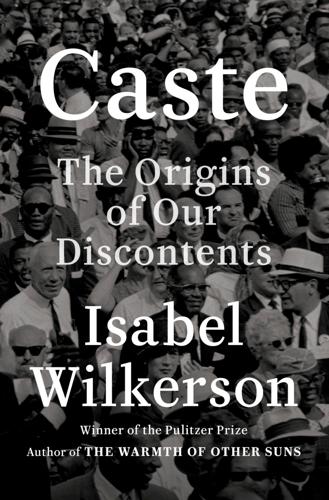
Caste: The Origins of Our Discontents
by
Isabel Wilkerson
Published 14 Sep 2020
By the time the presidential impeachment trial ended on February 5, 2020, it had been 329 days since the last press briefing at the White House, held on March 11, 2019. Then the worst pandemic: Dan Diamond, “Trump’s Mismanagement Helped Fuel Coronavirus Crisis,” Politico, March 7, 2020, https://www.politico.com/amp/news/2020/03/07/trump-coronavirus-management-style-123465; Michael D. Shear et al., “The Lost Month: How a Failure to Test Blinded the U.S. to Covid-19,” New York Times, March 28, 2020, https://www.nytimes.com/2020/03/28/us/testing-coronavirus-pandemic.html; David Frum, “This Is Trump’s Fault: The President Is Failing, and Americans Are Paying for His Failures,” Atlantic, April 7, 2020. https://www.theatlantic.com/ideas/archive/2020/04/americans-are-paying-the-price-for-trumps-failures/609532/.
…
“To a watching world,” wrote The Guardian, “the absence of a fair, affordable US healthcare system, the cut-throat contest between American states for scarce medical supplies, the disproportionate death toll among ethnic minorities, chaotic social distancing rules, and a lack of centralised coordination are reminiscent of a poor, developing country, not the most powerful, influential nation on earth.” The pandemic, and the country’s fitful, often self-centered lack of readiness, exposed “a failure of character unparalleled in US history,” in the words of Stephen Walt, a professor of international relations at Harvard University. The pandemic forced the nation to open its eyes to what it might not have wanted to see but needed to see, while forcing humanity to contemplate its impotence against the laws of nature.
…
As Europeans explored the world, they began using the word to refer to the new people they encountered. Ultimately, “the English in North America developed the most rigid and exclusionist form of race ideology,” the Smedleys wrote. “Race in the American mind was and is a statement about profound and unbridgeable differences….It conveys the meaning of social distance that cannot be transcended.” Geneticists and anthropologists have long seen race as a man-made invention with no basis in science or biology. The nineteenth-century anthropologist Paul Broca tried to use thirty-four shades of skin color to delineate the races, but could come to no conclusion.
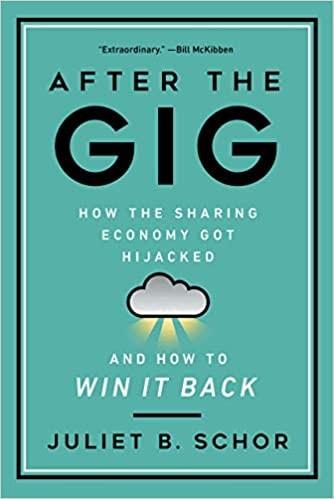
After the Gig: How the Sharing Economy Got Hijacked and How to Win It Back
by
Juliet Schor
,
William Attwood-Charles
and
Mehmet Cansoy
Published 15 Mar 2020
—SIVA VAIDHYANATHAN, author of The Googlization of Everything: (And Why We Should Worry) “Before the pandemic, the gig economy was structurally racist, ecologically destructive, and profoundly exploitative. There’s every danger that the reconstruction will be worse. Yet this nuanced and sophisticated study also shows, through the analysis of gig economy workers themselves, that flexibility, a shared sense of purpose, and a commitment to sharing more is well within our grasp. As we turn to imagine what kind of economy and society we want after COVID-19, the work of Schor and her students will be indispensable.” —RAJ PATEL, Research Professor, Lyndon B.
…
Kelly emphasized that she preferred to not talk to the taskers she hired: “A to B flawless, minimal interaction.” She laughed, then admitted, “That sounds horrible.” Kelly came to feel that the platforms were doing the opposite of what their supporters expected. Instead of fostering social connection, they were intensifying social distance. Kelly had been an employee but recently started her own software business. She had a lot of experience on platforms, having used Airbnb, Turo, and TaskRabbit. On the consumer side, she thought that the platforms were great for people like her, “who work 100 hours a week.” These people have ample disposable income but no time.
…
See also community sharing; nonprofits; platforms, for-profit; and capitalism, 2, 6, 37–39; and community initiatives, 8; defining, 191–94; environmental impacts, 28, 114–20; as household space, 30; idealist discourse, 5, 11, 21; impacts of, 108–10; and inequality, 96, 104; and labor market, 8; and management, 7; and municipal governments, 172; participant characteristics, 189–90; personal authenticity, 29; rationale for, 115; and social activism, 7, 19; and social relations, 163–64; stranger sharing, 7, 31–32; studies of, 12–13; and technology, 21; and urban problems, 107–8; and work experience, 4 “Sharing Nicely,” 163 Sharing Economy, The, 12 sharing workforce, 43–45, 77, 190 Shauna, 122 Sheldon, Michael, 79 Shift, 170 Shira, 103, 106, 111 short-term rentals, 160 Silicon Valley, 23–24 Simon, Herbert, 79 SitterCity, 27 Skillshare, 127 Slee, Tom, 13, 193 Smart, 170 Smith, Yves, 37 SnapGoods, 34 snobbery, 124, 132–38 social connection, 55, 78, 111–14, 128 social distancing, 113–14 social dumping, 153 social exclusion, 124, 132–41 social isolation, 48 social sharing, 164, 191 Spinlister, 35 Srnicek, Nick, 13 state legislatures, 157–58 statistical discrimination, 84, 89 Stephanie, 21 Stocksy United, 148–49, 164–71, 188, 192 stranger sharing, 7, 31–32, 192 structural inequality, 85, 92 Suhani, 30, 52 Sundararajan, Arun, 11–12, 83 super-platforms, 151 supplemental earners, 49–57, 96, 110; and algorithmic control, 68–70; characteristics of, 72; and financial security, 103–4 Sweden, 153, 173 taking (advantage), 159 Takl, 27 Tamara, 68–69 Tanwen, 51 TaskRabbit, 4–5, 9–10, 21, 35; earnings, 73–74; ease of access, 45–46; employee rights, 161; identity conflicts, 100–101; individual control, 77; origin story, 25; pivot, 74; racial bias, 86–87, 91–92; ratings, 63–64; social connection, 112; supplemental earners, 50–51; tasks, 27; transaction fees, 86; worker experience, 40–41, 52, 58–60 Tawana, 32, 85, 88–89, 174 taxi industry, 97, 109; demise of, 34; and ride-hailing, 102, 156, 161 technical control, 67 technology.
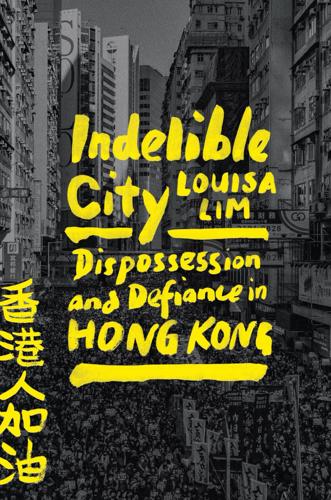
Indelible City: Dispossession and Defiance in Hong Kong
by
Louisa Lim
Published 19 Apr 2022
Now those very same scenes were being replayed in Hong Kong, night after night, for months on end. In 2020, the June 4 candlelight vigil in Hong Kong—which had been the only such memorial on Chinese soil—was forbidden for the first time, on the grounds of Covid safety. Despite the ban, Hong Kongers turned out anyway. The instinct to remember en masse was so ingrained that they didn’t know what else to do. Their feet carried them to Victoria Park, where they sat quietly in socially distanced clumps, or to local parks where small groups coalesced organically to mourn together. This represented an about-turn, since in recent years many young Hong Kongers had refused to attend the June 4 vigil, arguing that what happened so many years before in China had nothing to do with their lives.
…
Once it did, there was no question in my mind that I had to cover it. I was already living in Hong Kong, on research leave from my job teaching journalism in Melbourne, when the protests broke out. After I went back to work in Australia, I regularly returned to Hong Kong on short reporting trips, until Covid-19 closed our borders. How to practice ethical journalism under the circumstances? Until this point, I’d unquestioningly followed the accepted journalistic practice of trying to remove myself from the story as far as possible. But could I remove myself from the picture when the picture was already part of me?
…
When I checked my notes to see what I’d written about his presentation, I read, “Repression may backfire. Cooptation does not necessarily absorb dissenting voices.” Brian Leung had ended up living out his research. The day after the storming of Legco, my children and I left Hong Kong to move back to Melbourne, as it was time to return to my teaching job. Until Covid hit, I shuttled back and forth to chart the horrifying escalation that was playing out. The protests quickly spread to every corner of Hong Kong, as protestors adopted tactics inspired by the philosophy of hometown kung fu master Bruce Lee: “Be formless, shapeless, like water. . . . [W]ater can flow or it can crash.”
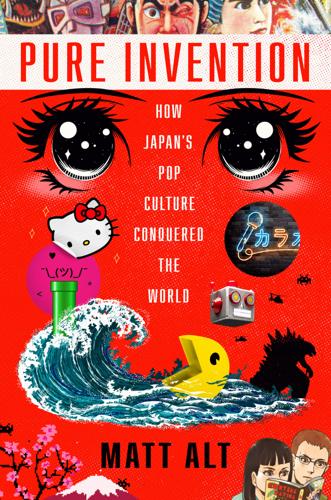
Pure Invention: How Japan's Pop Culture Conquered the World
by
Matt Alt
Published 14 Apr 2020
Yet we know we’d never go back; our futures depend on us mastering the technologies that connect, soothe, and bind us. If there is any one lesson to learn from the heroes of the stories that unfolded in these pages, it is that the way out of the strange post-capitalist techno-political hellscape we find ourselves in is to create. Take the COVID-19 epidemic, which profoundly disrupted public life beginning in early 2020. As orders to “shelter in place” and “socially distance” turned people around the world into involuntary hikikomori, many turned to the old tools of the otaku to soothe their loneliness: games, videos, and playthings. A surge in demand at streaming services such as Netflix and PlayStation Network forced the companies to throttle back server speeds as the sheer volume of entertainment data began to overwhelm European telecom networks.
…
A surge in demand at streaming services such as Netflix and PlayStation Network forced the companies to throttle back server speeds as the sheer volume of entertainment data began to overwhelm European telecom networks. And then there is the curious case of the Nintendo Switch title Animal Crossing: New Horizons. It was released on March 20, seemingly terrible timing amid a global pandemic. It sold 11.77 million copies in just twelve days. In this customizable simulation of outdoor life, populated by bobbleheaded kawaii animal characters, millions escaped the tedium of societal lockdowns by taking online trips to virtual islands built by their friends. I don’t think the future will be made in Japan.
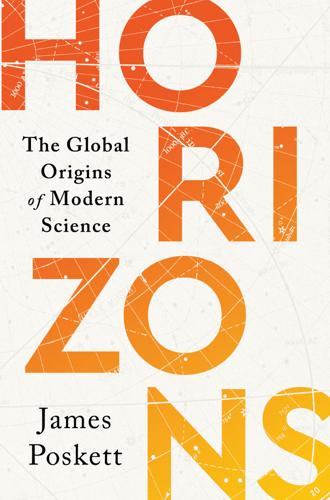
Horizons: The Global Origins of Modern Science
by
James Poskett
Published 22 Mar 2022
That enables us to know in advance what will happen and what areas should be attacked.’ Security is also a major driver of AI investment in the UAE. The Emirati security services are already using facial-recognition software to track the population and stifle political dissent. During the COVID-19 pandemic, police in Dubai even used the same software to monitor whether individuals were adhering to social distancing guidelines.13 The forces of globalization and nationalism are shaping the growth of AI as the New Cold War plays out across Asia, Africa, and the Middle East. The same is true of another major field of scientific research, one that has echoes of the original Cold War of the twentieth century.
…
And it was here, next to the Black Sea, that Mechnikov began to work on the evolution of immunity in marine animals.35 Whilst Darwin had emphasized that natural selection involved the struggle between individuals within a species, Mechnikov highlighted the role of disease. Throughout the nineteenth century, the world experienced multiple waves of pandemics, ranging from cholera to influenza. These grew in severity over the course of the century, as the world became increasingly connected via new industrial technologies like railways and steamships, allowing disease to spread at a faster rate. Mechnikov himself lived through one of the most deadly cholera outbreaks of the nineteenth century, in which over a million people died in Russia between 1846 and 1860.
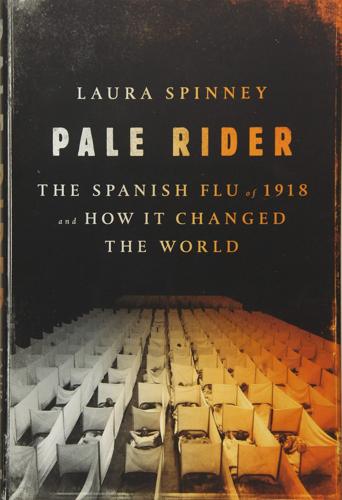
Pale Rider: The Spanish Flu of 1918 and How It Changed the World
by
Laura Spinney
Published 31 May 2017
That is potentially the difference between an overwhelmed public health infrastructure, where patients can’t get treated, doctors and nurses are pushed beyond exhaustion and dead bodies accumulate in morgues, and a functioning system that, though stretched to its limit, is still managing the flux of the sick. In 1918, as soon as the flu had become reportable and the fact of the pandemic had been acknowledged, a raft of social distancing measures were put in place–at least in countries that had the resources to do so. Schools, theatres and places of worship were closed, the use of public transport systems was restricted and mass gatherings were banned. Quarantines were imposed at ports and railway stations, and patients were removed to hospitals, which set up isolation wards in order to separate them from non-infected patients.
…
There is one final possibility: that none of the three theories is correct, and the real origin of the pandemic has yet to be proposed. 12 Counting the dead How many had died? People wanted to know from the moment it was over, not only to gauge the pandemic’s impact on humanity, and to set the historical record straight, but also to extract lessons from it for the future. They had an idea of the scale of the previous flu pandemic, the Russian flu of the 1890s. It had killed around a million people. If the Spanish flu were in that ballpark, then perhaps a flu pandemic was simply something that happened periodically, and one had to learn how to manage it.
…
Where data were available, he could calculate excess mortality rates–a measure of the number of people who died over and above what might have been expected in a ‘normal’ or non-pandemic year–but these hid a multitude of diagnostic sins. There was no such thing as a ‘laboratory confirmed death’ from flu in 1918, because nobody knew that flu was caused by a virus. What’s more, flu pandemics don’t really start or stop. They invade the seasonal flu cycle, grotesquely distorting its morbidity (sickness) and mortality (death) curves, then recede until those curves reveal themselves again. Even now that the tools exist to differentiate seasonal and pandemic strains, defining a pandemic’s limits is an essentially arbitrary task. In 1991, two American epidemiologists, David Patterson and Gerald Pyle, raised Jordan’s bid to 30 million–hinting at a bigger disaster, though still not one on the scale of the Second World War, which eliminated roughly twice as many souls.
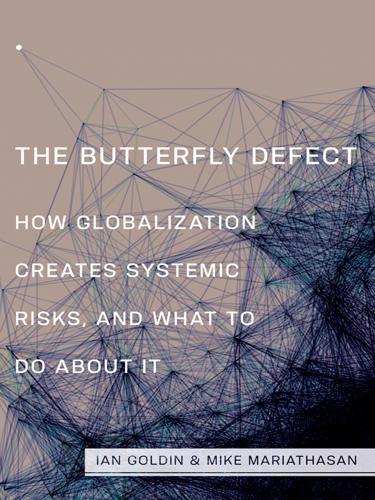
The Butterfly Defect: How Globalization Creates Systemic Risks, and What to Do About It
by
Ian Goldin
and
Mike Mariathasan
Published 15 Mar 2014
The authors conjectured that although more affluent economies might primarily be concerned with preventing and eventually containing the spread of a new global virus, developed economies might prefer to focus their scarce resources on understanding the transmission patterns of more common but still fatal diseases such as diarrheal or respiratory diseases. LESSONS FROM PANDEMIC MANAGEMENT David M. Bell et al. contrast the measures taken to deal with the H1N1 virus (swine flu) in Mexico City and New York in 2009. In Mexico the government invoked its emergency powers on 24 April in anticipation of widespread panic. These allowed the authorities to engage in an intensive media campaign, as well as to put measures in place for social distancing and the dissemination of antiviral drugs. In an attempt to control the spread of the virus through the education system, the government instigated the screening of all schoolchildren throughout the country.
…
In addition, diseases such as cholera, malaria, and the plague, once believed eradicated, have returned with even greater virulence.4 In the first decade of the twenty-first century, the world was threatened by at least three major pandemics: SARS, H1N1 (“swine flu”), and H5N1 (“bird flu”). The hallmarks of globalization—connectivity and integration—create the potential for negative externalities in the field of health, just as they do in other sectors. Definition of a Pandemic Characterizing a pandemic is not a straightforward task, and there is no one agreed definition. WHO provided a formal definition only in 2009, “despite ten years of issuing guidelines for pandemic preparedness” activities.5 WHO eventually defined a pandemic as an influenza exhibiting “community level outbreaks” and “human-to-human spread of the virus into at least two countries.”6 Immunologists characterize pandemics more generally as exhibiting wide geographic extension, disease movement, high attack rates, minimal population immunity, novelty, infectiousness, contagiousness, and severity.7 Similarly, the U.S.
…
In our tightly integrated world, these precautionary measures require worldwide monitoring, timely detection, and effective intervention to prevent the spread of pandemics. CASE STUDIES Our case studies reveal key lessons for pandemic management. By looking at specific examples we can better understand the theoretical risks we have identified and maximize our ability to react to future threats. Recent research has indicated that influenza pandemics follow a cyclical pattern, with similar viruses appearing every 10–15 years.20 This would make the world long “overdue” for a pandemic. Our case studies shed some light on the possible origins and implications. Historical Pandemics The first recorded transnational epidemic dates back to 430 BC.

Growth: From Microorganisms to Megacities
by
Vaclav Smil
Published 23 Sep 2019
Simulations of an influenza pandemic in Italy by Rizzo et al. (2008) provide a good example of the possible impact of the two key control measures, antiviral prophylaxis and social distancing. In their absence, the epidemic on the peninsula would follow a Gaussian curve, peaking about four months after the identification of the first cases at more than 50 cases per 1,000 inhabitants, and it would last about seven months. Antivirals for eight weeks would reduce the peak infection rate by about 25%, and social distancing starting at the pandemic’s second week would cut the spread by two-thirds. Economic consequences of social distancing (lost school and work days, delayed travel) are much more difficult to model.
…
Economic consequences of social distancing (lost school and work days, delayed travel) are much more difficult to model. As expected, the diffusion of influenza virus is closely associated with population structure and mobility, and superspreaders, including health-care workers, students, and flight attendants, play a major role in disseminating the virus locally, regionally, and internationally (Lloyd-Smith et al. 2005). The critical role played by schoolchildren in the spatial spread of pandemic influenza was confirmed by Gog et al. (2014). They found that the protracted spread of American influenza in fall 2009 was dominated by short-distance diffusion (that was partially promoted by school openings) rather than (as is usually the case with seasonal influenza) long-distance transmission.
…
Seasonal influenza epidemics cannot be prevented and their eventual intensity and human and economic toll cannot be predicted—and these conclusions apply equally well to the recurrence of a worldwide diffusion of influenza viruses causing pandemics and concurrent infestation of the world’s inhabited regions. These concerns have been with us ever since we understood the process of virulent epidemics, and it only got more complicated with the emergence of the H5N1 virus (bird flu) in 1997 and with a brief but worrisome episode of severe acute respiratory syndrome (SARS). In addition, judging by the historical recurrence of influenza pandemics, we might be overdue for another major episode. We can identify at least four viral pandemics during the 18th century, in 1729–1730, 1732–1733, 1781–1782, and 1788–1789, and there have been six documented influenza pandemics during the last two centuries (Gust et al. 2001).
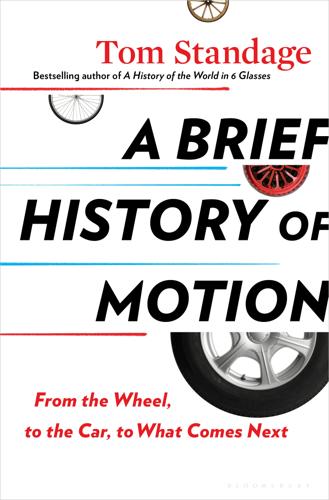
A Brief History of Motion: From the Wheel, to the Car, to What Comes Next
by
Tom Standage
Published 16 Aug 2021
Drive-ins and parking lots around the world have also hosted socially distanced church services, concerts, theatrical performances, and, in Germany, even a drive-in nightclub. But drive-in cinemas cannot compete with the convenience of online streaming, while dating has moved from the front porch, to the back seat, to dating apps. Fast-food chains have also seen slowing demand in recent years, as consumers have become more health conscious, moved upmarket to “fast casual” restaurants, or switched to ordering food by smartphone from the couch, rather than by intercom from the driver’s seat—another trend accelerated by the pandemic. Although one group did embrace malls as a social space—American teenagers, for whom malls became a place to hang out with friends, go for a meal or a snack, watch a movie, and generally see and be seen—malls are also in retreat.
…
The pandemic has also encouraged more people to adopt e-commerce and teleworking, which substitute for car journeys and are likely to persist, to some extent, after the pandemic has passed. KPMG, a consultancy, predicts that the pandemic will result in a world of “fewer trips, fewer miles, and fewer cars.” Commuting and shopping, the company notes, account for 40 percent of miles driven in America, and the pandemic-induced boosts to e-commerce and teleworking will have “powerful and enduring” effects, reducing the number of vehicles on American roads by 7 million to 14 million. And cities have taken the opportunity provided by lockdown to reclaim street space from cars, with road closures, the creation of new bike lanes, and the introduction of wider sidewalks.
…
In retrospect the global financial crisis of 2007–9 may simply have delayed some young Americans’ entry into the housing market. The coronavirus pandemic has also increased the appeal of suburbs relative to city centers. One of the chief drawbacks of suburbs—the need to commute—goes away if you can work from home, which about half of American workers can. And staying at home is more pleasant if you have more space. A shift toward working remotely, some if not all of the time, is likely to be an enduring legacy of the pandemic. If workers only go in to the office on certain days or for certain activities, that could reshape commuting patterns and reduce traffic.
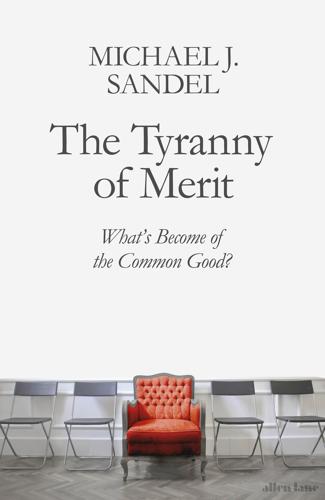
The Tyranny of Merit: What’s Become of the Common Good?
by
Michael J. Sandel
Published 9 Sep 2020
People throughout the world were implored, and in many cases required, to observe social distancing, to abandon work and stay at home. Those unable to work remotely faced lost wages and disappearing jobs. The virus posed the greatest threat to those of advanced age, but could also infect the young, and even those who could ride it out had parents and grandparents to worry about. Morally, the pandemic reminded us of our vulnerability, of our mutual dependence: “We are all in this together.” Public officials and advertisers reached instinctively for this slogan. But the solidarity it evoked was a solidarity of fear, a fear of contagion that demanded “social distancing.” The public health required that we express our solidarity, our shared vulnerability, by keeping our distance, by observing the strictures of self-isolation.
…
Rather than deduct a certain amount of each worker’s earnings, the government would contribute a certain amount, in hopes of enabling low-income workers to make a decent living even if they lack the skills to command a substantial market wage. 51 A dramatic version of the wage subsidy proposal was enacted by a number of European countries when the coronavirus pandemic of 2020 locked down their economies. Rather than offer unemployment insurance to workers who lost their jobs during the pandemic, as the U.S. government did, Britain, Denmark, and the Netherlands covered 75 to 90 percent of wages for companies that did not lay off workers. The advantage of the wage subsidy is that it enables employers to retain workers on their payroll during the emergency, rather than fire them and force them to rely on unemployment insurance.
…
Meanwhile, those who reaped the economic bounty of global markets, supply chains, and capital flows had come to rely less and less on their fellow citizens, as producers and as consumers. Their economic prospects and identities were no longer dependent on local or national communities. As the winners of globalization pulled away from the losers, they practiced their own kind of social distancing. The political divide that mattered, the winners explained, was no longer left versus right but open versus closed. In an open world, success depends on education, on equipping yourself to compete and win in a global economy. This means that national governments must ensure that everyone has an equal chance to get the education on which success depends.

Exceptional People: How Migration Shaped Our World and Will Define Our Future
by
Ian Goldin
,
Geoffrey Cameron
and
Meera Balarajan
Published 20 Dec 2010
“Cameron Backs Immigration Cap to Curb Population Rise,” 11 January 2010. 5. Thanks to Kathleen Newland for noting this development. 6. Stephen Nickell, 2009. “Migration Watch.” Prospect Magazine, 23 July 2009, issue 161. 7. Laurie Garrett. 2005. “The Next Pandemic?” Foreign Affairs 84 (4); Michael T. Osterholm. 2005. “Preparing for the Next Pandemic,” New York Times, 21 June 2005. 8. See Alan Dowty. 1989. Closed Borders: The Contemporary Assault on Freedom of Movement. London: Yale University Press, pp. 68–76. 9. Hiroyuki Tanaka. 2008. “North Korea: Understanding Migration to and from a Closed Country,” Migration Policy Institute.
…
People frequently move more than once, and migration has evolving social dynamics that take into account economic cycles, immigration policies, and political conditions. Despite the complexity of decisions to migrate, a number of factors associated with the most recent wave of globalization, including transportation and communication technologies, have collapsed social distances and make it easier to move than ever before. Immigration regulations aim to manage flows to meet public policy goals. These regulations have evolved from earlier practices of using nation-based quotas to encompass a range of migration “channels.” Economic channels bring in students and highly skilled migrants, as well as low-skilled workers to meet temporary labor demands.
…
Globalization is not only influencing how policy-makers think about migration, it is also leading more and more people to move. In the words of Jan Aart Scholte, globalization is characterized by the “deterritorialization” of exchanges and relationships—an observation that is just as true for social relations as economic ones.11 The growth of communications technologies has collapsed social distance between people separated by thousands of miles. In early 2009, an estimated 1.5 billion people were regular users of the Internet, and the UN estimates that more than 60 percent of the people in the world have a mobile phone subscription (up from less than 20 percent in 2002).12 Air transport costs also fell rapidly between the 1960s and 1990s, enabling people to more easily travel to see loved ones, do business, or move their families.13 Whereas in the mid-nineteenth century, a family fleeing Russia for the United States would have left their home without being certain that they would ever speak to or see their relatives and friends again, today those social ties would remain intact.
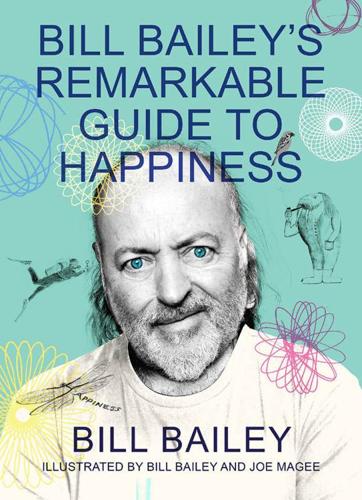
Bill Bailey's Remarkable Guide to Happiness: THE FEELGOOD BOOK OF THE YEAR
by
Bill Bailey
Published 14 Oct 2020
They are, in no particular order, kindness, a sense of our common humanity, and being more aware of our emotions. All eminently sensible ideas, that could apply to this or any other hardship. But sometimes I wonder, how can we go back to the way we were after all this? We get to know our neighbours better, having conversations on doorsteps and front paths while socially distancing. We exchange pleasantries from behind masks in the corner shop, like it’s a regular thing. But this is far from normal, and underneath I feel uneasy. We don’t really know what the long-term effects of this disruption and enforced isolation will be. So we carry on as best we can, trying to stay positive, trying to be productive.
…
To my family and friends, and all those who have shared in these adventures CONTENTS Foreword 1 Crazy Golf 2 A Clear-out 3 Wild Swimming 4 Little Things 5 Music 6 Caring for Plants 7 Restraint 8 Singing 9 Sport 10 Art 11 Personal Reflection 12 Swearing 13 The Unexpected 14 Playing the Gamelan 15 Laughing 16 Equations 17 Paddleboarding 18 Reading 19 Trees 20 Confronting Your Fears (Part 1) 21 Dogs 22 Confronting Your Fears (Part 2) 23 Birdsong 24 Dancing 25 Pleasure 26 Jogging 27 Cycling 28 Being Someone to Rely On 29 Walking 30 Letter Writing 31 Generosity 32 Belonging 33 Being in Nature 34 Speaking Another Language 35 Simplicity 36 Love About Bill Bailey Thank you FOREWORD This book was written during the coronavirus pandemic, largely while we were in lockdown. During this unexpected quiet time at home, I finally got around to archiving my comedy shows, and I was struck, firstly by how much longer my hair was back in the day, and secondly by how much happiness has been a subject that I have explored in my sketches and gigs over many years, to the point that it appears as a constant thread running through it all.
…
As the taste-free, low-fun almost-food sticks to the roof of my mouth, I am struck by how readily the memory of my disco knockback came to mind. At least it was just me who witnessed the holly blue getting mugged off, not a disco full of his mates. I wonder if my memories, unreliable at the best of times, appear more intense due to a heightened sense of awareness elicited by this pandemic. Certainly I’ve read many news stories of people experiencing extremely vivid dreams during lockdown. Our sleep patterns are all over the place. I had a dream in which I saw everyone I’ve ever met, while I drank sherry wearing just a towel. Things are not right. We’ve all been forced to spend more time with ourselves, in the company of our own thoughts.
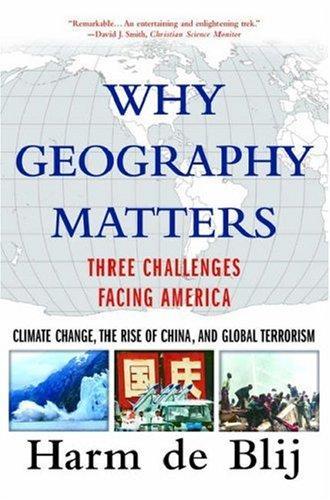
Why geography matters: three challenges facing America : climate change, the rise of China, and global terrorism
by
Harm J. De Blij
Published 15 Nov 2007
USES AND MISUSES OF MAPS When geographers are asked to provide an example of the practical utility of maps in solving real-world problems, we like to go back to the story of Dr. John Snow, a London physician-geographer who lived through several of the dreadful cholera pandemics that ravaged much of the world during the nineteenth century. No one knew for sure how cholera spread, making the disease especially frightening, and many victims died within a week of infection. Dr. Snow had come to believe that contaminated water was to blame, but he had no proof of it. When the pandemic that had begun elsewhere in 1842 reached England, London's densely populated Soho District, near Picadilly Circus, READING MAPS AND FACING THREATS 43 Fig. 2-6 was hard hit.
…
It is a priority for Americans and their allies to get the capital functioning again, but the task is overwhelming in the face of unanticipated sabotage, persistent obstruction, and growing resentment. During the year following the American intervention, the situation in Iraq deteriorated drastically, at great cost to the civilian population and considerable loss to the military. A combination of terrorism and insurgency eroded security and put social distance between the occupiers and the occupied, worsening relations and eroding trust. A scandal involving mistreatment of prisoners by United States soldiers did further damage. Bomb attacks killed hundreds of recruits waiting to join Iraq's new police and army. In effect Iraq was a failed state, and it attracted (by late 2004 estimates) between 10,000 and 20,000 foreign jihadists from near and far, bent upon driving the infidels out.
…
The European Union continued to expand, taking in ten new members in May 2004 and incorporating 25 of Europe's 39 countries with others waiting in the v/ings. The name Yugoslavia disappeared from the map even as others emerged: East Timor, Papua, Padania, Transdniestria, Limpopo, Utta-ranchal. And new terms in common usage reflected the new era: pandemic, jihad. War on Terrorism, Sunni Triangle. 4 WHY GEOGRAPHY MATTERS Is there a common denominator for all this change? Can our world and its transformations be better appreciated through a particular perspective? This book answers both questions with one affirmation: geography. In truth, geography itself has gone through several transformations in recent times.
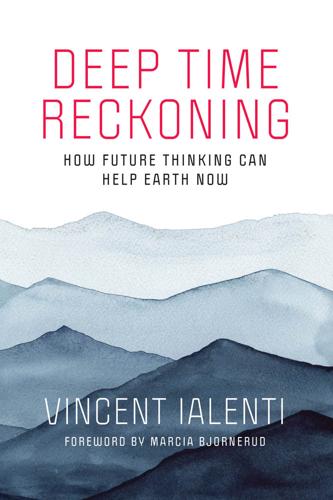
Deep Time Reckoning: How Future Thinking Can Help Earth Now
by
Vincent Ialenti
Published 22 Sep 2020
This reinforced Seppo’s role, in death as in life, as what anthropologists call an exemplar. He was a figure placed on a pedestal. He shaped his community’s imaginations, values, and ways.8 Telling stories of Seppo, my informants taught lessons about expert collegiality, authority, vision, temperament, passion, charisma, kindness, politeness, social distance, mystique, and leadership. They did so with solemnity, awe, respect, nostalgia, aversion, or warm friendliness, for different reasons at different moments. Seppo’s successors curated memories of their lost forerunner. They empowered Seppo as an influential predecessor. Recollections of him intervened in the Safety Case experts’ worlds, opening his surviving colleagues up to negotiating and renegotiating how they related to one another and to their scientific work.
…
However, as the months and years went on, all sorts of claims to expert knowledge were increasingly written off as mere pompous elitism. Come the 2016 presidential election, nationalist-populist movements would clamor loudly against technocrats, bureaucrats, globalists, and the so-called deep state. Crime and jobs statistics, polling methods, vaccine science, government reports, university funding, pandemic disease alerts, and environmental research would be questioned. I found myself thinking that Finland’s Safety Case experts’ aspirations to reckon deep time would, in these contexts, likely be mocked as naïve or hubristic. As I write in 2020, crises of expertise are ongoing. Stem cell research, economic models, climate experts, critical social theorists, cell phone radiation, and human evolution are targeted in frenzied social media free-for-alls.
…
I myself do not put forth utopian or dystopian scenarios of possible, probable, preferable, or unfavorable future worlds. Rather, I offer a repertoire of anthropological tools—“reckonings”—as a how-to guide for engaging with others’ future visions. My methods may contrast with those of, say, existential risk scholars who reckon future nuclear wars, asteroid impacts, super-volcanoes, pandemic diseases, climate change, robot uprisings, and other cataclysmic events in more arcane ways. Yet we all share a common question: how can we foster human and ecological flourishing across future millennia, despite the many powerful economic, political, cultural, and intellectual forces working against us?
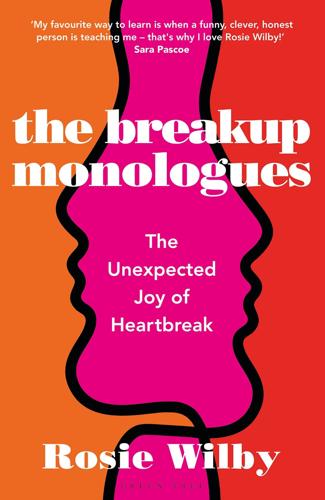
The Breakup Monologues: The Unexpected Joy of Heartbreak
by
Rosie Wilby
Published 26 May 2021
But it’s good to just give it a go.’ ‘Yes, I suppose it might get my creative juices flowing.’ ‘Yeah…that…and it’ll mean that you’ll wash your hair and put makeup on.’ During my final months of writing this book, the UK is plunged into lockdown due to the coronavirus pandemic. The changes to society and how we can interact are unprecedented. Early suggestions from sociologists are that the pandemic has completely reshaped our close relationships. In every country that has had a lockdown, divorce rates have surged. Perhaps that is no surprise. Divorces normally peak just after holiday seasons at Christmas and summertime when people have had no escape from one another.
…
Meanwhile, video dating is becoming a new trend among singletons, with camera shunning, call screening and falsely blaming a poor internet connection becoming the latest forms of ghosting. Girlfriend and I are incredibly lucky. Our families are healthy. And we have enough money to live on. For us, staying at home is not a hardship. It is a joy. So while the deadly reasons behind social distancing seem too terrible to dwell on, this new silence feels golden – literally so as we walk Dog in deserted fields on glorious spring days. As we listen to a woodpecker drilling a tree, the kind of sound that is typically drowned out by the pace of twenty-first century life, I celebrate having an abundance of time and headspace to enjoy being in love.
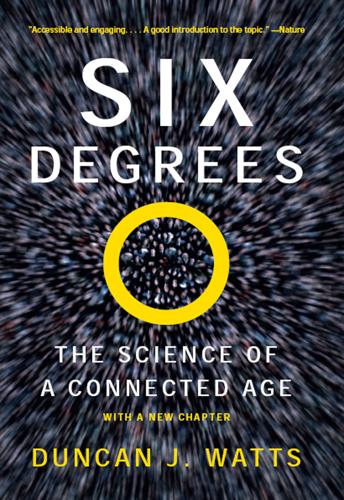
Six Degrees: The Science of a Connected Age
by
Duncan J. Watts
Published 1 Feb 2003
In a highly homophilous network, only individuals who share the smallest of groups can be connected, yielding a fragmented world of isolated cliques. And when homophily is zero, we get the equivalent of the Kleinberg condition, where individuals make associations at all scales of social distance with equal likelihood. Social distance, therefore, functions in much the same way as it does in Kleinberg’s model. But now there are many kinds of distance to which we might refer when assessing the likelihood that two people will meet. Whereas Kleinberg’s lattice effectively locates individuals solely in terms of their geographical coordinates, individuals in the real world derive their notions of distance from an assortment of social dimensions.
…
To see how it works, let’s return to the example of the hypothetical Chinese peasant farmer. In choosing our friend Erica as our first intermediary, we are making use of two sets of information. First, our notion of social distance leads us to conclude that we are quite distant from our target. But it also tells us what groups someone would need to belong to in order to be close. Our notion of social distance thus helps us identify conditions that make an individual a good candidate for passing the message to. And second, we make use of our local knowledge of the network to determine if any of our friends satisfy any of these conditions—that is, do any of our friends belong to at least one group that makes them closer to the target?
…
A substantial array of definitions and techniques have been introduced over the years, bearing exotic names like blockmodels, hierarchical clustering, and multidimensional scaling. But all of them are essentially designed to extract information about socially distinct groups from purely relational network data, either in terms of some direct measure of “social distance” between actors or by grouping actors according to how similar their relations are to other actors in the network. Networks, according to this view, are the signature of social identity—the pattern of relations between individuals is a mapping of the underlying preferences and characteristics of the individuals themselves.

Is the Internet Changing the Way You Think?: The Net's Impact on Our Minds and Future
by
John Brockman
Published 18 Jan 2011
By “Internet” I, at least, mean a sociocultural condition in which we are more readily and seamlessly connected to more people, with varying degrees of closeness and remoteness; to more social and organizational structures, both those we belong to and those we don’t; and to more cultural artifacts and knowledge-embedded objects. An e-mail with an inchoate thought, half a fragment to a friend, is the kind of thing I can do today with more people than those with whom I can readily grab a cup of coffee; I can also do it with people whose friendship I value but who are geographically remote. Social distance has moderated as well. Sending an e-mail to a stranger who stands in an organizational, institutional, or socially proximate role is slightly easier and considered less intrusive than making a phone call used to be. Most radical is the recognition that someone, somewhere, entirely remote in geographic, social, or organizational terms, has thought about something similar or pertinent.
…
Neuroses and false beliefs are buttressed. We all worry about our health; in the past, we would look around us and find that no one else was worrying or ill. But consult the Internet and 1,278,000 people (at least!) are worrying, and they’ve even developed Websites to talk about their worry. The 2009 swine flu pandemic has been a damp squib, but you wouldn’t have known that from the frenzy. The bad mathematics can also give us a sense that we have something useful to say. We’d all like to be taken seriously, and evolution has probably equipped us to think we are more effective than we really are; it seeds us with just that little bit of narcissism.
…
Primate brains changed dramatically from early apes at 400 cc to Habilis at 750 cc to Neanderthal at 1,500 cc. “How did that change the way you think?” and “For what purpose?” How will we think to rebuild the ozone after the next nearby supernova? Or nudge the next earth-targeted asteroid? Or contain a pandemic in our dense and well-mixed population? And how will we prepare for those rare events by solving today’s fuel, food, psychological, and poverty problems, which prevent 6.7 billion brains from achieving our potential? The answer is blowin’ in the Internet wind. Replacing Experience with Facsimile Eric Fischl and April Gornik Visual artists We might rephrase the question as “How has the Internet changed the way you see?”
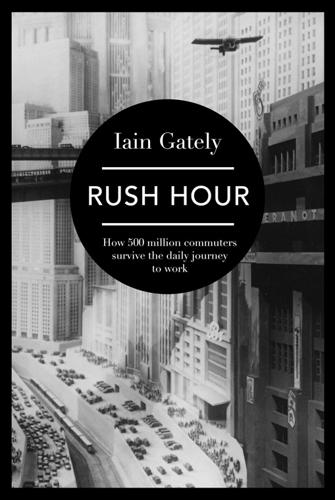
Rush Hour: How 500 Million Commuters Survive the Daily Journey to Work
by
Iain Gately
Published 6 Nov 2014
To say the least, life would be much more involved and intense.’ Hall broke down our need for personal space into four categories: intimate distance, i.e. how close we allow our kin and lovers to be, which emphasizes contact rather than separation; personal distance – how close we stand to people at a drinks party before the drink takes over; social distance, which roughly corresponds to how close we like to get to strangers when doing business with them; and public distance, which politicians and pop stars and other performers enjoy when on stage, where they communicate with their audiences through gestures and postures. He labelled his new science proxemics.
…
Unless and until we evolve into creatures that have no such needs, and have erased the desires to hunt and gather from our nature, there will be a Clapham omnibus, or its latter-day equivalent, ferrying people between their places of labour and rest. Unless, of course, we won’t have to work in the future, or companionship goes out of fashion after, say, a deadly global pandemic. Would we then commute for nostalgia, or even pleasure? Has commuting worked its way so deep into our culture that we’d find it hard to give up absolutely? Or would we frown on it, as we do slavery and burning witches, as belonging to an ignorant, violent and primitive past? People have been predicting both the imminent demise and the perpetual rise of commuting almost since it started.
…
But there’s no need to fear 9 billion, or indeed 9,000 billion. In a 1964 essay, ‘How Many People Can the World Support?’, John Heaver Fremlin, an English physicist, argued that limitations on human population growth were determined by physics rather than biology. Barring catastrophes such as a meteorite strike, an apocalyptic war or a deadly global pandemic; and assuming that the entire surface of the planet, ‘land and sea alike’, was covered with 2,000-storey buildings; that people ate their dead and their sewage; that both the north and south poles had been melted on purpose; and there was absolute and eternal world peace; then mother earth could carry up to 60,000,000,000,000,000 (sixty thousand trillion) people by around the year 2964.
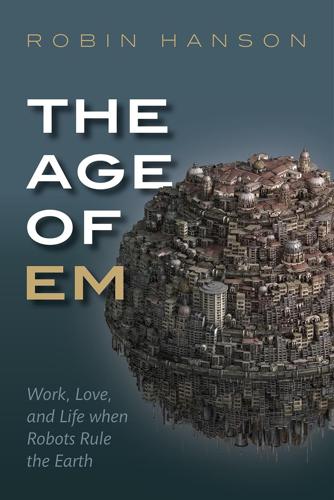
The Age of Em: Work, Love and Life When Robots Rule the Earth
by
Robin Hanson
Published 31 Mar 2016
Because of this abstract-far construal, the construal-level theory of psychology predicts many features of the beliefs we will tend to hold about the distant future, regardless of whether we have good reasons to hold such beliefs. For example, we tend to see fewer relevant categories of people, places, and things in the future, with the items in each category being more uniform. We expect things to be further away in both spatial and social distance, and expect events to be more novel, hypothetical, and unlikely. We expect analogies to be more relevant than math-like analysis, and we overconfidently expect both theories and analogies to apply more exactly with fewer exceptions. We expect to hear case-based arguments for claims, rather than feature-based arguments against claims.
…
Each of these correlations suggests a plausible theory about the origin of this value difference. For example, perhaps growing rice requires more community support, perhaps collectivist norms grew over the farming era, or perhaps community values were an adaptive response to more frequent farming era pandemics or invasions (Fincher et al. 2008; Talhelm et al. 2014; Ola and Paik 2015). Most of these theories suggest that community values will be higher in denser regions. Many animals, including human foragers, are more pro-social when food is less reliable or more cooperation is required to obtain food.
…
If we compare an em era with a continuation of the industrial era without ems, the em civilization quickly has vastly more economic power, and so all else equal is better able to withstand physical disasters like earthquakes, asteroids, or volcanoes, events whose size and chances aren’t much influenced by the existence of ems. The em era might induce more biological disasters such as pandemics, chemical pollution, or global warming, but it seems vastly better able to withstand such things. The ability of an em civilization to withstand war or other unspecified social collapses depends on the size of the smallest unit of industrial production able to restart em civilization after a severe collapse.
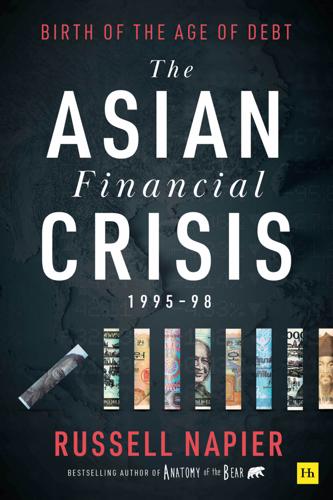
The Asian Financial Crisis 1995–98: Birth of the Age of Debt
by
Russell Napier
Published 19 Jul 2021
It also has a much larger aim, in that it seeks to show how that crisis led to the creation of a global financial architecture that produced the biggest debt boom in history. It is a debt boom that has, by 2021, already led to spectacular economic busts, mass insolvency, crippling unemployment, the displacement of millions of people and radical political change. With world debt-to-GDP ratios at record highs even before the impact of the Covid-19 induced economic crisis, the negative direct economic, social and political consequences from this age of debt will likely plague the global outlook for at least another generation. How the Asian financial crisis established the foundations for this new age of debt relates to the policy choices of the Asian authorities that were a direct consequence of the crisis.
…
To my mother and two brothers, I owe everything for their love and support over many years. Though my Dad is not around anymore he is with us all every day in many different ways and his strong, simple but wise advice is always present. Writing books is an anti-social activity even if done in a period of social distancing. This means being away from family life for an extended period and thus any book is always the result of a burden shared. To Sheila, Rory and Dylan for all their help and support my thanks and love. Without family, what’s the point anyway? Russell Napier, Scotland, 2021 Part One: Learning the hard way - a beginner’s guide Tuesday, 9 September 1997 Harry – Hello.
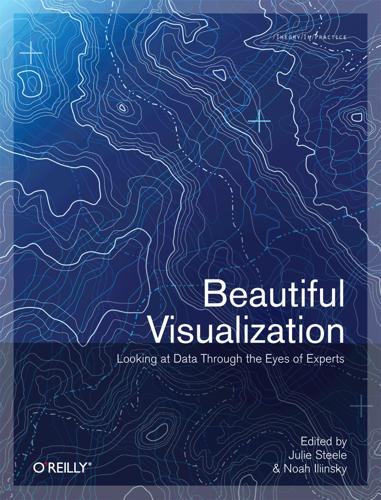
Beautiful Visualization
by
Julie Steele
Published 20 Apr 2010
Most of the studies came to highly similar conclusions, and all found two distinct clusters in the data. However, there is not total agreement about who is in each cluster, especially for women #8–18. This table illustrates membership groupings well, but it does not reveal network roles and social distances. The network map in Figure 7-7 does reveal the nuances of the social structure and shows the points of failure in the network—that is, where it is most likely to break down. For instance, if woman #3 were to move away, the network would be disrupted the most. It would be interesting to see how both woman #4 and woman #9 would respond to the exit of woman #3.
…
Autopsy protocols and photographs used as evidence in criminal cases can be difficult for jurors to understand. VA visualizations are typically clearer (Figures 18-4 and 18-9). Storage of VA data poses few problems, whereas autopsy records such as tissue sections are difficult to store indefinitely (Figure 18-16). With potential global pandemics such as bird flu (avian influenza A) and swine flu (the H1N1 virus) posing an increasing threat, the practice of eviscerating the victims can pose serious health risks to coroners, pathologists, and medical examiners. With a VA, these risks are minimized. However, virtual autopsies also have several shortcomings: For MDCT, soft tissue discrimination is low.
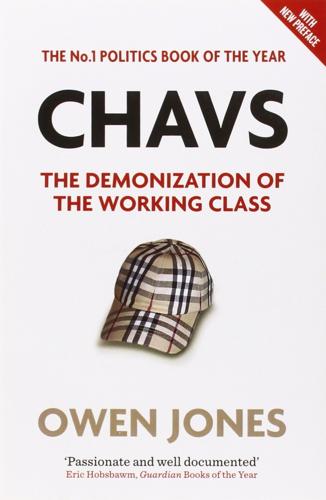
Chavs: The Demonization of the Working Class
by
Owen Jones
Published 14 Jul 2011
There are simply not enough jobs to go round. But with this reality largely ban- ished from our newspapers and TV screens, and with tax-avoiding businesspeople a distant, abstract concept for most, it is a challenging case to make. The demonizarion of working-class people also stems from insecu- rity, or 'social distancing' from those in superficially similar circumstances. Britain'Thinks revealed that those belonging to groups most likely to be stigmatized as chavs can often be among the most vociferous in their chav-bashing, One long-term incapacity benefit claimant denounced chavs who were supposedly milking the system; so did two unemployed teenage mothers.
…
Baltimore had 1 per cent of the UK's population, but its murder rate was around a third of the UK's. In their effort to create caricatures of depraved working-class com- munities, the Tories were not above citing blatantly false information.In a propaganda leaflet entitled Labour's Two Nations published in early 2010, they released some astounding figures that suggested a teenage pregnancy pandemic was sweeping through Britain's poor communi- ties. The document repeatedly affirmed that women under eighteen were 'three times more likely to be pregnant in the most deprived areas compared to the least deprived areas. In the most deprived areas 54 per cent are likely to fall pregnant before the age of 18, compared to just 19 per cent in the least deprived areas.'
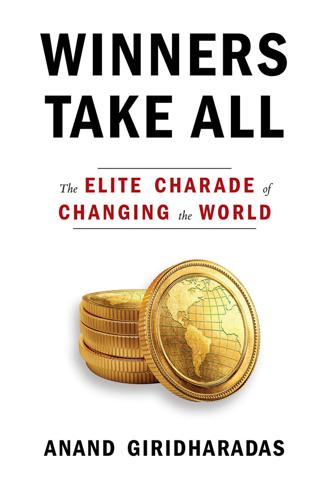
Winners Take All: The Elite Charade of Changing the World
by
Anand Giridharadas
Published 27 Aug 2018
It had helped Bernie Sanders’s unlikely primary challenge, and then Donald Trump’s unlikely election victory—made all the stranger by the fact that Trump incarnated the very problem he named. Was it inevitable that the leaders of a democracy should affiliate mostly with plutocrats after their time in public office? Was that not related to the problems of mistrust and alienation and social distance that lurked behind the anger now confronting elites? Clinton said he had made 649 speeches for money, by his last count, and paid nearly half of the income in taxes, and donated some of it to charity, and helped aging friends and relatives with medical bills. (He pointed out that you don’t owe any gift tax if you pay the health care provider directly.)
…
“There’s a general understanding of how the world works that lies behind those kinds of initiatives, which I think is false,” he said. “And that understanding is that what the world suffers from is a lack of true international cooperation.” This understanding is right on some issues, such as global pandemics and climate change, he said. “But in most other areas, when you think about them, whether it’s international finance, whether it’s economic development, whether it’s business and financial stability, whether it’s international trade—the problem, it seems to me, is not that we don’t have sufficient global governance, that we don’t have sufficient global cooperation, that we’re not getting together enough.

Inheritance
by
Leo Hollis
It echoes the words of New Yorker Jane Jacobs, seen by many as the patron saint of modern urbanism: ‘Cities have the capability of providing something for everybody, only because, and only when, they are created by everybody.’13 And this is clearly the lesson being put to the test with the current development of the square and its concerted programme of public engagement. This has included a running blog, an Instagram feed and a Twitter account, socially distanced events in the square and, during lockdown, a series of Zoom webinars where experts and stakeholders have discussed ideas of urban nature, community building, well-being and sustainability. There has also been a wide consultation on design; for example, by 14 August 2020 the website noted that it had held eighteen events, reached 1,066 people and collected over 3,000 pieces of feedback.
…
But with the defeat of the Jeremy Corbyn project in the General Election of December 2019, these progressive debates about the future of the ground beneath our feet are unlikely to be revived any time soon. And so, for the moment, the interest of land wins. It is what drives the modern city, and without addressing the question of land itself, the city cannot change. Acknowledgements THE BOOK WAS completed in strange circumstances. As I was working on the final chapters, the pandemic arrived and the normal course of things halted. In particular, libraries and archives were closed. So much information can be found online today but this does not replace the actual physical encounter of historical documents. I missed my days in the basement of the London Library, the National Archives, the Westminster Archives and in Chester City Archives.
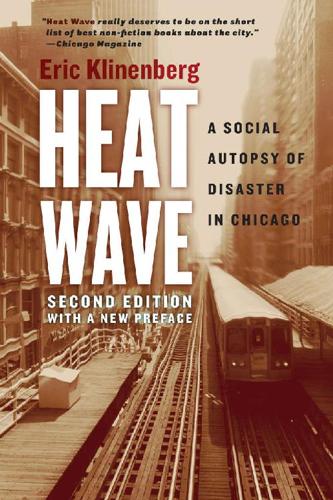
Heat Wave: A Social Autopsy of Disaster in Chicago
by
Eric Klinenberg
Published 11 Jul 2002
According to Jacobs, density and public activity are necessary preconditions for vigorous neighborhood social networks. Residents of city neighborhoods without comfortable and secure streets and sidewalks, without places that draw people out of their homes and into the public, are more likely to suffer from literal isolation and social distance. This chapter argues that place-specific social ecology and its effects on cultural practices account for much of the disparity in the heat wave mortality rates for the two Lawndales. The local social environment has a strong impact on older residents, for whom health problems that limit mobility can make it difficult to access places out of the neighborhood.
…
This service delivery strategy was understandable to Chicago seniors who had adopted similar routines for going out in their neighborhoods. Yet the mornings-only visitation policy constrained the options for service delivery and reception among residents of stigmatized black neighborhoods. The social distance between seniors residing in Chicago’s most troubled areas and the state agents responsible for serving them helps to account for the gulf of understanding that separated city workers from isolated seniors during the heat wave. It also explains why political leaders on the South Side accused the city of neglecting the needs of their communities, and why some have not given up the case.47 SHOPPING FOR SERVICES IN THE EMPOWERMENT ERA The rhetoric of abandonment and vulnerability used by Chicago’s dissident political figures stands in sharp contrast with the language of empowerment and consumerism promulgated by the city government.
…
A second problem is the expectation that city residents, including the elderly and frail, will be active consumers of public goods, smart shoppers of services made available in the market rather than “citizens” entitled to social protection. This market model of governance creates a systemic service mismatch, whereby people with the weakest capabilities and greatest needs are the least likely to get them. Third, the social distance between city administrators and the disadvantaged people they serve is increasing. As governments operate more like professional firms, commissioners become CEOs, agencies subcontract more services out to private companies, and police officers replace aldermen and precinct captains as the community sentries, political organizations risk losing contact with citizens and—as in the heat wave commission report stating that isolated residents do not want support—failing to understand their needs.
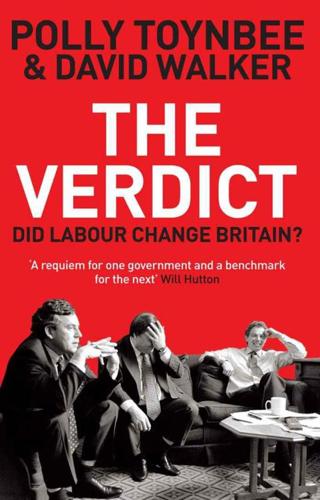
The Verdict: Did Labour Change Britain?
by
Polly Toynbee
and
David Walker
Published 6 Oct 2011
What happened at Clapham Park was a microcosm of New Labour, with its hyperbolic promises brought down to earth by hard, basic economic and social realities. One target was to equalize the value of property on the estate with the surrounding area. But the surrounding area became wealthier as property prices inflated, and the social distance between Clapham Park and well-off Clapham is wider than ever. CHAPTER 6 Old and young Labour created the first minister for children. Good idea. They wanted the Department for Children, Schools and Families to wrap the ‘whole child’. But on the ground this never happened. The criminal child stayed under the eye of the justice ministry; the sporty child was supported by culture, media and sport.
…
From ‘the globe’ came a wave of asylum seekers, preoccupying ministers and distorting Labour’s plans. The Cabinet Office National Security Strategy (2008) declared that no state threatened the UK directly. Instead, it was at risk from globalization’s stepchildren – international terror, WMD, implosion of failed states, pandemics and transnational crime. Labour tried to give the ‘international community’ some bite. The trials of Slobodan Miloševic and Radovan Karadžic at the International Criminal Court offered a sense that justice might prevail, however long and tortuous the road. Ministers signed the Ottawa Convention to outlaw anti-personnel landmines.
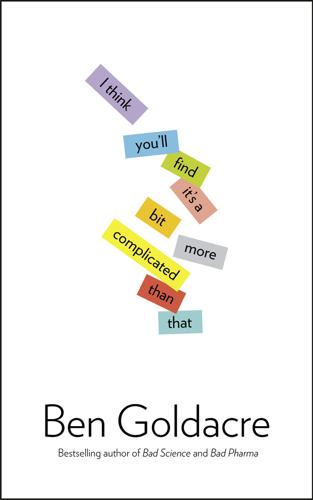
I Think You'll Find It's a Bit More Complicated Than That
by
Ben Goldacre
Published 22 Oct 2014
In 2004 Dietrich and colleagues conducted a huge series of structured interviews with three representative population samples in Germany, Russia and Mongolia. Endorsing biological factors as the root cause for schizophrenia was associated with a greater desire for social distance. And lastly, more compelling than any individual study, a review of the literature to date in 2006 found that overall, biogenetic causal theories, and labelling something as an ‘illness’, are both positively related to perceptions of dangerousness and unpredictability, and to fear and desire for social distance. They identified nineteen studies addressing the question. Eighteen found that belief in a genetic or biological cause was associated with more negative attitudes to people with mental health problems.
…
Guernsey: Guernsey Press, 1987 Stimson, G.V., Oppenheimer, E., Thorley, A. (1978), ‘Seven year follow up of heroin addicts’, British Medical Journal, 1978: i 11 Stimson G.V., Oppenheimer E. (1982), Heroin Addiction. London: Tavistock Press United Nations Drug Control Program, World Drug Report. Oxford: Oxford University Press, 1997 Vaillant, G.E., ‘Centennial Address, Society for the Study of Addiction to Alcohol and Other Drugs’. Proc R Soc Med, November 1984 World Health Organisation, The HIV/AIDS Pandemic, 1994 Overview, WHO/GPA/TCO/SEF/94.4, 1994 LIBEL NMT Is Suing Dr Peter Wilmshurst. So How Trustworthy Is This Company?Let’s Look at Its Website … NMT is Suing: http://www.badscience.net/2010/12/nmt-are-suing-dr-wilmshurst-so-how-trustworthy-are-they/ MIST trial was funded: http://circ.ahajournals.org/cgi/reprint/CIRCULATIONAHA.107.727271v1 go to its website: http://www.nmtmedical.com/ outcome of MIST trial: http://circ.ahajournals.org/cgi/reprint/CIRCULATIONAHA.107.727271v1 really was negative: http://circ.ahajournals.org/cgi/content/short/CIRCULATIONAHA.107.727271v1 a lengthy correction: http://circ.ahajournals.org/cgi/content/full/120/9/e71 2005 NMT report: http://www.snl.com/IRWebLinkX/GenPage.aspx?
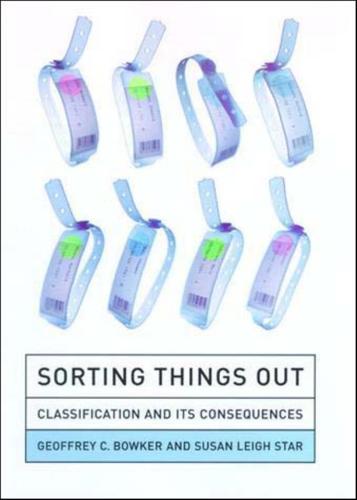
Sorting Things Out: Classification and Its Consequences
by
Geoffrey C. Bowker
and
Susan Leigh Star
Published 25 Aug 2000
Although it is true that maps do not fully capture terrains, they are powerful technologies (Becker 1986). They help to find one’s way, as originally formally intended. And they serve as resources to structure all sorts of collective action-dreams of vacations, crossword puzzle solutions, explanations of social distance (Schmidt 1997, Zorbaugh 1929). Marc Berg analyzes the formalisms of medical decision making in use as powerful both formally and as spurs to informal action (1997b 1998). Just because people do not do exactly what they say will, does not mean they are doing nothing. Nor does it mean that they do not believe in the stated formal purpose and tailor their behavior to it.
…
Elkan, and J. Robinson. 1991. Policy Issues in Nursing. Milton Keynes: Open University Press. Gray, Chris Hables, with the assistance of Heidi Figueroa-Sarriera and Steven Mentor (eds.). 1995. The Cyborg Handbook. New York: Routledge. Grmek, Marcel. 1990. History of AIDS: Emergence and Origin of a Modern Pandemic. Princeton, NJ : Princeton University Press. Grobe, Susan. 1992. “Response to J. C. McCloskey’s and G. M. Bulechek’s Paper on Nursing Intervention Scheme”. In The Canadian Nurses Association. Papers from the Nursing Minimum Data Set Conference, October 2 7-29, 1992. Edmonton, Alberta: The Canadian Nurses Association.

Behave: The Biology of Humans at Our Best and Worst
by
Robert M. Sapolsky
Published 1 May 2017
There was also the suggestion that mirror neuron–mediated perspective taking is particularly concerned with social interactions. Rizzolatti, for example, showed that mirror neuron activity was greater when the observed individual was closer.36 But importantly, this isn’t just literal distance but something resembling “social” distance; as evidence, mirror neuron activity would decrease if there was a transparent barrier between the observer and observed. In Gallese’s words, “this shows the relevance of mirror neurons when mapping the potentialities for competition or cooperation between agent and observer.” The notion that mirror neurons aid us in understanding someone else’s actions, leading to our understanding someone else, period, has been heavily criticized on two grounds, most notably by Hickok.
…
Schneiderman et al., “Oxytocin at the First Stages of Romantic Attachment: Relations to Couples’ Interactive Reciprocity,” PNE 37 (2012): 1277. 29. B. Ditzen, et al., “Intranasal Oxytocin Increases Positive Communication and Reduces Cortisol Levels During Couple Conflict,” BP 65 (2009): 728; D. Scheele et al., “Oxytocin Modulates Social Distance Between Males and Females,” J Nsci 32 (2012): 16074; H. Walum et al., “Genetic Variation in the Vasopressin Receptor 1a Gene Associates with Pair-Bonding Behavior in Humans,” PNAS 105 (2008): 14153; H. Walum et al., “Variation in the Oxytocin Receptor Gene Is Associated with Pair-Bonding and Social Behavior,” BP 71 (2012): 419. 30.
…
In chapter 15 we’ll touch on “behavioral immunity,” the ability of numerous species to detect cues of illness in other individuals; as we’ll see, implicit cues about infectious disease make people more xenophobic. Similarly, historical prevalence of infectious disease predicts a culture’s openness to outsiders. Moreover, other predictors of cultural tightness include having high historical incidence of pandemics, of high infant and child mortality rates, and of higher cumulative average number of years lost to communicable disease. Obviously, weather influences the incidence of organized violence—consider the centuries of European wars taking a hiatus during the worst of winter and the growing season.51 Even broader is the capacity of weather and climate to shape culture.
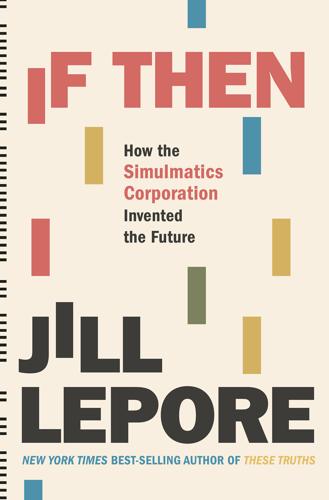
If Then: How Simulmatics Corporation Invented the Future
by
Jill Lepore
Published 14 Sep 2020
Simulmatics failed, but not before its scientists built a very early version of the machine in which humanity would in the early twenty-first century find itself trapped, a machine that applies the science of psychological warfare to the affairs of ordinary life, a machine that manipulates opinion, exploits attention, commodifies information, divides voters, fractures communities, alienates individuals, and undermines democracy. “What does it take for people to recognize a dystopia?” the virtual reality pioneer Jaron Lanier asked in 2019, anguished, heartbroken.1 Long before the age of quarantine and social distancing, Simulmatics helped atomize the world. It had begun sixty years before, with the best of intentions. In 1959, hoping to build a better America, Simulmatics pioneered the use of computer-run simulation, pattern detection and prediction in American political campaigning, segmenting the electorate into voter types and issues into clusters in order to advise candidates about strategies for voter-targeted issues.
…
Kennedy and, 120, 167 — Johnson and, 75–76, 167, 182, 258 — reaction to space race and arms race, 78 — sit-ins, 101, 106, 196, 199, 234, 275 — Stevenson and, 42–43, 63, 66 Clark, Kenneth and Mamie, 85 Clinton, Bill, 303, 304 Clinton, Hillary, 303, 304 Cold War — as battle over the future, 35, 208–9 — beginning of, 15 — in Burdick’s fiction, 28 — effects of, 49–50, 135, 163 Coleman, James — American Sociological Association presidency, 303 — Bureau of Applied Social Research and, 84–85 — commodification of attention, 145 — Equality of Educational Opportunity (Coleman Report), 259, 303 — friendship with McPhee, 84–85, 87, 89, 137 — insufficiency of data for models, 145 — letter of support for Popkin, 310 — marketing for Simulmatics, 137, 142, 152 — preparation for 1962 Times election coverage, 154–55, 164, 362n — Project Camelot, 209 — resignation from Simulmatics, 271 — riot prediction project, 260–62 — simulation games designed by, 258–59, 377n — Simulmatics stock offering and, 139 — Simulmatics’ Urban Studies Division, 258–59 Coleman, John, 85 Coleman, Lucille (Lu) Ritchey, 84–85, 89, 144, 270 Coleman, Thomas, 85 Collingwood, Charles, 24–25 Collins, Ella, 252 Columbia Pictures, 173–74, 175, 364n Commission on Party Structure and Delegate Selection, 287 Committee for the Re-election of the President, 308, 309 Communications Act of 1934, 23, 316 compilers, 69, 70 “Computer Politics” (Kristol), 367n computer revolution — ARPANET, 284, 296, 310–11, 312, 313–15, 316, 318 — hackers, 312, 313, 326 — no safeguards on data collection and analysis, 315, 323 — personal computers, 310, 313, 318 — Pool, arguments against regulation, 315–17, 318 — Pool, writing about emerging technologies, 277–79, 299, 316–17, 318–19, 323 — Stewart Brand promotion of, 310, 311–12, 314, 317–18 — see also artificial intelligence computers, early — development during and after World War II, 68–70 — mainframe computer in 1956, 8 — presidential election of 1952, 24–26, 69, 122, 150 — see also specific topics Cook, Mike, 303 coronavirus and social distancing, 5, 322 Corrupt Practices Act, 23 Counterfeit World (Galouye), 187–88 counterinsurgency — McNamara’s theory, 208–9 — progress measurement by counting deaths, 212–13 — Simulmatics program, 49, 200, 209, 211, 213, 216, 258 Cronkite, Walter, 24–25, 267 Cuban Missile Crisis — aftermath, 163, 169 — Andrei Gromyko, 157, 160 — beginning of, 156 — end of, 162–63 — ExComm (Executive Committee of the National Security Council), 157, 162 — John F.
…
In engineering, computer-aided pattern detection and prediction has improved the safety of buildings, factories, and vehicles. In environmental science, it is essential in reckoning with catastrophic climate change. In astronomy, it has made possible the seeing of new stars. In medical research, pharmacology, and public health, it helps researchers find cures for diseases, avert epidemics, and defeat pandemics. Nothing could be more vital. But the study of the human condition is not the same as the study of the spread of viruses and the density of clouds and the movement of the stars.4 Human nature does not follow laws like the law of gravity, and to believe that it does is to take an oath to a new religion.5 Predestination can be a dangerous gospel.
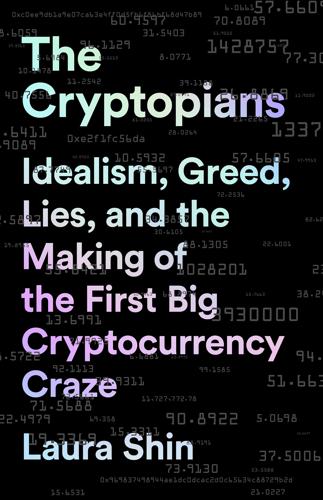
The Cryptopians: Idealism, Greed, Lies, and the Making of the First Big Cryptocurrency Craze
by
Laura Shin
Published 22 Feb 2022
Much gratitude to the many sponsors of my shows over the years. I truly appreciate the support that you’ve given me, my podcasts and videos, and the audience of Unchained. Shoutout to Focusmate, which was crucial to my writing this book. Thanks to my close friends who put up with my long periods of being socially distanced—well before the pandemic—due to this book: in addition to my readers, Stacie, Tom, Beckey, Hande, Mariana, Graciela, Gizem, Vanessa, Jessica, Alden, Fiona, Daniel, and Colleen, you all hold a place in my heart. To my very cool, creative, and brave ancestors: even though we never shared breath together on Earth, your life stories have inspired me for decades, and I hope my work carries on your legacy.
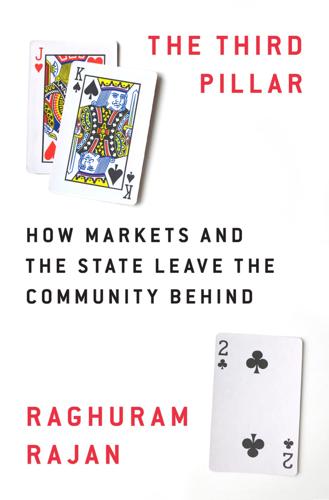
The Third Pillar: How Markets and the State Leave the Community Behind
by
Raghuram Rajan
Published 26 Feb 2019
As the community grows larger, therefore, we can call the professional midwife when a child is being born and the professional fire service when a cat is stuck up a tree, instead of our neighbor. Members have more choice, and the quality of goods and services they have access to increases, but the breadth of interactions that take place between members narrows. This social distancing or alienation once again diminishes the strength of relationships and the value of community. Members could try to preserve a sense of community as it grows larger and more anonymous, urging everyone to take into account community benefits in deciding whether to transact locally or in the larger marketplace.
…
Of the over two hundred thousand one-room schools in 1915, only twelve hundred were open in 1975.29 Progressives were not just concerned about the inequality in funding but about educational outcomes in general. Reformers like John Dewey, who founded the University of Chicago’s Laboratory School, believed that with industrialization and the growing divide between labor and capital, as well as the increasing ethnic and religious fragmentation of American society, the social distance between groups would tend to increase. The primary school brought together students from diverse backgrounds, while the high school drew students from a still larger geographic area. A rounded school education would give students the experience of interacting with a more diverse population, draw them into civic participation, and inculcate a more democratic attitude toward debating differences.
…
Many of the sailors on board were dead, covered with black boils that gave the illness its name, the Black Death. The Sicilian authorities ordered the “death ships” out of the harbor, but it was too late. Over the next five years, and over the course of subsequent recurrences, the bubonic plague pandemic would wipe out an estimated third of Europe’s population. The humanitarian catastrophe had a thin silver lining. The lucky peasantry that survived the Black Death now could farm much larger land holdings, could concentrate on better land, and were thus significantly richer. For instance, in 1341 in the English village of Stoughton, 52 percent of landholdings were eleven acres or less.

The Age of Surveillance Capitalism
by
Shoshana Zuboff
Published 15 Jan 2019
.… It passes far beyond purely economic interests, for it consists in the establishment of a social and moral order sui generis.18 Durkheim’s vision was neither sterile nor naive. He recognized that things can take a dark turn and often do, resulting in what he called an “abnormal” (sometimes translated as “pathological”) division of labor that produces social distance, injustice, and discord in place of reciprocity and interdependency. In this context, Durkheim singled out the destructive effects of social inequality on the division of labor in society, especially what he viewed as the most dangerous form of inequality: extreme asymmetries of power that make “conflict itself impossible” by “refusing to admit the right of combat.”
…
The result is an emergent system that allows us to peer into one version of a future defined by a comprehensive fusion of instrumentarian and state power. China’s vision is intended as the solution to its own unique version of the curse of social dissolution. Writing in Foreign Policy, journalist Amy Hawkins explains that China’s pandemic of social distrust is the problem to which the social credit system is addressed as the cure: “To be Chinese today is to live in a society of distrust, where every opportunity is a potential con and every act of generosity a risk of exploitation.”31 A fascinating empirical study of social trust in contemporary China actually finds high levels of “in-group” trust but discovers that these are correlated with negative health outcomes.